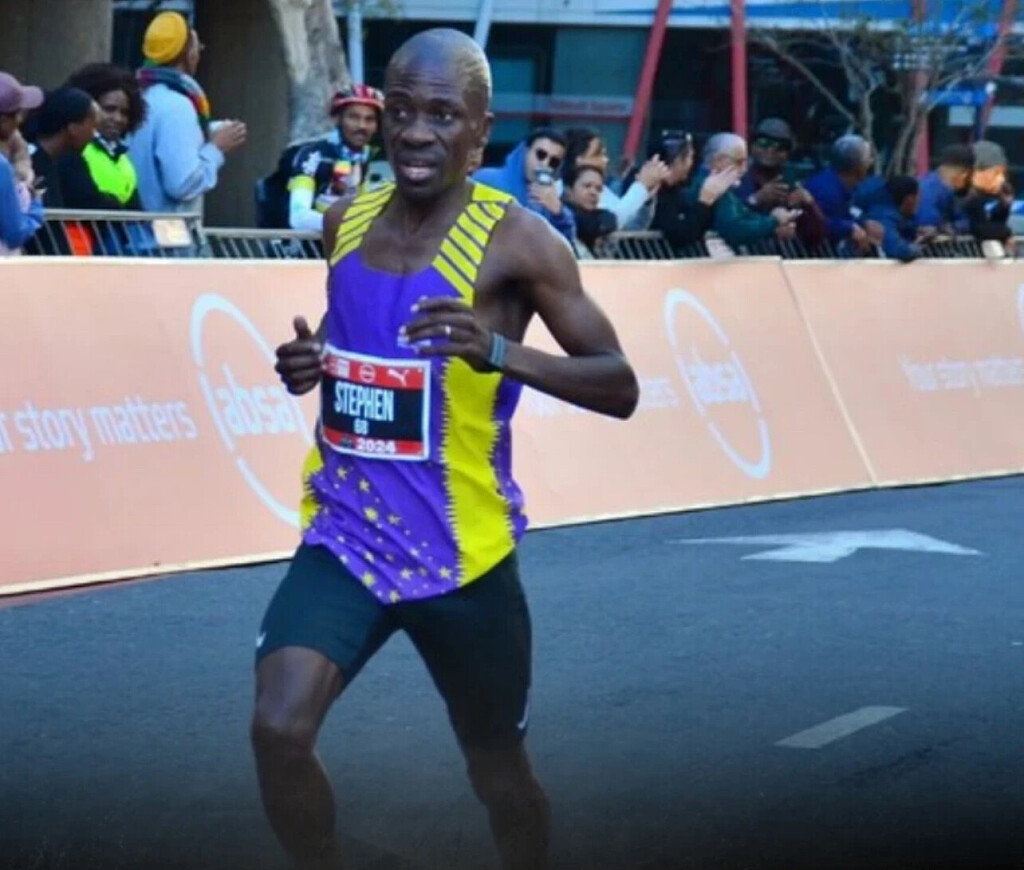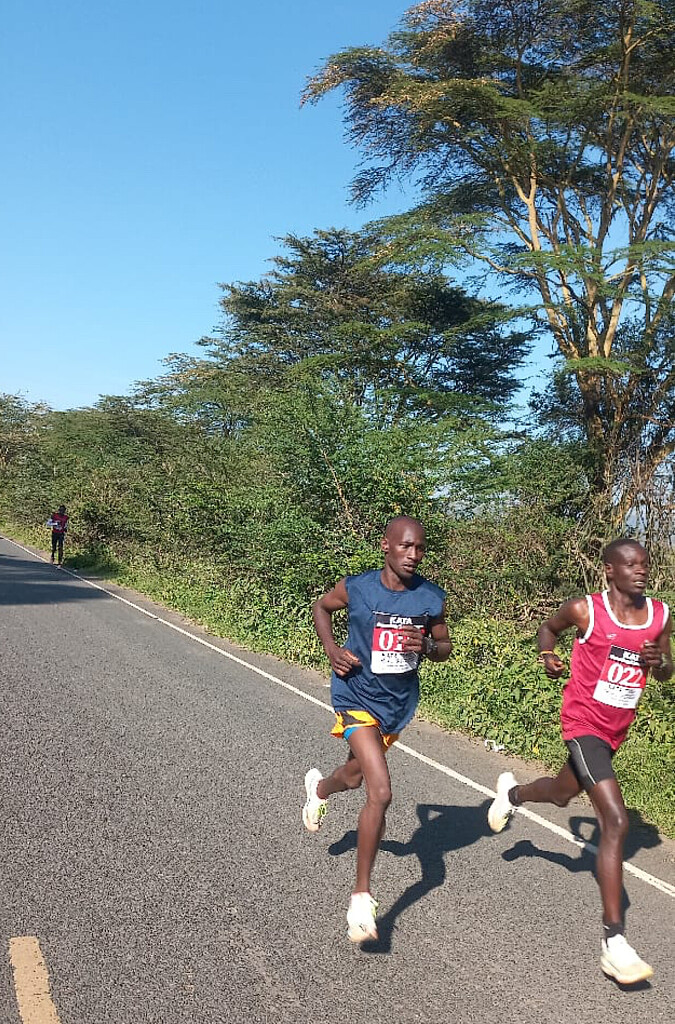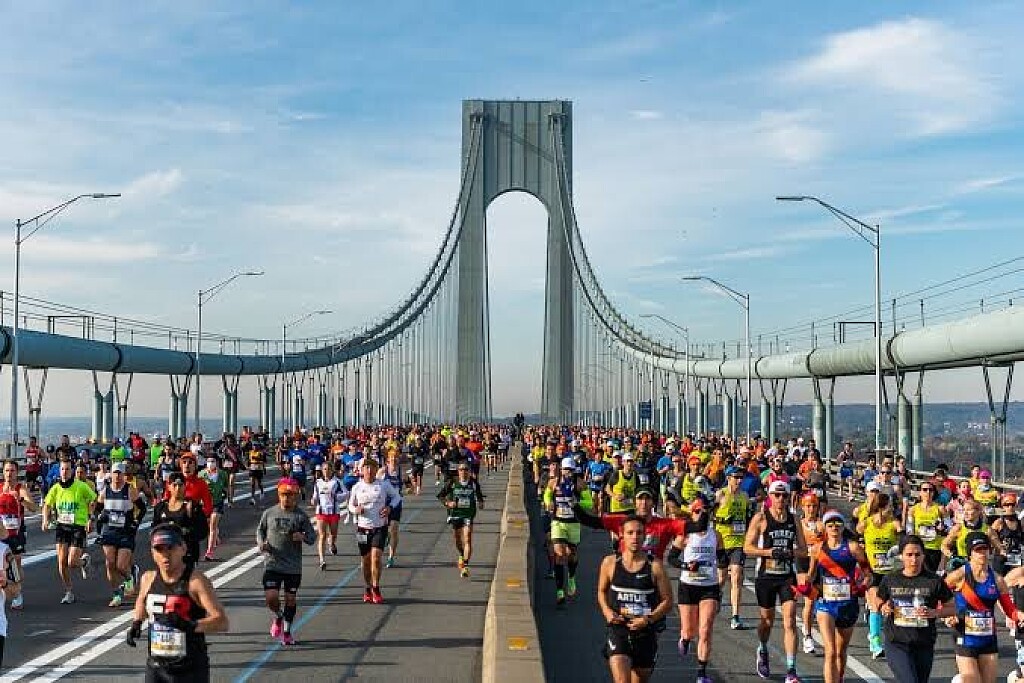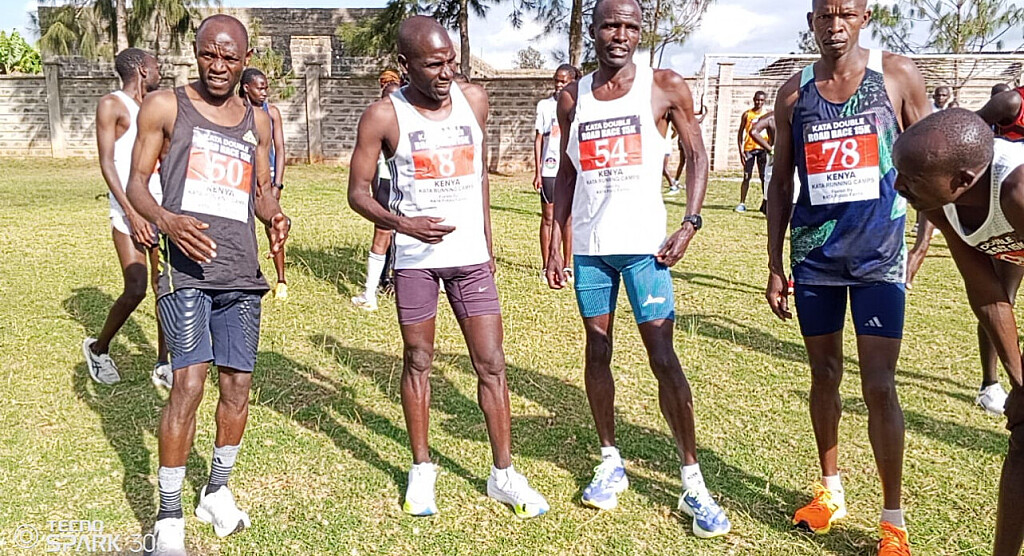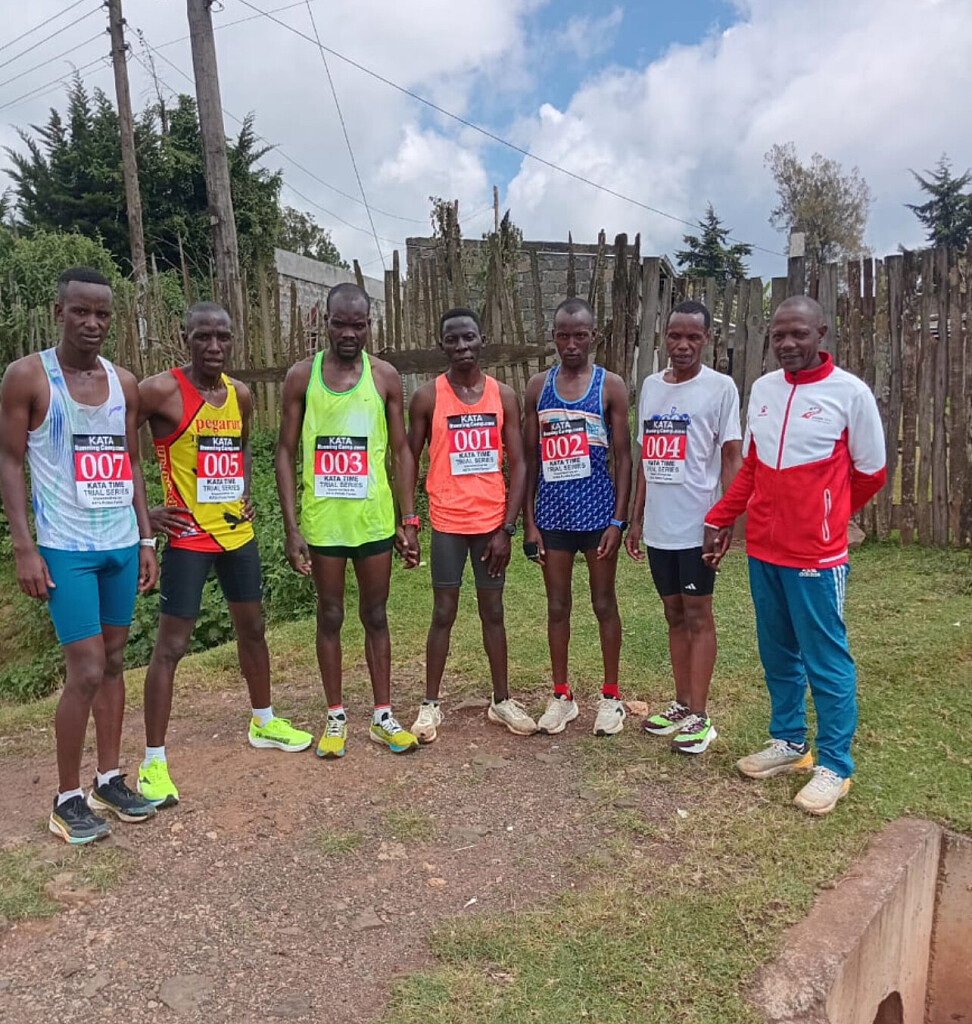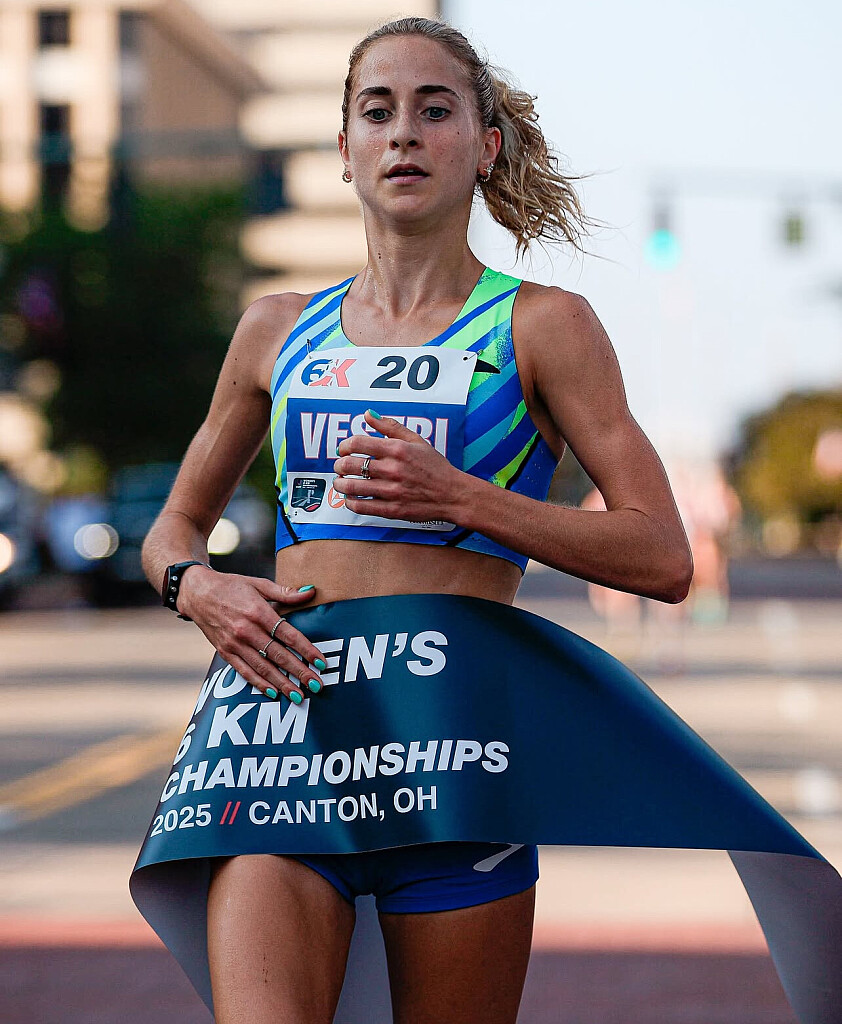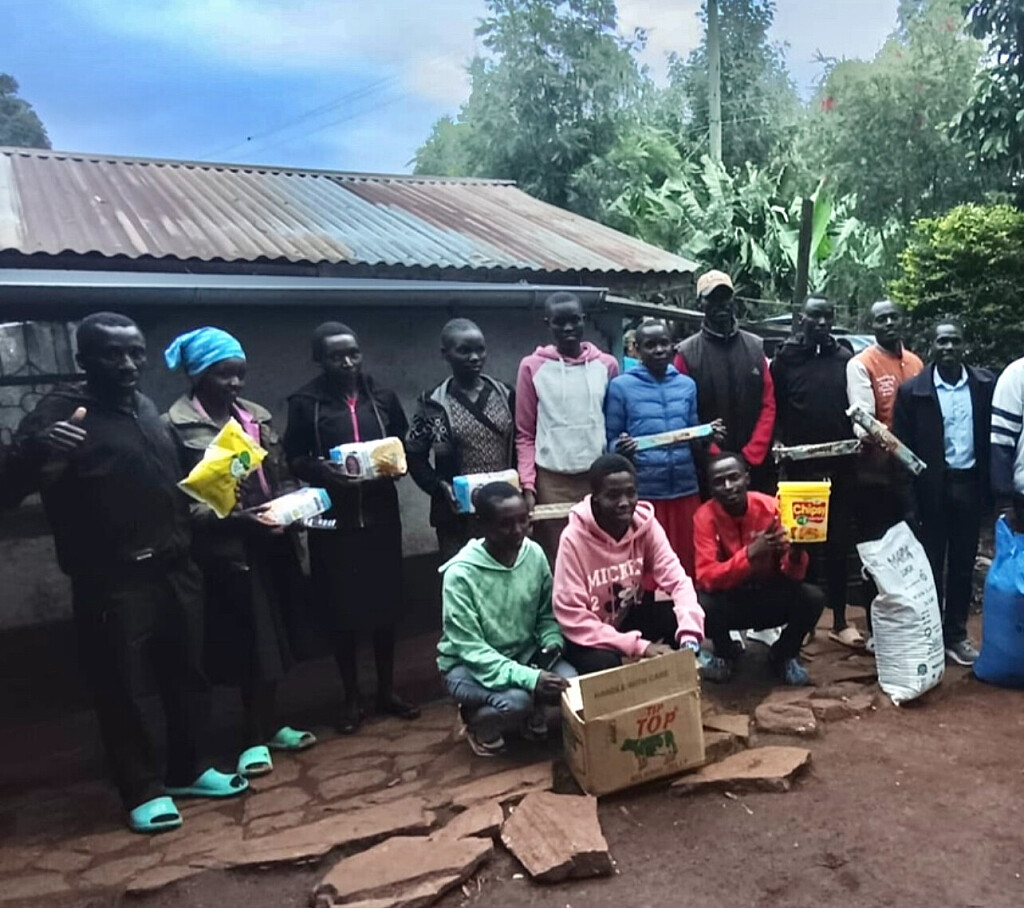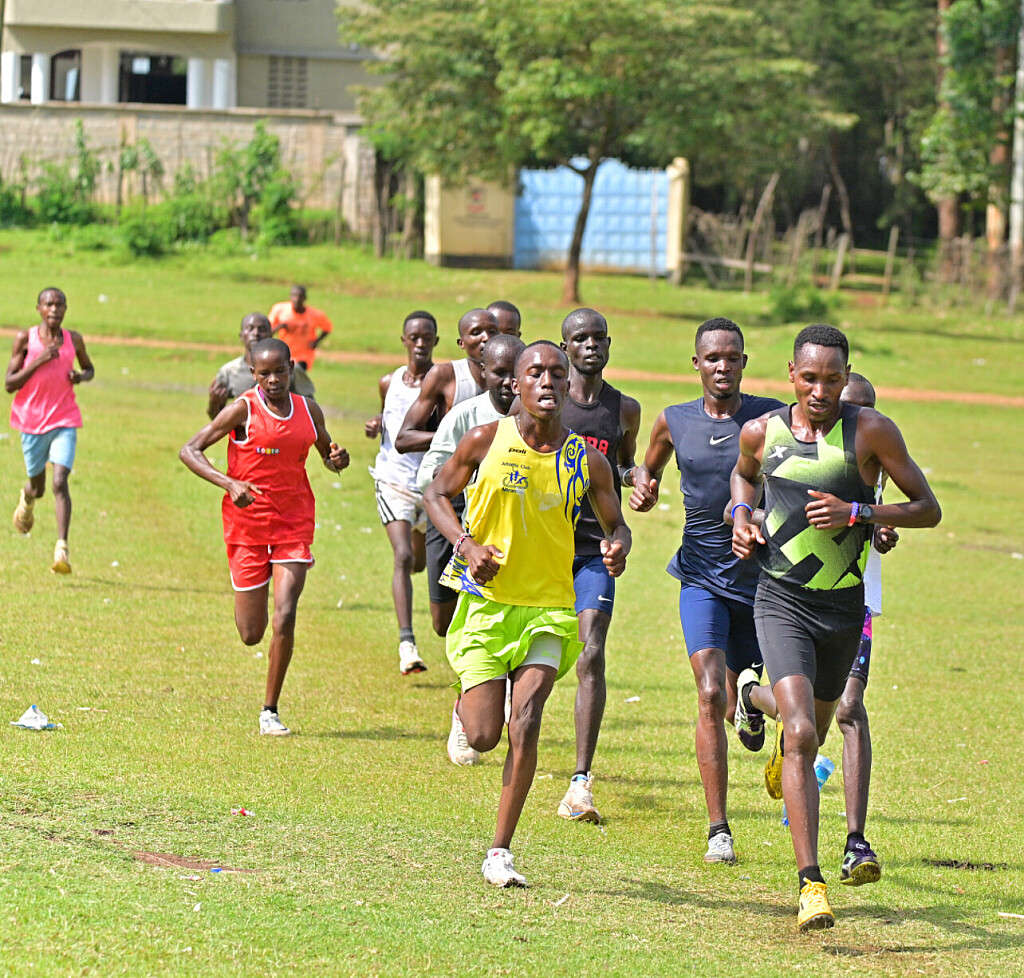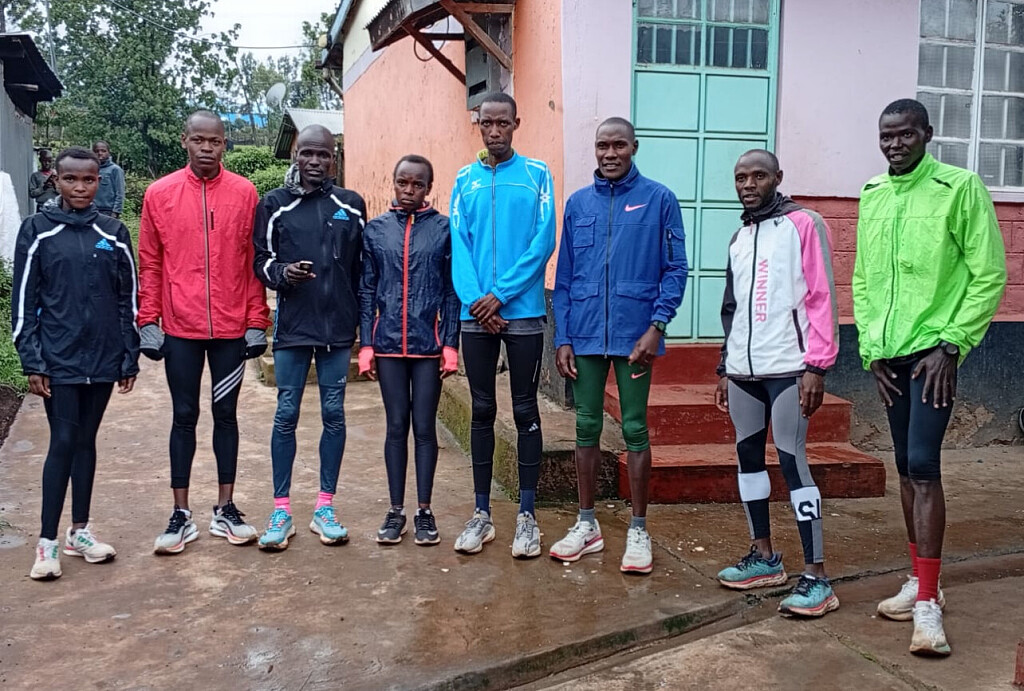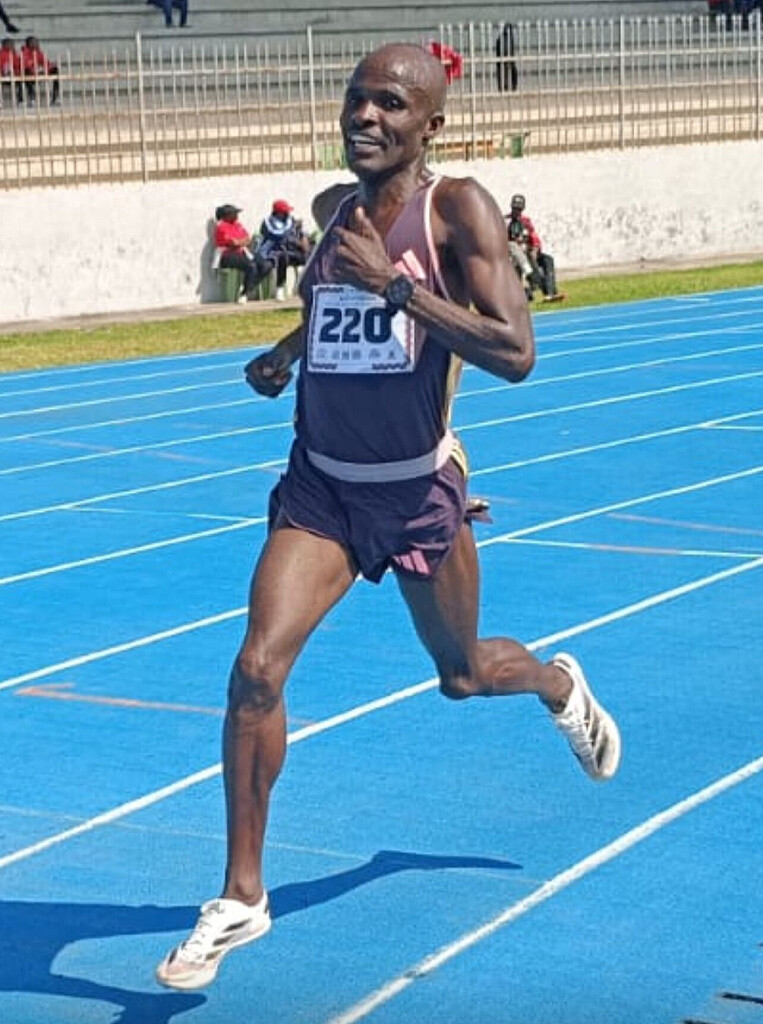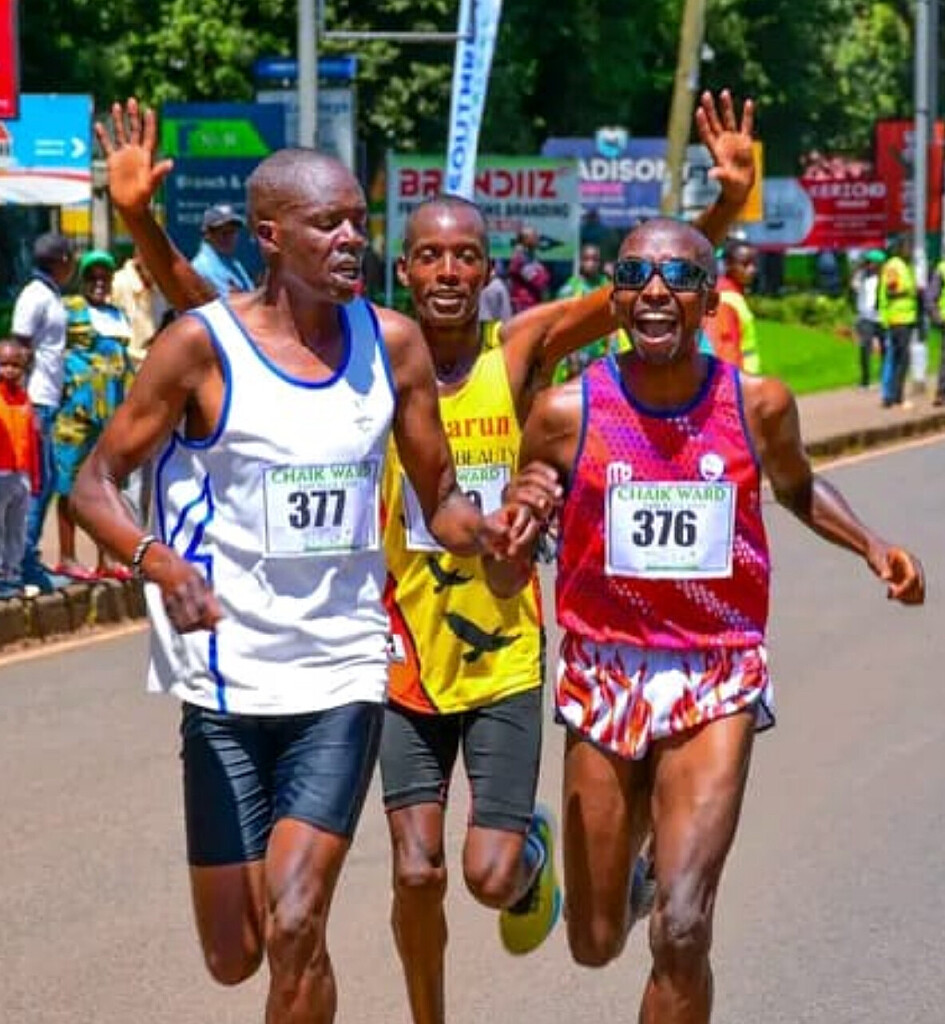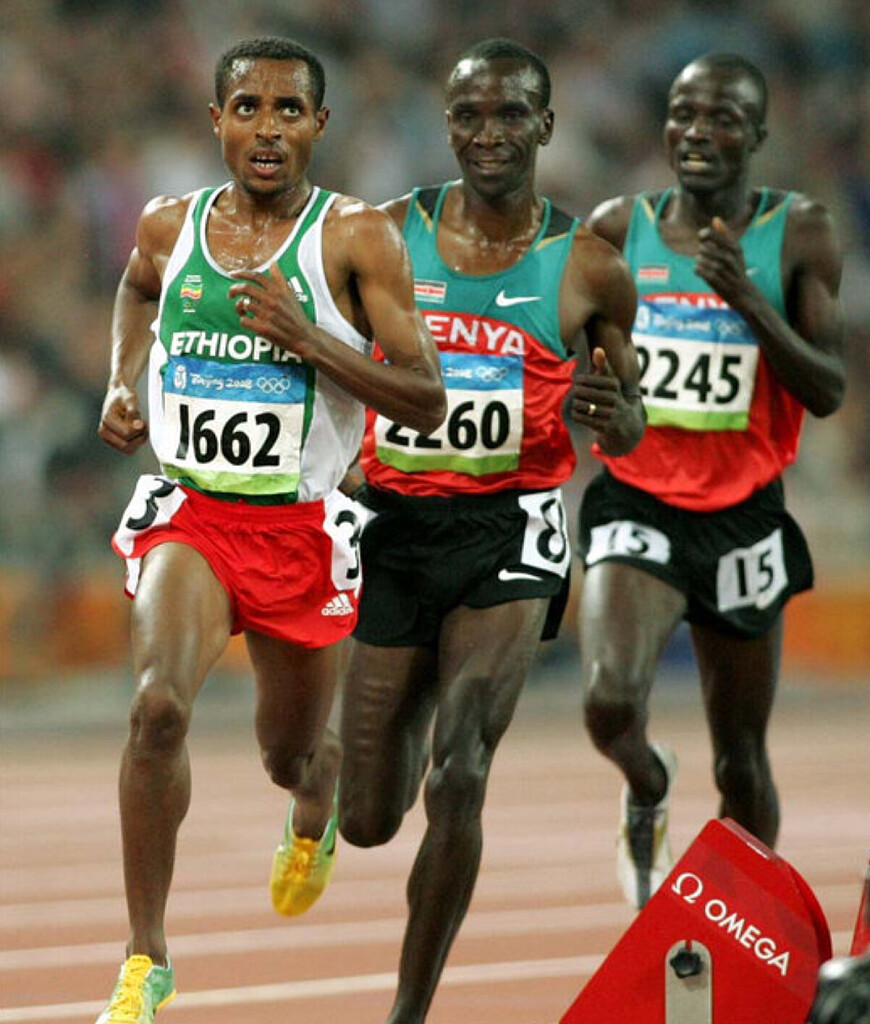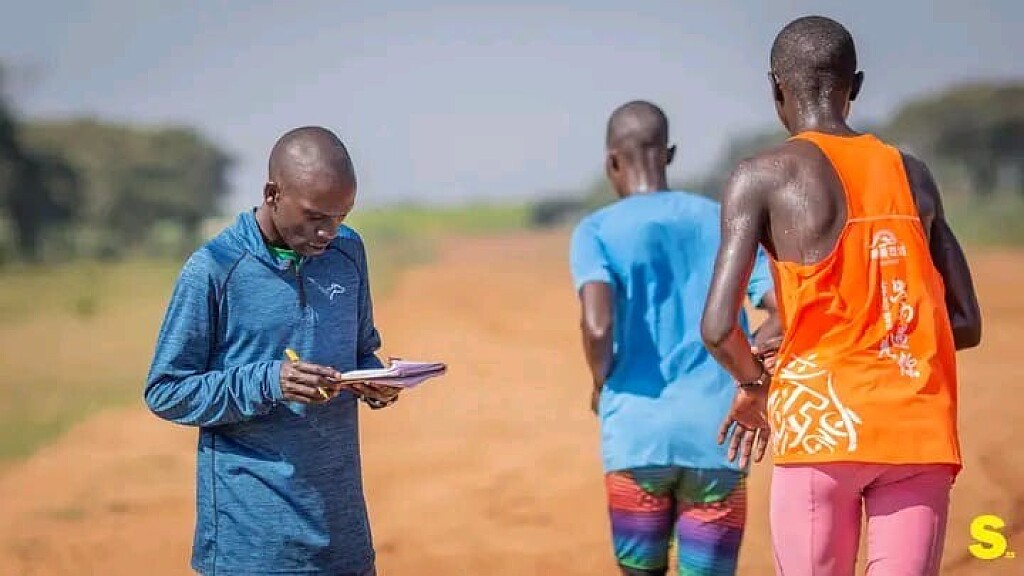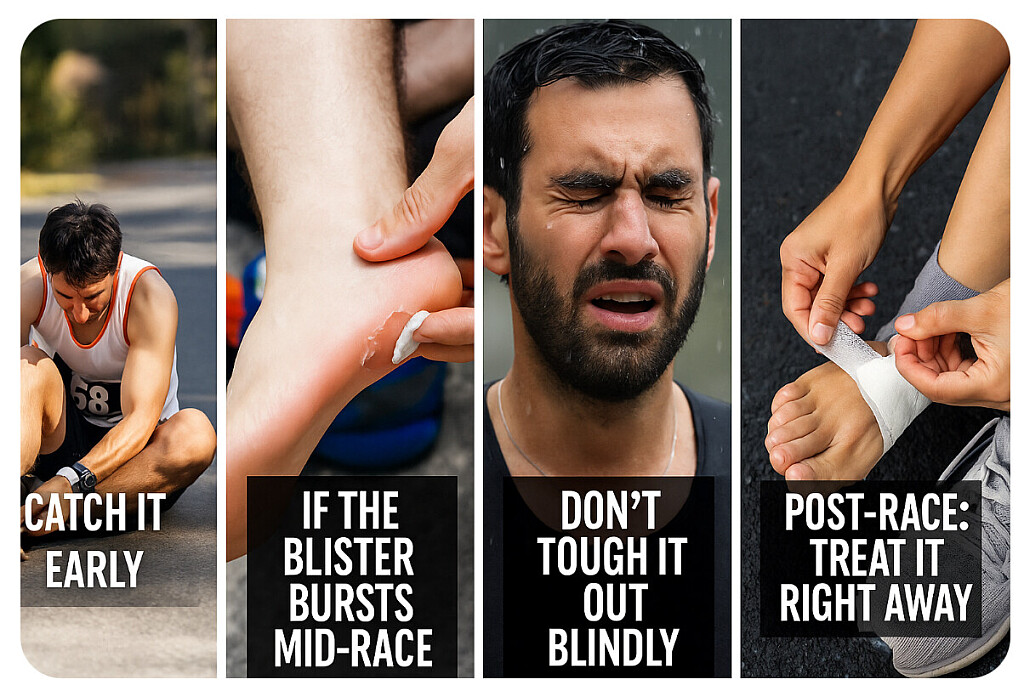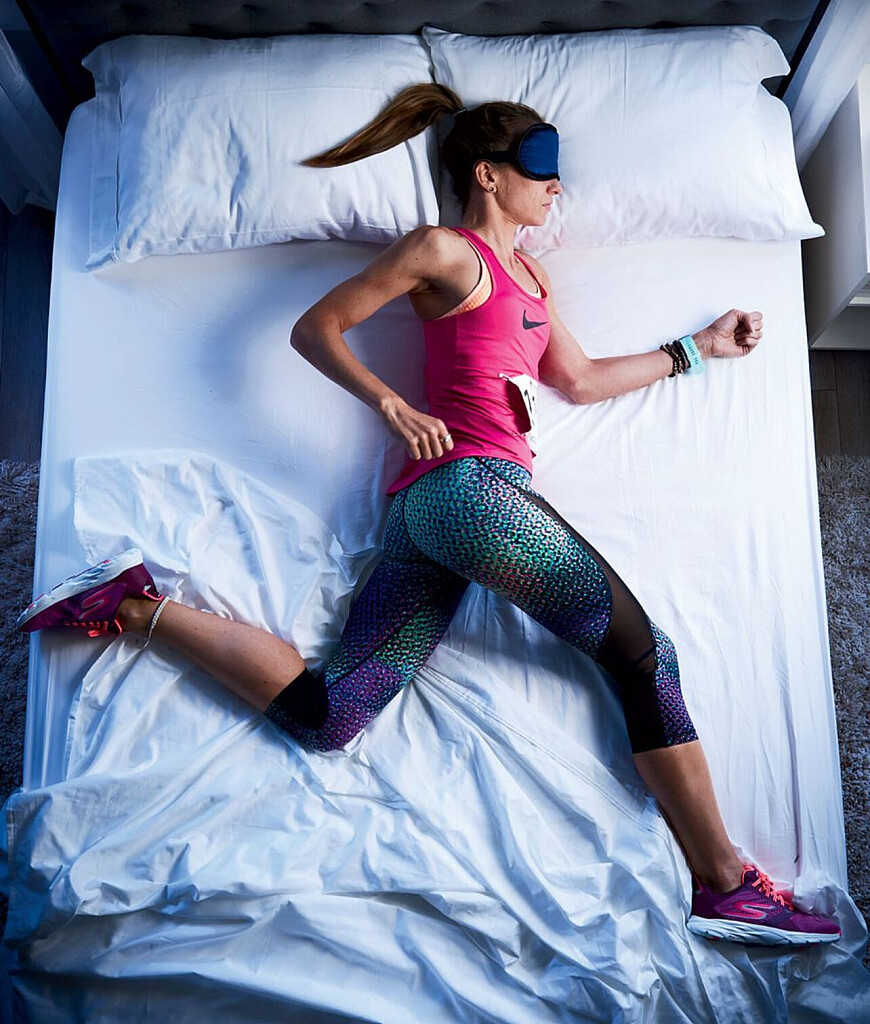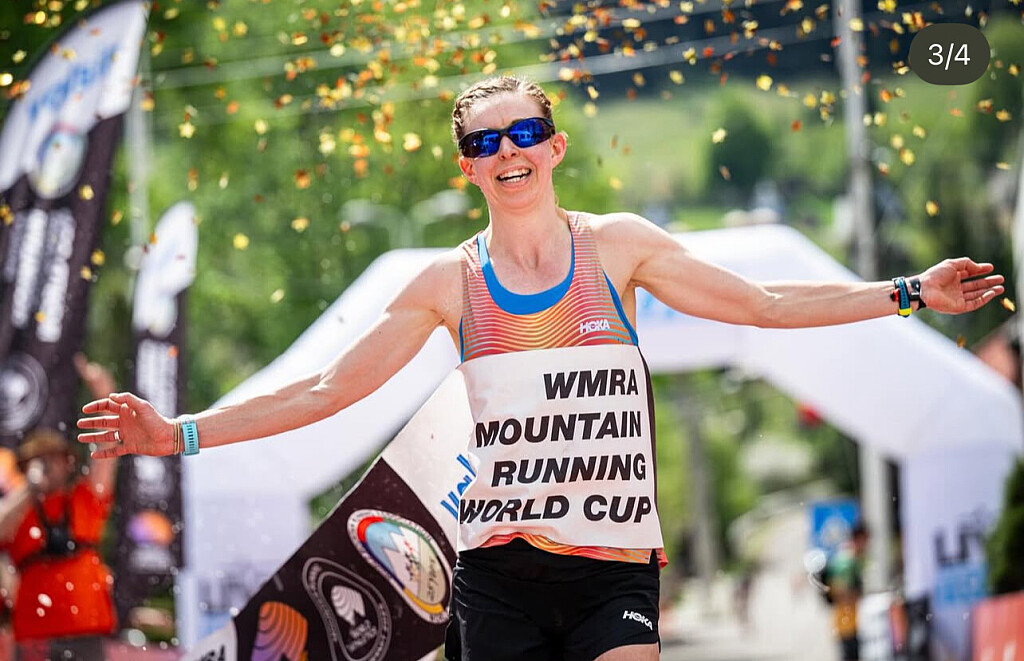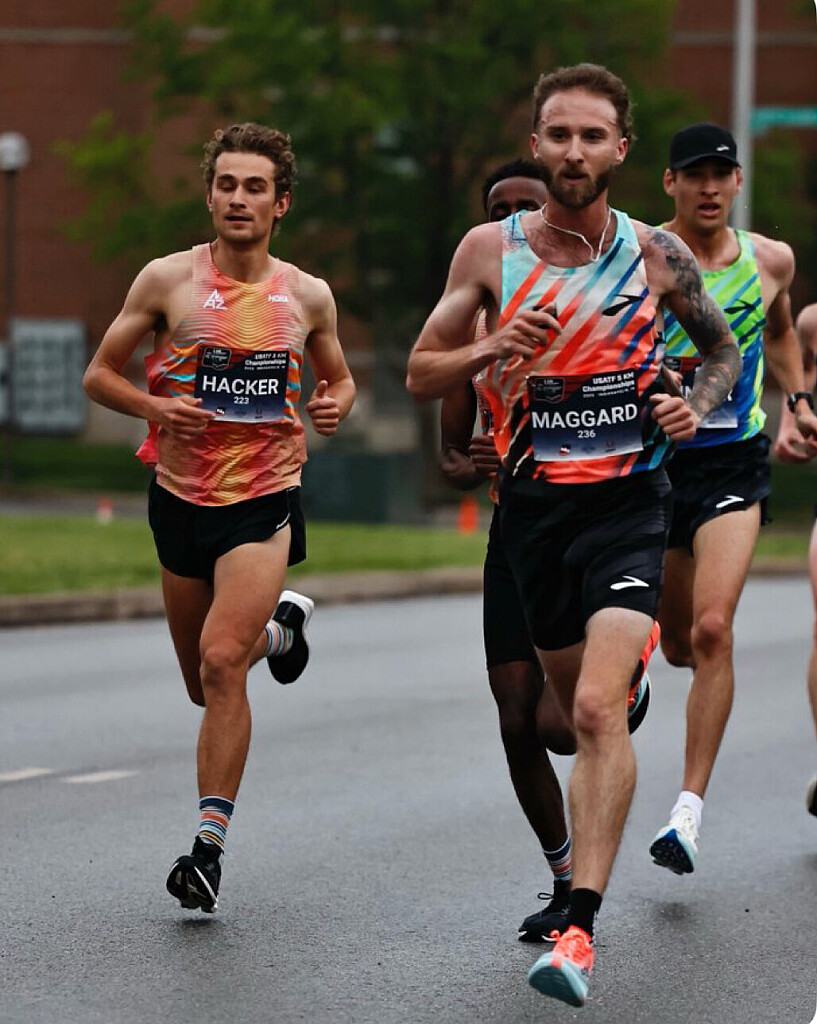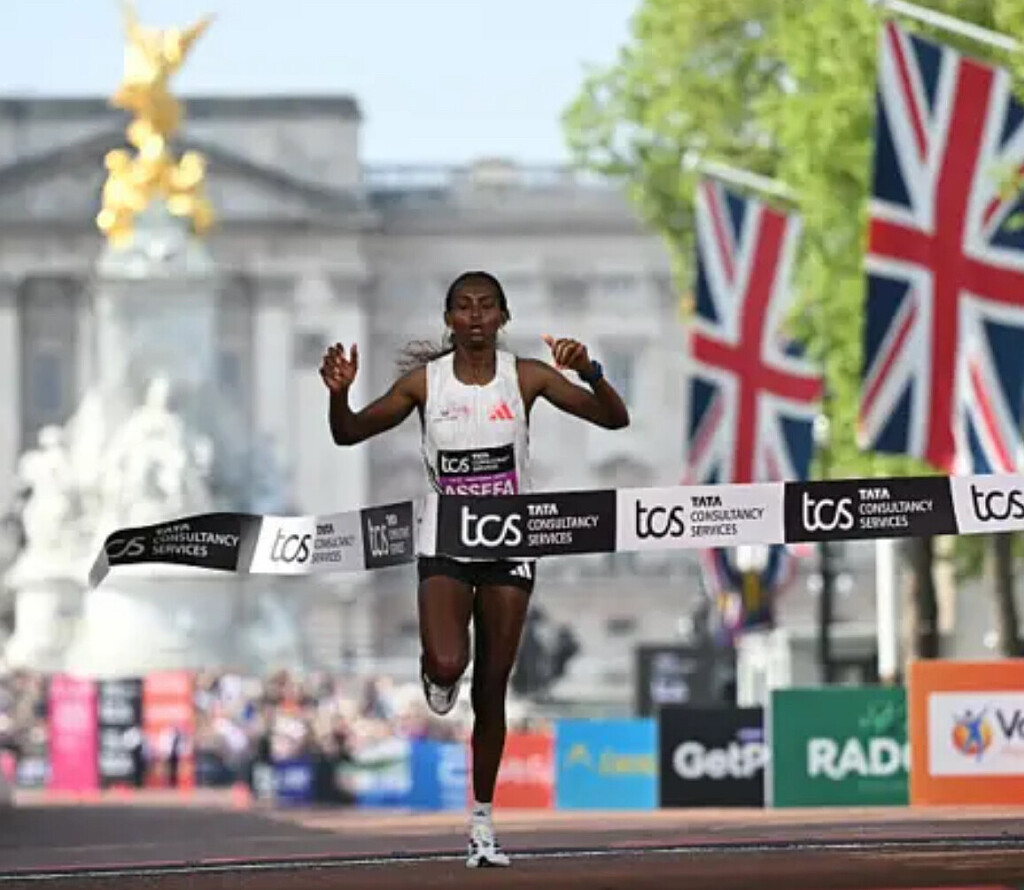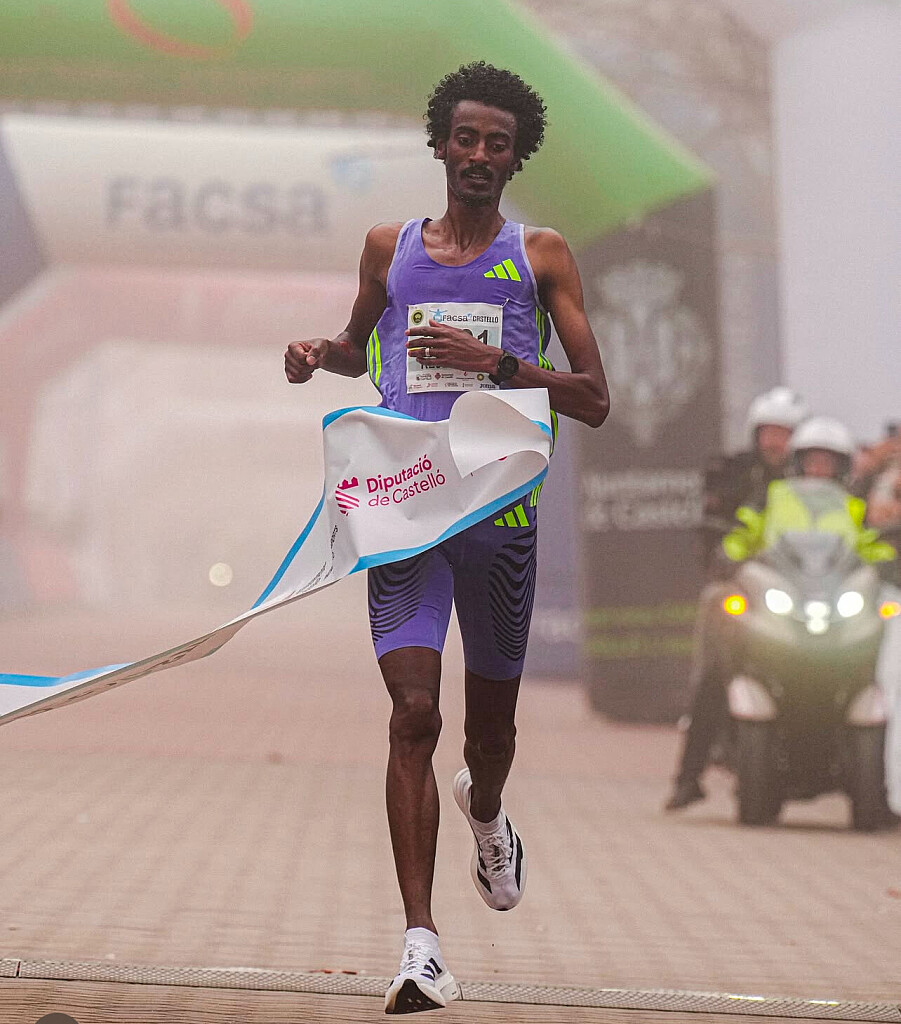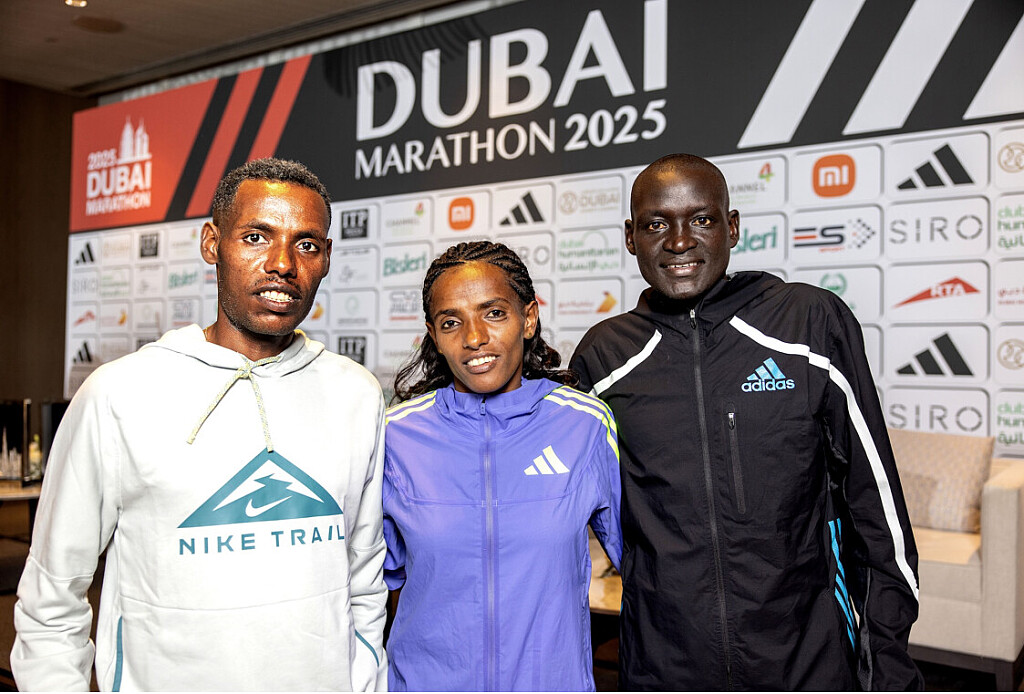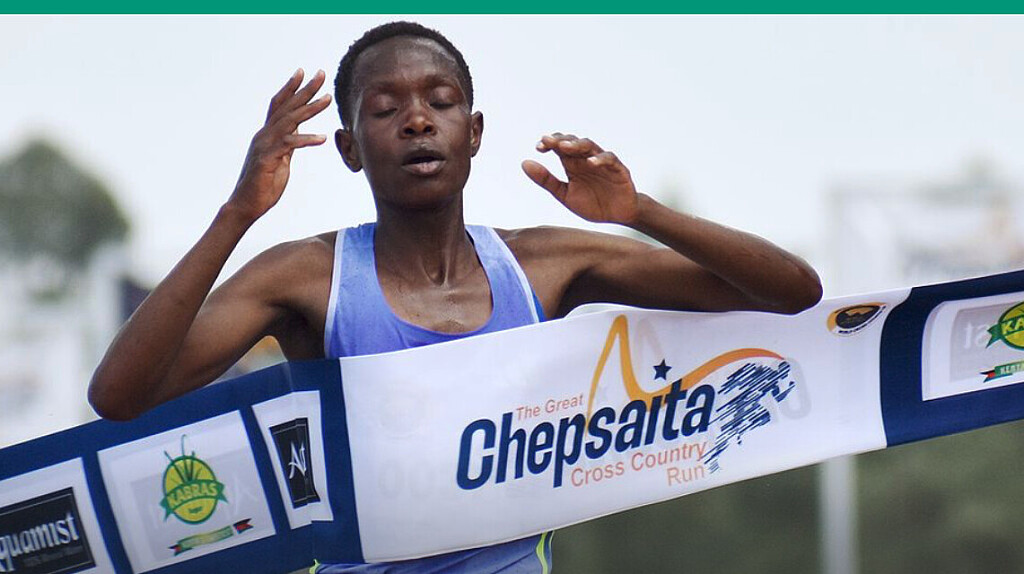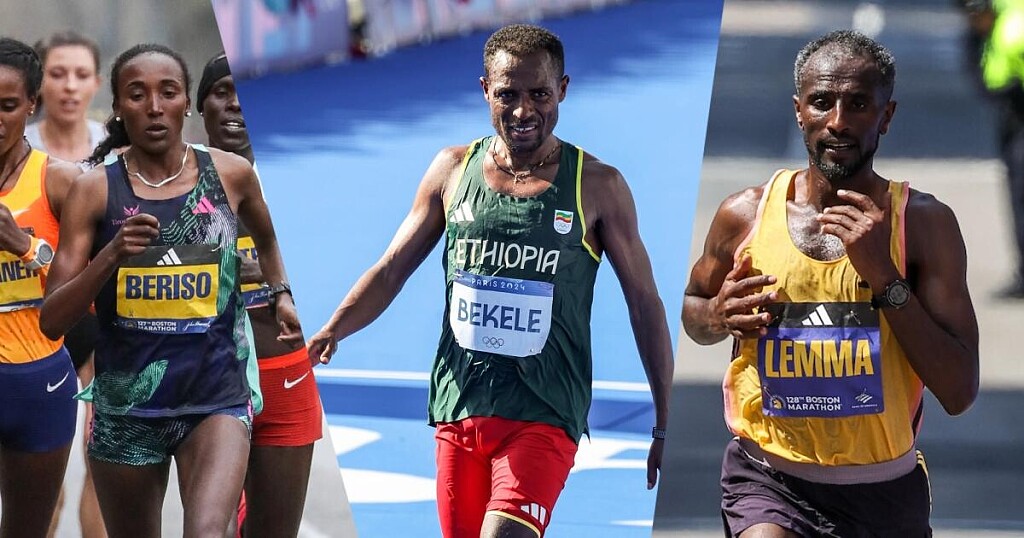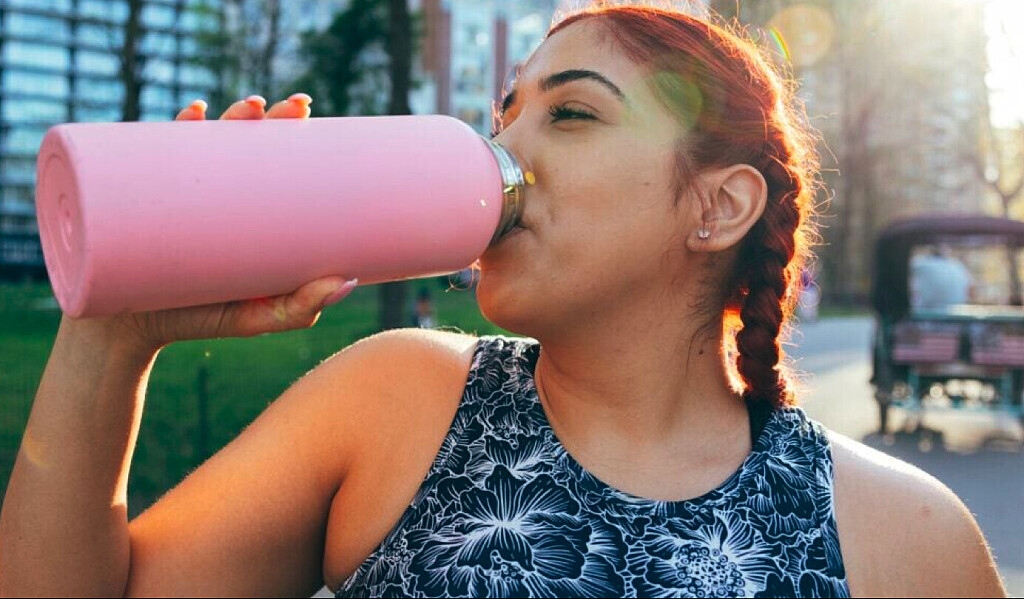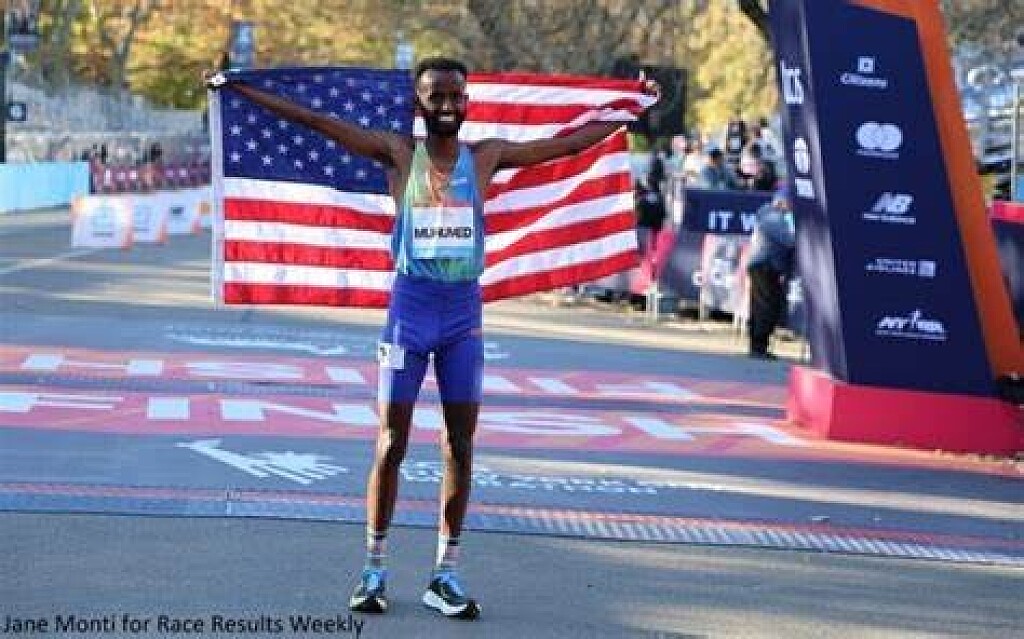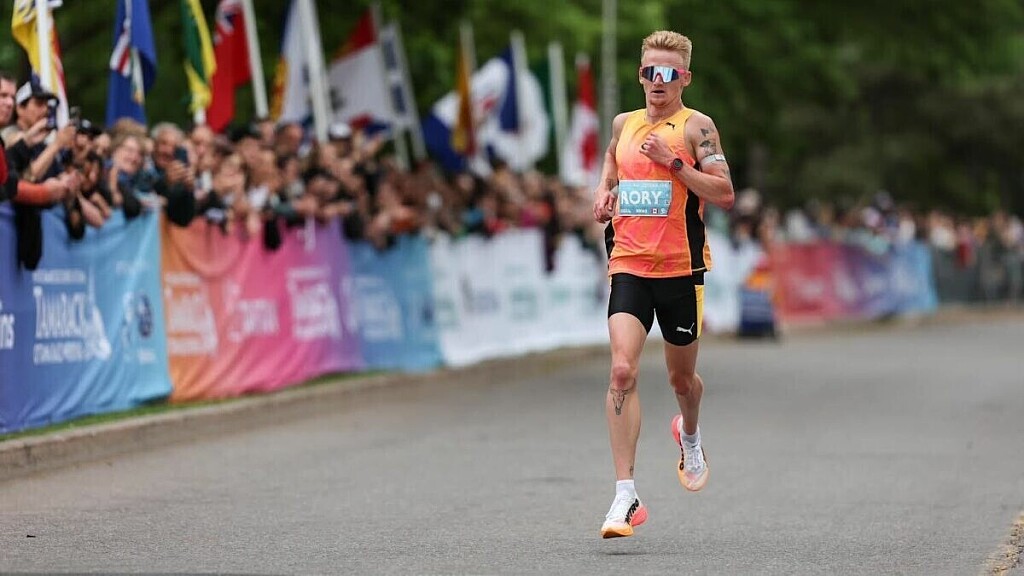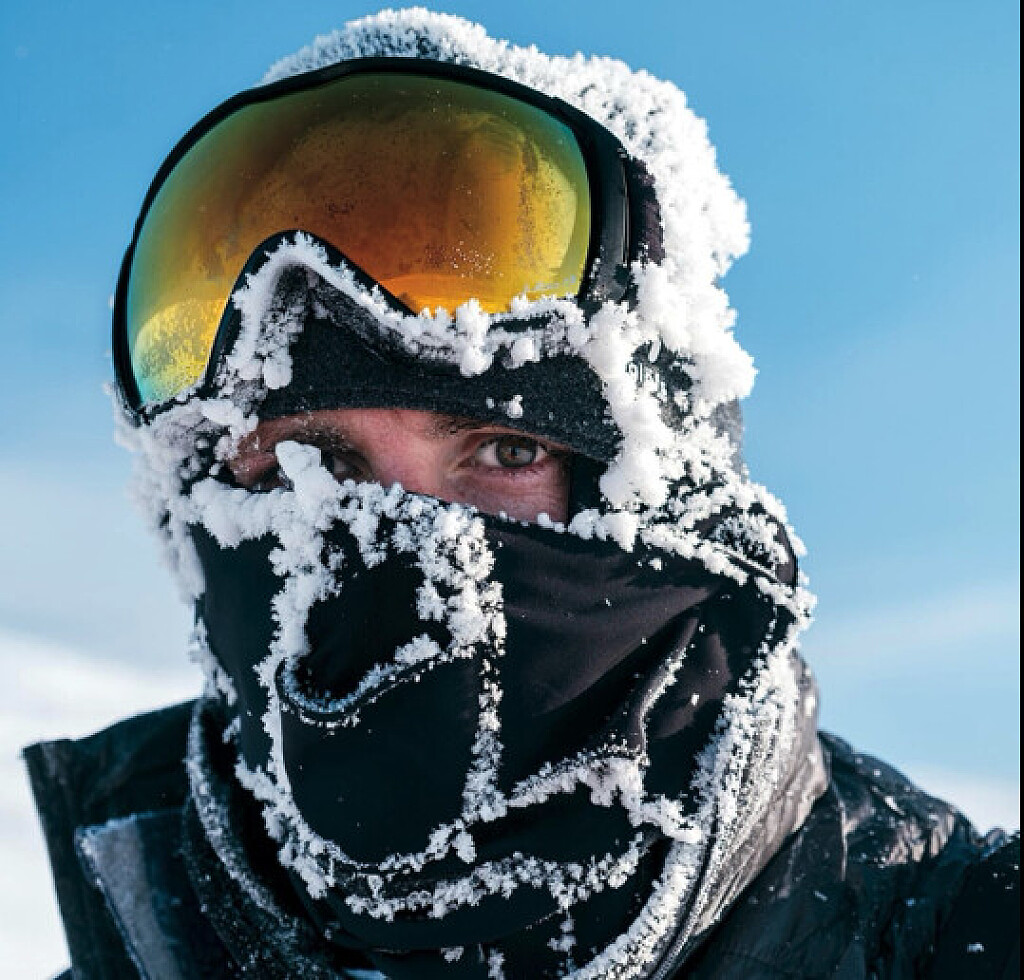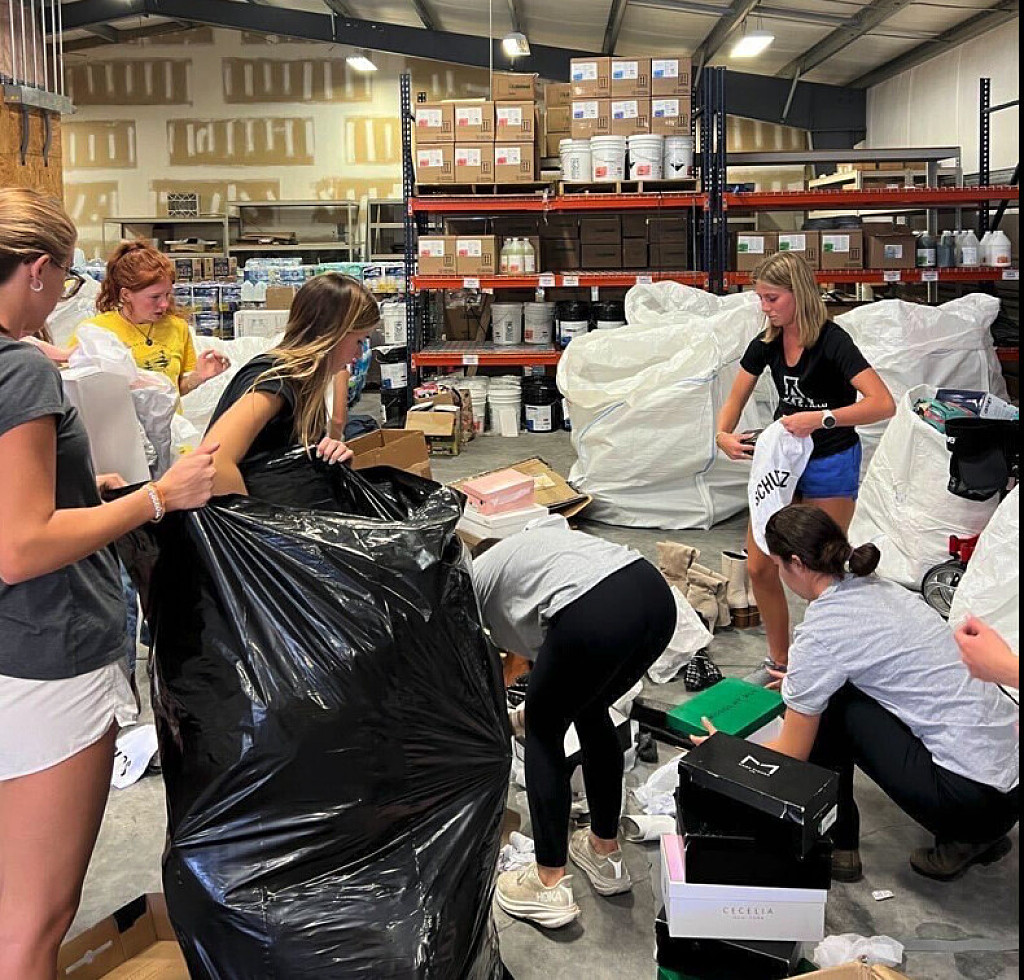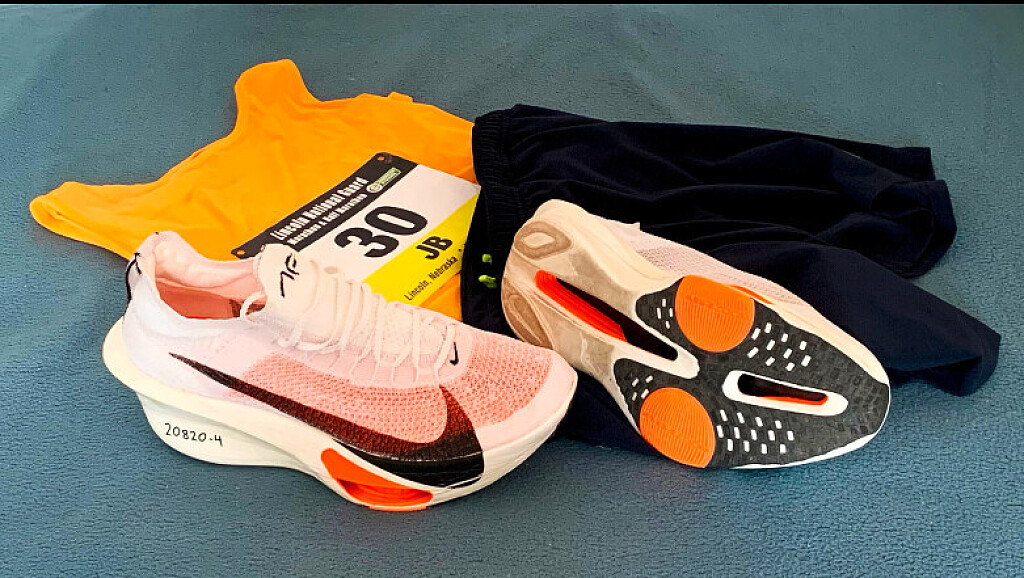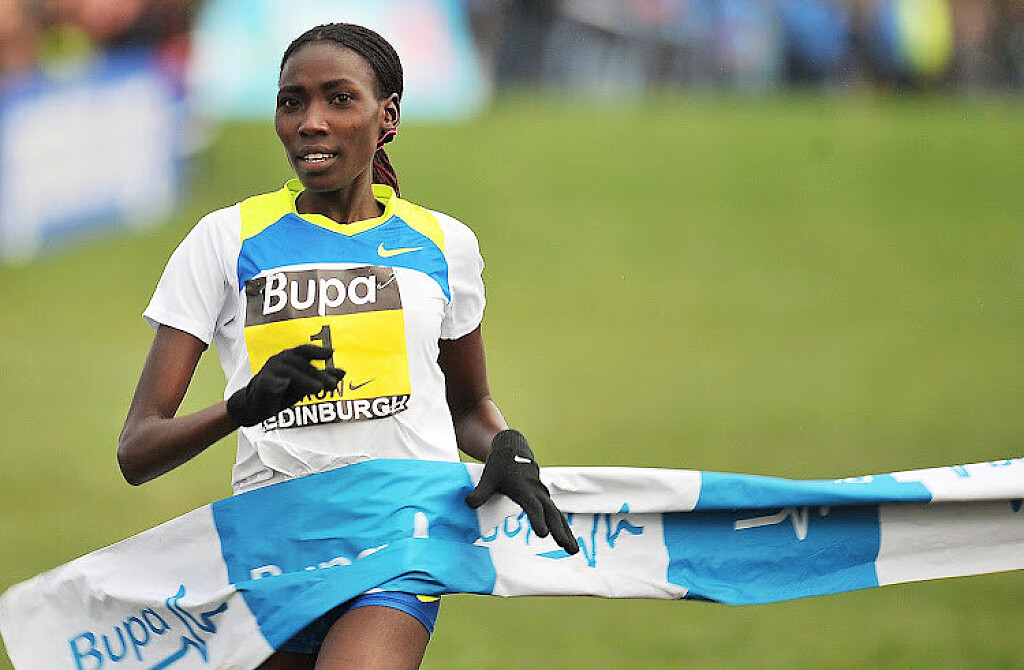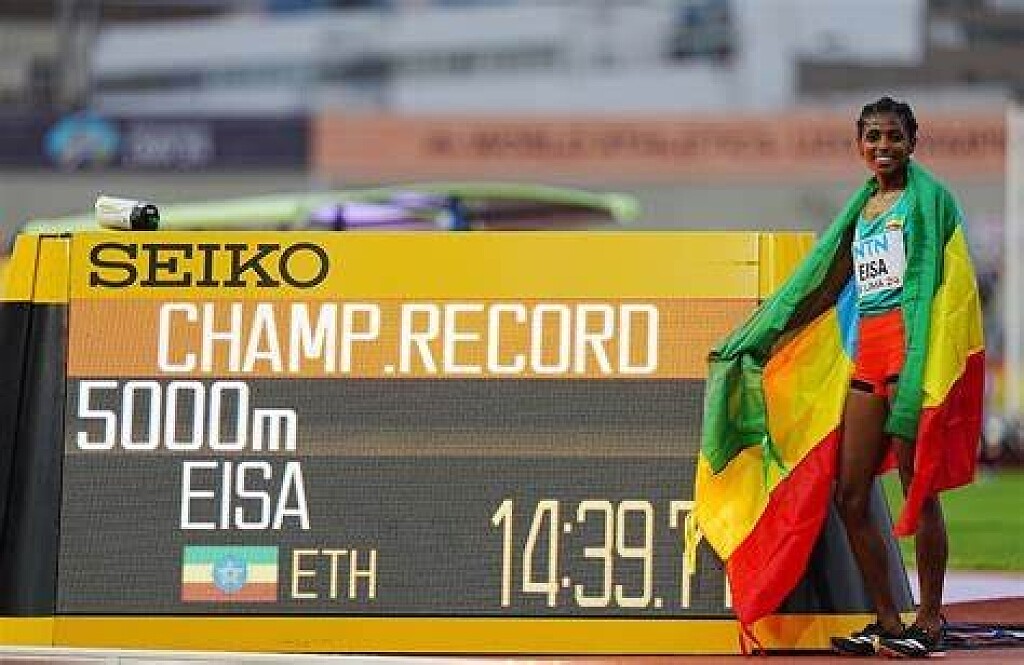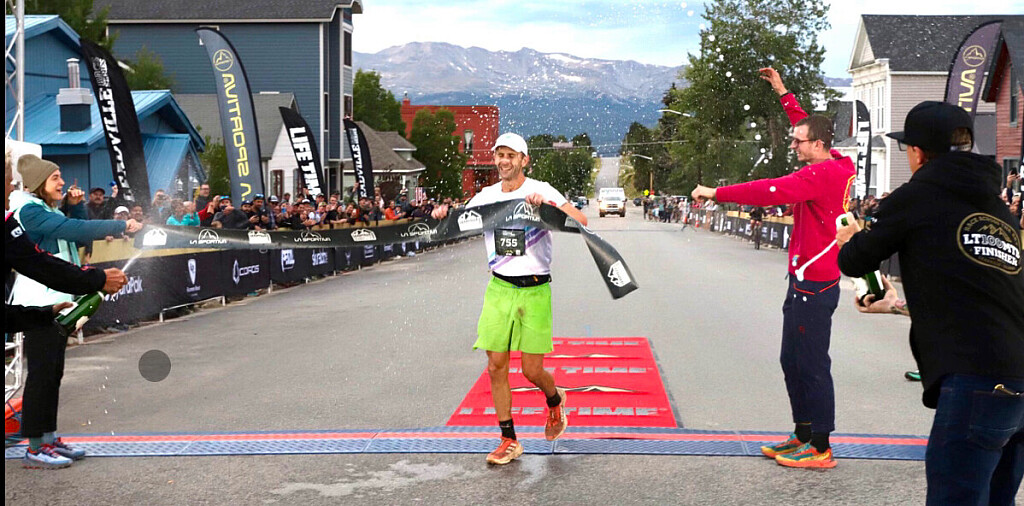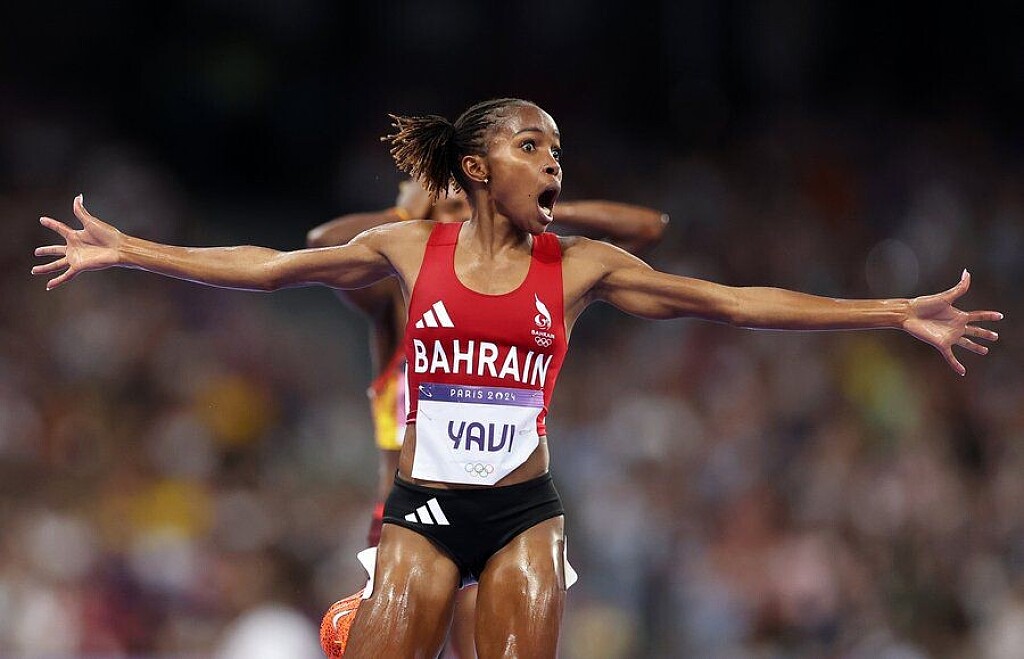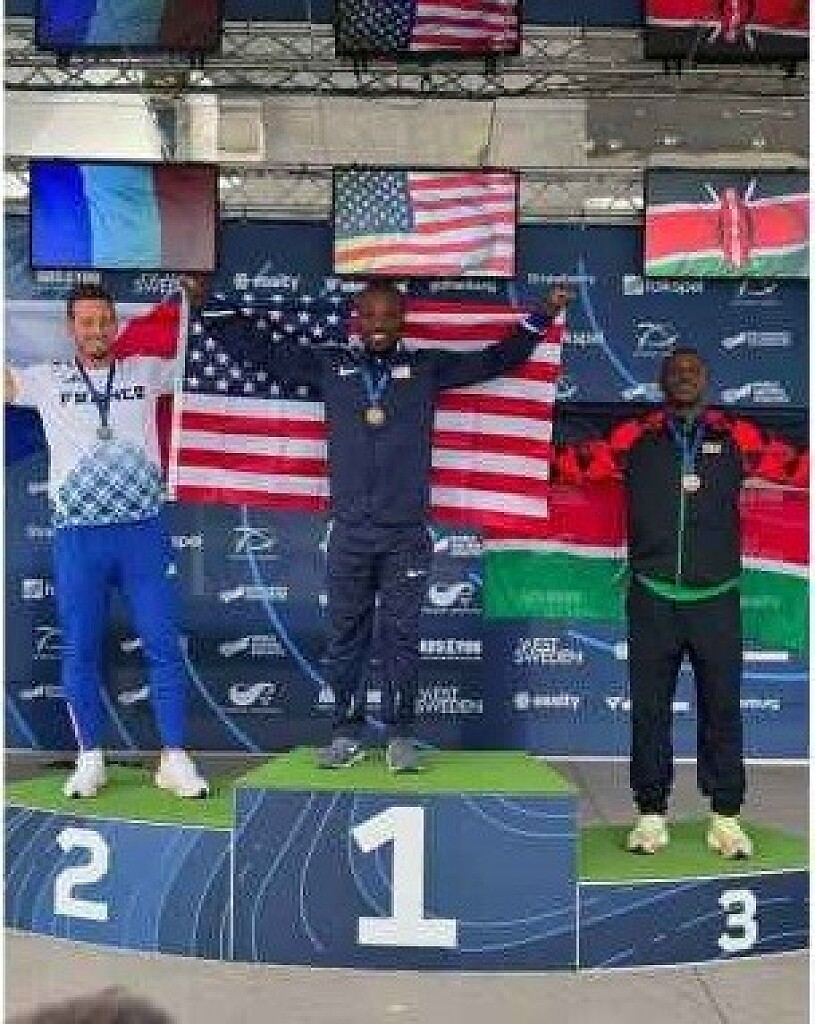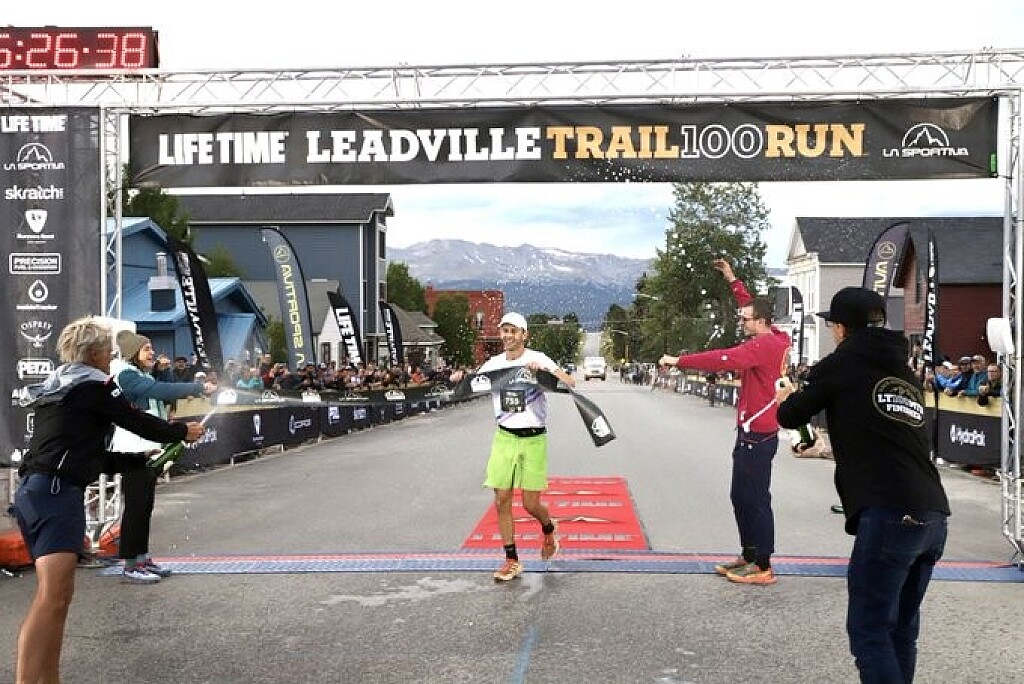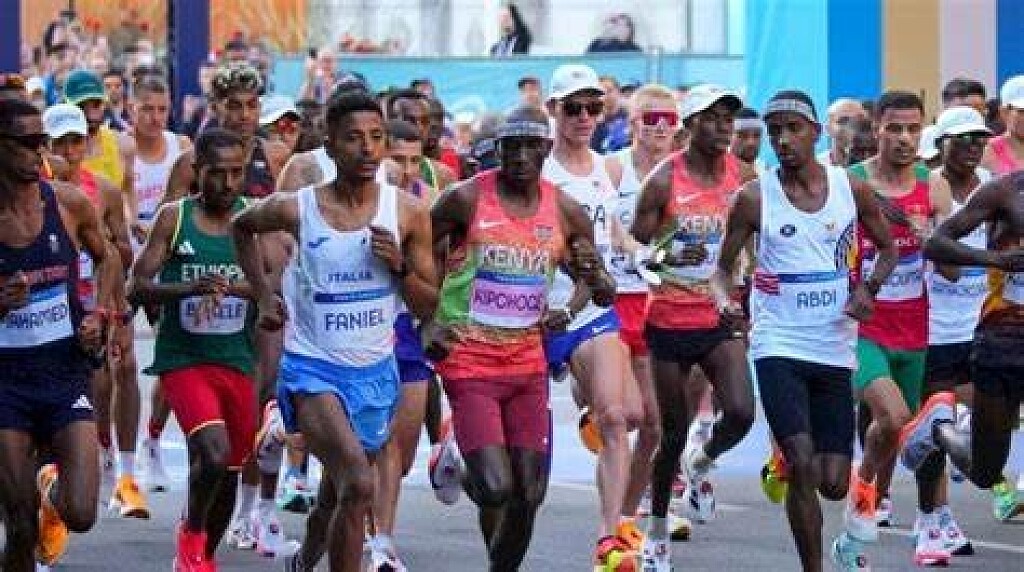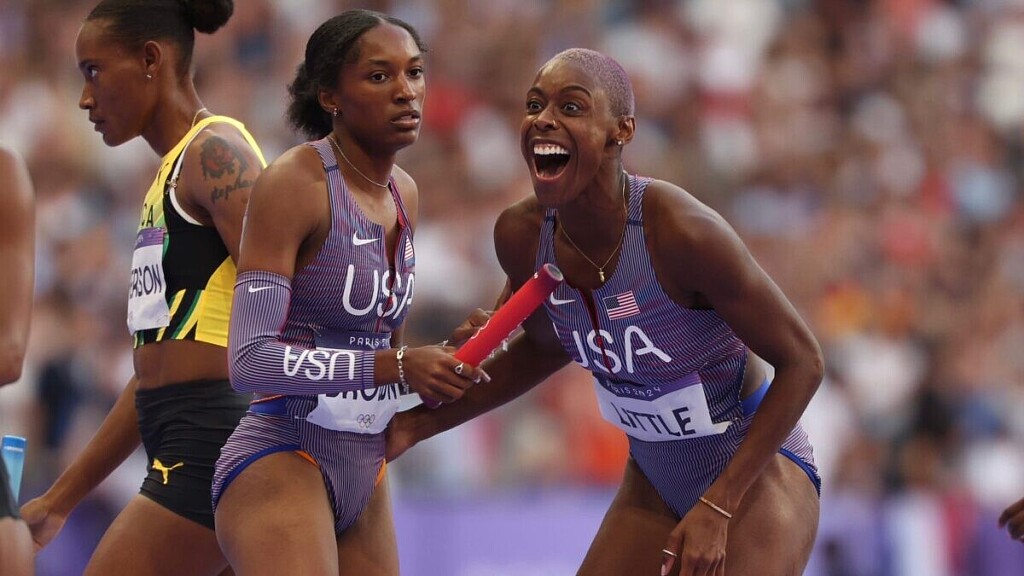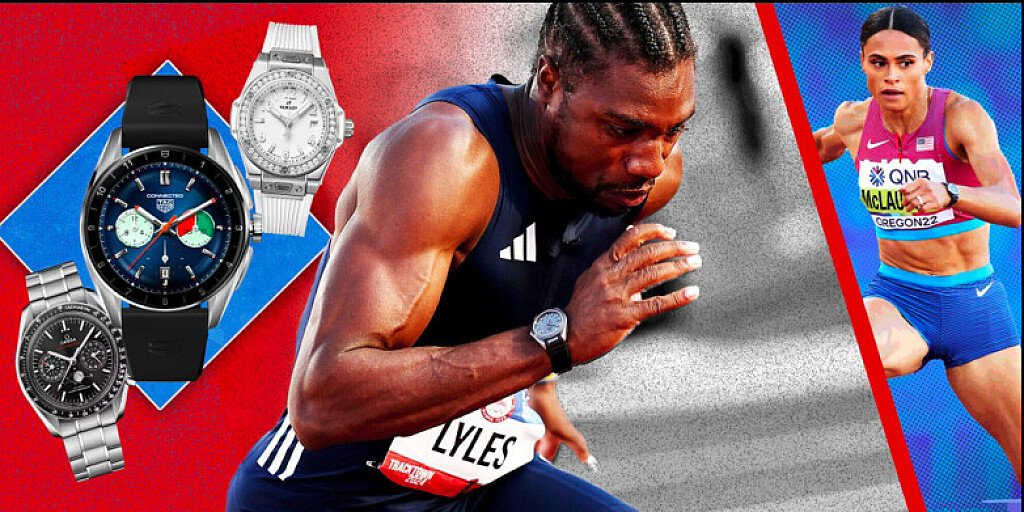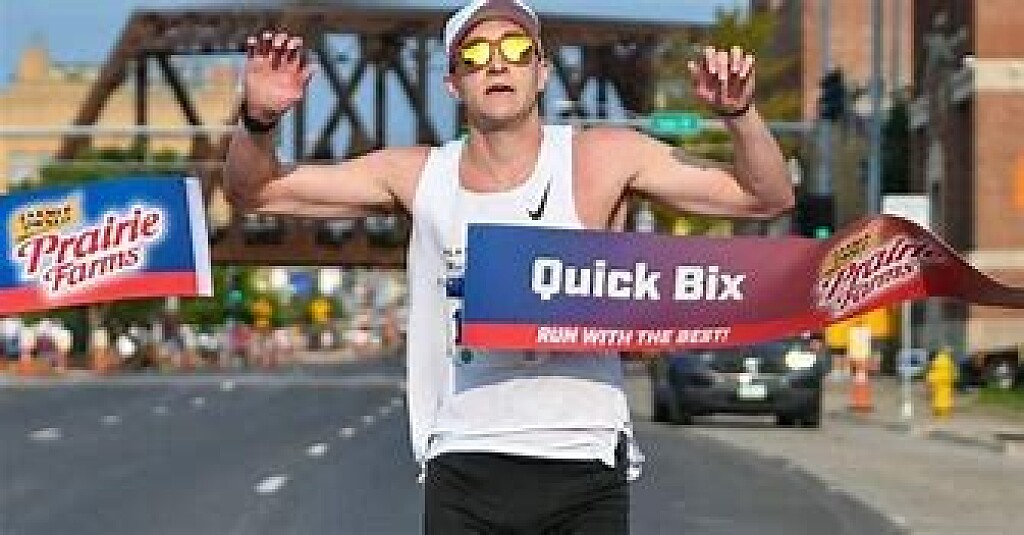Running News Daily
Running News Daily is edited by Bob Anderson. Send your news items to bob@mybestruns.com Advertising opportunities available. Train the Kenyan Way at KATA Kenya and Portugal owned and operated by Bob Anderson. Be sure to catch our movie A Long Run the movie KATA Running Camps and KATA Potato Farms - 31 now open in Kenya! https://kata.ke/
Index to Daily Posts · Sign Up For Updates · Run The World Feed
Articles tagged #Mol
Today's Running News
Stephen Mokoka Breaks 37-Year-Old SA Veterans Marathon Record at Big Hole Marathon
South African marathon legend Stephen Mokoka continues to prove that age is no barrier to excellence. On Saturday, November 22, 2025, the 40-year-old star shattered the South African veterans (40+) marathon record at the Big Hole Marathon in Kimberley, finishing second overall in a brilliant 2:15:31.
The previous record — 2:17:40, set by Paulus Masilela in 1988 — had stood untouched for 37 years. Mokoka didn’t just dip under it; he demolished it.
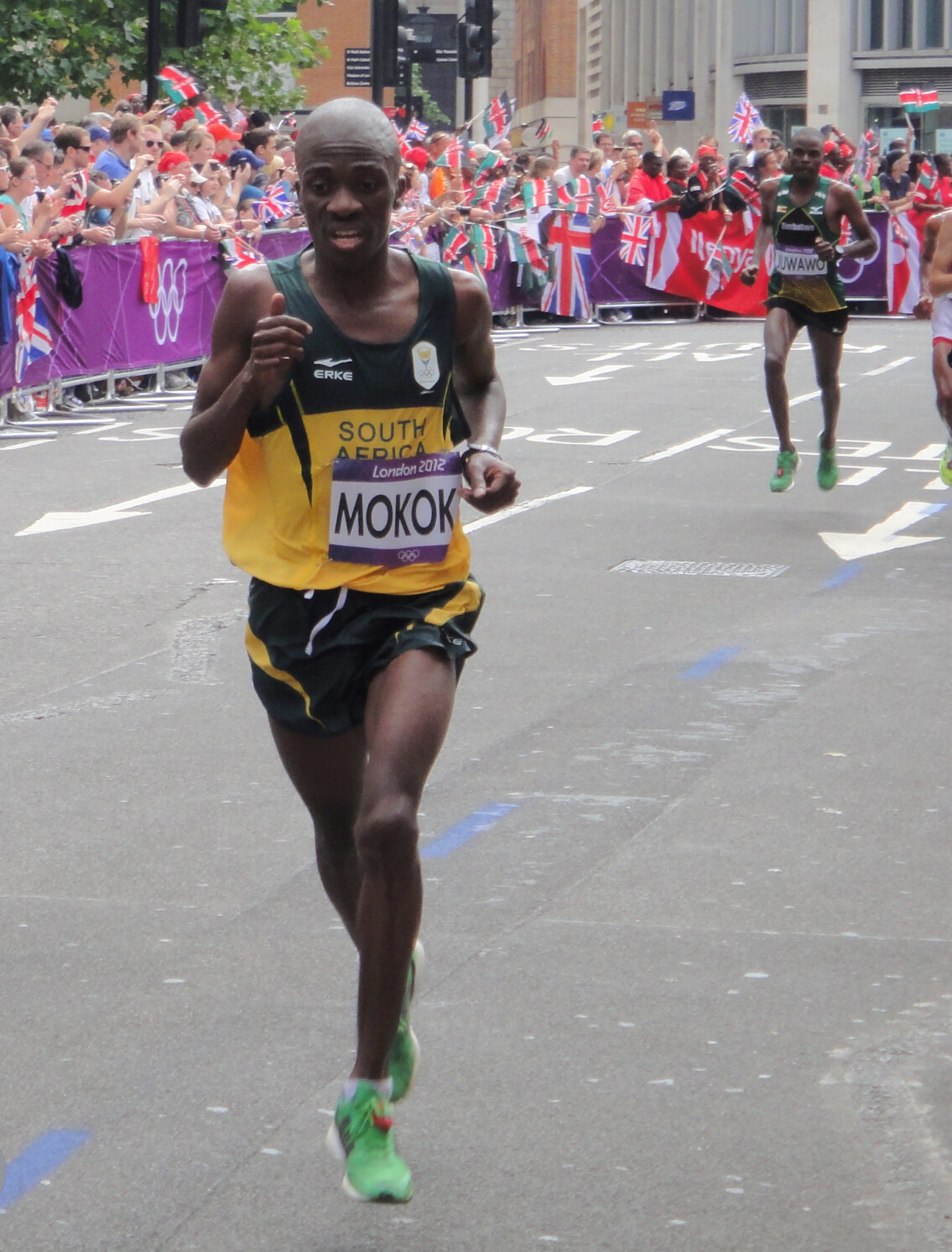
Adding to the historic moment, fellow veteran Lucky Mohale also broke the old mark with his fourth-place finish in 2:17:19. Two over-40 athletes surpassing a decades-old national record on the same day is a rare and remarkable achievement in distance running.
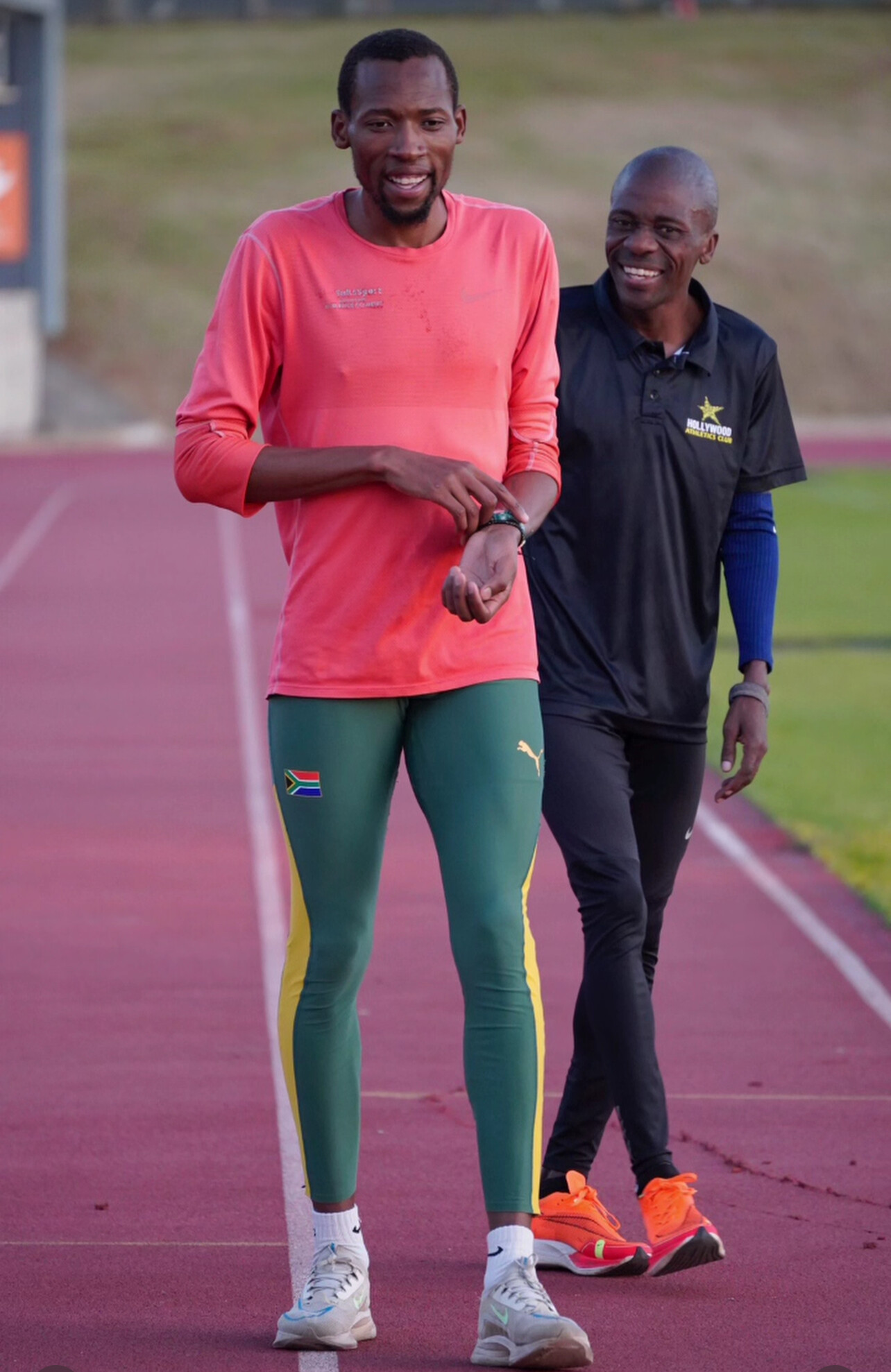
Top Veterans Results
• Stephen Mokoka — 2:15:31
• Lucky Mohale — 2:17:19
A Masterclass in Longevity
Mokoka, one of South Africa’s most decorated distance runners, has been a model of consistency for nearly two decades. His record-breaking run in Kimberley underscores not only his exceptional endurance but also his continued drive to compete at the highest level well into his 40s.
With performances like this, Mokoka solidifies his place as one of the most durable marathoners of his era.
What’s Ahead?
With the veterans record now rewritten, fans are already asking:
Can Mokoka target even more age-group records in 2026?
Given the shape he showed in Kimberley, nothing seems out of reach.
A historic day for South African distance running — and a powerful reminder of what is possible when talent, experience, and longevity come together.
by Boris Baron
Login to leave a comment
Lucy Muritu’s Young Athletes Set Sights on 3rd Edition of Great Chepsaita Cross Country Run
NYANDARUA, Kenya Lucy Muritu, a dedicated KATA beneficiary and mentor, is preparing her young athletes to shine on the global stage at the upcoming 3rd edition of the Great Chepsaita Cross Country Run (Gold Label), set for December 6.
Beyond her success as a KATA potato farmer, Lucy has devoted herself to nurturing young running talent, proving that grassroots mentorship can open doors for children to excel both on the track and in the classroom.
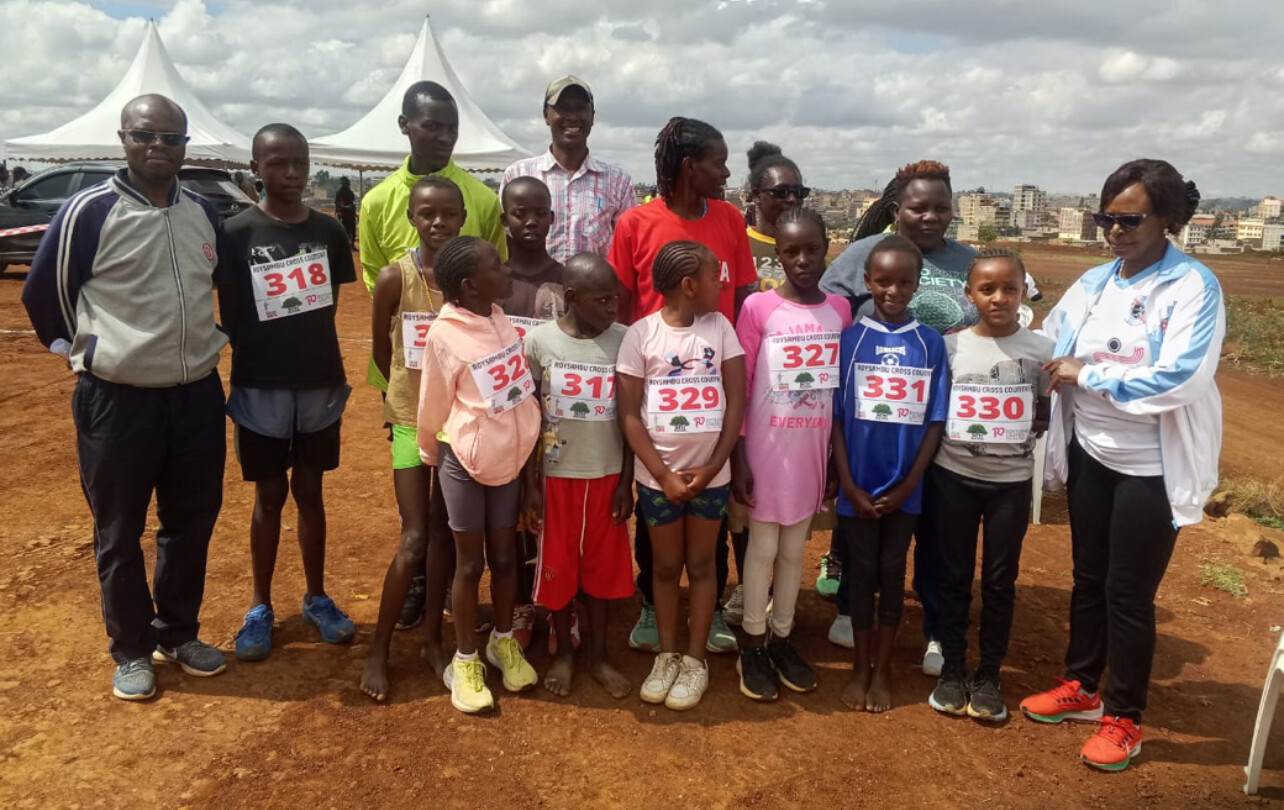
Among her protégés are sisters Florence Wangui (13) and Margaret Wanja (11), whose performances have already drawn national attention. The two recently triumphed in Bob’s One Mile Children’s Race, an initiative created by Bob Anderson to support emerging young runners. Alongside the annual Double Road Race, Bob’s One Mile has become a vital platform for discovering and nurturing athletic talent at the youth level.
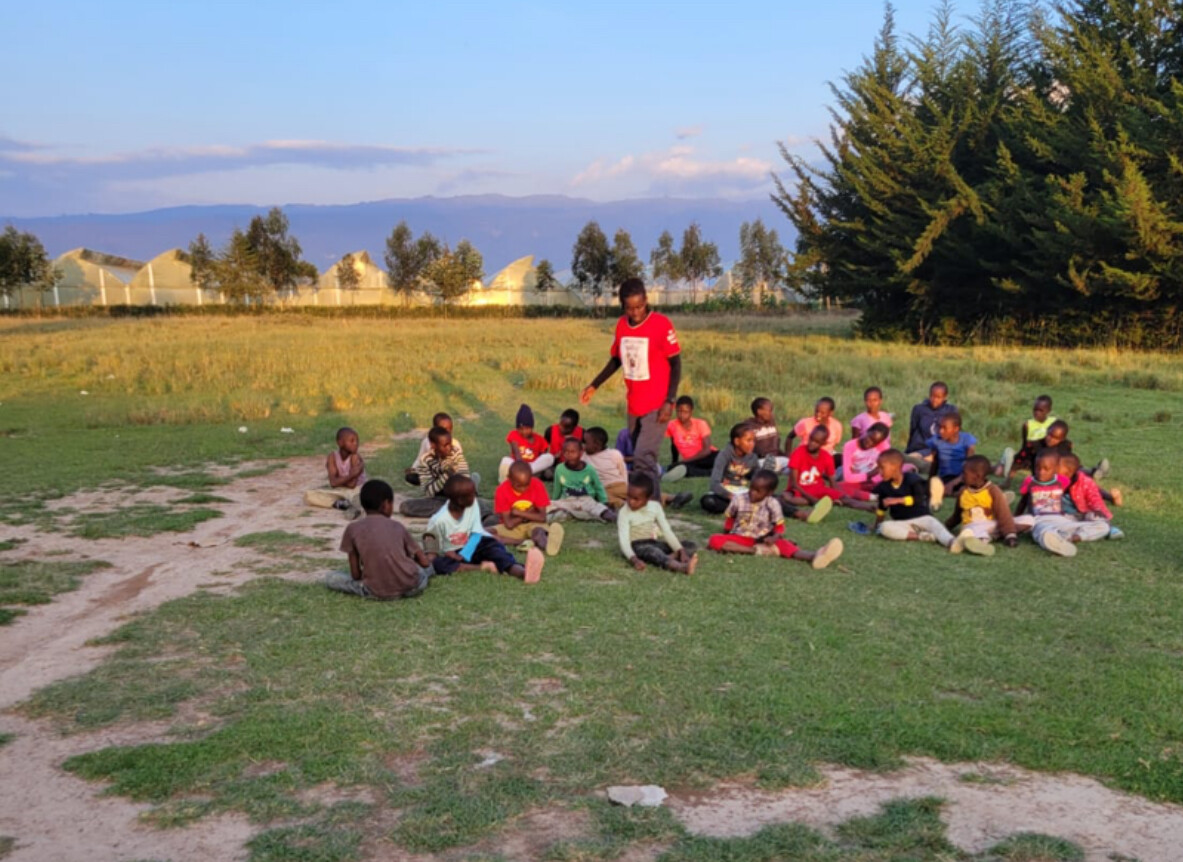
Florence and Margaret continued their winning streak by capturing titles at the Roy Sambu United Environment Cross Country Run in Nairobi, confirming their rising status among Kenya’s promising young athletes.
Lucy has already registered her full team for Chepsaita: Florence Wangui, Margaret Wanja, Godfrey Kahora (19), Ann Wanjiku (16), Tabitha Wanjiru (15), Tashian Wangari (8), and Alisha Njoki (9). Many of these young athletes come from humble backgrounds, yet through Lucy’s mentorship—and the support of programs like KATA and Bob Anderson’s initiatives—they are gaining both guidance and opportunity to grow in sport and in education.
Reflecting on her journey, Lucy said:
“I would like to sincerely thank Bob for the wonderful opportunity he has given me through KATA. Being part of this program has truly empowered me as a farmer and a mentor, and I am grateful for the trust and support that has been shown to me. With KATA’s guidance, I look forward to achieving even greater results and continuing to contribute to the growth of our community. At the same time, I am preparing our young athletes for a great race—the upcoming Chepsaita Cross Country Gold Label event. I’m excited to nurture and guide the next generation, and I believe their participation in such a prestigious event will inspire them to reach new heights.”
The Great Chepsaita Cross Country Run, recognized internationally as a Gold Label event, gives young athletes the chance to compete alongside elite runners—learning lessons in discipline, training, and sportsmanship that will shape their futures.
For Lucy and her team, the event represents far more than a race. It’s a platform where talent meets education, helping mold a generation of athletes who can thrive in both athletics and life.
KATA’s framework offers this same opportunity to coaches across Kenya, empowering them to identify young runners in their communities, register them in programs like Bob’s One Mile, and access mentorship and resources that foster both athletic and academic growth.
Lucy encourages other coaches to join the effort:
“There is talent everywhere, and KATA gives us a way to find it, guide it, and give children the opportunities they deserve. With more coaches participating, we can build a network of mentorship that reaches every county and ensures no gifted child goes unnoticed.”
As December 6 approaches, Lucy’s young athletes stand as a testament to the power of community-based mentorship. From the rolling hills of Nyandarua to the Gold Label course at Chepsaita, these children embody the resilience, dedication, and promise that programs like KATA and Bob’s One Mile are designed to nurture. Their journey shows that with the right guidance and opportunity, Kenya’s next generation of runners can achieve greatness—on the course and beyond.
by Robert Kibet
Login to leave a comment
From Potatoes to Personal Bests: How Amos Chirchir Is Growing Athletes and a Future in Sachang’wan
In the highland village of Sachang’wan in Molo, Nakuru County, the land rises boldly toward the sky. The area sits on the edge of the dramatic Rift Valley escarpment, overlooking the vast Menengai Crater — Africa’s second-largest volcanic caldera — its silent ridges brooding in the morning mist.
Behind it, the rolling hills of Molo stretch endlessly, stitched with neat rows of potato farms that define the region’s identity. To the south lies Salgaa, a town better known for its flower farms, where long greenhouse tunnels shimmer like silver ribbons across the plains. Beyond this agricultural heartland, winding dirt roads climb toward Sachang’wan — where another kind of farming is taking root: the farming of athletic talent.
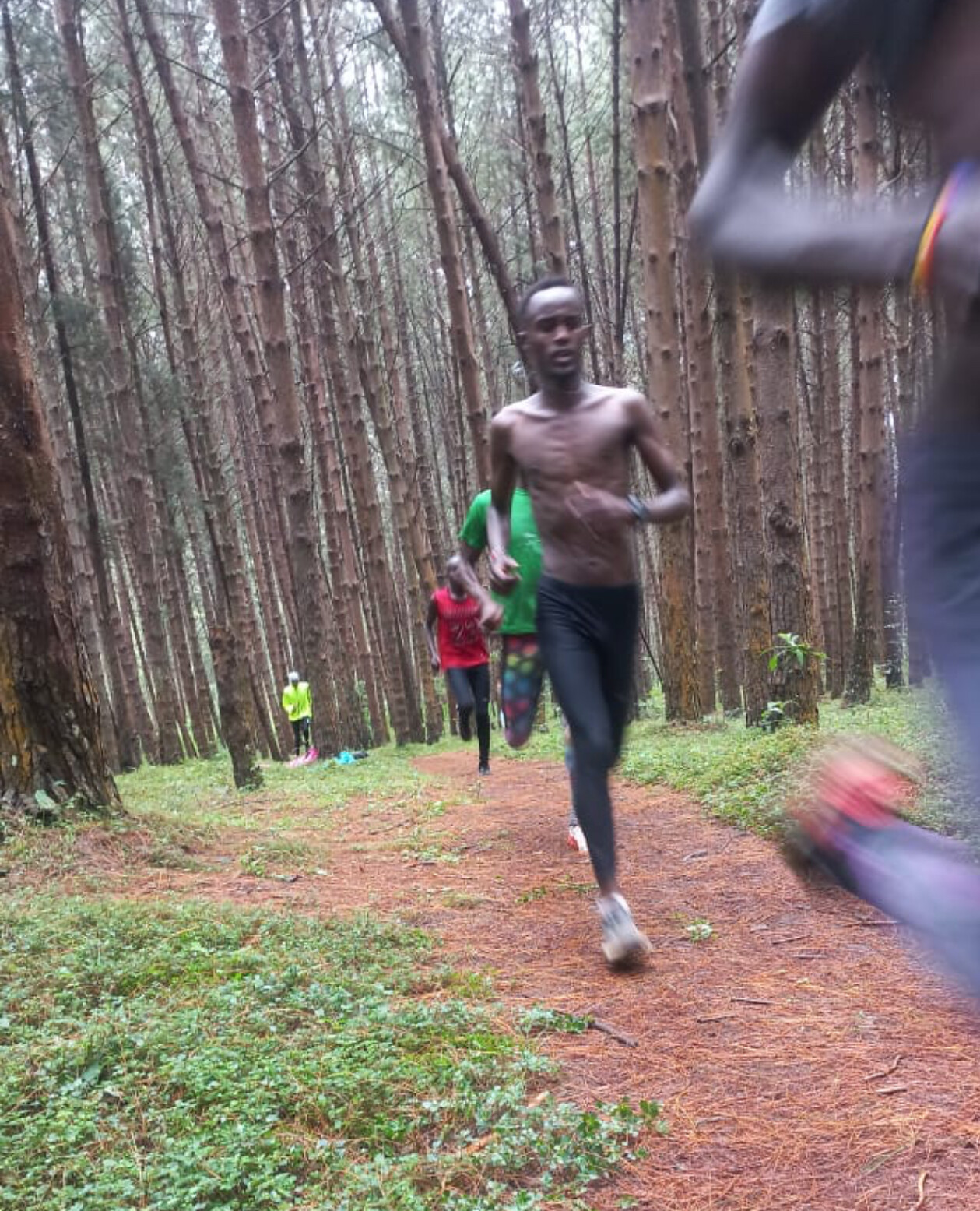
Here, where the air is thin and crisp, mornings begin before sunrise. Frost melts from the grass as a small group of determined athletes powers up a steep incline, their breath visible in the cold air. Leading them is 27-year-old Amos Kibet Chirchir, stopwatch in hand, eyes sharp with focus.
To an outsider, he might look like any other coach on a country road. But to his athletes — and to the growing Kenyan Athletics Training Academy (KATA) movement — Amos represents something much bigger: a new generation of homegrown leaders cultivating both champions and sustainability.
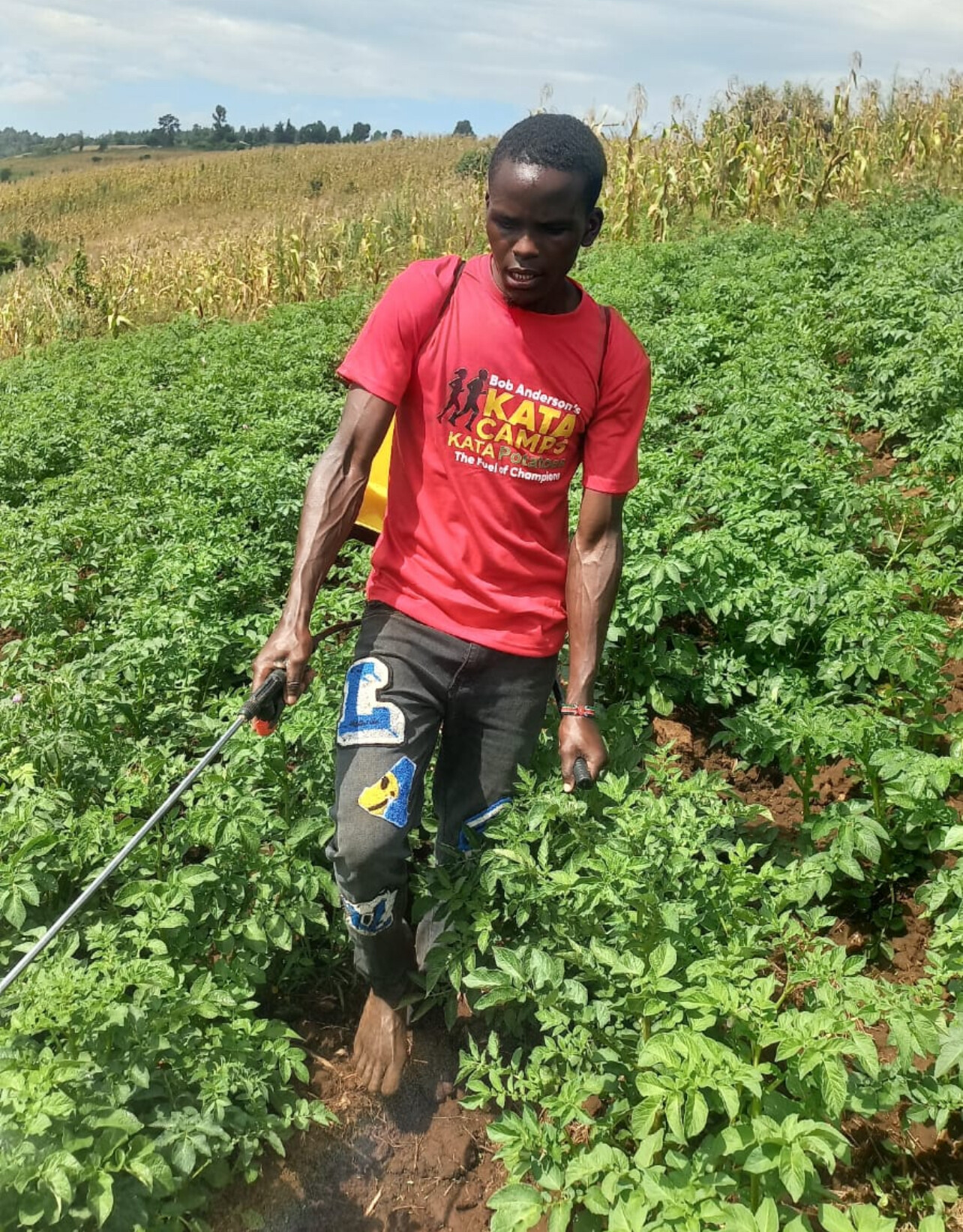
The Making of a Leader
Amos, the fifth-born in a family of eight, grew up in the cold, fertile highlands of Molo, raised by farming parents who taught him the value of hard work. Athletics runs deep in his family — his father was a 400m hurdler in the 1970s, competing when Kenyan track was just finding its rhythm.

“I didn’t just choose running,” Amos says with a smile. “Running found me.”
After excelling in local school competitions, Amos nearly saw his running dream fade — until June 2022, when he earned a place at KATA Thika, founded by American running innovator Bob Anderson, the visionary behind Runner’s World magazine.
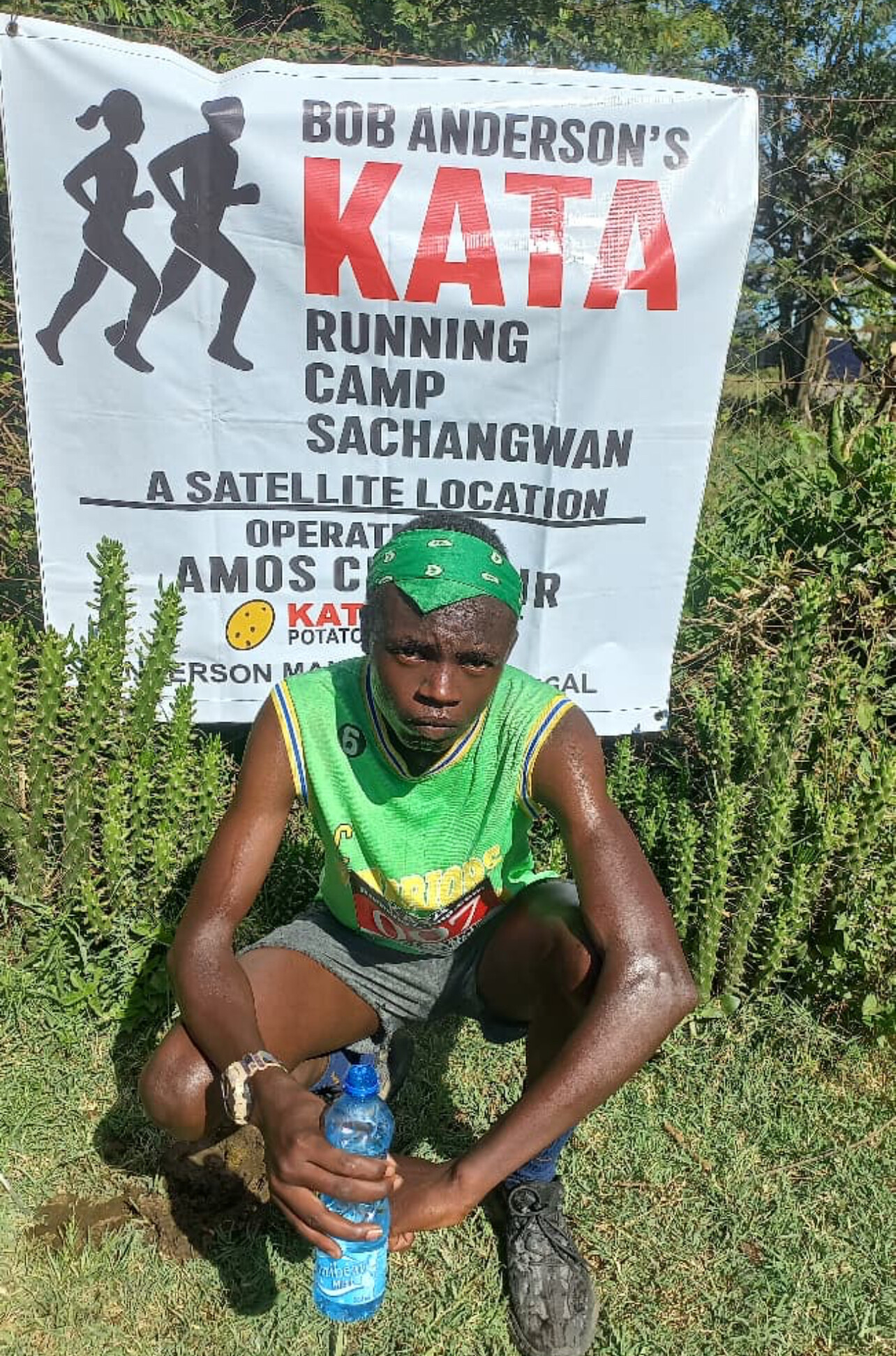
“That changed everything,” he recalls. “For the first time, I could train without worrying about daily survival. KATA didn’t just build me as an athlete — it prepared me to lead.”
Building a High-Altitude Training Hub

When Anderson announced plans to expand KATA through athlete-led satellite camps, Amos seized the opportunity. He returned home and launched KATA Sachang’wan Camp with just five athletes — three men and two women. Today, the camp has grown to eight committed runners, with more young talents eager to join.
The camp sits at an altitude of 2,400 meters, ideal for endurance training. For faster sessions, they descend to 1,800 meters, creating a natural high-low altitude system similar to what world-class runners use in Iten, Kaptagat, and Eldoret.
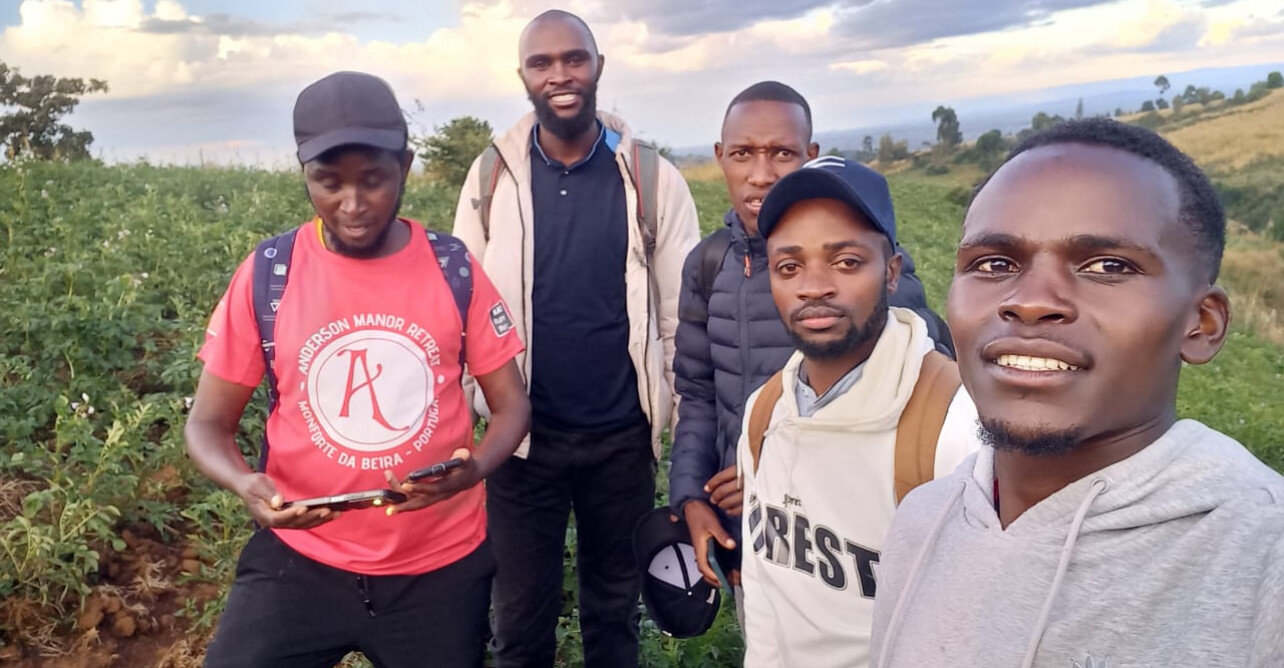
Already, results are emerging:
• Weldon Kibet Lang’at clocked 30:36 (10K) and 14:55 (5K) at the Double Road Race before improving to 30:16 in the October 15 time trials.
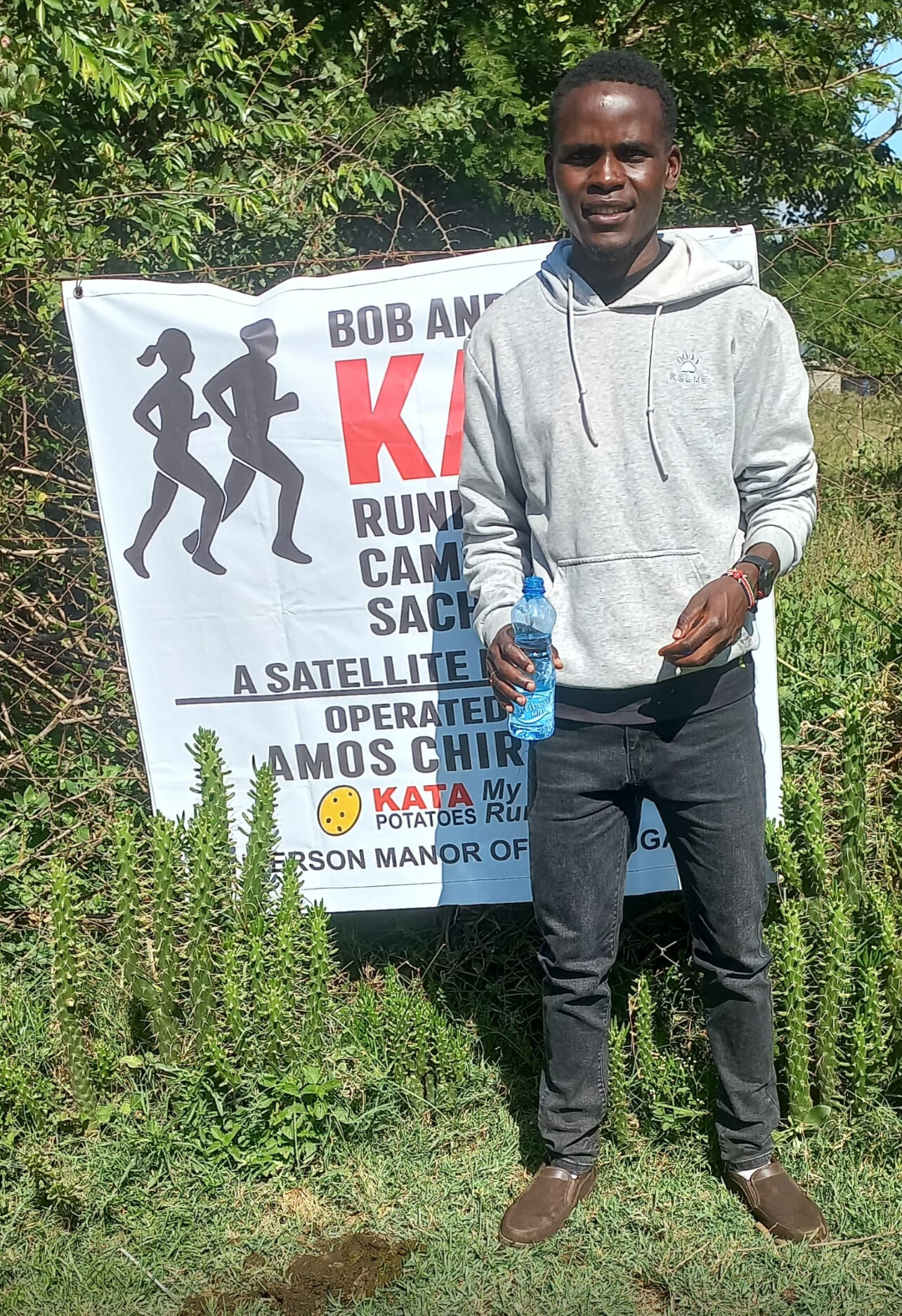
• Elizabeth Wambui, who joined just two months ago, cut her 5K time from 19:00 to 17:35 at the same event.
Amos himself remains in strong competitive shape, with personal bests of 30:51 (10K) and 14:32 (5K).
“I want to build champions — not just athletes who run fast, but athletes who think beyond medals,” he says.
Farming Hope: The KATA Potato Project
Alongside athletics, the Sachang’wan camp thrives on another discipline — agricultural sustainability. Inspired by Bob Anderson’s belief in empowering athletes for life beyond competition, Amos integrated potato farming into his training model.
He began with two acres of KATA potatoes, a move that initially drew laughter from locals.
“At first, people thought I was crazy,” he recalls. “They said farming was a step backward for an athlete. Now they’re copying me.”
Today, the farm helps feed the athletes, generates income for camp operations, and inspires local farmers — many now shifting from maize to potatoes after seeing his success.
“Athletes must think about life after running,” Amos says. “This program lets us build something real, not just chase medals.”
Training Champions, Growing Futures
With schools now closed, Amos plans to recruit junior athletes from nearby villages — guiding them early and keeping them away from idleness and drugs.
“Talent is going to waste in villages like ours because nobody guides young runners. I want to change that,” he says.
His long-term dream is to build dormitories, expand training facilities, and turn KATA Sachang’wan into a full-fledged center of excellence — powered by athletics and farming.
“Bob Anderson’s Vision Is Working”
Amos believes that KATA is redefining the future of Kenyan athletics.
“This is more than running,” he says. “Bob Anderson’s program teaches us responsibility, teamwork, leadership, and self-reliance. We’re not waiting for sponsors — we’re building ourselves.”
From the cold ridges of Sachang’wan overlooking Menengai Crater, a quiet revolution is growing — one built on sweat, soil, and belief. Here, potatoes fuel champions, and running fuels dreams.
And at the heart of it all stands a young leader — stopwatch in one hand, hoe in the other — cultivating both athletes and a future for Kenya.
by Robert Kibet
Login to leave a comment
Chasing New York: What to Watch at the 2025 TCS New York City Marathon
Every November, the streets of New York City transform. Five boroughs become a stage. Dreams meet asphalt.
The 2025 TCS New York City Marathon is fast approaching — and for runners, coaches, and fans alike, it remains one of the most electric events on the global running calendar.
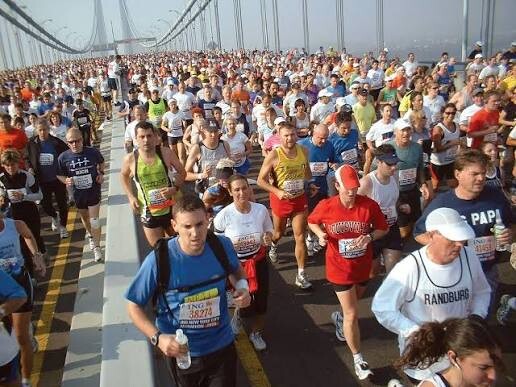
The Big Picture
• Date: Sunday, November 2, 2025
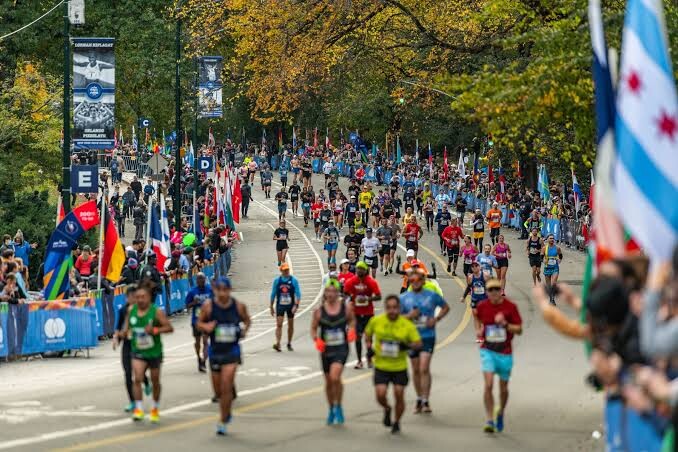
• Field size: More than 55,000 runners representing over 130 nations will take on the 26.2-mile journey from Staten Island to Central Park.
• Defending champions: Abdi Nageeye (Netherlands) and Sheila Chepkirui (Kenya) return to defend their crowns.
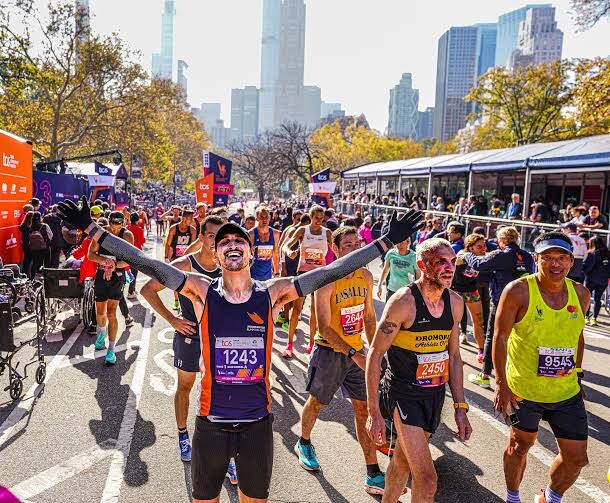
• Debut stars: Marathon legend Eliud Kipchoge and Olympic champion Sifan Hassan will make their long-awaited New York debuts — a storyline that has the running world buzzing.
• Classic route: The course again threads through all five boroughs, starting at Fort Wadsworth on Staten Island, crossing the Verrazzano-Narrows Bridge, and finishing in Central Park.
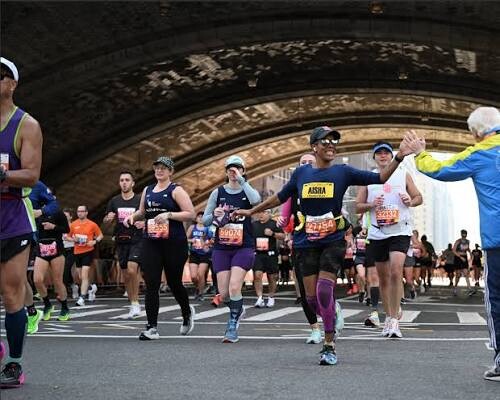
• Sustainability focus: Organizers at New York Road Runners (NYRR) continue to expand environmental initiatives, including recyclable aluminum water bottles and reduced single-use plastics.
Course Records
• Men’s Record: 2:04:58 – Tamirat Tola (2023)
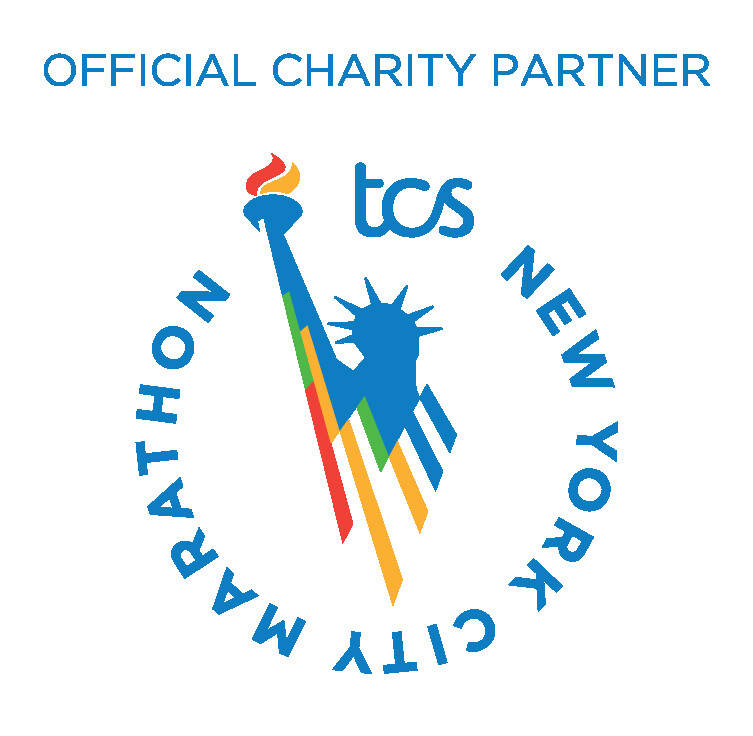
• Women’s Record: 2:22:31 – Margaret Okayo (2003)
Both marks remain tough to challenge on New York’s rolling, bridge-laden course — but with Kipchoge, Chebet, and Nageeye in the men’s field, and Hassan, Obiri, and Lokedi among the women, the potential for history is very real.
Men’s Elite Highlights
• Eliud Kipchoge (Kenya) – two-time Olympic champion, 2:01:09 PB, running NYC for the first time.
• Abdi Nageeye (Netherlands) – defending champion and Olympic silver medalist.
• Evans Chebet (Kenya) – two-time Boston Marathon champion.
• Benson Kipruto (Kenya) – Chicago 2022 winner.
• Albert Korir (Kenya) – former NYC champion.
• Joe Klecker (USA) – U.S. Olympian making his marathon debut.
• Hillary Bor (USA) – U.S. steeplechase champion transitioning to the roads.
• Charles Hicks (USA) – NCAA cross-country champion now turning professional.
Women’s Elite Highlights
• Sifan Hassan (Netherlands) – Olympic champion, winner in London (2023) and Chicago (2024).
• Hellen Obiri (Kenya) – Boston 2023 and NYC 2023 champion.
• Sharon Lokedi (Kenya) – NYC 2022 winner, still a local favorite.
• Sheila Chepkirui (Kenya) – defending NYC champion.
• Emily Sisson (USA) – current American marathon record holder (2:18:29).
• Molly Seidel (USA) – Tokyo Olympic bronze medalist.
• Fiona O’Keeffe (USA) – 2024 U.S. Olympic Trials marathon champion.
• Susanna Sullivan (USA) – Top-10 finisher at Boston 2023, consistent national contender.
This year’s field features 49 Olympians and Paralympians, nine past major marathon winners, and 16 medalists from Olympic or World Championship events — arguably the deepest lineup in New York history.
What Makes New York Unique (and Brutal)
• Rolling terrain and bridges: The Verrazzano, Pulaski, Queensboro, and Willis bridges each sap rhythm and energy.
• Crowd power: Two million spectators line the course, creating unmatched atmosphere — and volume.
• Late-season unpredictability: Weather can swing from cold drizzle to crisp fall perfection.
• Tactical racing: With its uneven pacing demands, NYC rewards strategy over pure speed.
Storylines to Watch
• Kipchoge’s debut: The marathon GOAT takes on the sport’s loudest stage. Can he master New York’s relentless hills and twists?
• Hassan’s bold quest: Coming off London and Chicago wins, can she complete the trifecta in her first NYC appearance?
• Lokedi vs. Obiri: The Kenyan duo continue their fierce rivalry on familiar ground.
• Nageeye’s defense: Last year’s champion faces his toughest test yet with Chebet and Kipruto in pursuit.
• American charge: Sisson, Seidel, O’Keeffe, and Sullivan lead the most complete U.S. women’s team in years — while Klecker and Bor look to ignite the next chapter for American men’s marathoning.
• Record watch: Tola’s 2:04:58 may finally be tested, and Okayo’s 22-year-old mark could fall if conditions align.
For Runners and Coaches
• Train the bridges. Practice long tempo runs that mimic New York’s undulating rhythm.
• Respect the pace. The roar of Brooklyn can trick even the best into going out too fast.
• Fuel flexibly. NYRR’s eco-station setup may differ from other majors — plan accordingly.
• Stay mentally sharp. The final 10 K through Central Park can break anyone unprepared for its hills.
• Layer smartly. Start slightly chilled; the crowds and effort will warm you fast.
The Bottom Line
The 2025 TCS New York City Marathon blends star power, unpredictability, and history like no other race. From Kipchoge’s long-awaited debut to the fiercest women’s field ever assembled in New York, every mile promises drama.
For runners chasing personal bests, and for millions of spectators lining the streets or watching from afar, November 2 will again remind us why this marathon is more than a race — it’s a celebration of endurance, spirit, and the human story that unfolds across 26.2 miles of the world’s greatest city.
by Boris Baron
Login to leave a comment
TCS New York City Marathon
The first New York City Marathon, organized in 1970 by Fred Lebow and Vince Chiappetta, was held entirely in Central Park. Of 127 entrants, only 55 men finished; the sole female entrant dropped out due to illness. Winners were given inexpensive wristwatches and recycled baseball and bowling trophies. The entry fee was $1 and the total event budget...
more...The fifth annual KATA Double Road Race in the making
The small town of Thika is alive with excitement today. Athletes, coaches, families, and even farmers have gathered at the Kenya Athletics Training Academy (KATA) grounds for the 5th edition of the Double Road Race—a unique competition that, in just five years, has become a symbol of innovation in Kenya’s running culture.
Unlike conventional races, the Double Road Race challenges athletes to complete two segments with a rest break in between. Final standings are determined by combined times. It’s a test of speed, endurance, and resilience that forces runners to rethink race strategy and dig deeper than ever before.
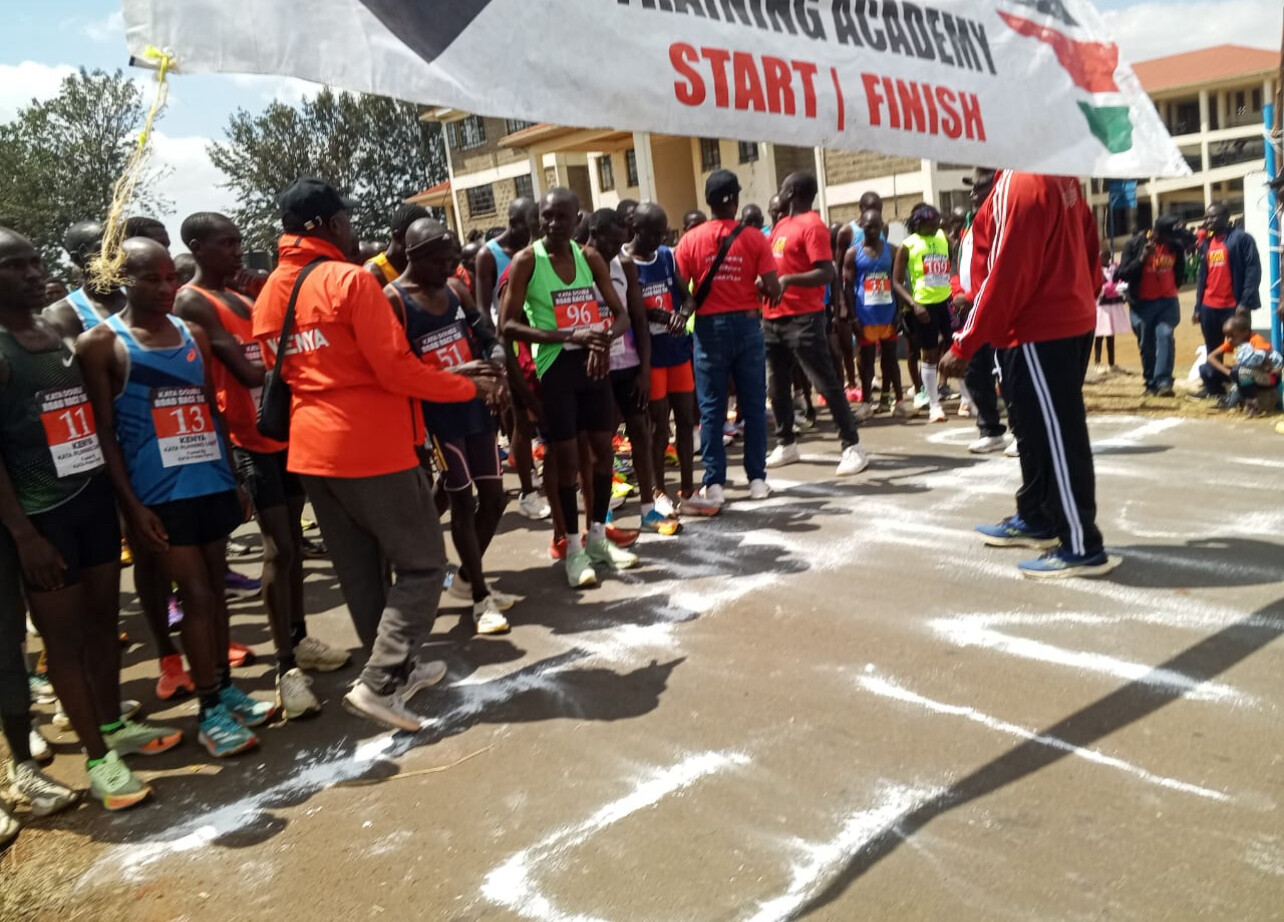
The Birth of a Vision
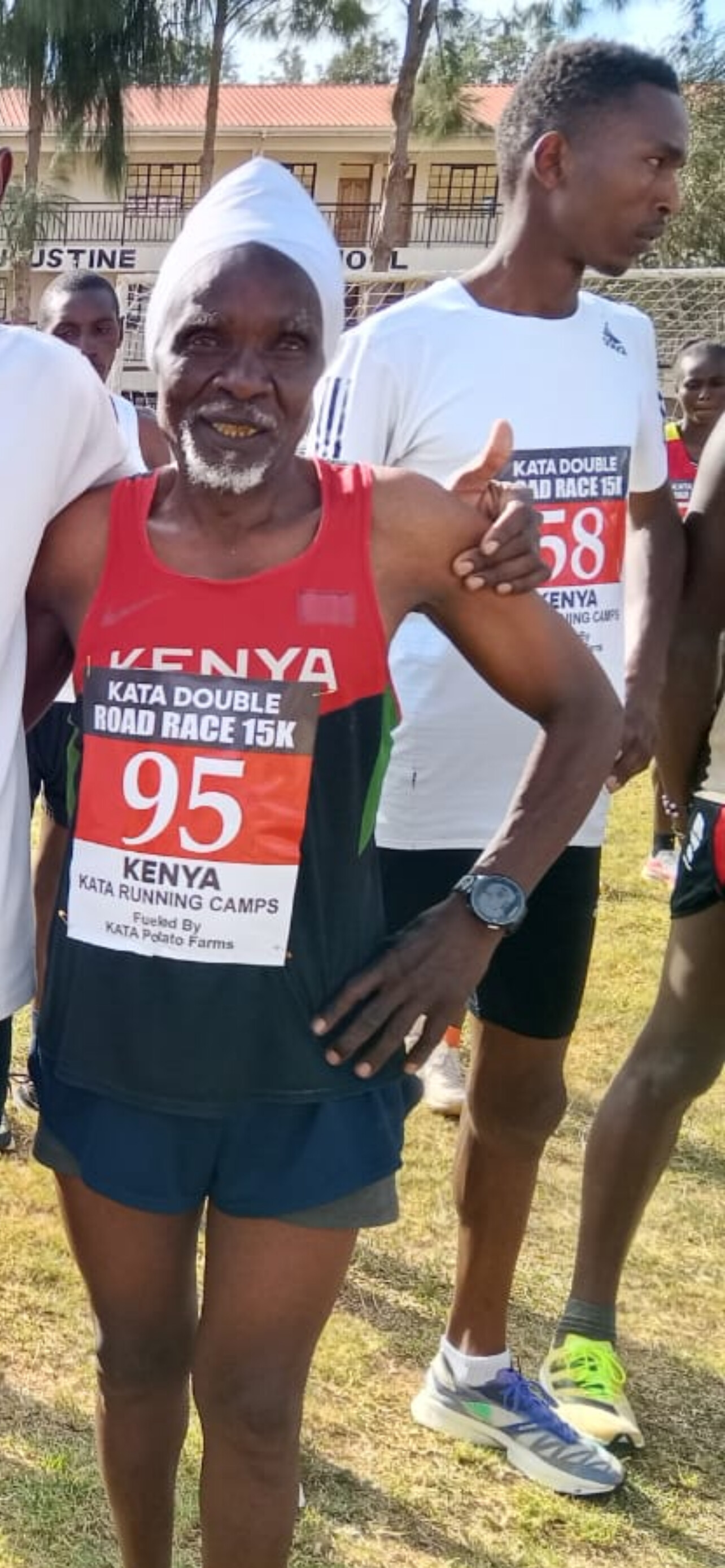
The idea for KATA was born thousands of miles away. Bob Anderson, American publisher and lifelong runner best known as the founder of Runner’s World magazine, was inspired by the immense talent in Kenya but also saw structural gaps that held many athletes back.
Anderson’s vision was radical: create a training academy in Kenya that produced champions while also empowering communities. From this dream, KATA was founded in Thika—and one of its cornerstones was introducing the Double Road Race format to Kenyan soil.
Enter Jimmy Muindi: From Star to Mentor
No story of KATA is complete without Jimmy Muindi. The six-time Houston Marathon champion and former coach of world record holder Patrick Makau embodies the blend of experience and inspiration KATA thrives on.
From steeplechase junior champion at the 1992 World Juniors in Seoul to victories in Rotterdam and Honolulu, Muindi’s career reads like a running epic. As a coach, his highest moment came when Makau broke the marathon world record.
“The double tests body, mind, and spirit,” Muindi says. “It forces athletes to dig deep in ways they are not used to. That is how champions are made.”
Coach John Matheri’s Guiding Hand
While Muindi brought international pedigree, respected Kenyan coach John Matheri rooted the project locally. Known for discovering village talent and molding disciplined athletes, Matheri has helped weave community runners into the Double Road Race fabric.
“Returning for the second run after your body is tired teaches resilience,” Matheri explains. “That is what separates ordinary runners from great champions.”
His philosophy has given countless young runners not only a chance to compete, but also recognition and hope.
The Power of Exposure
One of the Double Road Race’s most innovative features is its commitment to visibility. Every runner’s time—first or last—is posted on the official website. For Kenyan athletes who rarely enjoy digital exposure, this is game-changing.
“Even if you are the last, your time is posted,” Muindi emphasizes. “Managers and sponsors around the world can see it. That exposure is priceless.”
In an age where social media visibility can launch careers, Anderson’s decision to democratize exposure has made the Double Road Race a vital platform.
A Vibrant Turnout in Thika
This year’s participation proves the format’s momentum. Squads from across the region have confirmed attendance, including Kata 1, 3, 4, 7, 9, 10, 13, 14, 15, 16 (with an impressive 16 runners), 17, 18, 20, 23, 24, 25, 29, 30, 31, and 32.
Adding further depth, farmers’ groups F20, F24, and F31 are also present—evidence of KATA’s reach beyond athletics and into the heart of Kenyan communities.
As one organizer shared in a WhatsApp update: “What an amazing turnout we are going to have.”
Beyond Competition: Building a Culture
For runners, today is more than a race. It’s a chance to test themselves, mark progress, and belong to something larger. For KATA, it’s proof of concept: grassroots blending with elite, communities meeting global culture, and tradition reimagined through innovation.
The Double Road Race, once a bold experiment by an American visionary, has now become part of Kenya’s running story.
Looking Ahead
Five editions in, the Double Road Race is no longer a novelty—it’s becoming an institution. Under the Thika sun, young runners, seasoned coaches, and cheering farmers weave together a tapestry of resilience and hope.
Anderson’s ambition, supported by Kenyan mentors like Muindi and Matheri, is for KATA to nurture athletes from primary schools to the world stage. With support from federations, sponsors, and government, the academy could become a model far beyond Kenya.
For now, as the second leg unfolds, Thika celebrates not just a race but the journey of an idea that dared to be different. Kenya’s running legacy isn’t only about medals—it’s about reimagining what running can be, and building a future where every stride counts.
Photo Gallery: https://kata.ke/gallery.php?g=1
by Robert kibet
Login to leave a comment
Running Beyond Limits: How KATA Kapkatet Camp Is Shaping the Future of Kenyan Athletics
In the heart of Kericho County, where rolling tea estates stretch endlessly toward the horizon, the rhythmic sound of pounding feet cuts through the crisp morning air. At 5:30 a.m., long before the first rays of sunlight pierce the mist, a group of young athletes from the KATA Kapkatet Camp gathers for prayer before setting off on their daily run.
The roads they follow—sometimes smooth tarmac, other times rugged murram winding through the tea fields—have become their open-air classroom. Step by step, they are learning resilience, nurturing hope, and chasing dreams that stretch beyond the Rift Valley.

Stories of Rising Talent
Among them is Andrew Oronyi, a 20-year-old sprinter who once dreamed of being a football star. Discovered by a teacher who recognized his speed, Oronyi shifted to athletics, experimenting with the 100m and 200m before finding his stride in the 400m. He now proudly holds a personal best of 47.57 seconds and has set his sights on breaking the 44-second barrier to secure a place on Kenya’s global championship team.

“Training under KATA has given me hope for a brighter future,” Oronyi says. “Here, I can focus on running while also contributing through manual work in the camp. This programme is helping athletes shine beyond the usual struggles.”
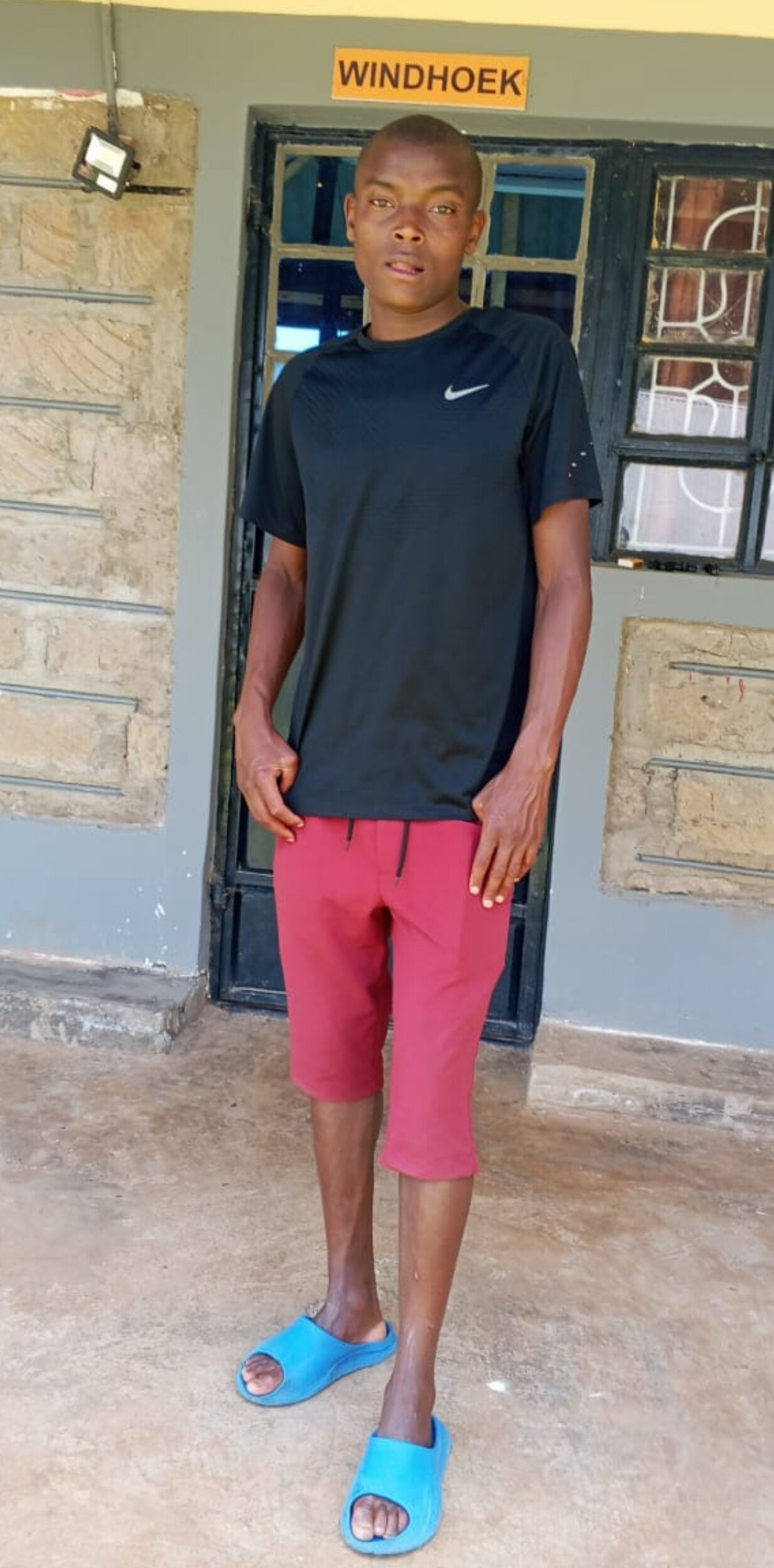
For Victor Kiprotich, just 16 and fresh out of high school in Kuresoi North, the KATA initiative has been transformative. Encouraged by his coach, Christopher Rono, he joined the camp in 2024 after completing Form Four. Specializing in the 1500m, Victor made headlines at the Bomet County Cross Country Championships, finishing second in the junior men’s 8km in 11:26.

“When I ran that race, I realized that with the right support, I can make it in this career,” he reflects. His gratitude is clear: “I thank Bob Anderson for this initiative. It will help camps become stable and sustainable. We usually begin our morning runs at 5:30 a.m. with prayers—it gives us strength and unity.”
Then there is Festus Kemboi, 18, from Chepalal village in Konoin. Introduced to athletics in Class 7, he began with the 5000m and steeplechase before focusing on the 3000m steeplechase and cross country in high school. Recently, he ran his first senior men’s 10km at Bomet, finishing eighth in 31 minutes. “I know I can bring that down to 30 minutes if I stay consistent,” he says. For him, KATA has been more than training: “This programme is a game changer. Many athletes struggle with rent, food, and daily survival. KATA gives us the structure and support to focus purely on running.”
Leadership and Vision
At the center of it all is Coach Christopher Rono, who operates the KATA Kapkatet Camp and sees immense promise in his athletes.
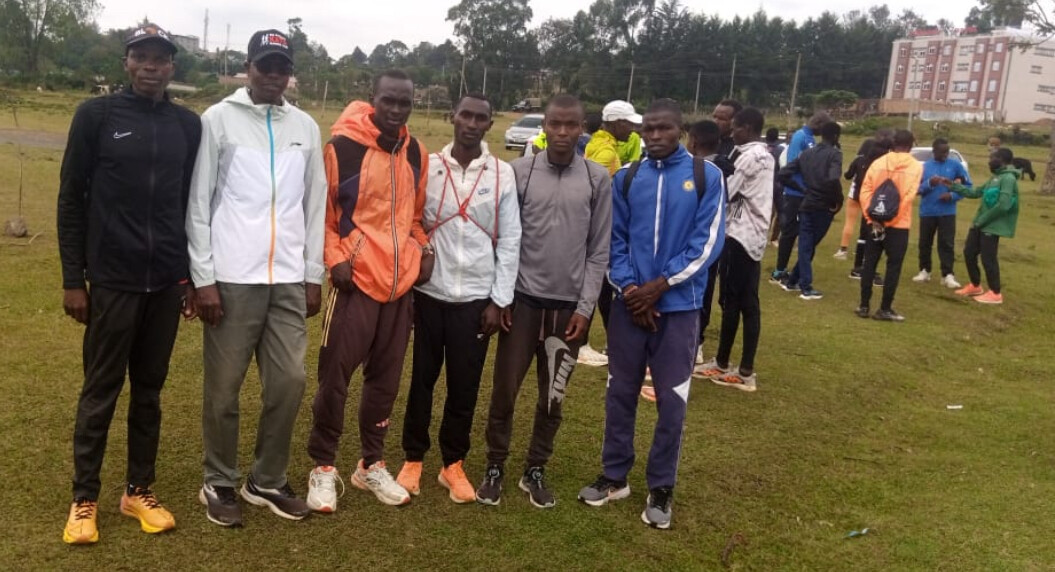
“Kemboi has shown real potential in cross country, while Kiprotich is a young talent with the ability to excel in the 1500m. Oronyi, though a sprinter, could even transition to the 800m in the future. Their determination excites me,” Rono says.
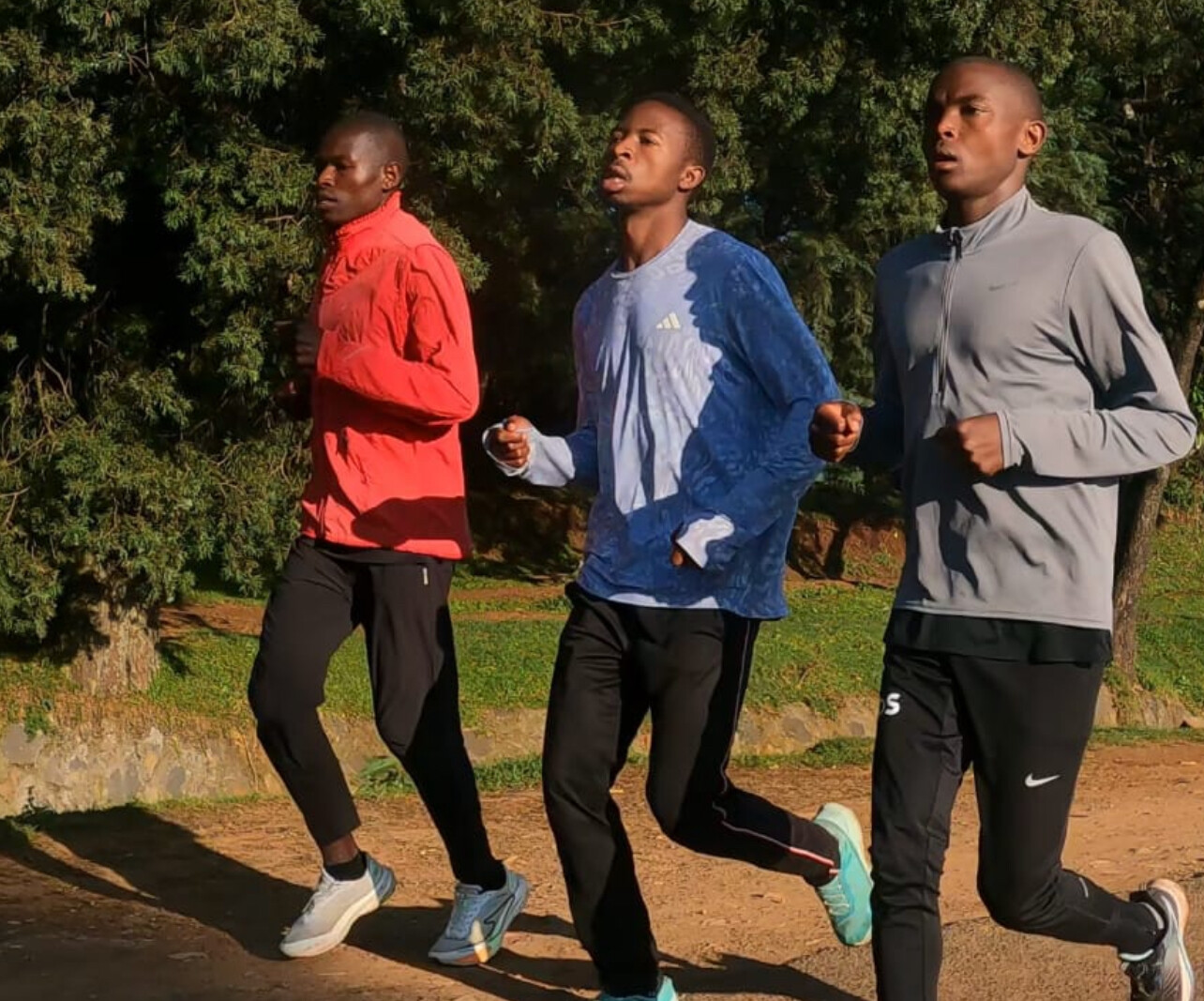
He also highlights Bob Anderson’s vision: “The potato farming project and the Double Road Race are not just creative but sustainable ideas. Athletics Kenya itself has recognized the KATA programme, encouraging camp leaders and support staff to align with it.”
Building More Than Champions
KATA’s message is spreading widely across the Rift Valley. Interest is surging, and several athletes have even begun renting houses near Kapkatet to be part of the training environment. With more than 30 KATA camps now running across Kenya, Bob Anderson’s vision is reshaping athletics management by ensuring athletes are supported both on and off the track.
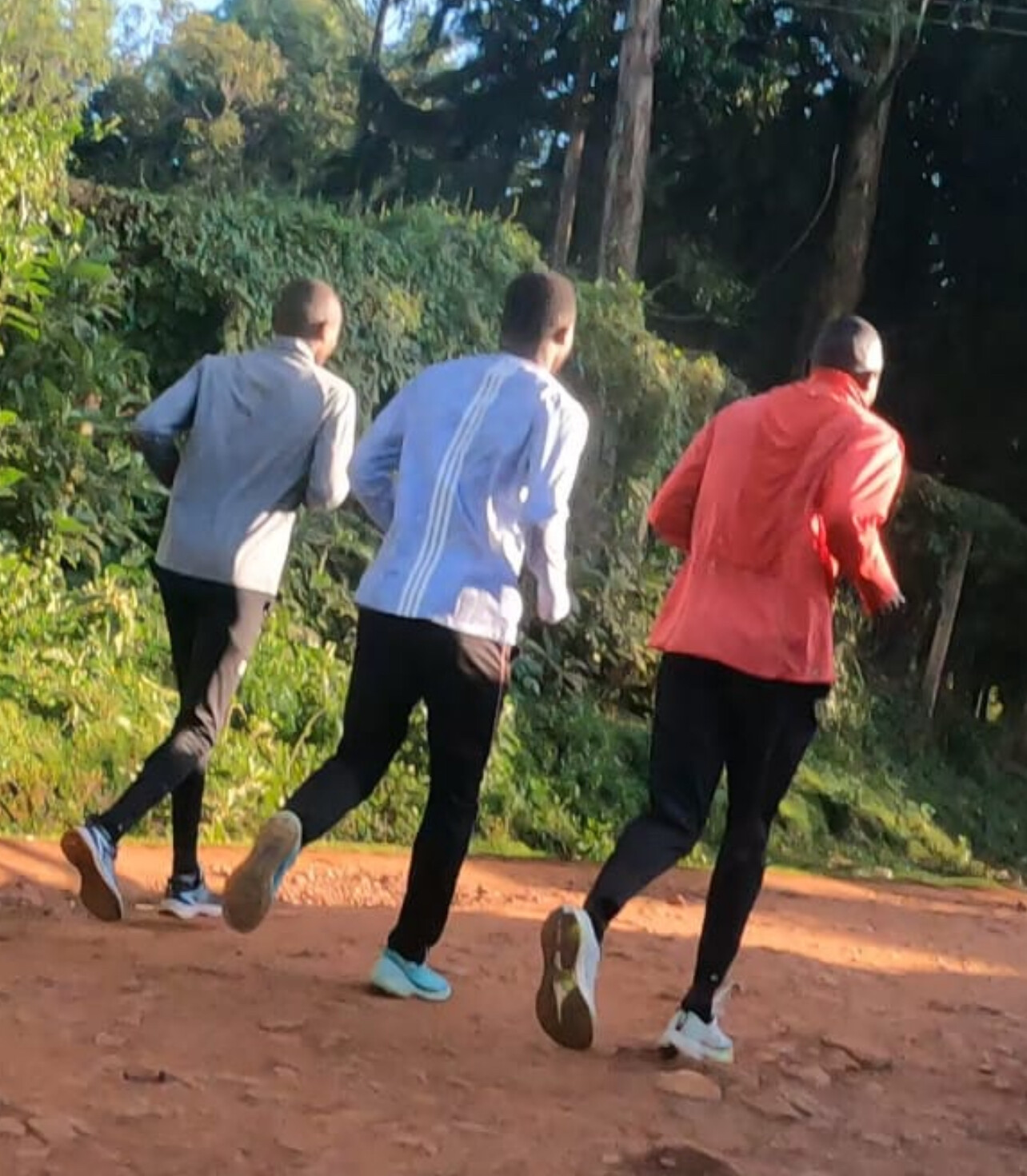
As Coach Rono looks ahead to this year’s Double Road Race, he is confident: “We are ready to deliver, and this edition will be bigger and better.”
But beyond medals and times, the true story is told in Kapkatet’s misty mornings—young athletes running shoulder to shoulder through tea plantations, beginning each day with whispered prayers. This is where Kenya’s next champions are being molded. Here, sport and sustainability walk hand in hand, and hope runs free.
by Robert Kibet
Login to leave a comment
Kimutai Kirui Wins KATA Running Camp 2 Time Trial in Molo
Molo, Kenya – August 13, 2025 — KATA Running Camp 2 in Molo operated by Eric Chepkwony staged an exciting 10km time trial, producing tight battles and strong performances across the field. Timothy Kimutai Kirui emerged as the day’s champion, stopping the clock at 29:05 to secure a convincing win.
Weldon Chepkwony claimed second in 29:17, just edging out Enock Kipgeno, who finished third in 29:55. The top five all broke 31 minutes, highlighting the competitive depth at the camp.
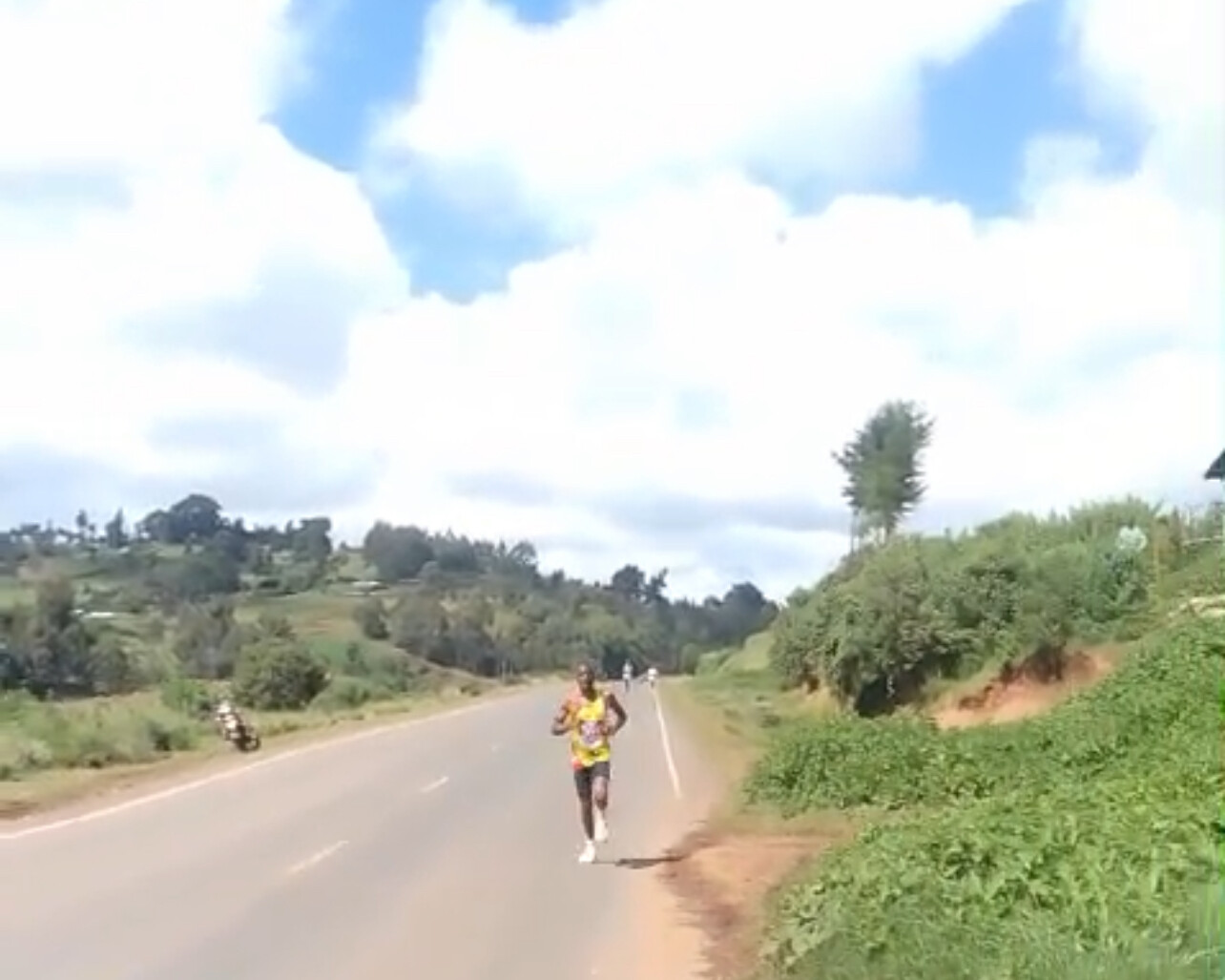
10km Results – Men
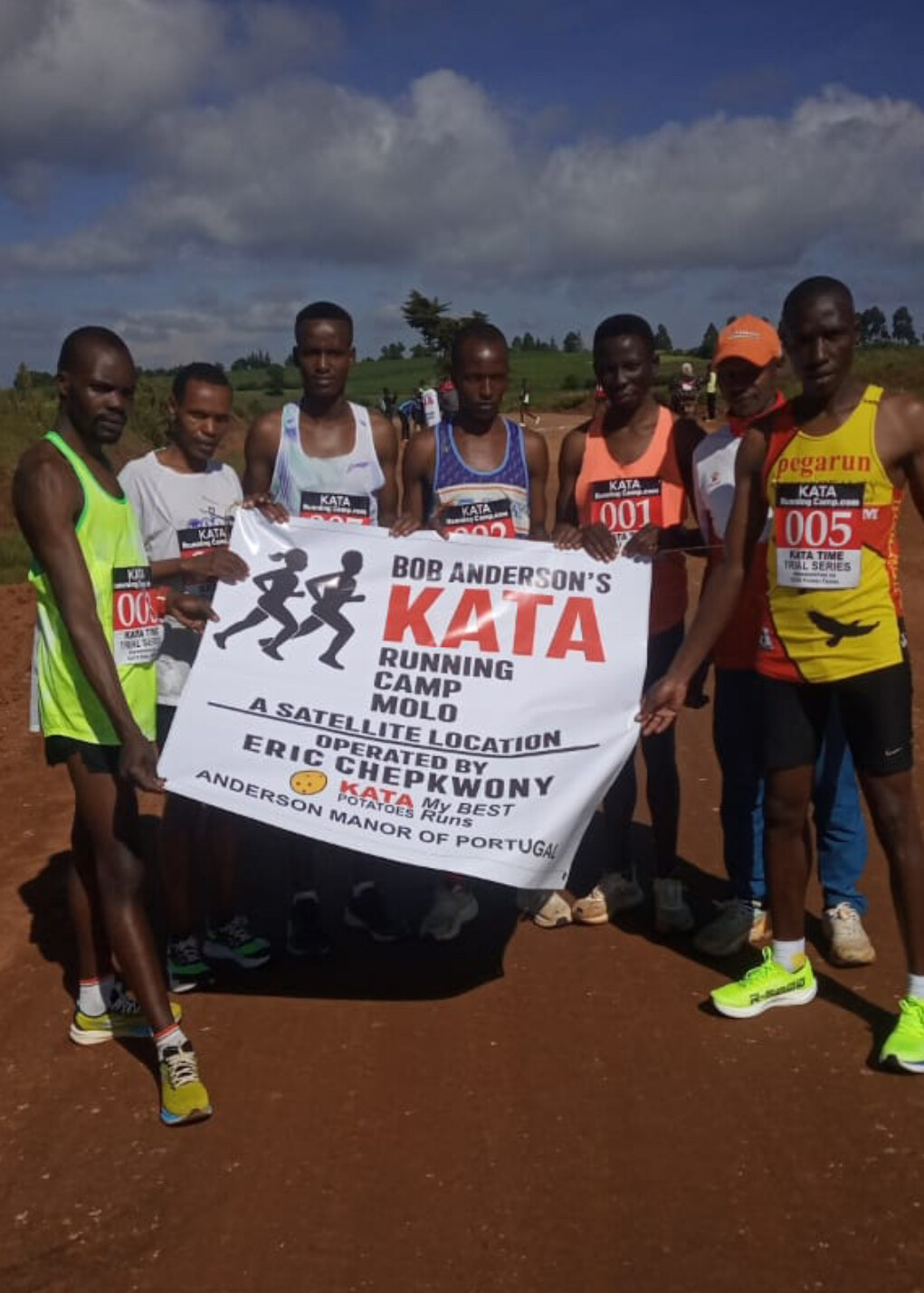
1. Timothy Kimutai Kirui – 29:05 (Bib 004, Age 28)
2. Weldon Chepkwony – 29:17 (Bib 005, Age 31)
3. Enock Kipgeno – 29:55 (Bib 007, Age 22)
4. Nicodemus Kiprono Ngetich – 30:05 (Bib 001, Age 23)
5. Brian Yega – 30:42 (Bib 002, Age 27)
6. Dennis Sang – 32:13 (Bib 003, Age 22)
The camp also ran a 5km trial, where Timothy Kimutai Kirui again led the way, clocking 15:23. He was followed by Enock Kipgeno in 15:44 and Weldon Chepkwony in 16:02.
5km Results – Men
1. Timothy Kimutai Kirui – 15:23 (Bib 004, Age 28)
2. Enock Kipgeno – 15:44 (Bib 007, Age 22)
3. Weldon Chepkwony – 16:02 (Bib 005, Age 31)
4. Nicodemus Kiprono Ngetich – 16:27 (Bib 001, Age 23)
5. Brian Yega – 16:46 (Bib 002, Age 27)
6. Dennis Sang – 17:02 (Bib 003, Age 22)
KATA Running Camp 2 is part of the expanding KATA network, which now includes 30 running camps across Kenya. These regular time trials give athletes the opportunity to sharpen their racing skills, track progress, and prepare for major competitions.
The Molo athletes showed they are on track for even stronger performances in the months ahead.
by Boris Baron
Login to leave a comment
Galen Rupp Set for Comeback at Wharf to Wharf 6-Miler After 1.5-Year Hiatus
Four-time Olympian and two-time Olympic medalist Galen Rupp is officially back on the starting line.
After being sidelined for the past 18 months due to a lingering hip issue, Rupp is set to make his long-awaited return to racing this Sunday at the iconic Wharf to Wharf 6-Mile race in Santa Cruz, California.
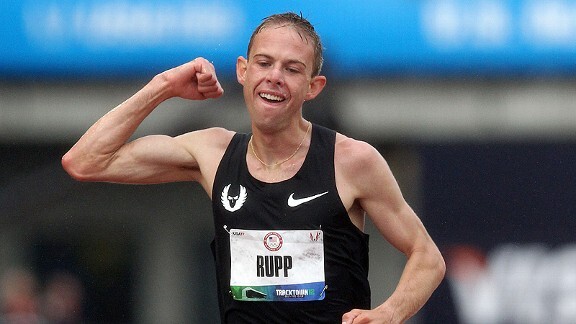
This will be his first race since early 2024—and one that fans and fellow runners alike have been waiting for.
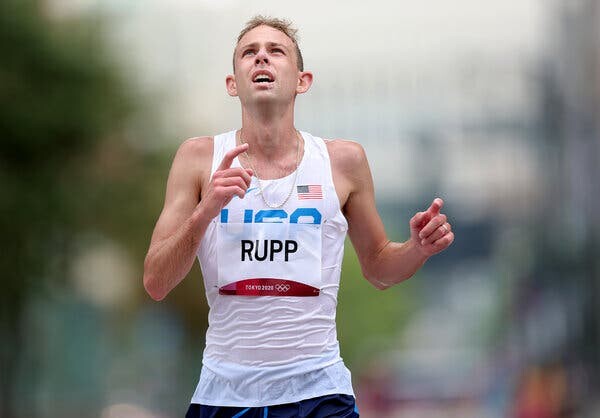
“I’ve missed the rhythm of race day,” Rupp shared earlier this week. “This is just the first step, but I’m excited to be out there again, doing what I love.”

The Wharf to Wharf, a scenic and fast six-mile race from Santa Cruz to Capitola, draws a mix of elite and recreational runners each year. With limited spots and a festive coastal atmosphere, it has long been a summer staple on the West Coast running calendar.
Rupp’s entry was a quiet one, but it didn’t take long for word to spread. The 38-year-old American distance legend hasn’t raced since suffering a setback in his bid to qualify for another Olympic team in early 2024. Ongoing hip complications forced him to the sidelines for rehabilitation and recovery.
Now, with months of solid training behind him and the injury finally in the rearview, he’s ready to test himself in a competitive setting once again.
“We had dinner tonight with Galen,” said Bob Anderson, founder of My Best Runs. “I asked him if he was ready to take the win, and he just gave me that smile that said it all.”
According to Anderson, Rupp’s training has gone well, the hip is no longer an issue, and with favorable weather conditions expected Sunday morning, everything is lining up for a strong showing. “He had a good pasta dinner,” Anderson added. “He’s ready to do it.”
While no one expects a record-breaking performance—Rupp himself cautioned he’s still working back into full form—his participation alone marks a significant moment for American distance running.
Few runners have accomplished as much as Galen Rupp:
• Olympic Silver Medal (10,000m, London 2012)
• Olympic Bronze Medal (Marathon, Rio 2016)
• Multiple U.S. Titles across the 10,000m and marathon
• 2:06:07 personal best in the marathon
His return signals hope that one of America’s greatest distance talents still has more to give.
“He could’ve quietly stepped away,” one local runner said. “But the fact he’s toeing the line in Santa Cruz shows he’s not done yet.”
The race begins at 8:00 am. on Sunday, with Rupp expected to line up alongside a strong field. Whether it’s a win, a top-10, or just crossing the finish line, this race marks an emotional and meaningful return for one of the sport’s most decorated runners.
last photo Galen with Amol and Bob after dinner in Palo Alto the night before his comeback race.
by Boris Baron
Login to leave a comment
He finished 5th clocking 28 minutes flat for six miles. Solid come back! - Bob Anderson 7/31 11:42 am |
Wharf to Wharf
Each year, on the fourth Sunday in July, thousands of runners from across America and around the globe return to Santa Cruz, California for the annual six-mile race to Capitola-by-the-Sea. First run in 1973 by a handful of locals, the Wharf to Wharf Race today enjoys a gourmet reputation in running circles worldwide. Its scenic, seaside setting, perfect weather, and...
more...Amanda Vestri Claims First U.S. Title with Commanding Win at USATF 6 km Championships
Amanda Vestri earned her first national title in dominant fashion on Saturday morning in Canton, Ohio taking a wire-to-wire victory at the USATF 6 km Championships in Canton, Ohio. The event, part of the Women’s 6K Festival, drew some of the top distance talent in the country, but no one could match Vestri’s front-running strength on a challenging, technical course.
Vestri, who finished second at this race in 2023, wasted no time establishing control. Racing in humid conditions with temperatures nearing 80°F, she charged to the front from the gun, pulling a pack of seven through the first mile in 4:53. As the course shifted onto an uneven stretch of brick road, she surged again—clocking another 4:53 for the second mile—and began to break away from the field.
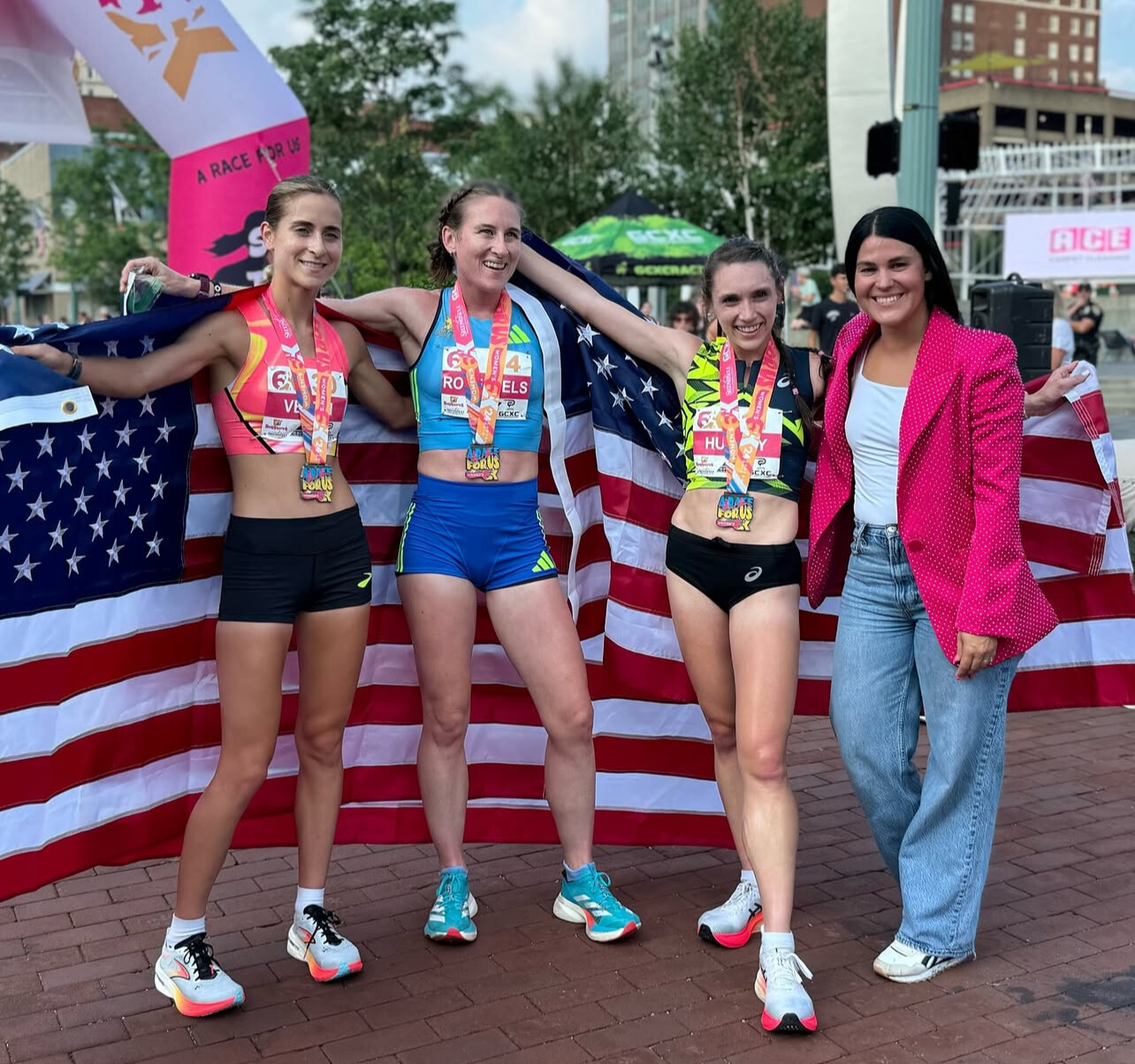
By the time the race reached its longest climb, Vestri’s lead had grown to three seconds over a chase pack that included Annie Frisbie, Fiona O’Keeffe, Molly Born, and Edna Kurgat. Cresting the hill with authority, she extended the gap to seven seconds by the 5K mark—a margin she maintained all the way to the finish line at Centennial Plaza.

“I just kind of wanted to take it from the gun,” said Vestri after the race. “In these shorter races, I’m not really keen to just sit and run 5:15, 5:20. So, I just wanted to take it out. That’s the best way I run.”
Her aggressive strategy paid off, earning her the national title, $6,000 in prize money, and a move into second place in the USATF Running Circuit standings.
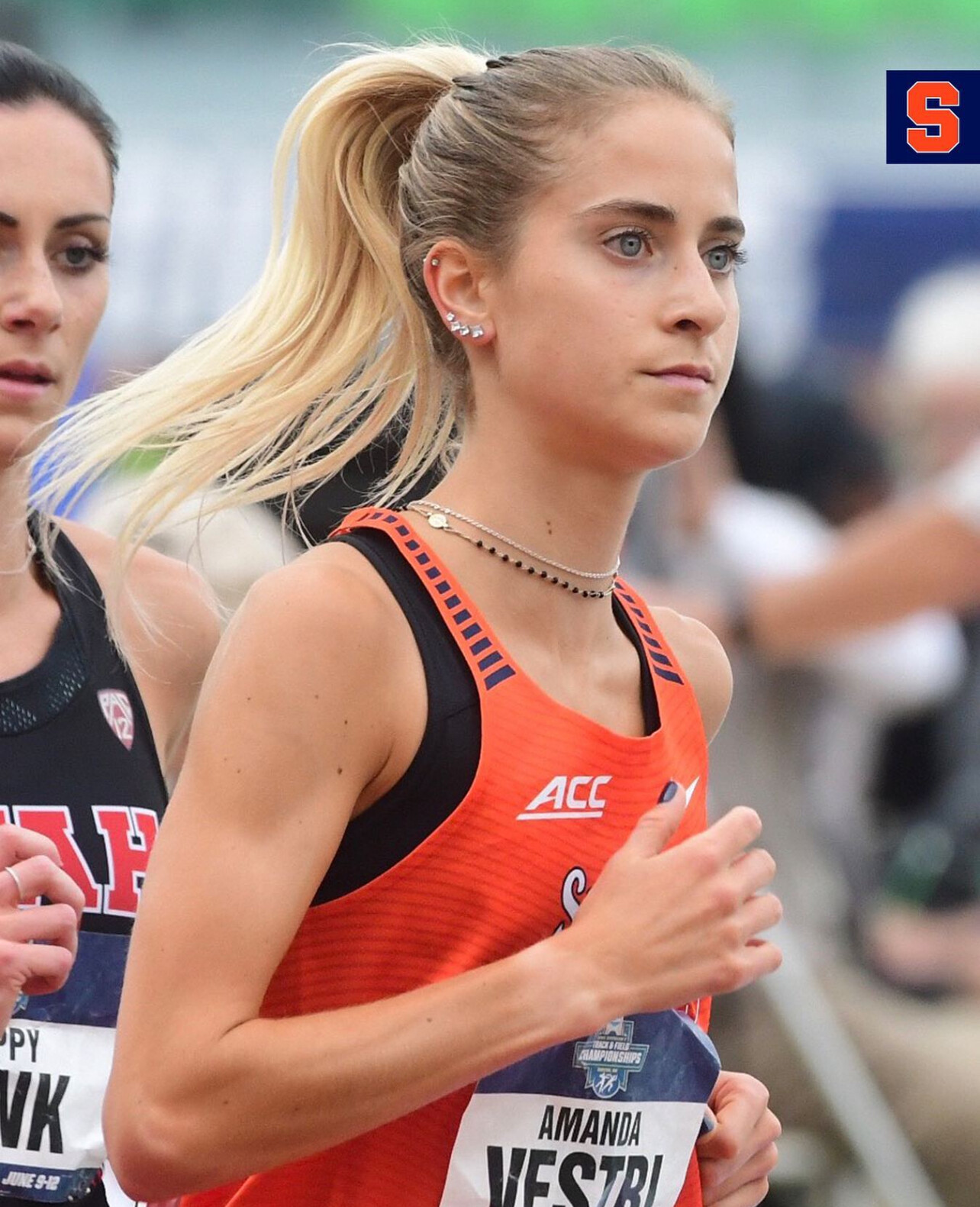
Fierce Finish for Second
The battle for second place came down to the final meters. Annie Frisbie and Olympic 10,000m runner Fiona O’Keeffe ran shoulder-to-shoulder for nearly the entire race before Frisbie edged ahead over the last 400 meters, stopping the clock in 18:36. O’Keeffe finished just two seconds back in 18:38 to round out the podium.
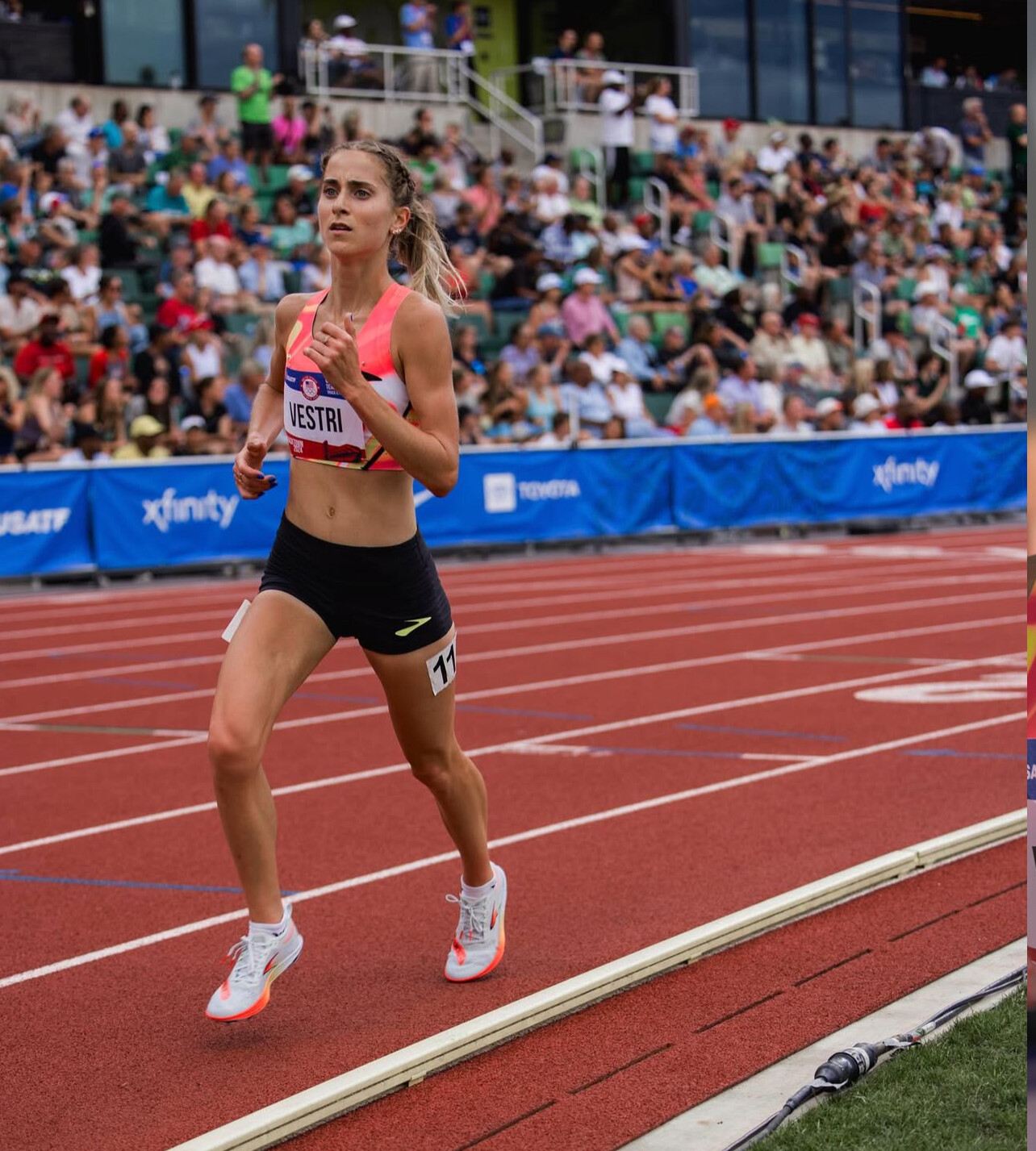
What’s Next
Vestri now shifts her focus to the track, where she’s scheduled to compete in both the 5,000m and 10,000m at the upcoming USATF Outdoor Championships in Eugene, Oregon later this month.
The USATF Running Circuit continues with just two events remaining:
• USATF 20 km Championships in New Haven on September 1
• USATF Marathon Championships in Sacramento on December 7
With momentum clearly on her side, Amanda Vestri will be a name to watch—on the roads and the track—for the rest of 2025.
by Boris Baron
Login to leave a comment
From Dirt Roads to Global Dreams: Inside Kenya’s Fastest-Growing Running Movement
In the heart of Kenya’s Rift Valley and beyond, a quiet revolution in athletics is underway. What began as a modest idea has grown into a dynamic movement that now spans 19 KATA Running Camps and Potato Farms across Kenya—plus two international retreats, including one at the historic Anderson Manor in Monforte da Beira, Portugal.
And it’s happening fast.
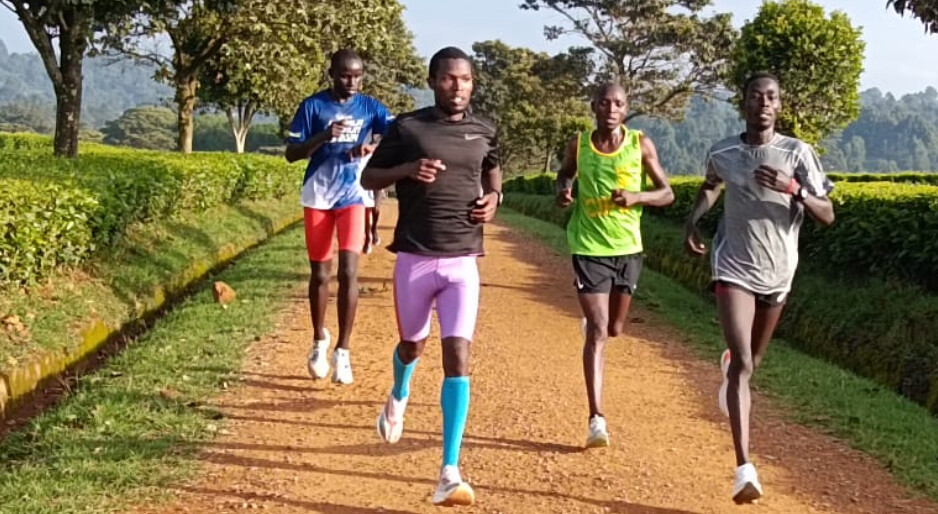
“We never planned to expand this quickly,” says Bob Anderson, founder of KATA and a lifelong advocate for long-distance running. “But the momentum of this movement just couldn’t be slowed down. We’ll be confirming one more camp shortly, and additional locations will follow in early 2026.”

KATA—short for Kenyan Athletics Training Academy—is unlike anything else in the world of distance running. It blends elite training with economic empowerment, giving young athletes not only the tools to run fast, but also a system that sustains them—and their communities—beyond the track.
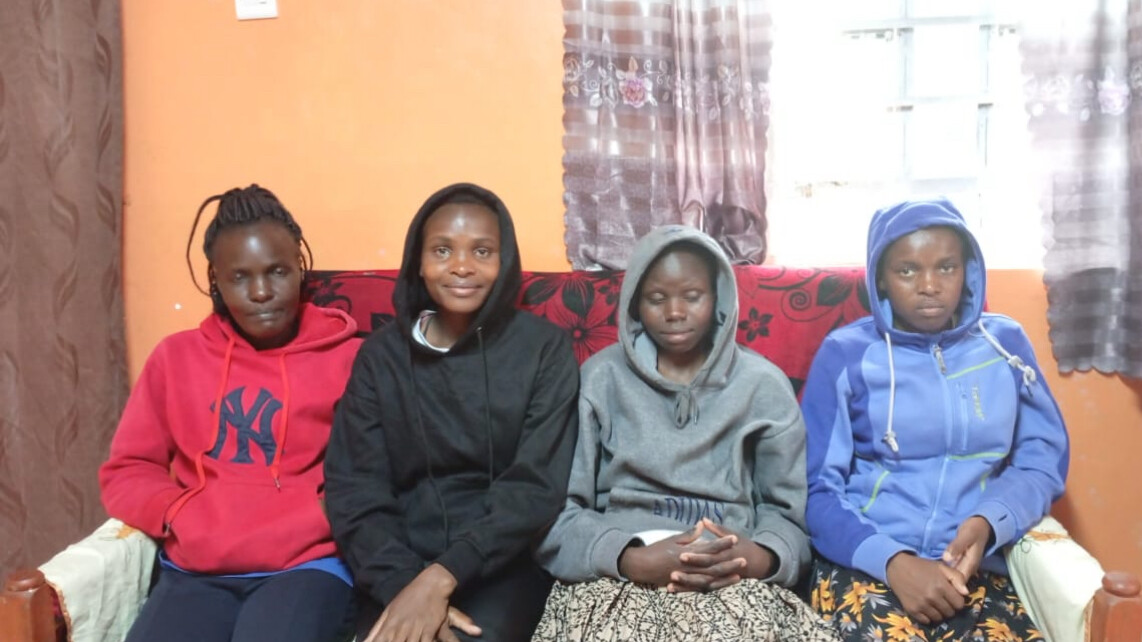
“This is not just sports development,” says Brigid Chebet, a Kenyan journalist who has closely followed the program. “It’s a model of rural transformation through athletics. And Kenya may finally have found a winning formula for generations to come.”
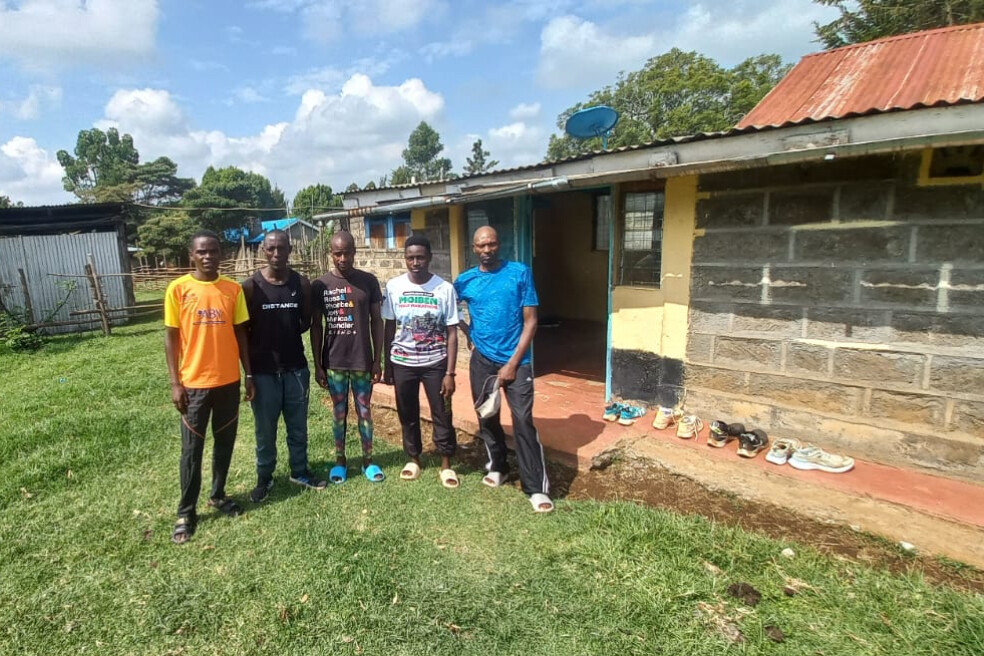
From a Vision to a Movement
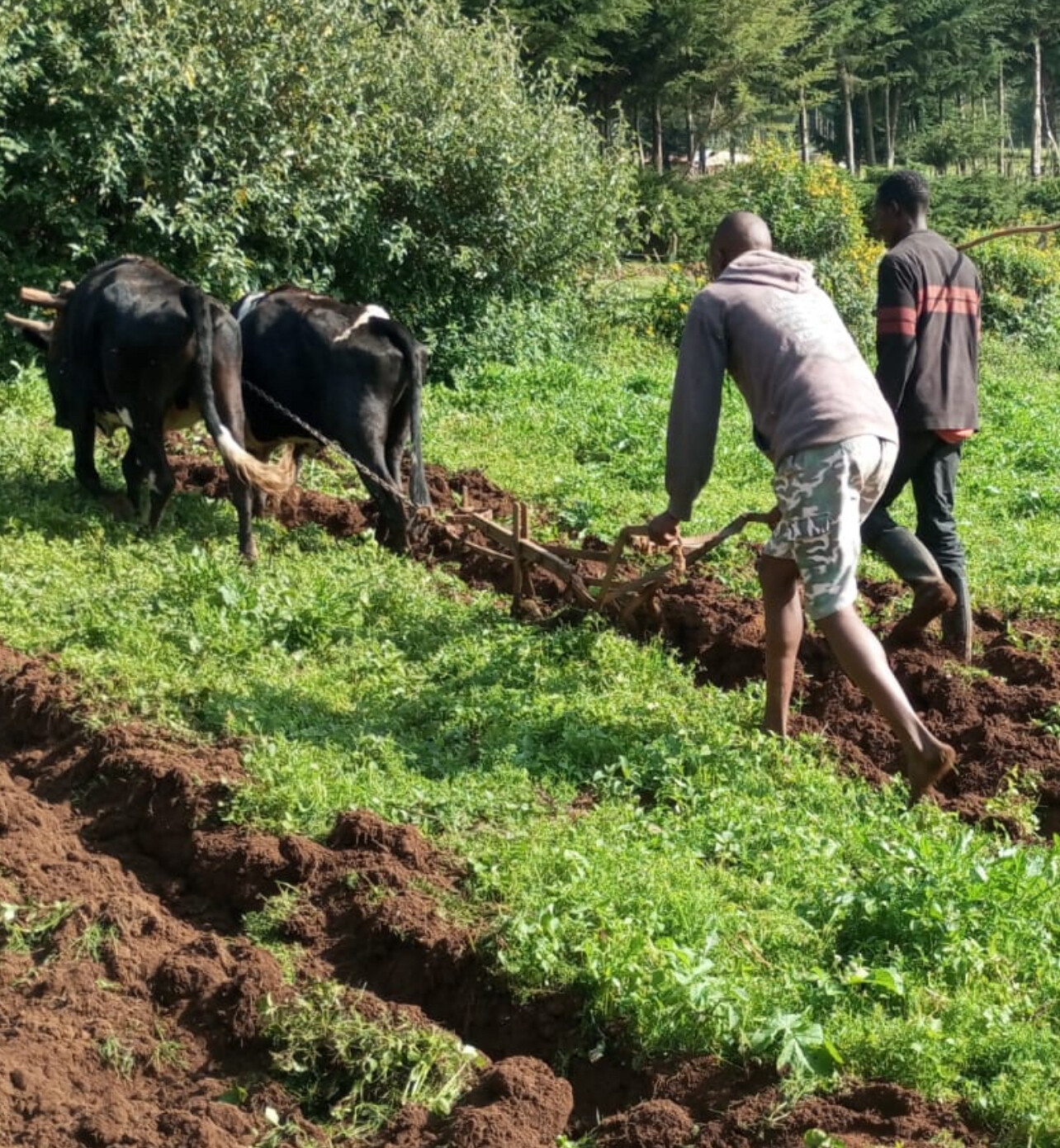
KATA was founded by Bob Anderson, an accomplished American runner who created Runner’s World magazine and later My Best Runs. After visiting Kenya in 2014, he was deeply inspired by the raw talent scattered throughout rural communities—athletes with potential but no pathway.
“He saw a path that few others in athletic management had envisioned—a system that not only trains champions but empowers them economically,” writes Chebet.
That system became KATA: a network of running camps, each paired with a three-acre potato farm. Each camp receives an interest-free loan from KATA to establish operations. In exchange, athletes train full-time and contribute 25 hours a week to the farm. Revenue from the potato harvest supports camp expenses, housing, and meals—creating a self-sustaining ecosystem.
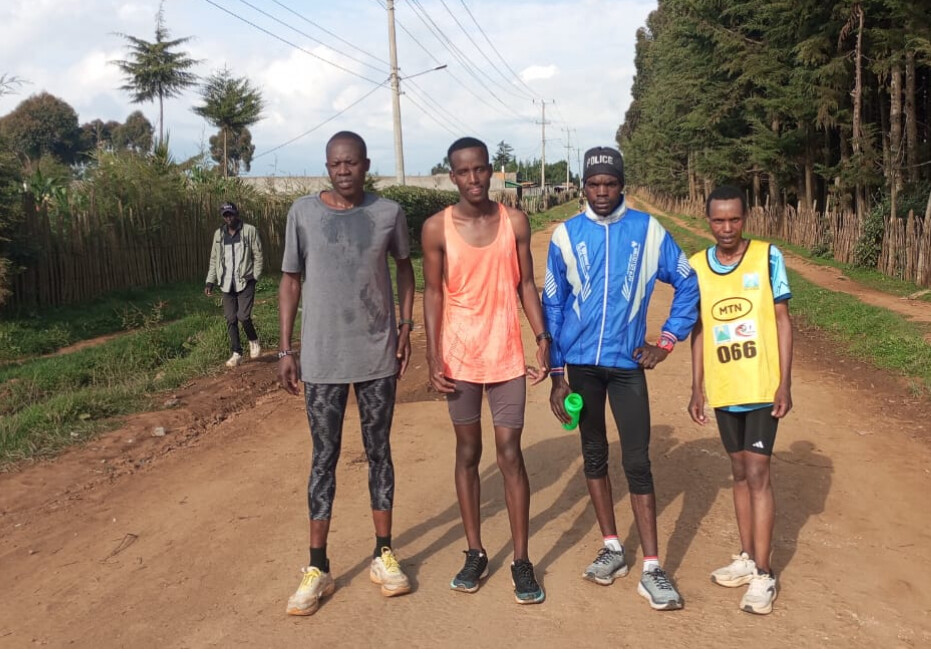
A Growing National Network
The first KATA retreat opened in Thika in 2019. Today, the initiative includes 19 camps spread across Kenya, each run by an experienced operator—many of them former elite athletes.
|
Location |
Operator |
|
Kapcherop |
Philemon Kipruto |
|
Molo |
Eric Chepkwony |
|
Kurengat |
Sammy Dismas |
|
Nyandarua |
Peter Njoroge |
|
Kericho |
|
|
Sotik |
|
|
Sachangwan |
Amos Chirchir |
|
Iten |
David Kellum |
|
Tenden |
Philemon Kipruto |
|
Eldoret |
Ruth Chumo |
|
Njerian Bomet |
Paul Kipsiele Koech |
|
Olenguruone |
Charles Ngeno |
|
Kapkembu |
Kipyegon Nehemiah |
|
Gasharrarge |
Job Langat |
|
Kaptagat |
Joseph Ngure |
|
Kiambu |
Julius Gacheru Migwi |
|
Kangundo |
Jimmy Muindi |
|
Moiben |
Hillary Kiplagat |
|
Kiptoror |
Caleb Rut |
In addition to these camps, two retreats serve as international training hubs: the KATA Running Retreat Thika, operated by Chris Muiruri, and the KATA Running Retreat Portugal, operated by Alberto Santos. Guests from around the world come to the two KATA retreats to train the Kenyan Way.
Elite Experience, Grassroots Impact
At the heart of KATA’s success is its leadership team. Olympic medalist Edwin Soi, now managing the Kuresoi Camp, brings both credibility and experience. Legendary steeplechaser Paul Kipsiele Koech, who has run under 8:10 in the 3000m steeplechase over 110 times, oversees two KATA camps/farms.
Veteran coach Charles Ngeno, known for his early work with Olympic champion Faith Kipyegon, now heads the Olenguruone camp, ensuring that young athletes from even the most remote villages receive structured training and economic opportunity.
“The new vision embraces sustainability, resilience, and empowerment,” writes Chebet. “It ensures that our athletes thrive both on and off the field.”
Looking Ahead
Anderson and the KATA team have ambitious plans: confirming one more camp this month and preparing for even more in 2026. The goal is clear—build up to 50 self-sustaining running camps across Kenya and replicate the model in other parts of the world.
“We’re not just chasing medals,” says Anderson. “We’re building lives.”

For partnership opportunities or more information, contact Bob Anderson on WhatsApp: +1-650-400-6643
by Brigid Chebet with Boris Baron
Login to leave a comment
KATA to Launch Eight New Running Camps and Potato Farms Across Kenya by October
Bob Anderson, the visionary founder of KATA (Kenyan Athletics Training Academy) and long-time champion of Kenyan running, and lifetime runner, has announced a bold expansion plan: eight new KATA Running Camps and Potato Farms will open across Kenya by October 1, 2025.
“We want to confirm our next eight camps by August 15,” says Bob Anderson, KATA Director and Founder.
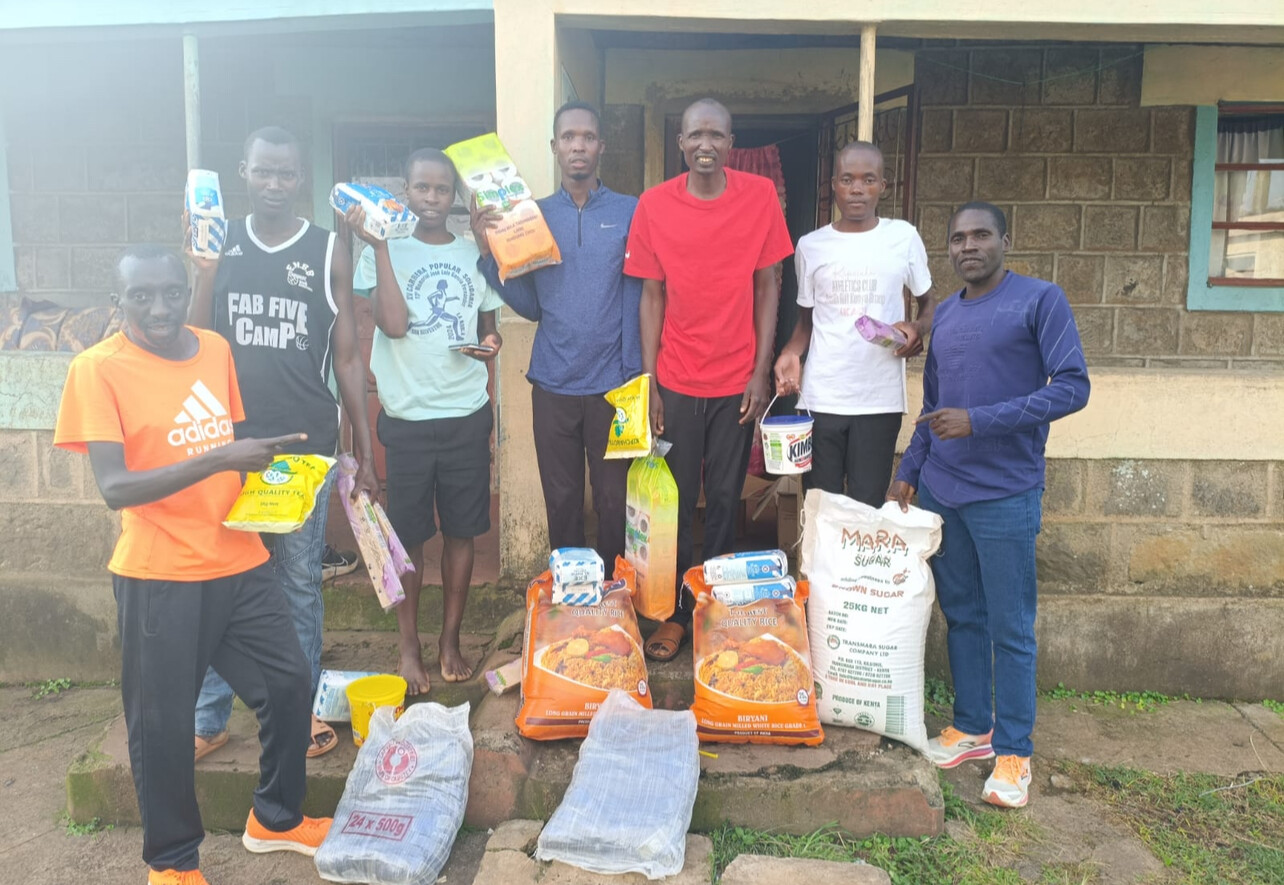
Each new site will combine high-performance athlete training with sustainable agriculture, centering around a 3-acre KATA Potato Farm. The initiative aims to create self-sustaining camps where runners not only train at a high level but also contribute to the farm operations that help support the entire program.

At the heart of every KATA Running Camp is a dedicated operator—often a former elite athlete or experienced coach—who oversees day-to-day operations and athlete development. Our operators are more than just managers; they are mentors, motivators, and community builders. Each operator is carefully selected for their deep understanding of training at altitude, their passion for helping athletes succeed, and their ability to lead with integrity. Many of them have raced at the international level or coached athletes to major victories, bringing invaluable knowledge to the camps. Whether it’s organizing daily workouts, managing food and lodging, or fostering a winning culture, our KATA Running Camp operators are the backbone of our success.
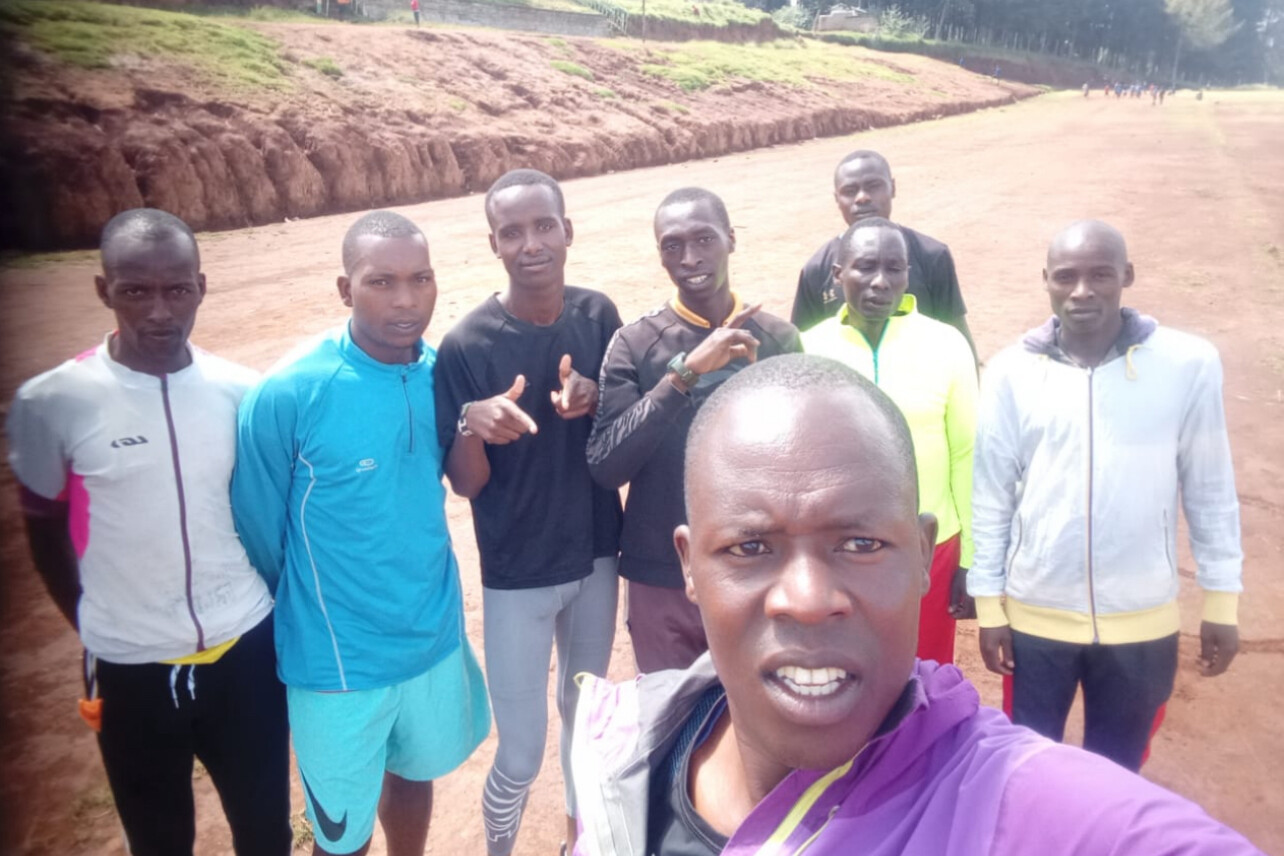
Currently, KATA Running Camps are thriving across Kenya under the leadership of 11 outstanding operators. In Kapcherop, Philemon Kipruto manages a vibrant group of emerging athletes. Eric Chepkwony runs our camp in Molo, and Sammy Dismas leads the program in Kurenget.

Over in Nyandarua, Peter Njoroge is building a strong training culture, while Edwin Soi, Olympic bronze medalist, brings elite-level experience to our Kericho camp. Paul Kipsiele Koech, an iiOlympic medalist, leads not one but two camps—Sotik and Njerian Bomet—where he shares his wealth of knowledge and competitive insight. In Sachangwan, experienced coach Amos Chirchir oversees daily operations and athlete growth, while in the legendary running hub of Iten, former elite runner David Kellum provides mentorship and structure.
David Kirui heads up the team in Tenden, and in Eldoret, Ruth Chumo—a respected coach of both abled and para-athletes—brings technical excellence and inclusivity to her camp. Rounding out our leadership team is Charles Ngeno, who directs the Olenguruone camp and plays a vital role in shaping future champions.
How the Program Works:
Each selected operator will receive:
•An interest-free loan of 350,000 KES as startup capital to establish the camp.
•An additional 300,000 KES interest-free loan to cover the costs of renting and preparing 3 acres of land, fertilizing, spraying, planting, harvesting, and selling the potatoes.
The model is built on long-term sustainability: once established, revenue from the potato farm is expected to fully support each KATA Camp year-round, without additional outside funding.
Work and Training:
KATA athletes must commit to:
•25 hours of farm work per week, in addition to their structured training schedules.
This balance of physical labor and elite coaching is designed to build discipline, character, and community resilience—while helping runners achieve their full athletic potential.
The KATA Running Camps and KATA Potato Farms are headquartered at the Anderson Manor of Portugal, home to the KATA Running Retreat, located in Monforte da Beira in central Portugal. This historic and beautiful estate serves as the ideal European base for KATA. Athletes come here to sharpen their fitness and prepare for peak performances, whether they’re targeting personal bests or major competitions.
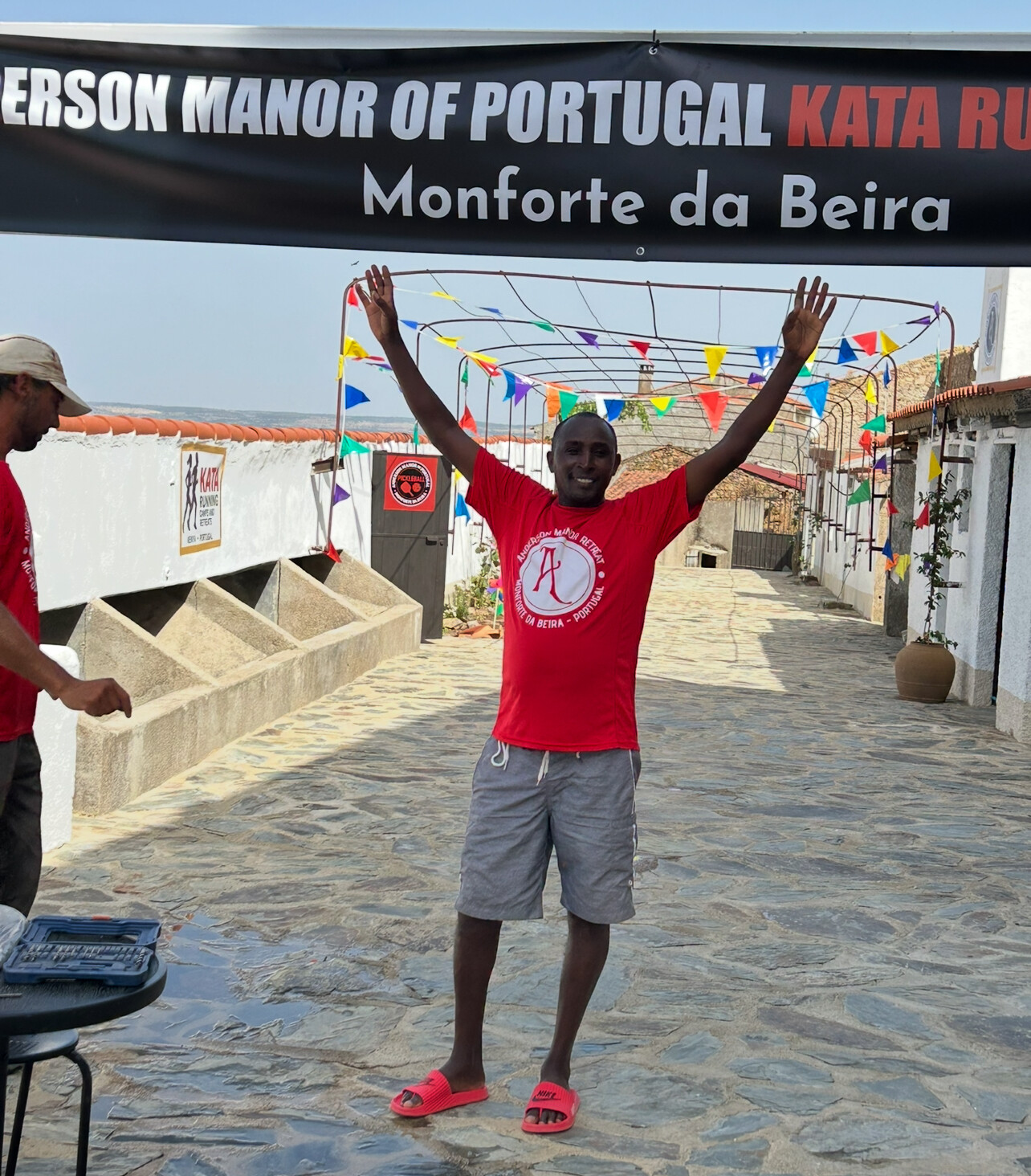
The location is perfect for training—quiet, scenic, and inspiring—and it’s conveniently positioned just 2.5 hours from Lisbon and about 4 hours from Madrid by car. KATA also maintains a local office in Thika, Kenya—site of the original KATA Running Retreat opened in 2019—which supports the growing network of KATA camps across the country.

Interested in Becoming a KATA Camp Operator?
If you’re passionate about athletics, have experience in farming or business management, and want to make a lasting difference in your community, this could be your opportunity.
Contact Bob Anderson directly on WhatsApp (650-400-6643) to apply (text only at this point):
Please include:
•Your full name
•The town where you’d like to establish a KATA camp
•Your background in running, coaching, or athletics
•Experience running a business
•Any potato or farming experience you have
This is more than a training camp. It’s a movement to empower Kenyan runners through purpose, performance, and sustainable agriculture.
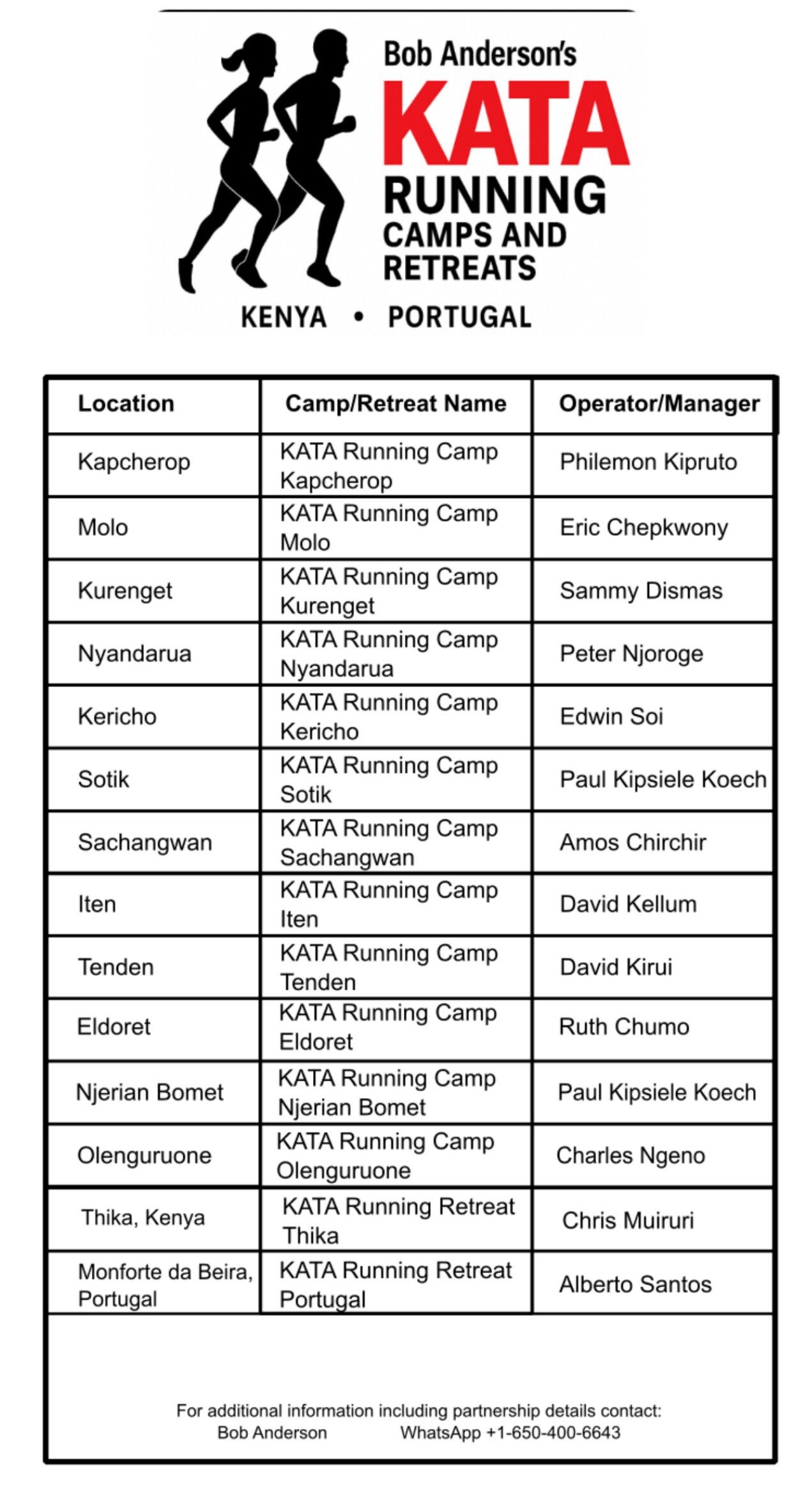
by Boris Baron
Login to leave a comment
KATA Running Camps Expand to 10 Locations in Kenya with Ruth Chumo Leading New Site in Eldoret
The Kenyan Athletics Training Academy (KATA) has reached a major milestone with the launch of its 10th KATA Running Camp, as the movement continues to grow rapidly across Kenya. This bold initiative, which blends elite athletic training with sustainable agriculture, is transforming the future of distance running.
The two newest camps are now confirmed:
• KATA Camp 9 in Kamoi, led by coach David Kirui
• KATA Camp 10 in Eldoret, operated by Coach Ruth Chumo
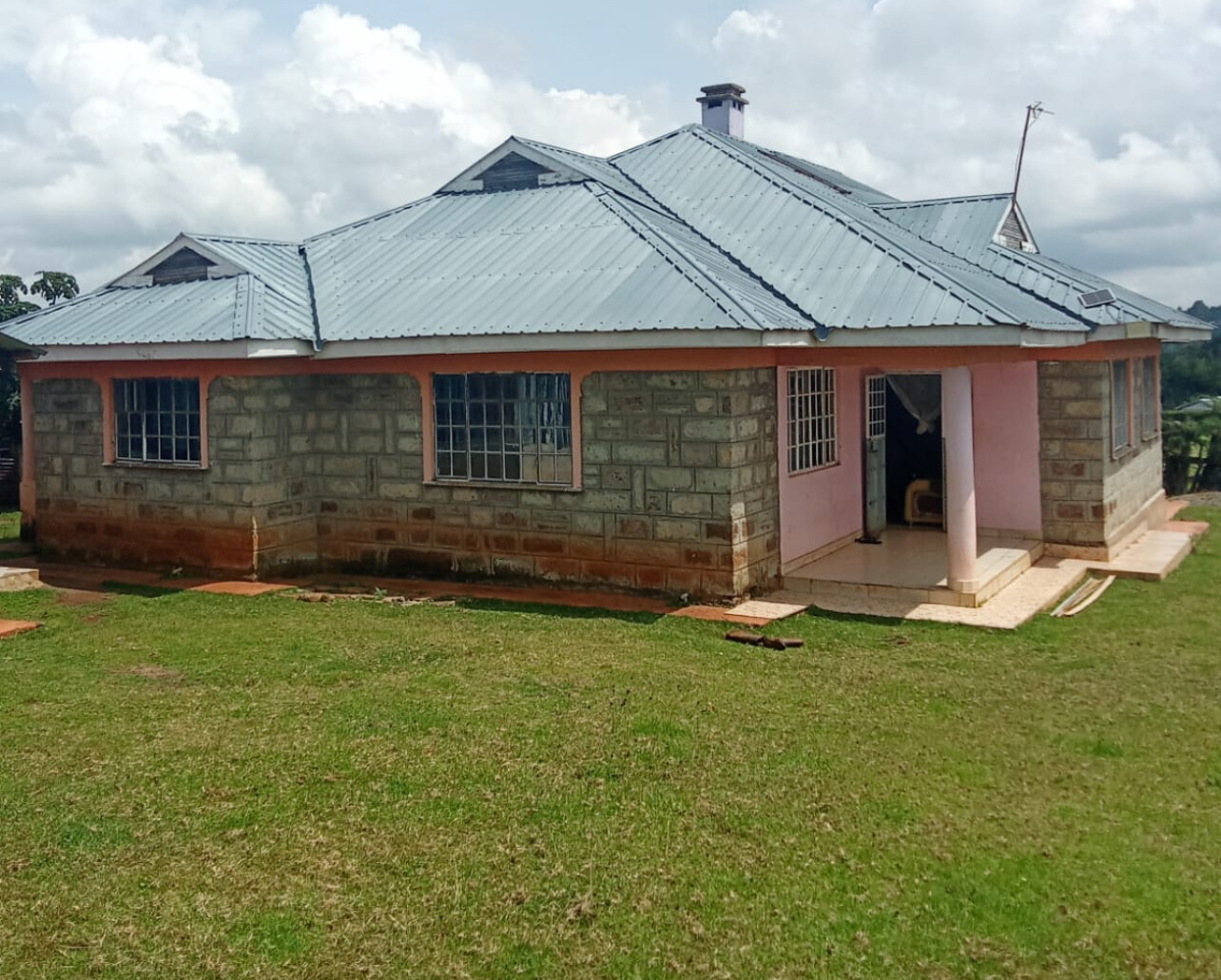
Coach Ruth Chumo brings exceptional experience to the program. Based in Eldoret—the heart of Kenyan distance running—she has built her reputation training both abled and para-athletes at the highest level. Her deep commitment to athlete development and her proven leadership make her a vital addition to the KATA family.

“I am so excited about the group of operators we have put together,” says KATA Director Bob Anderson, founder of Runner’s World magazine. “Each of our operators is fully committed to the program and understands the importance of our KATA Potato Farm component. This provides year-round revenue that allows us to sustain and grow. Every camp already includes top-level athletes, and we’re going to achieve big things.”

Two of the current camps have already planted their first acre of KATA potatoes, marking an important step forward in the program’s sustainability model. These three-acre farms, tied to each running camp, are a core part of the KATA mission—providing food, responsibility, and revenue that keep the entire system running year-round.
The program is also delivering results on the track. Just last weekend, Olympic bronze medalist Edwin Soi, operator of the Kericho KATA Camp, ran an astonishing 27:30 for 10,000 meters, dominating his race and sending a strong message about the level of athletes being developed within the KATA system.
KATA’s leadership includes two Olympians:

• Edwin Soi, 5000m bronze medalist from the Beijing Olympics
• Paul Kipsiele Koech, one of the most accomplished steeplechasers in history, now operating the KATA Camp in Sotik
Their presence brings unmatched experience, mentorship, and international credibility.
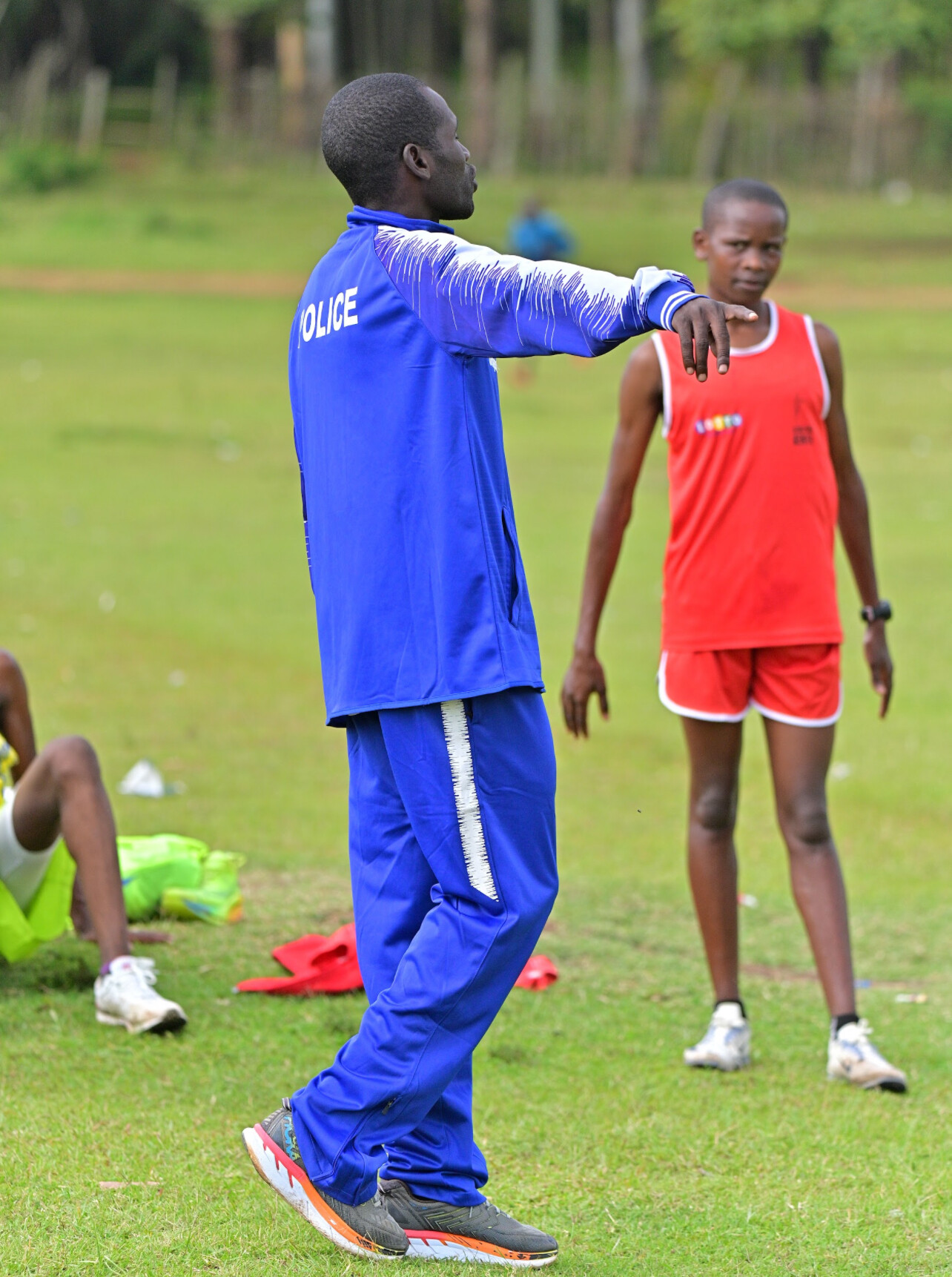
At the heart of KATA is a powerful, dual-purpose model: athletes receive world-class training while also helping manage a working farm. The result is a program that builds champions and sustains itself through community-driven agriculture.
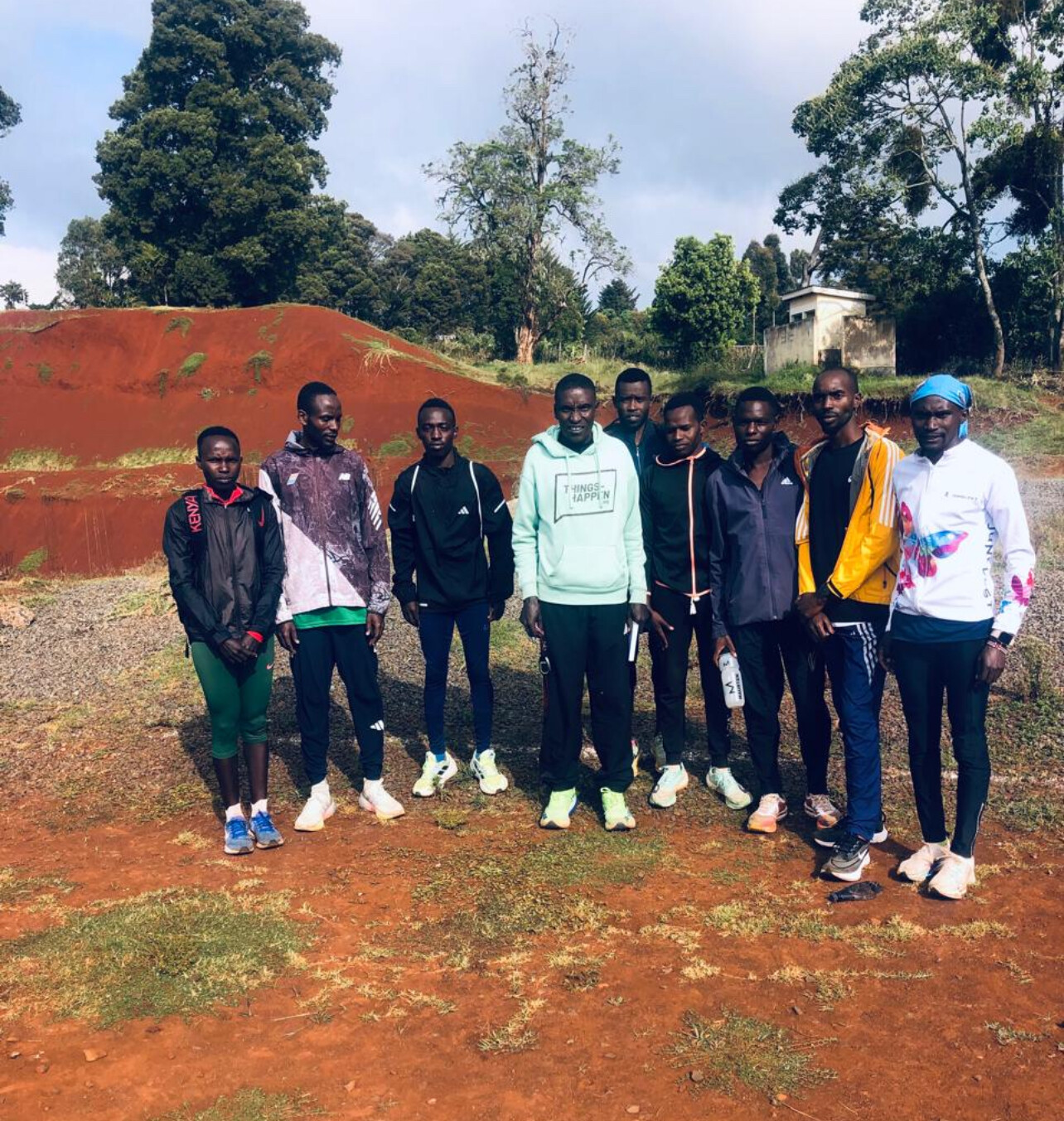
Round Two Begins October 1
The momentum is building. On October 1, KATA will launch Round Two of its program, aiming to establish 10 additional camps by November 1—doubling the total to 20.
“This is only the beginning of our aggressive, unique program,” says Anderson.

The long-term vision: 50 fully operational KATA Running Camps within three years, directly supporting nearly 1,000 elite Kenyan runners.
The KATA Partner Program
To help reach that goal, KATA is inviting select partners to be part of the movement and make a lasting impact.
Each partner:
• Can have their name on a camp. You too can now have your own training camp in Kenya under the umbrella of KATA.
• May choose to be actively involved (like coaching and selecting your own athletes) or take a passive role. (KATA will set everything up.)
• Will share in the gross revenue from the sale of KATA potatoes
• Will also participate in a percentage of prize money earned by athletes at their partnered camp
This is a rare opportunity to support a program built on performance, purpose, and sustainability—while being directly connected to the success of the next generation of Kenyan champions.
Want to get involved?
WhatsApp Bob Anderson at +1-650-400-6643 to learn how you can support or partner with KATA today.
Photos: Paul Kipsiele Koech KATA team in Sofia 2. Ruth Chumo 3. Ruth's KATA Camp outside of Eldoret 4. KATA athletes planting potatoes in Molo under the direction of camp operator Eric 5. KATA ten camps 6. KATA athletes in Iten 7. Preparing potatoes in Kapcherop 8. Paul Kipsiele Koech coaching his KATA athletes in Sotik.
by Boris Baron
Login to leave a comment
KATA Running Camps Launch a Bold New Era for Distance Running in Kenya
In a bold move to reshape the future of distance running, Bob Anderson, the legendary founder of Runner’s World and lifelong runner, has launched a groundbreaking initiative that’s taking root across Kenya. What began in 2019 with the Kenyan Athletics Training Academy (KATA) in Thika, and expanded to Portugal earlier this year, is now flourishing into a national movement—with eight KATA Running Camps already confirmed, and ten expected by July 1, plus two full-service KATA Retreats in Thika and Monforte da Beira, Portugal.
photos: 1. Edwin's KATA team reporting to his camp today in Kericho. 2. Eric's KATA in Molo will be planting their first acre of KATA potatoes tomorrow.

"As far as I know, there’s nothing like what we are doing,” says Bob Anderson. “My team and I believe we’re going to make a big difference in the running world. We’ll have nearly 200 KATA athletes by July. We have so much talent, and with strong leadership and support, we can help them become world-class stars
A Sustainable Model with a Powerful Vision
What sets KATA apart is its innovative self-sustaining model that combines elite athletic training with agriculture and community building.

Each KATA Running Camp:
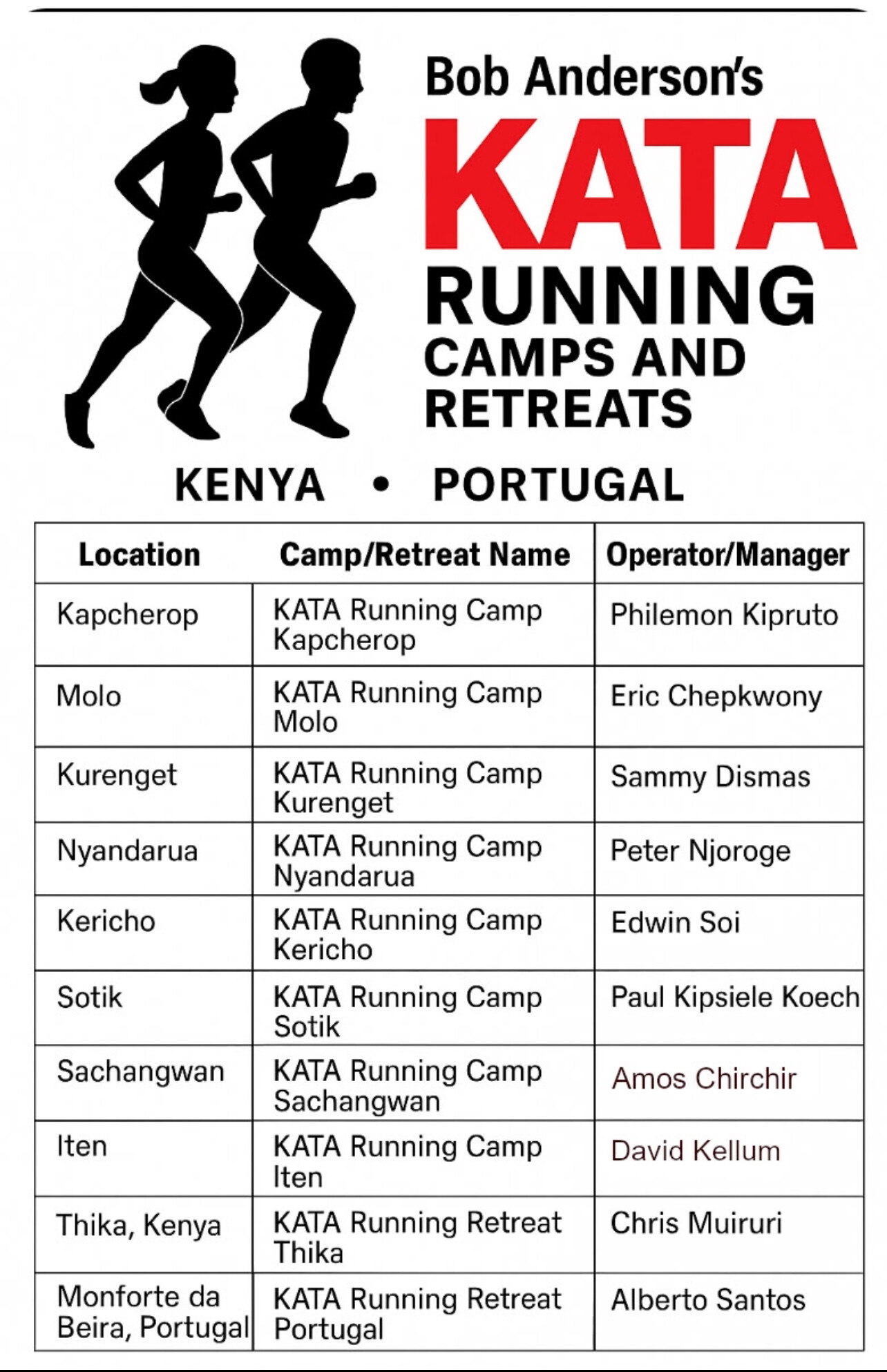
• Supports 3 acres of KATA potato farms
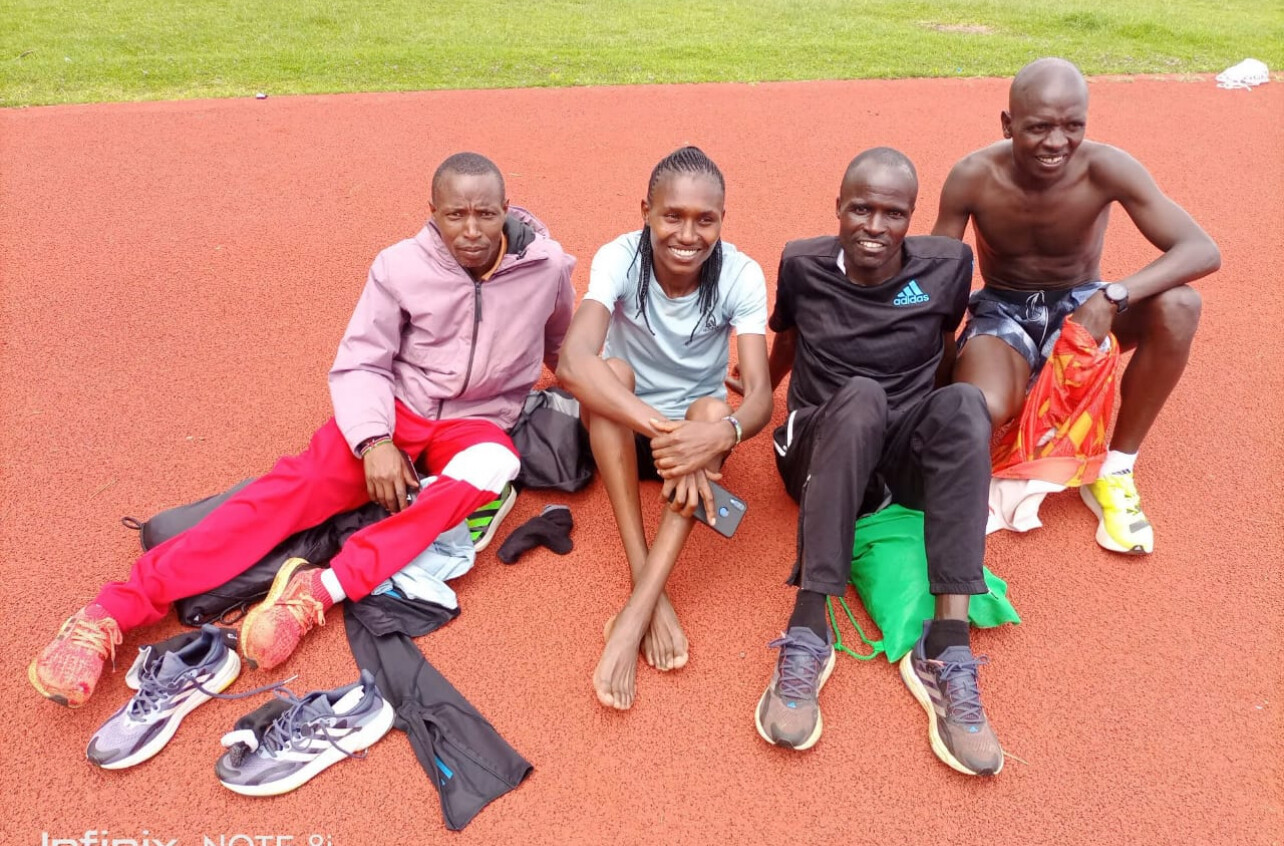
• Requires athletes to work 25 hours per week on the farm
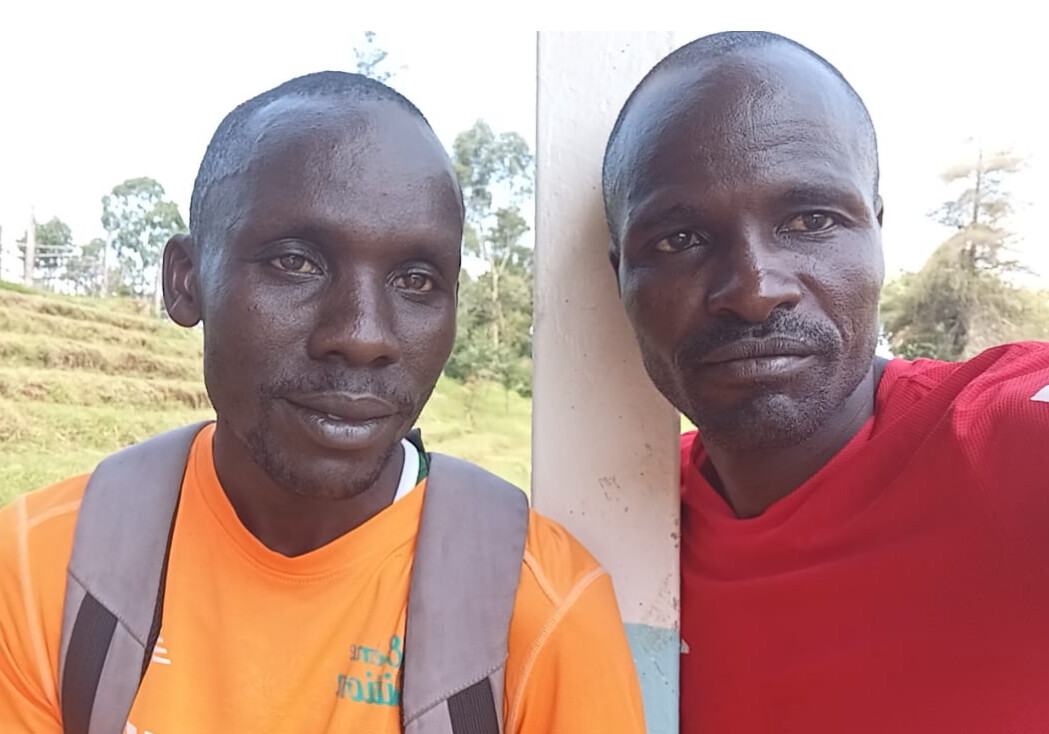
• Asks athletes to contribute 15% of any prize money earned to support their camp

In return, every KATA athlete receives:
• Free lodging
• Three nutritious meals daily
• World-class coaching
“Within six months, all camps will be fully self-sustaining,” Anderson says. “This is not just a running camp—it’s a lifestyle, a community, and a path to opportunity.
Powered by Champions
Two of KATA’s confirmed camp operators are Olympic medalists who bring unmatched experience to the program:
• Edwin Soi, bronze medalist in the 5000m at the 2008 Olympics, now leads KATA Kericho. He’s still racing—and proving his form. On June 15, he clocked a blazing 27:30 for 10,000 meters on the track.
• Paul Kipsiele Koech, bronze medalist at the 2004 Olympics in the 3000m steeplechase, heads KATA Sotik, bringing leadership, discipline, and deep tactical knowledge.
A Vision for 50 Camps, 1,000 Athletes
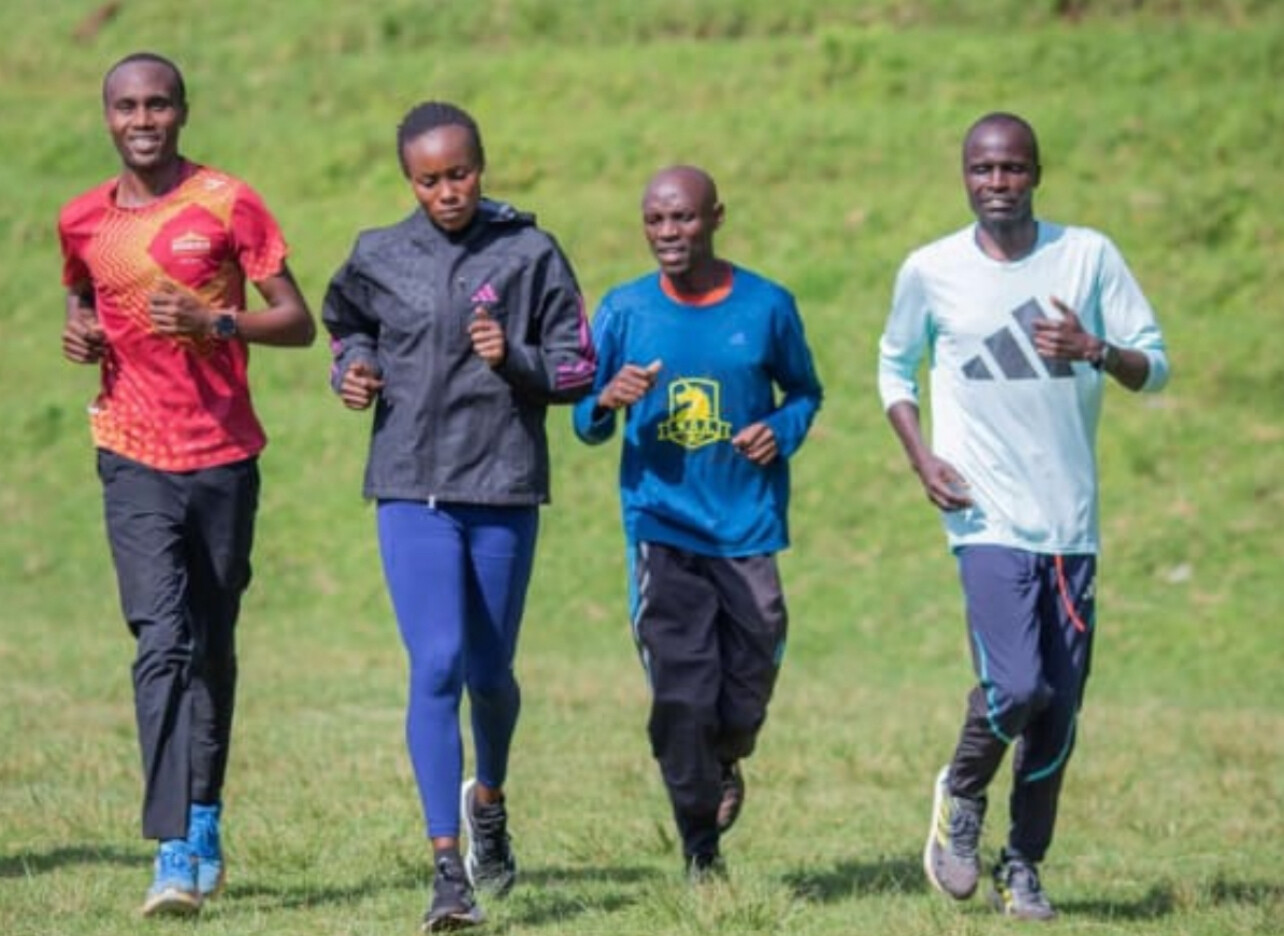
Anderson’s vision is as ambitious as it is inspiring:
“We hope to build a network of 50 KATA Running Camps to train nearly 1,000 athletes. At the same time, we’re working closely with local communities to promote healthier lifestyles through running, nutrition, and education.”
Each camp is embedded within its local area—supporting food security through farming, developing young talent, and strengthening communal ties.
More Than a Camp. A Movement.
KATA is not just about producing the next world record holder. It’s about giving hundreds of athletes the opportunity to reach their full potential—on the track, in life, and within their communities.
By combining sport with sustainability, and elite training with grassroots outreach, Bob Anderson’s KATA is poised to become one of the most impactful distance running projects in the world.
by Boris Baron
Login to leave a comment
Edwin Soi Blazes 27:30 for 10,000m at South Rift Regional Meet in Nakuru
Veteran Olympian Edwin Soi made a powerful statement in Nakuru County on June 15, dominating the 10,000m at the South Rift Region athletics qualification meet with a stunning time of 27:30. The race, held at Afraha Stadium, served as a regional qualifier for the Kenyan National Trials, which take place July 9 in Nairobi and will determine the team for the World Championships.
Soi, the newly appointed operator of the KATA Running Camp and KATA Potato Farm in Kericho, blew away the field with his performance—remarkable not only for the result but for the circumstances behind it.
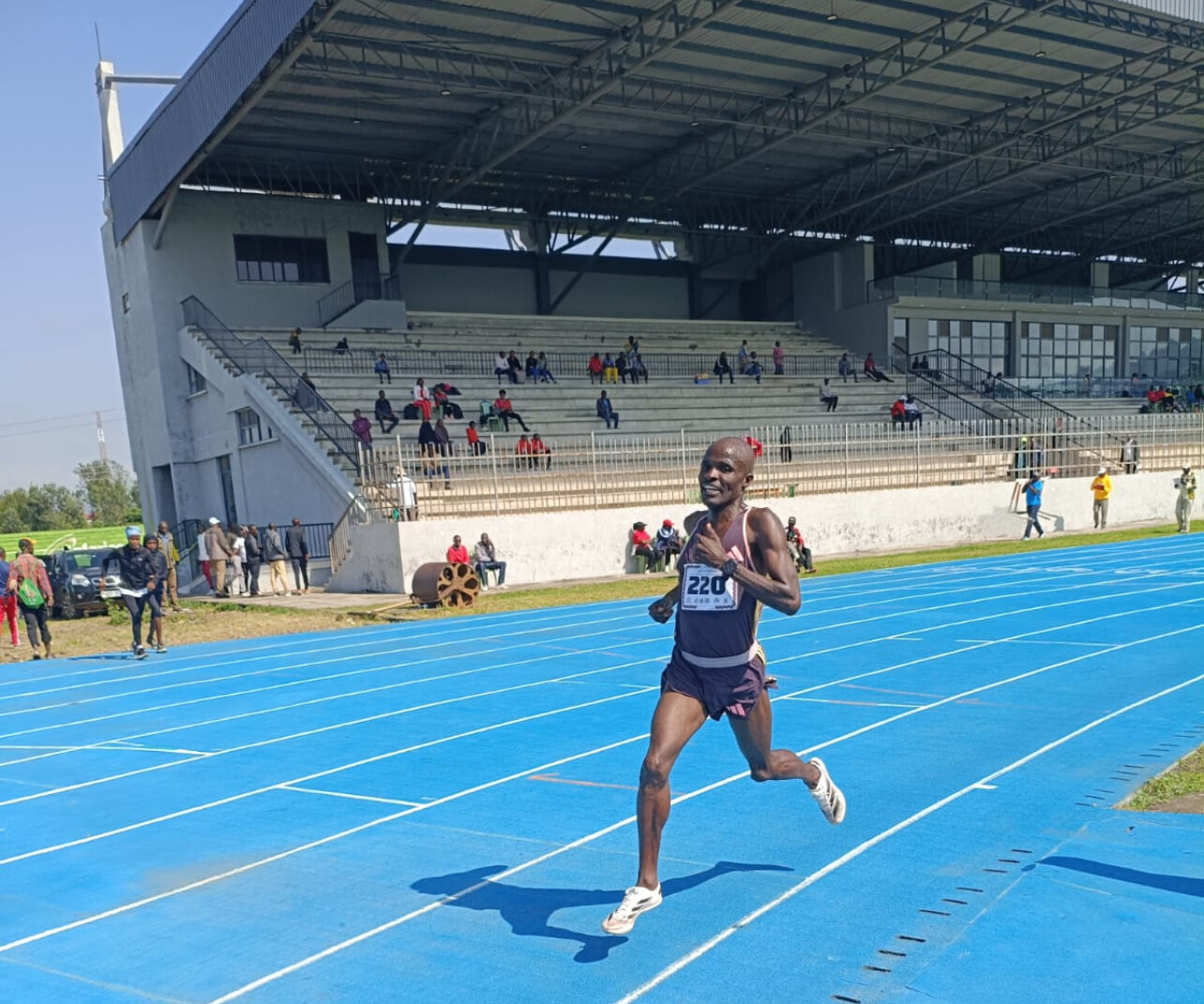
“I’m pleased with my time,” Soi said. “I’ve only been doing marathon training and no speed work. When Bob [Anderson], our KATA Running Camps founder and director, asked me a few days ago what I thought I could run, I told him sub-28—and I did.”
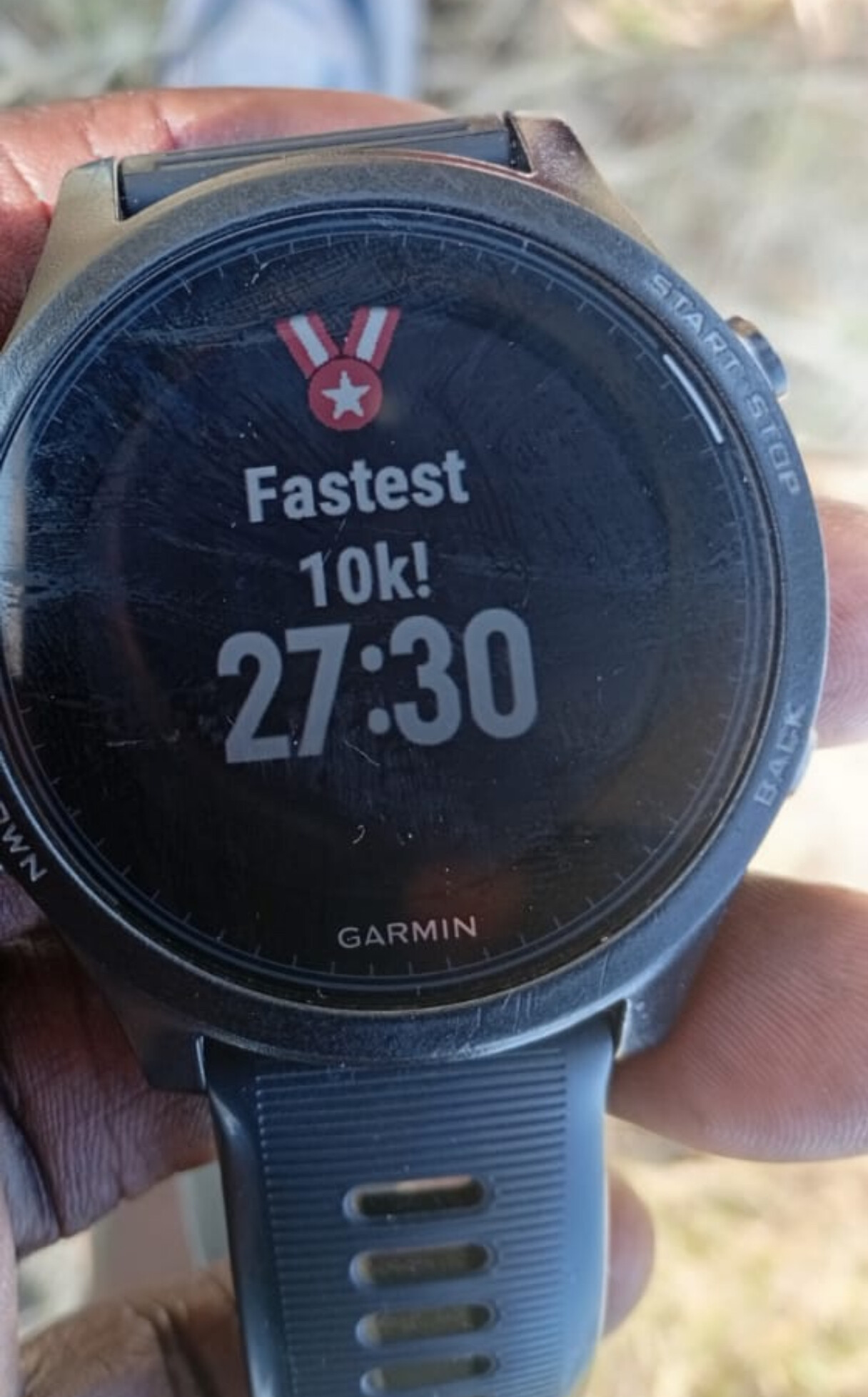
Soi’s effort drew praise from Bob Anderson, the founder of Runner’s World and director of the KATA Running Camps initiative. “Edwin just signed on to operate KATA Running Camp - Kericho and has been preparing to officially open his camp on Monday,” Anderson said. “I was very excited to hear of his time this morning. He will be ready to make the Kenya national team.”
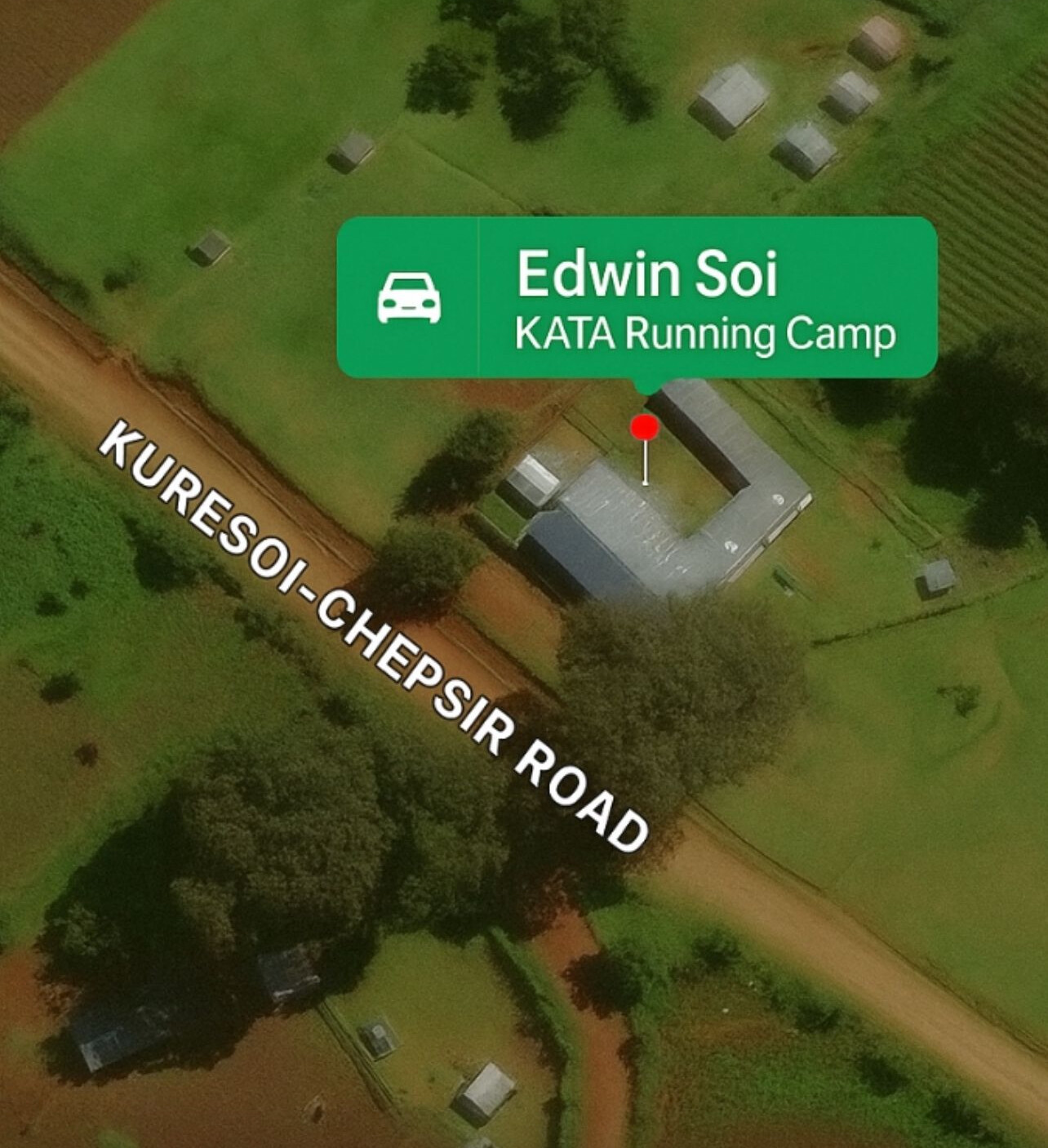
Photo five is Edwin visiting with Job at the KATA Running Camp - Molo. Photo six is Edwin transporting beds to his camp in Kericho earlier in the week.

Soi, who won the bronze medal in the 5,000m at the 2008 Beijing Olympics, has been transitioning to longer distances in recent years, including the marathon. His performance in Nakuru indicates he still has world-class speed and may be poised for another major appearance on the global stage.


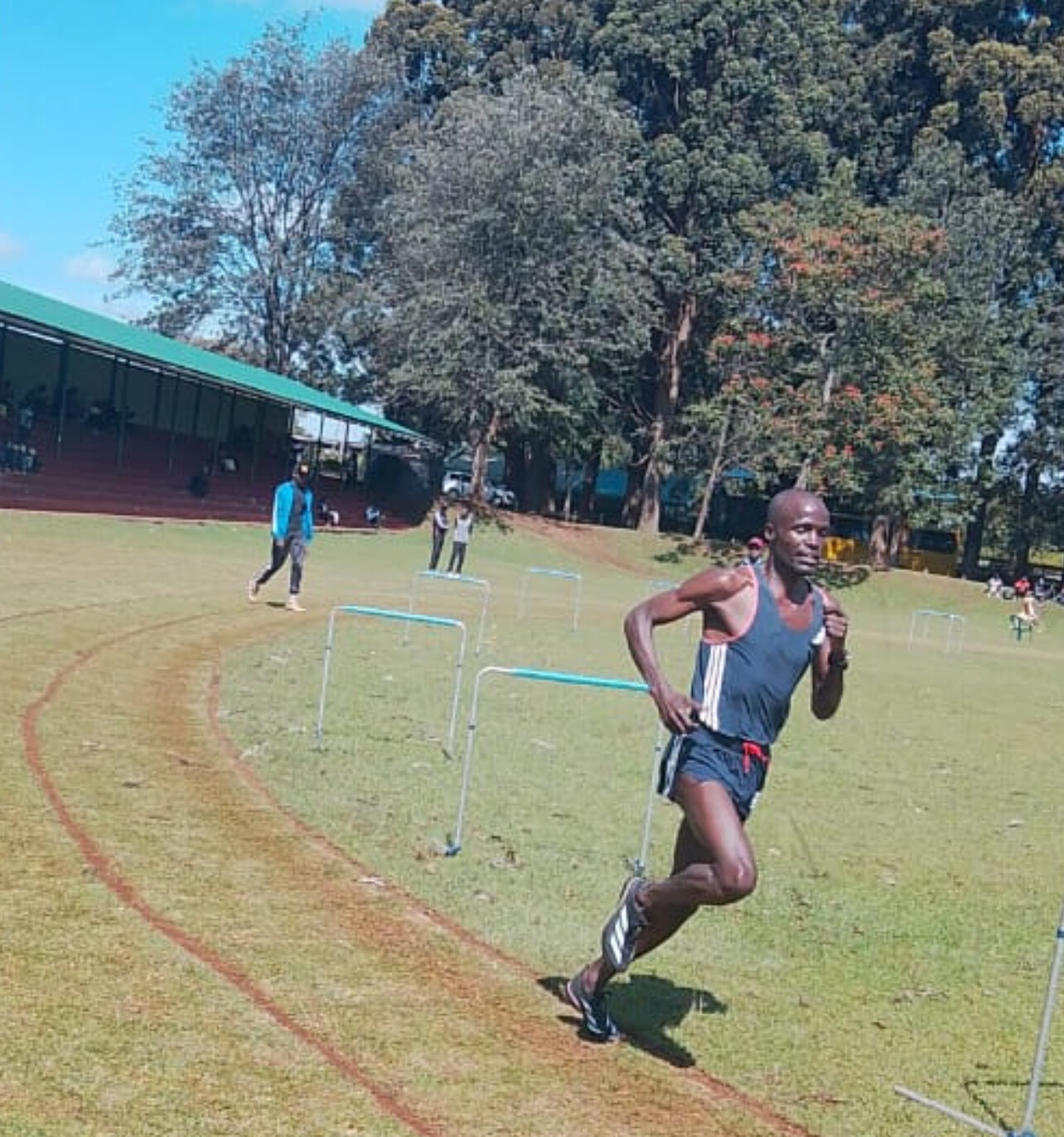
by Boris Baron
Login to leave a comment
Nico Young Shatters American Record with 12:45.27 in Oslo Diamond League 5000m
In a performance that shook the foundations of U.S. distance running, Nico Young stormed to a stunning 12:45.27 at the Oslo Diamond League on June 12. Not only did he win the race, but he also demolished the American 5000m record, vaulting himself into the top ranks of global distance running.
The 21-year-old’s breakthrough marks the fastest 5000m ever run by an American and the fourth-fastest time in world history outdoors. His average lap was 61.4 seconds—roughly 4:06 per mile or 2:33 per kilometer—executed against one of the deepest fields ever assembled.
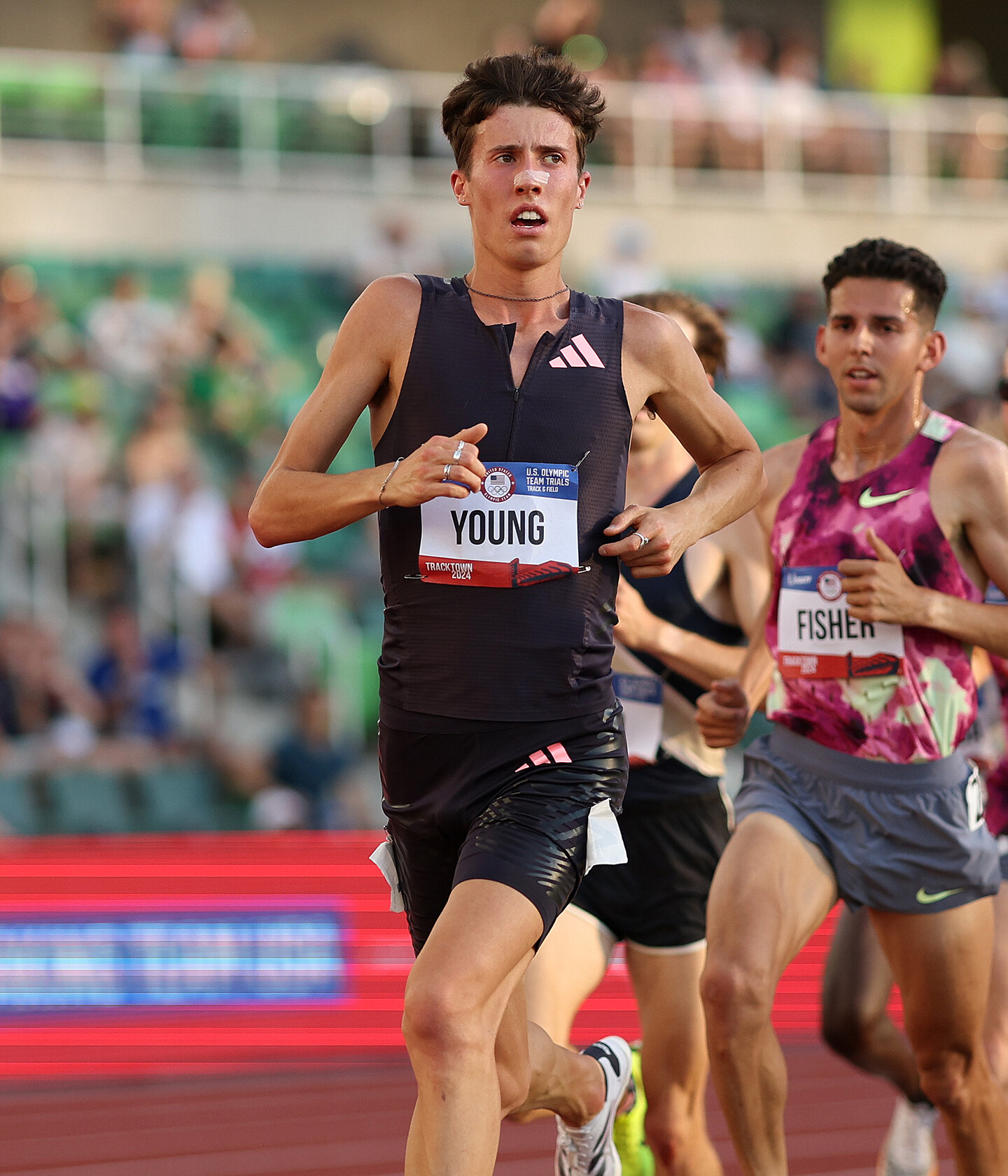
Standout Performances with Official Times
• Nico Young (USA) – 12:45.27 – ?? American Record
• George Mills (GBR) – 12:46.59 – ?? British National Record
• Thierry Ndikumwenayo (Burundi) – 12:47.67 – Personal Best
• Dominic Lokinyomo Lobalu (Switzerland) – 12:50.87 – ?? Swiss National Record
This was a race defined by speed, grit, and history-making performances. Eight athletes reportedly broke 12:51—unprecedented in Diamond League competition. National records fell on three continents.
Young’s Path to Greatness
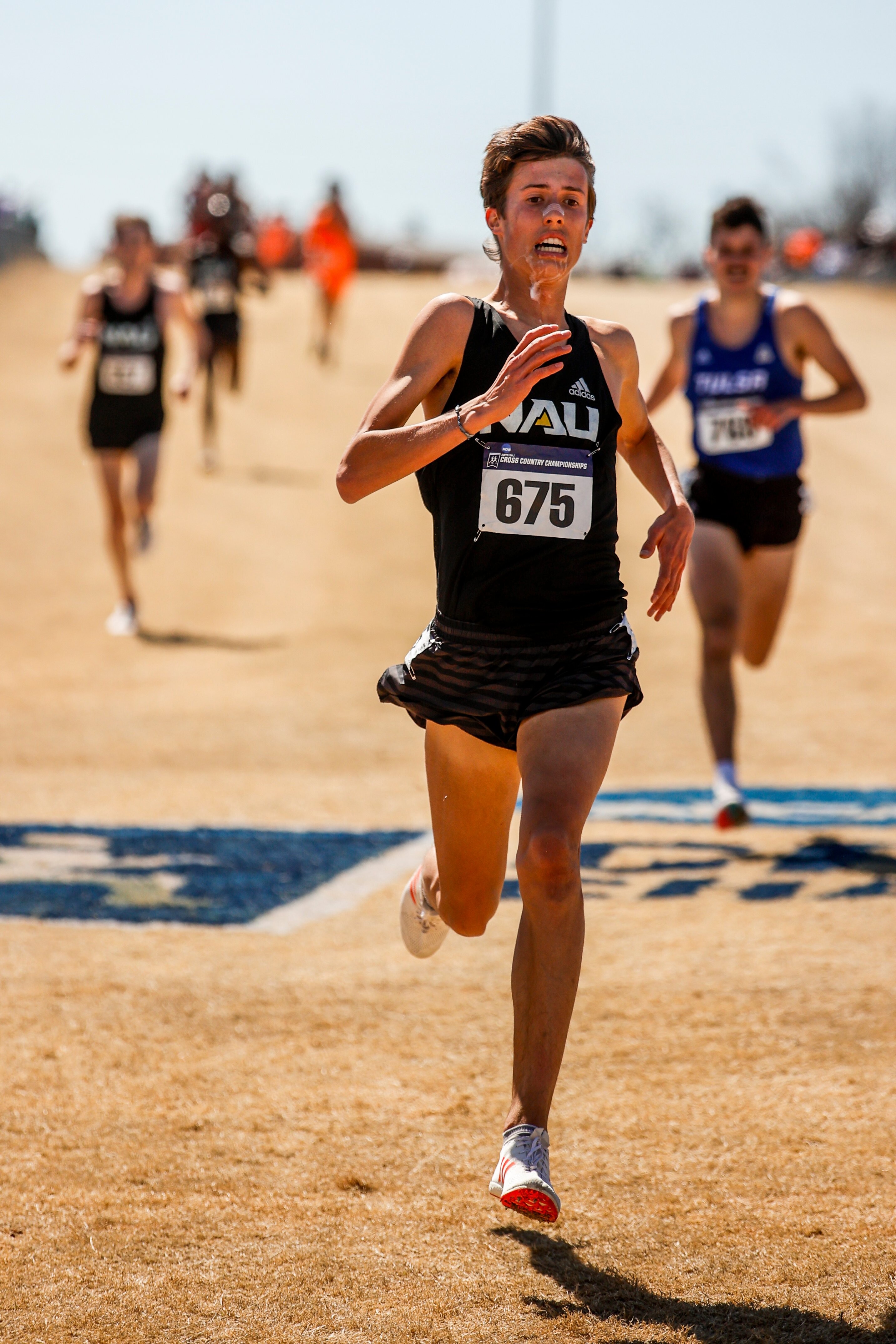
Nico Young’s rise began at Newbury Park High School, where he set high school records and led his team to national titles. At Northern Arizona University, he continued to dominate, becoming a multi-time NCAA All-American before turning pro with Adidas.
Training under coach Mike Smith, Young has honed not just his endurance but also his race instincts—perfectly on display in Oslo as he timed his final surge to perfection against the best in the world.
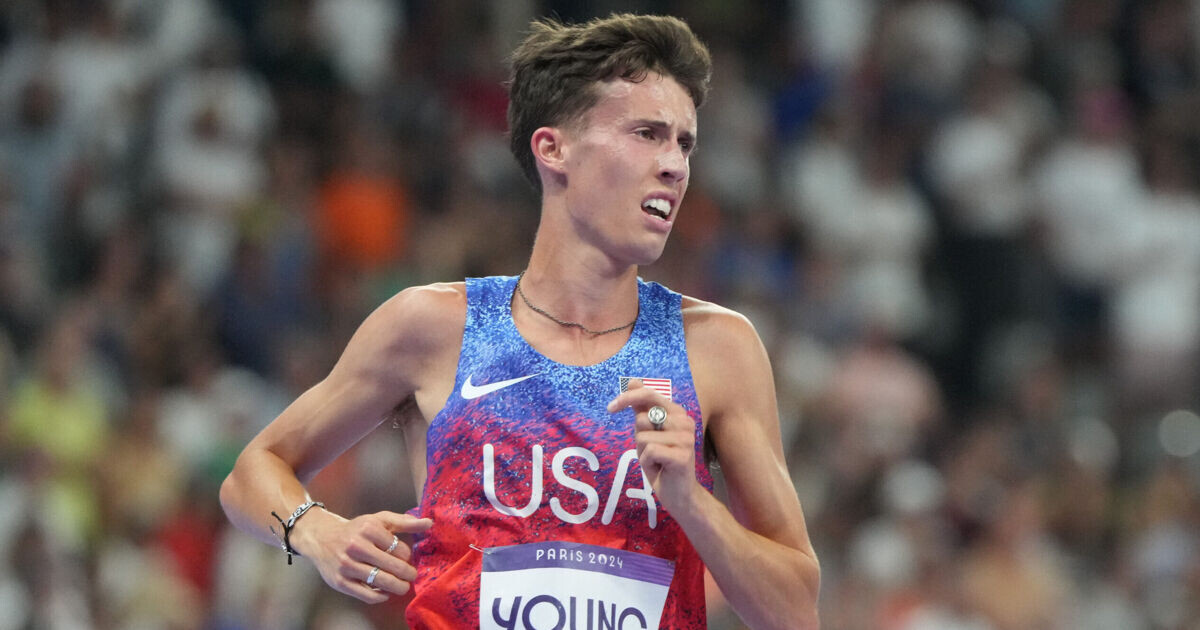
A New Standard
Young’s 12:45.27 surpasses Grant Fisher’s previous American record of 12:46.96 set in 2022. His time now ranks him behind only three men in history: Joshua Cheptegei, Kenenisa Bekele, and Hagos Gebrhiwet.
With this performance, Nico Young has redefined what’s possible for American distance runners and firmly positioned himself as one of the most exciting young talents in the sport.
by Boris Baron
Login to leave a comment
Blind Champion Wilson Bii to Open 2025 Season at KATA Time Trial
Four-time Paralympian Wilson Bii will launch his 2025 racing season at the KATA Monthly 10K Time Trial, scheduled for June 11 at the KATA Running Retreat in Thika, Kenya. Though Bii now trains at the newly opened KATA Running Camp in Molo, he’ll return to Thika to test his fitness in a race setting for the first time this year.
A T11-class athlete (completely blind), Bii has represented Kenya in four Paralympic Games, earning multiple medals and worldwide recognition. He won bronze in the 5000m T11 at the Rio 2016 Paralympics and remains one of Kenya’s most accomplished para-athletes.
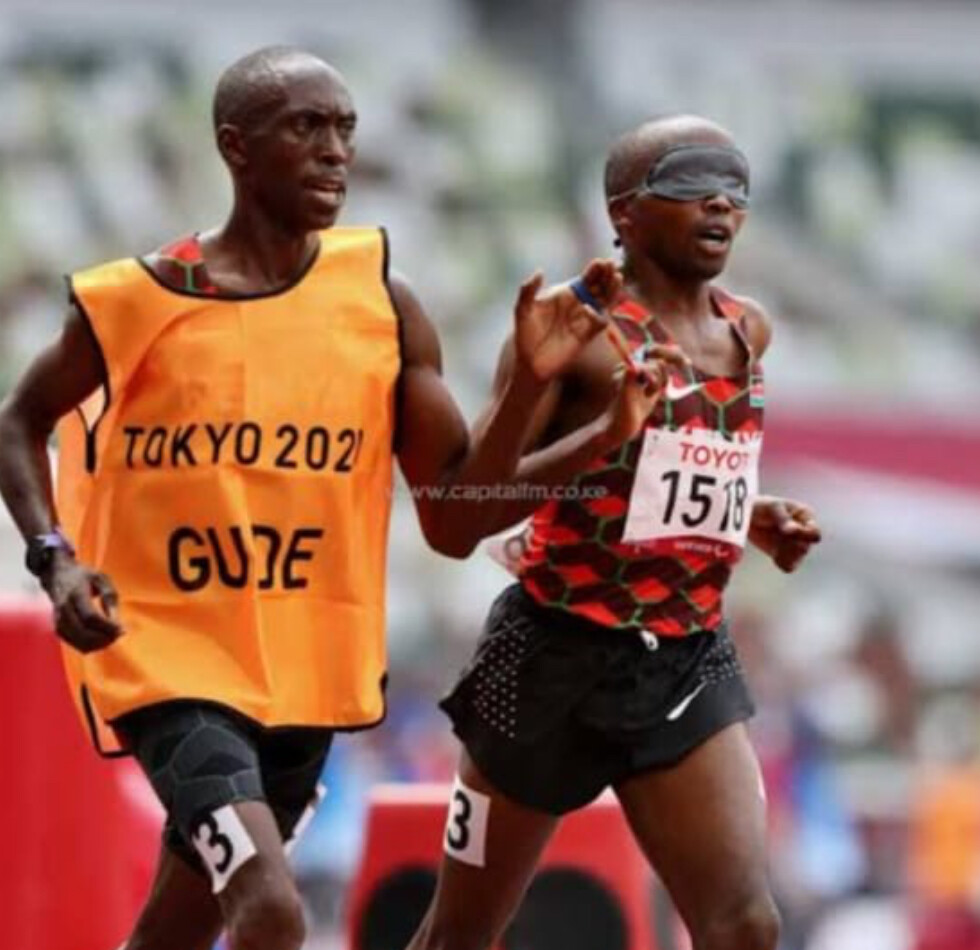
Aiming High: Sub-35 in the 10K, Sub-2:30 in the Marathon
This 10K time trial marks an important checkpoint as Bii builds toward his ambitious goal of running a sub-2:30 marathon, with a possible target at the Chicago Marathon later this year. For this first effort of the year, he’s aiming to break 35 minutes for 10K—a notable time given the altitude.
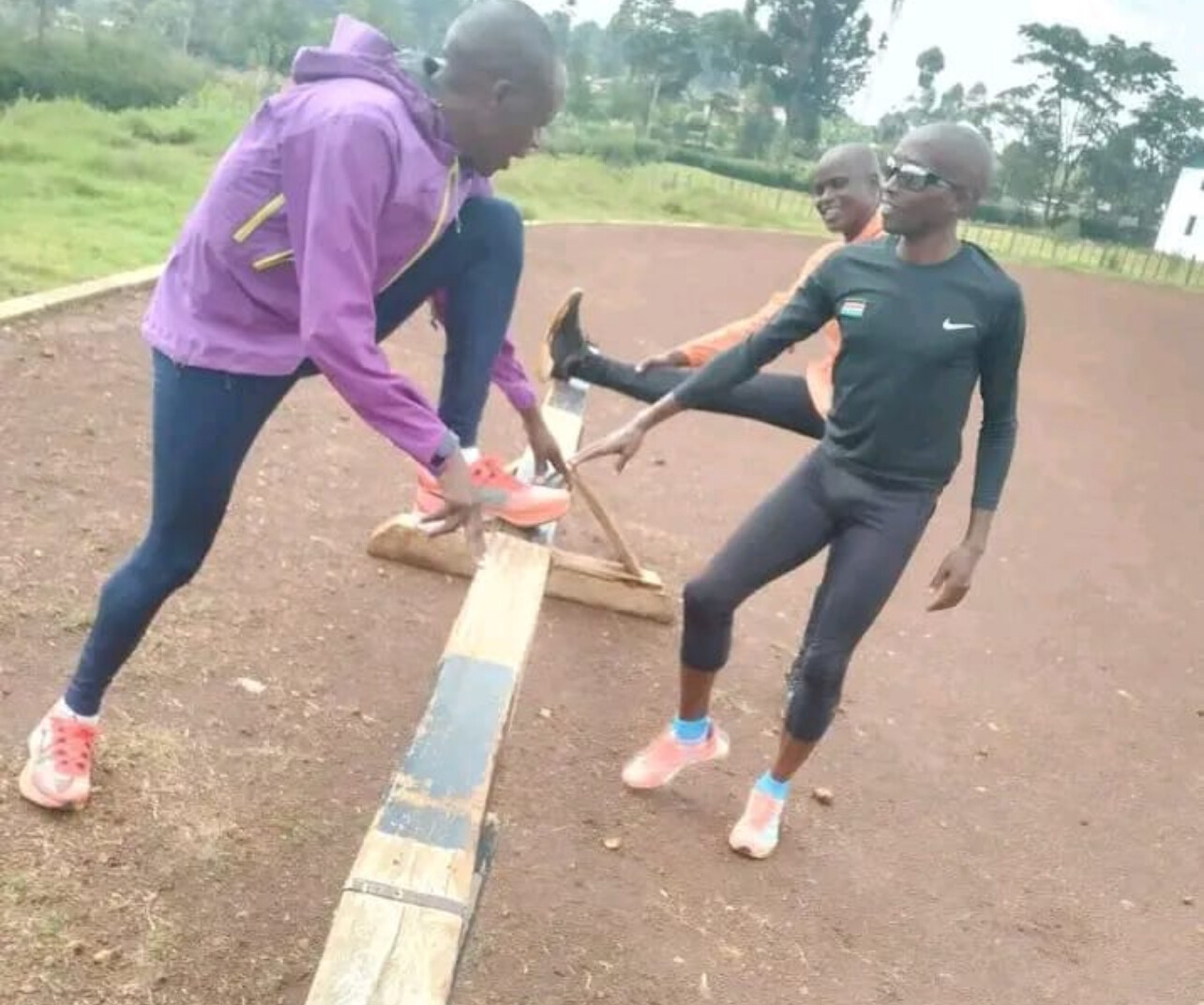
Bii will be guided by Job Kiprono Langat, who also serves as Assistant Coach at the KATA Molo Camp. Job has trained closely with Wilson and previously paced him in workouts, making their partnership on race day smooth and deeply synchronized.
“We are very proud to have Wilson now training with us in Molo,” said KATA Director Bob Anderson. “He is hoping to run a sub-35 minute 10K. This is the start of what we believe will be an exciting year for him.”
From Molo to Thika: Racing at Altitude
While Molo is located at a higher elevation, Thika still sits at approximately 5,000 feet (1,525 meters)—offering the kind of thin air that tests an athlete’s endurance and grit. A sub-35-minute 10K at this altitude would show that Bii is on track for a strong marathon season.
The KATA Molo camp, where Bii now trains, is designed for altitude adaptation and athlete development. With Job serving as both assistant coach and guide, Bii has found the structure and support needed to thrive.
Looking Ahead
With elite guidance, the backing of the KATA community, and his own determination, Wilson Bii is ready to make 2025 a breakout year. The June 11 time trial in Thika is more than a rust-buster—it’s a statement that one of Kenya’s most inspiring runners is back on the road, chasing new goals.
by Boris Baron
Login to leave a comment
Olympic 5000m medalist Edwin Soi joins new KATA Running Camp in Kericho — a unique Kenyan training program blending elite coaching and community impact.
From Olympic bronze to farming for the future, Edwin Soi’s journey reflects both speed and sustainability.
In the world of distance running, Edwin Soi is a name etched in excellence. At the 2008 Beijing Olympics, Soi captured the bronze medal in the 5000 meters, finishing with a time of 13:06.22behind Kenenisa Bekele and Eliud Kipchoge—an iconic race that cemented his place among the greats of Kenyan running.
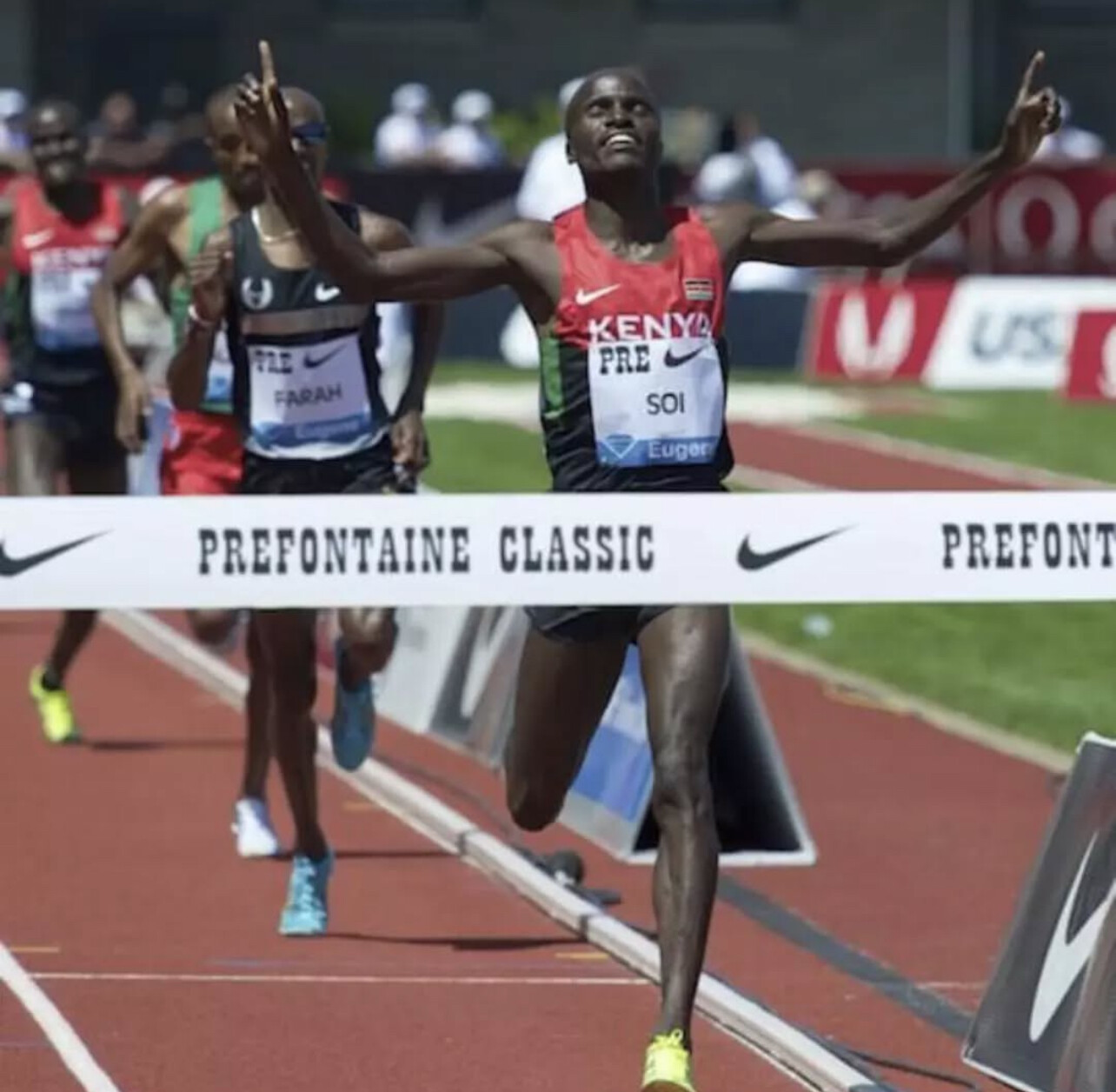
Now, over 15 years later, Soi continues to perform at an elite level. In early 2025, he placed on the podium at a major half marathon in Poland, proving that his speed and endurance have stood the test of time. But the accomplished Olympian is now expanding his impact beyond the track.
This year, Soi has teamed up with Bob Anderson, the founder of Runner’s World and the visionary behind the Kenyan Athletics Training Academy (KATA). Together, they are launching a unique initiative in Kericho, Kenya that combines world-class training with sustainable farming.
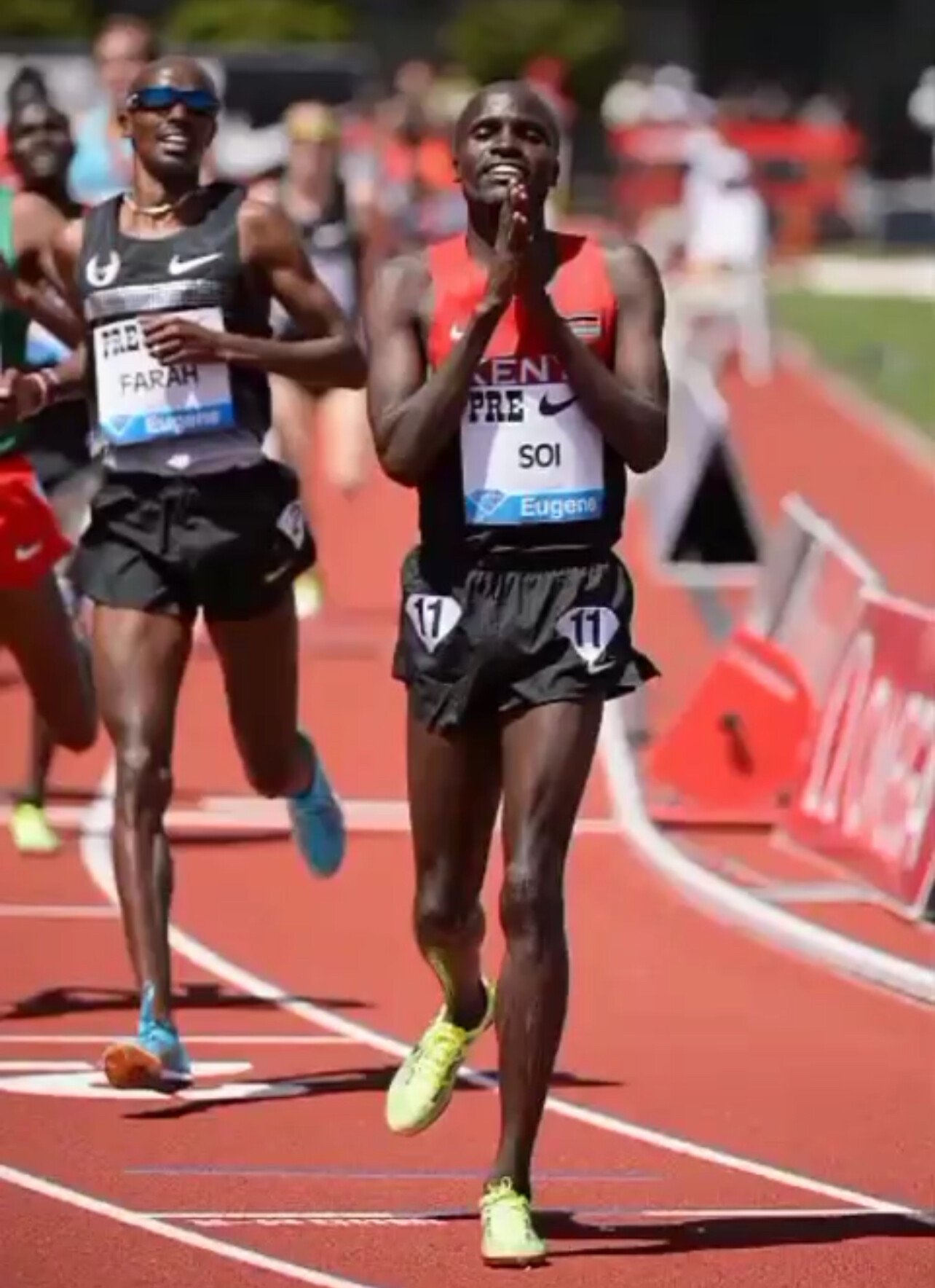
“I am very excited to be working with Bob Anderson on this new, unique program,” says Soi. “Bob has created something very special for athletes, and combining it with his ideas about farming KATA Potatoes gives us the opportunity to be sustainable. It’s perfect.”
A Vision Rooted in History
Bob Anderson’s connection to Kenyan running spans nearly four decades.
“I first traveled to Kenya in 1987 and saw and met many runners. I knew then that a program like what we have now set up was needed,” Anderson explains. “I returned with my wife Catherine in 2014 and met Elam and Joel. That’s when the idea for the Kenyan Athletics Training Academy (KATA) in Thika really started to take shape.”
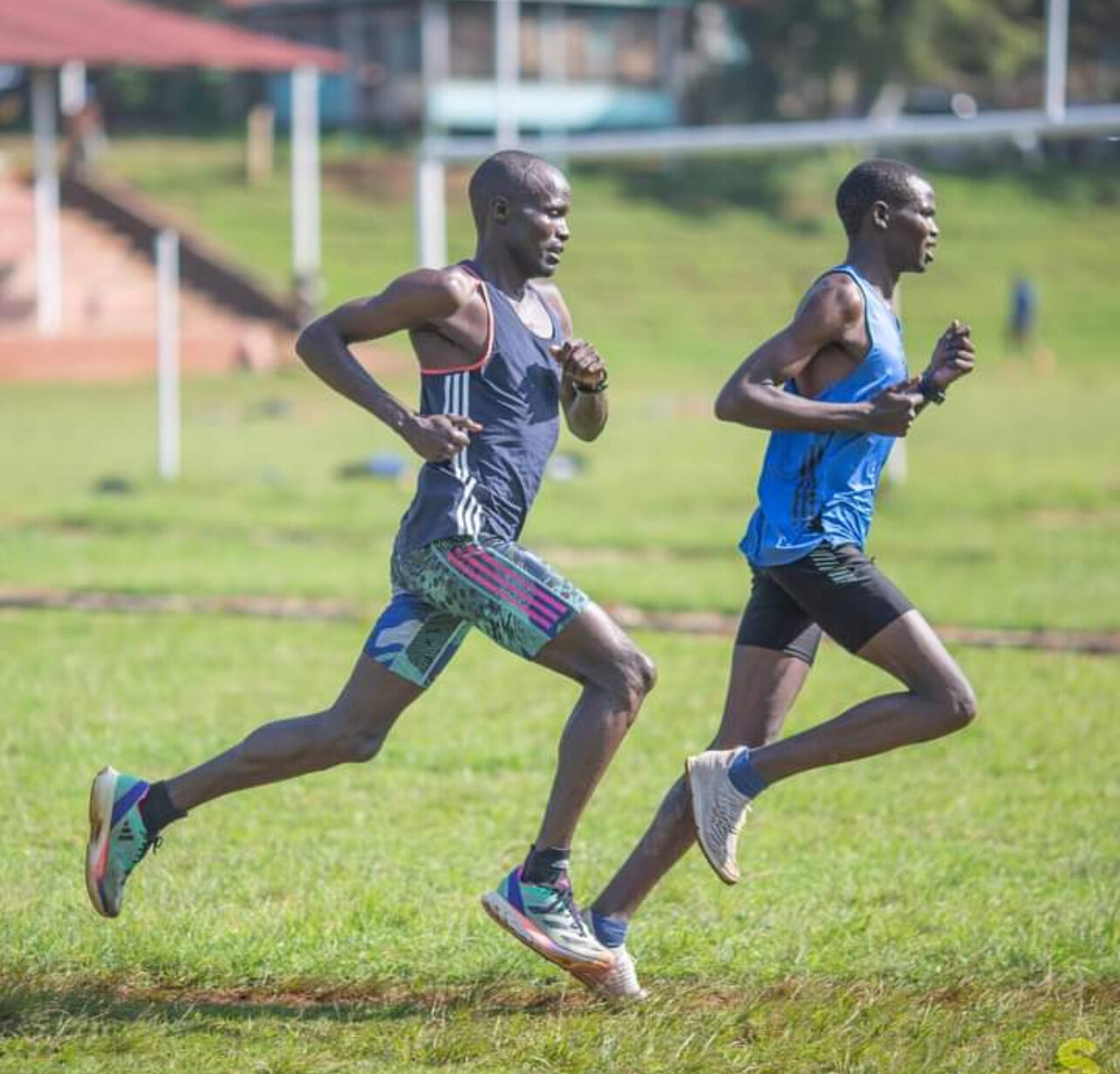
KATA officially opened in 2019, offering elite Kenyan athletes a base to train and grow. But the vision didn’t stop there.
In 2023, Anderson and longtime friend Brock Hinzmann (last photo) a 2:19 marathoner from Los Altos Hills, California, piloted the first KATA farm. The goal was to integrate agriculture into athlete development—creating a model where training and sustainability go hand in hand.
“We established a KATA farm in 2023 working with Brock, but the program needed some refinements. I finalized our new format in May of 2025. I told Edwin Soi about our program and he told me he loved the idea and jumped right on it,” says Anderson.
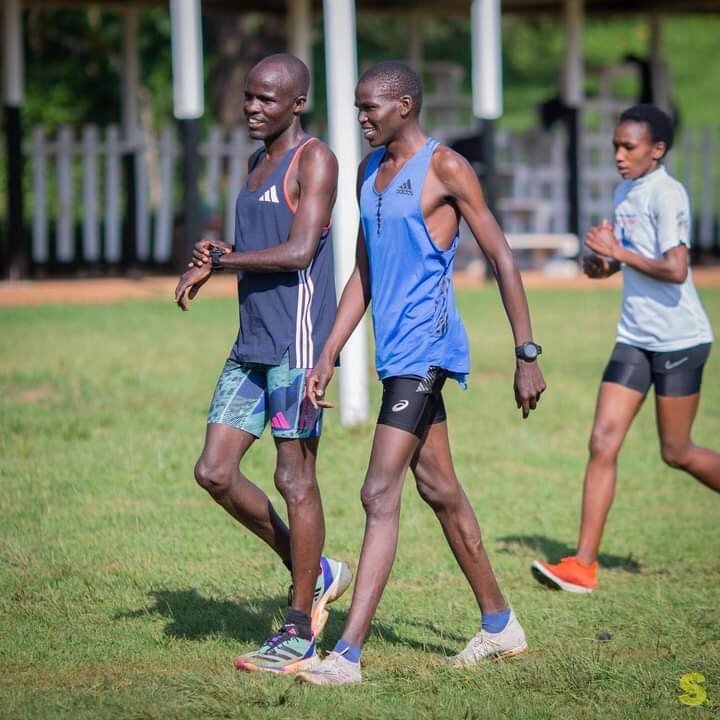
Kuresoi: A New Chapter
Now, with Soi’s leadership, the KATA Running Camp and Potato Farm in Kuresoi is set to become a flagship model for the future. Athletes will not only receive top-level training from one of the greatest distance runners of his generation, but they’ll also participate in sustainable farming practices—planting, maintaining, and harvesting KATA-branded potatoes.
The program provides housing, coaching, food, and competition opportunities—with the added benefit of long-term revenue from agriculture. It’s a model designed not just to develop athletes, but to support their lives beyond running.
“Edwin Soi brings credibility, passion, and wisdom to this project,” says Anderson. “It’s not just about winning races anymore—it’s about building something that lasts.”
Looking Ahead
With KATA camps now expanding across Kenya—including recent launches in Kapcherop, Molo, Nyandarua, and Kuresoi—the partnership between Bob Anderson and Edwin Soi represents a new chapter in Kenyan running. One where elite performance and local empowerment go hand in hand.
Soi’s journey—from Olympic bronze to coaching, mentoring, and planting the seeds of a new future—demonstrates what’s possible when world-class talent meets a visionary purpose.

by Boris Baron
Login to leave a comment
KATA Expands Global Footprint with Five New Running Camps Opening in June 2025
The Kenyan Athletics Training Academy (KATA) is advancing its mission to develop world-class runners and uplift rural communities by launching five new KATA Running Camps across Kenya in June 2025. These new satellite locations build upon KATA’s two well-established international retreats—in Thika, Kenya, and Monforte da Beira, Portugal—forming a growing global network grounded in endurance, discipline, and opportunity.
Five New Camps Opening in June

Each new camp will be led by accomplished athletes and coaches who deeply understand the training demands of distance running:
• Kericho, Kenya (~2,500m / 8,200 ft) – Operated by Edwin Soi, Olympic 5000m bronze medalist (2008) and road racing legend. The location offers quiet roads and soft dirt trails, ideal for interval training and long runs.
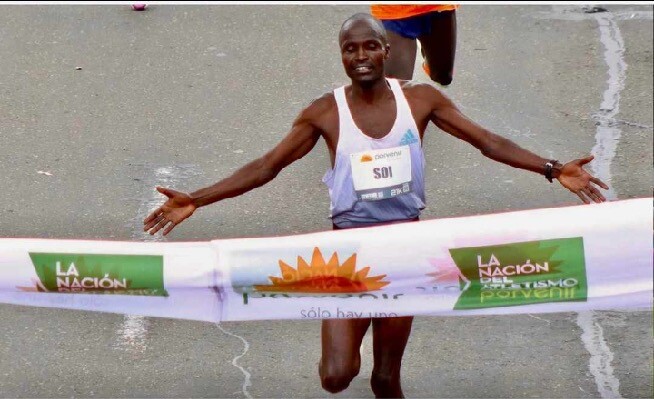
• Molo, Kenya (~2,440m / 8,000 ft) – Operated by Eric Chepkwony, a seasoned distance runner and coach. The terrain features hilly roads and scenic countryside paths that simulate real race conditions.
• Keringet, Kenya (~2,600m / 8,530 ft) – Operated by Sammy Dismas, a world-class runner and proven coach with numerous victories to his name. The camp features a mix of flat and rolling terrain ideal for tempo and progression workouts.
• Kapcherop, Kenya (~2,400m / 7,875 ft) – Operated by Philemon Kipruto, a respected local coach. Athletes benefit from forest trails and undulating village roads perfect for aerobic development.

• Nyandarua, Kenya (~2,300m / 7,550 ft) – Operated by Peter Njoroge, a dedicated coach with strong community roots. The camp includes grassy trails and high-elevation road loops ideal for base building.
Each of these camps blends elite training with mentorship, while also promoting sustainability through the KATA Potatoes project, a unique initiative that connects athletics to local agriculture and economic growth.
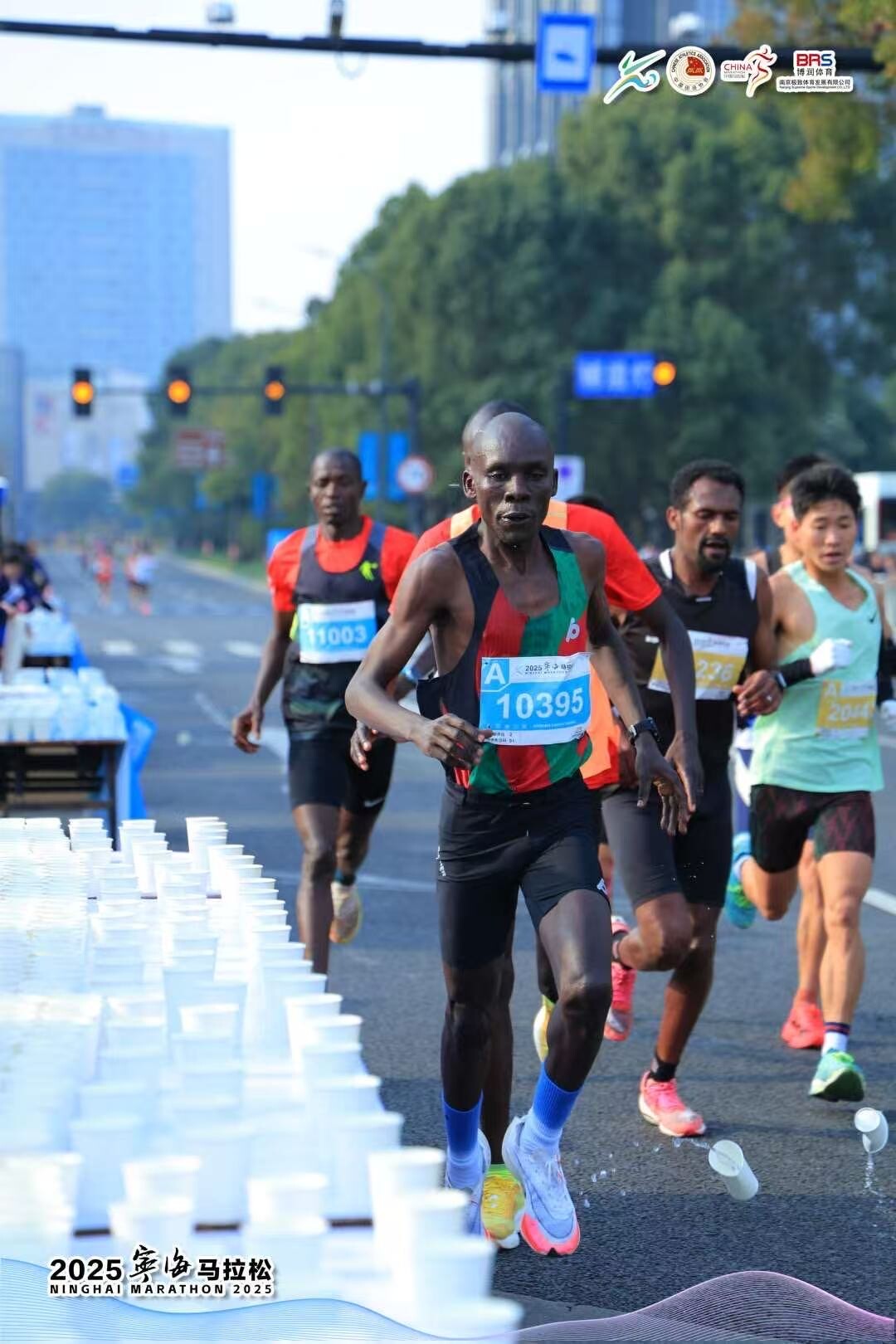
Established KATA Retreats in Kenya and Portugal
KATA’s flagship retreat in Thika, Kenya (~1,530m / 5,020 ft) continues to serve as a high-performance training hub. Managed by Christopher Muiruri, the retreat features a mix of paved loops, dirt roads, and peaceful paths—making it ideal for both elite athletes and visiting guests. KATA head coach John currently trains 20 KATA athletes and works closely with guest runners of all levels.
In 2024, KATA expanded into Europe with a retreat in Monforte da Beira, Portugal (~470m / 1,540 ft). Managed by Alberto Santos, the retreat is located at the historic Anderson Manor, just one hour from the Spanish border. The setting features technical trails, scenic roads, and a wellness-focused environment. Bob Anderson and his wife Catherine now spend about 35% of their time at this location, which serves as a perfect base to teach the Kenyan training philosophy. At least one accredited Kenyan coach is on-site at all times.
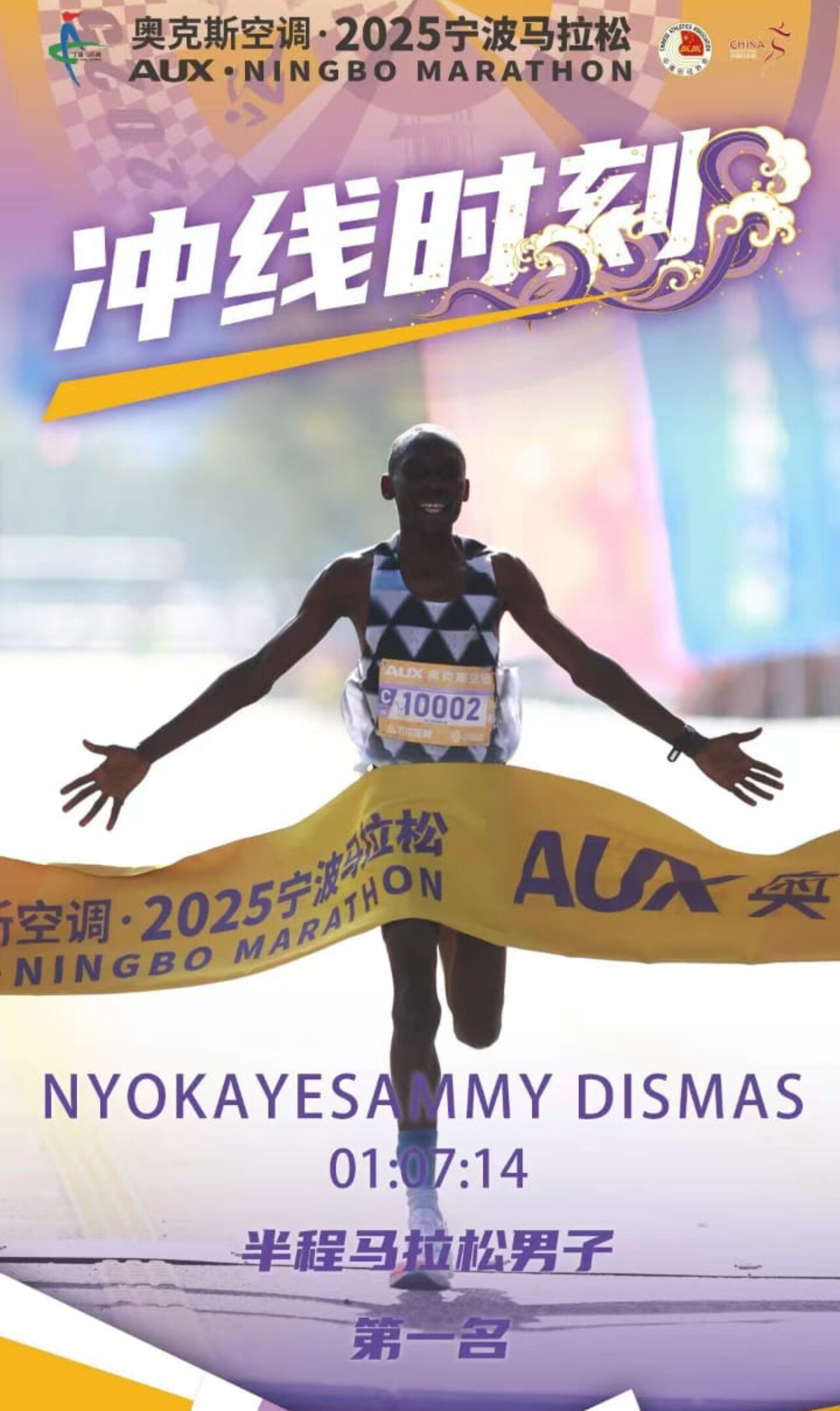
A Vision Rooted in Training and Transformation
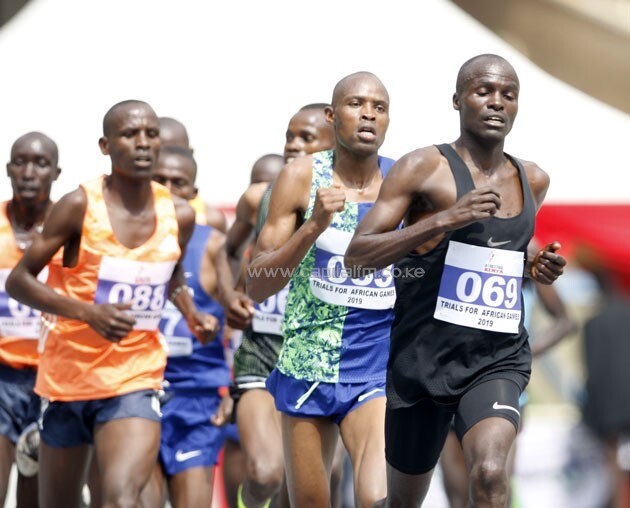
KATA was founded by Bob Anderson, creator of Runner’s World and a lifelong runner—he has been running since February 19, 1962. His vision goes beyond athletic excellence. It’s about building stronger communities through sport and shared purpose.
“This is not just about running fast,” says Anderson. “It’s about building strong roots—on the track, in the field, on the road, and within the community.”
Looking ahead, Anderson adds:

“We’re planning to open another five KATA Running Camps in Kenya by the end of the year. This is a new concept, and the feedback so far has been overwhelmingly positive.”
by Boris Baron
Login to leave a comment
It's a new dawn for kata. Kata is the best training camp to be - Elam wangwero 6/6 8:40 am This idea of KATA started with a dream I shared with Elam back in 2014. - Bob Anderson 6/6 11:26 am |
Blistered During a Race? Here’s What You Should Do to Keep Going Without Long-Term Damage
It’s one of the worst things that can happen mid-race: that sudden, sharp sting in your shoe signaling a blister is forming. And you’re only a few miles in.
My Best Runs editor and lifetime runner Bob Anderson knows the feeling all too well.
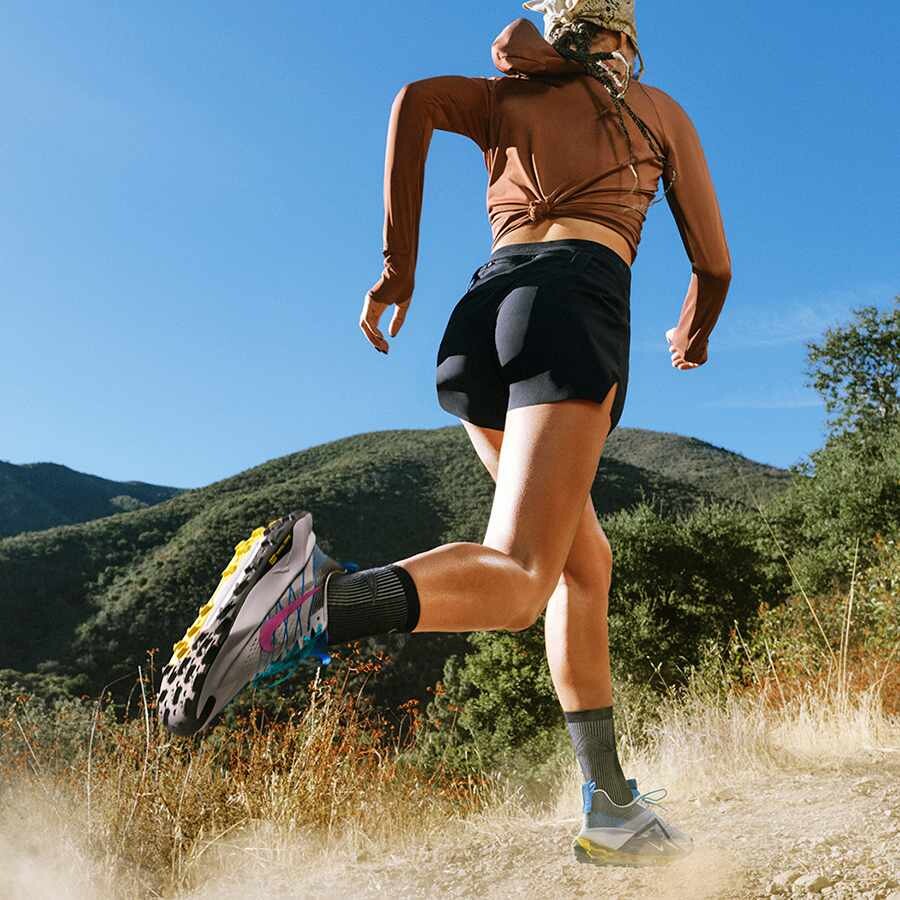
“I blistered up just two miles into the Honolulu Marathon,” he recalls. “It was raining, and my feet were sliding around inside my shoes. I should have stopped and done something right then—but I didn’t. I kept going and paid the price. By the end, my feet were destroyed. It took four weeks to fully recover.”
Despite the pain, Bob still managed to finish in 3:19.
“But I was in shape to run under three hours,” he says. “Had I taken a minute to fix the issue early, maybe I could have still gone sub-3. But by doing nothing and just toughing it out, that mistake probably cost me at least 19 minutes.”
Blisters can derail a race and impact your training for weeks. But there are smart steps runners can take—both during the race and in the aftermath—to minimize damage and keep moving safely.
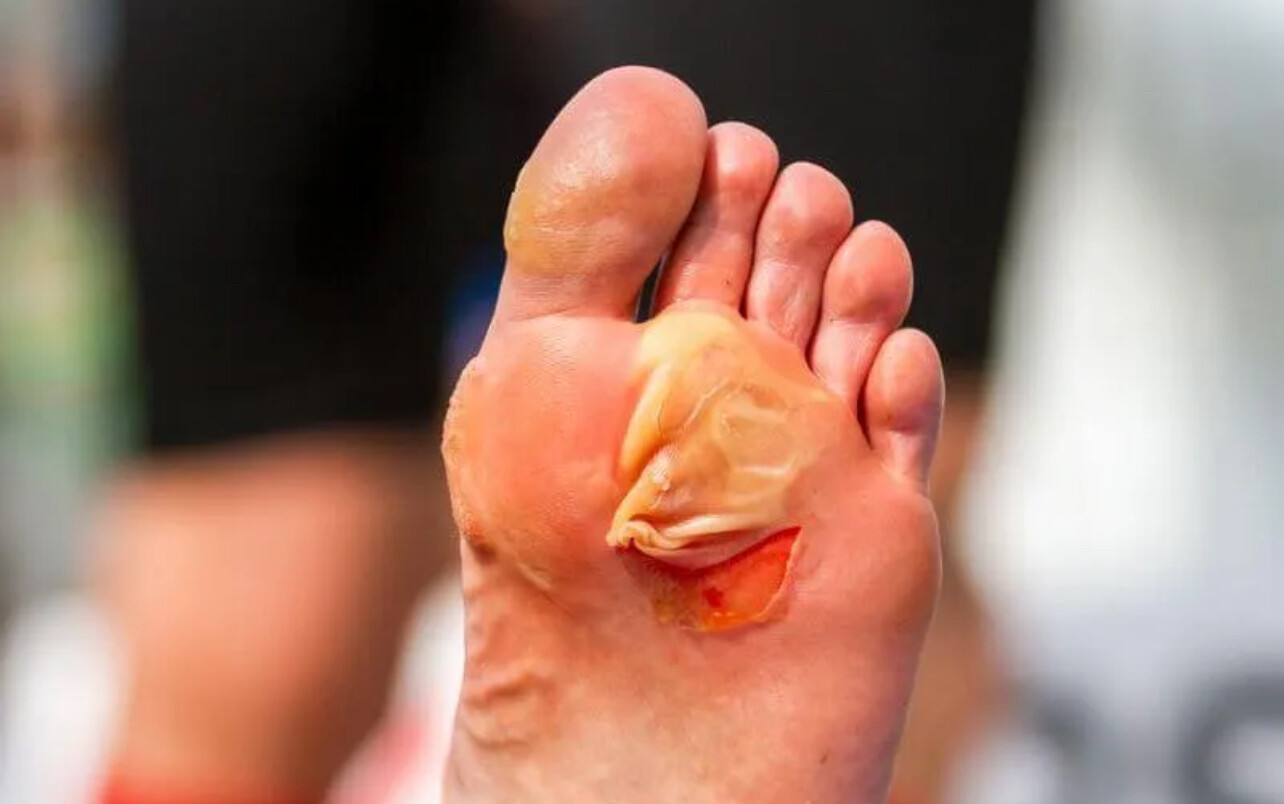
1. Catch It Early
Blisters typically begin as a “hot spot”—a warm, irritated area of skin caused by friction. If you act quickly, you can stop it from getting worse.
What to do:
At the first sign of discomfort, stop at the next aid station if possible.
Apply a lubricant, bandage, or blister pad (carry a small kit if you’re prone to them).
Adjust your shoelaces to reduce foot movement inside the shoe.
2. If the Blister Bursts Mid-Race
Once a blister bursts, the exposed skin becomes vulnerable. Continuing without protection can lead to serious tearing and infection.
What to do:
Rinse the area with water if available.
Apply gauze, moleskin, or medical tape to reduce further friction.
Use a lubricant or balm to prevent sticking or tearing.
3. Don’t Tough It Out Blindly
Trying to grit your way through blister pain without addressing it can lead to altered mechanics, more injuries, or even a DNF.
What Bob could have done differently:
Worn water-resistant or anti-blister socks.
Applied anti-chafe balm or blister prevention tape before the race.
Carried a small emergency blister kit.
Visited a medical tent early for assistance.
4. Post-Race: Treat It Right Away
Finishing a race with open or torn blisters demands proper care—don’t delay.
Post-race recovery tips:
Clean the area with warm water and antiseptic.
Drain large blisters with a sterile needle (never remove the overlying skin).
Apply antibiotic ointment and loosely cover with gauze.
Take time off to let it fully heal before returning to training.
5. The Best Fix Is Prevention
Preventing blisters begins before the starting gun ever goes off.
Break in shoes well ahead of race day.
Use moisture-wicking or toe socks.
Apply Body Glide or petroleum jelly to known hot spots.
Keep toenails trimmed and feet dry.
Practice in the same shoes and socks you’ll race in—especially in wet weather.
Bottom Line:
If you feel a blister forming mid-race, don’t ignore it. A quick stop to address the issue could save your race—and your recovery. It’s better to lose a minute than weeks of training—or, in Bob’s case, 19 minutes and a shot at a sub-3.
by Boris Baron
Login to leave a comment
Sleep Like a Champion: Why Rest May Be Your Most Powerful Running Tool
Most runners focus on mileage, splits, and fueling—but there’s one key performance enhancer that’s often overlooked: sleep. Elite athletes and sports scientists increasingly agree that rest isn’t just recovery—it’s training.
Sleep and Performance: What Science Says

During deep sleep, the body releases human growth hormone (HGH), which repairs muscles, rebuilds tissues, and restores energy. Your immune system strengthens, the brain consolidates motor memory (important for running form), and muscles rebuild stronger.

Sleep deprivation can lead to:
• Slower reaction times and decision-making
• Increased injury risk
• Poor glycogen storage
• Reduced endurance and mental focus
Simply put: if you’re not sleeping well, your training gains are compromised
What Elite Runners Are Doing
Top runners are making sleep a priority—right alongside workouts and recovery days.
• Eliud Kipchoge sleeps 9+ hours per night and takes a daily nap to support his high-volume training.
• Molly Seidel calls sleep her “number one recovery tool.”
• Jakob Ingebrigtsen is known for dialing back screen time and evening stress to protect sleep quality.
Coaches across the globe now structure training schedules to ensure athletes can rest, especially before and after intense sessions.
Sleep Tech: Measuring What Matters
Devices like the Whoop Strap, Oura Ring, and Garmin sleep trackers are giving runners new insight into recovery. These tools track heart rate variability (HRV), sleep stages, and readiness scores, helping athletes fine-tune their training and rest cycles.
How to Optimize Your Sleep for Better Running
1. Stick to a sleep schedule – go to bed and wake up at the same time daily.
2. Create a wind-down routine – limit screens, caffeine, and stress before bed.
3. Keep your bedroom cool and dark – around 65°F (18°C) is ideal.
4. Avoid late-night workouts – they can spike adrenaline and delay sleep.
5. Prioritize naps if nighttime sleep falls short – even 20 minutes helps.
Your next personal best might not come from a new training block or pair of shoes—it might come from simply getting more sleep. If you’re serious about performance, sleep is non-negotiable.
Train hard. Sleep smarter. Recover stronger.
by Boris Baron
Login to leave a comment
Esther Pfeiffer Keeps Racing—and Winning—On Her Own Terms
Esther Pfeiffer isn’t afraid to race. In fact, she races more often than most elite long-distance runners ever dare to. While some athletes carefully pick two or three races a year to peak for, Esther is out on the roads again and again—racing hard, running smart, and often finishing at the front.
The 27-year-old German half marathon and marathon standout is not only the reigning national champion at both distances, but she’s also become one of the most recognizable faces in European road racing. Her 2025 season has already been packed with podium finishes, including a win at the German Half Marathon Championships in Paderborn and a stunning personal best of 1:09:16 at the Berlin Half Marathon. That performance made her the fastest German woman in the race.
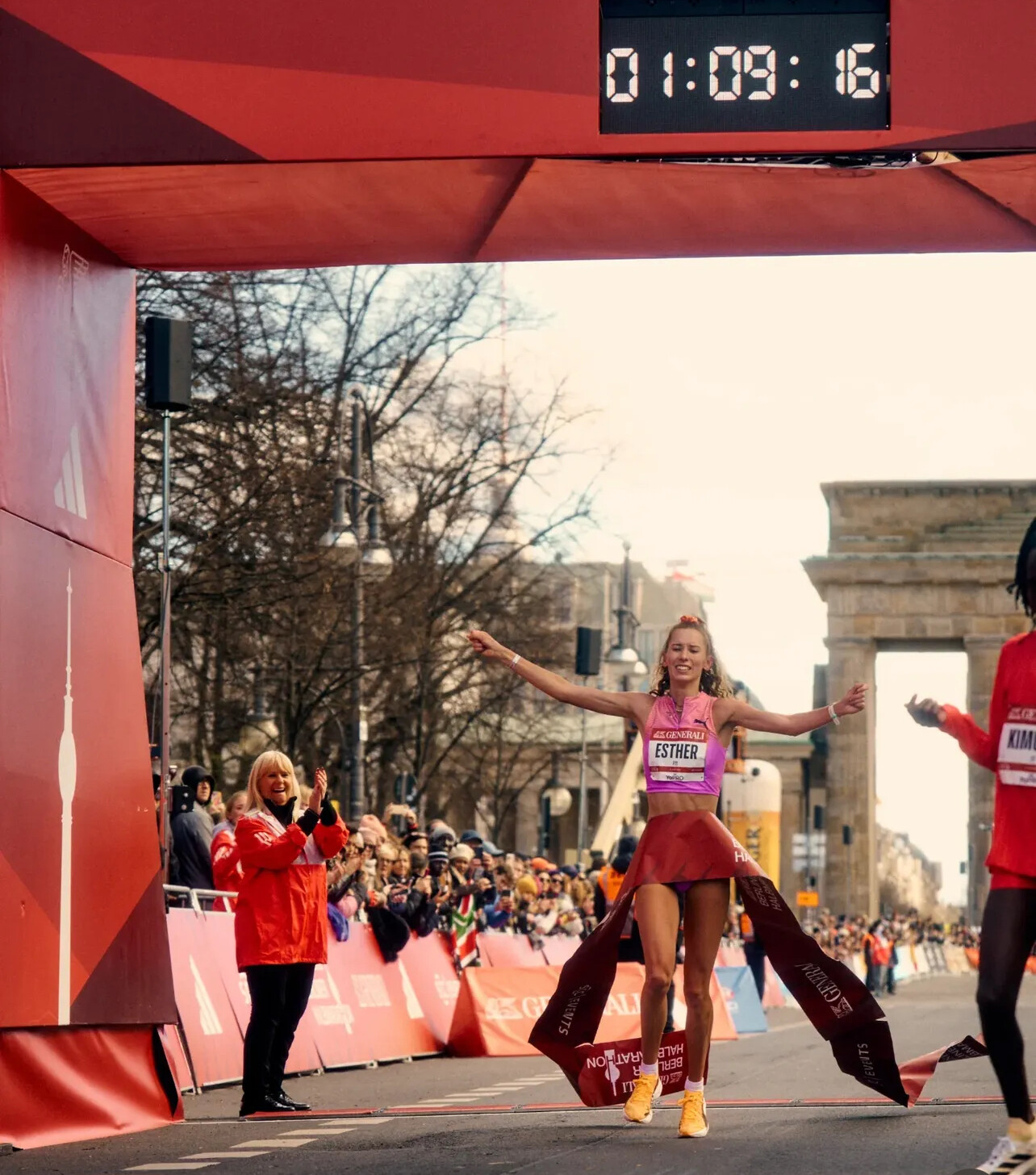
But to reduce Esther Pfeiffer to just her times and medals would miss the heart of her story.
A Love for Racing, Not Just Results
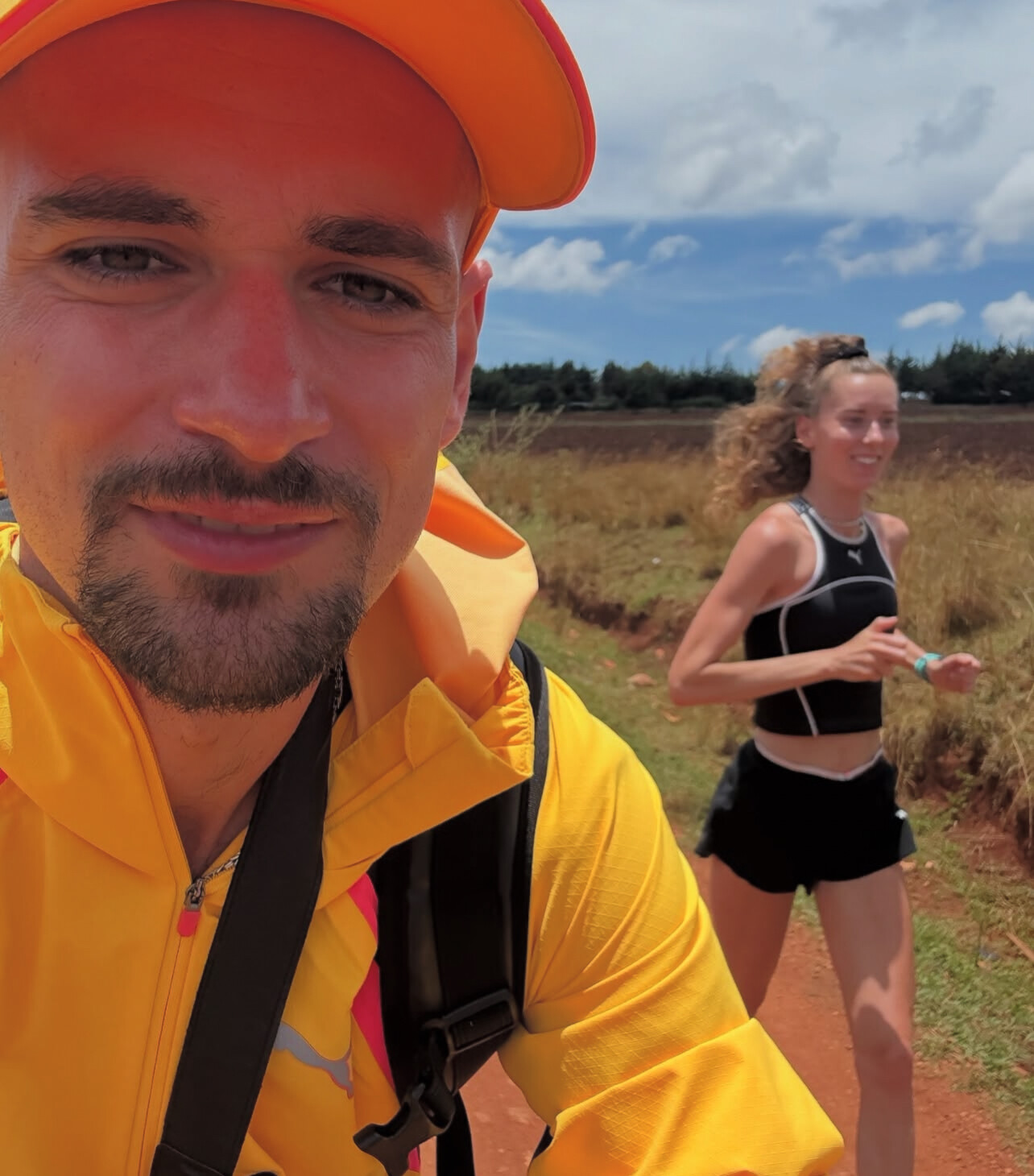
What sets Esther apart is her sheer passion for competing. Some critics say she races too often. But Esther doesn’t see it that way. For her, every race is a chance to grow, to test herself, and to stay connected to the joy that brought her into the sport in the first place. It’s not about obsessing over splits or staying within the confines of a traditional training cycle—it’s about doing what she loves, frequently, and fearlessly.
Esther’s approach may not fit the mold, but it’s working. She’s not breaking down. She’s thriving. And fans across Germany have taken notice.

Running and Life, Side by Side
In early 2024, Esther married fellow distance runner Hendrik Pfeiffer, himself a top German marathoner. The two often train and race together, and their bond has become a central part of her life on and off the course. It’s clear they’ve built more than just a marriage—they’ve built a team.
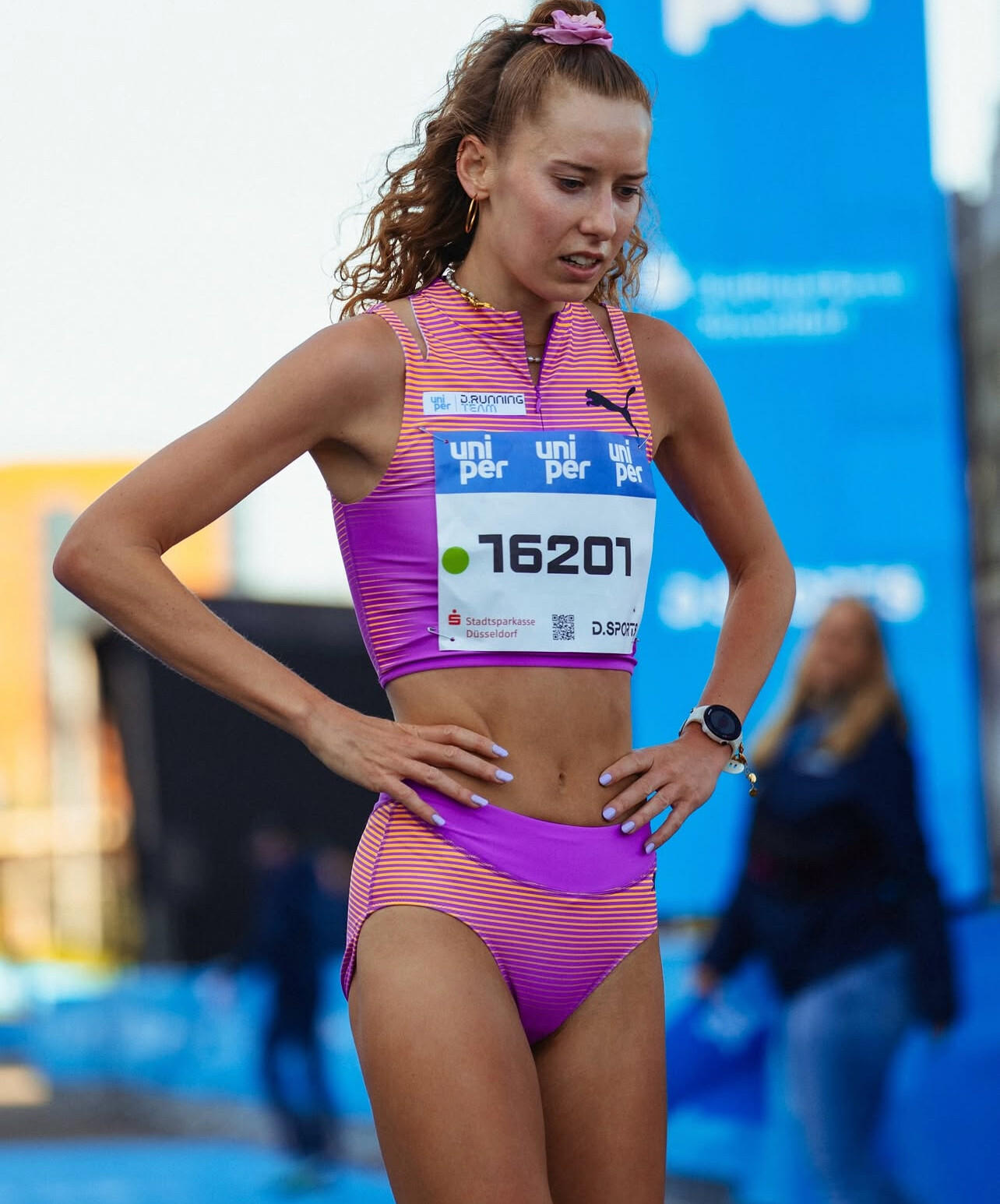
Those who know Esther describe her as focused yet light-hearted, serious about her goals but never too far from a laugh. Her social media posts often show her celebrating with fellow runners, supporting local events, and sharing the ups and downs that come with the sport. There’s no superstar ego—just a down-to-earth competitor who genuinely enjoys the journey.
More Than a Medal Count
Esther’s rise hasn’t been meteoric. It’s been steady, deliberate, and built on consistency. She doesn’t show up just for the glamour races. She runs small events and city half marathons. She enters national championships and world events. She even won the global Wings for Life World Run in 2025, covering 59.03 kilometers—the furthest distance by any German woman that year.

That kind of volume would be unthinkable for many elite runners. But for Esther, it’s what keeps her sharp—and smiling.
Still Just Getting Started
Esther Pfeiffer isn’t waiting for the perfect conditions, the perfect build-up, or the perfect race. She’s already out there—competing, winning, learning, and enjoying the sport on her terms.
And with the way she’s running, don’t be surprised if the best is still to come.
by Boris Baron
Login to leave a comment
Molly Huddle Is Redefining What It Means to Be a Mother and an Athlete
Molly Huddle, a two-time Olympian and former American record holder, has never been one to back down from a challenge. At 40, she is expecting her second child in May 2025—and using her platform to change how the sports world supports female athletes through pregnancy and motherhood.
This year, Huddle signed on as a Saucony ambassador, reaffirming her presence in the elite running community. But as her competitive calendar takes a backseat, her advocacy is moving to the front of the pack.
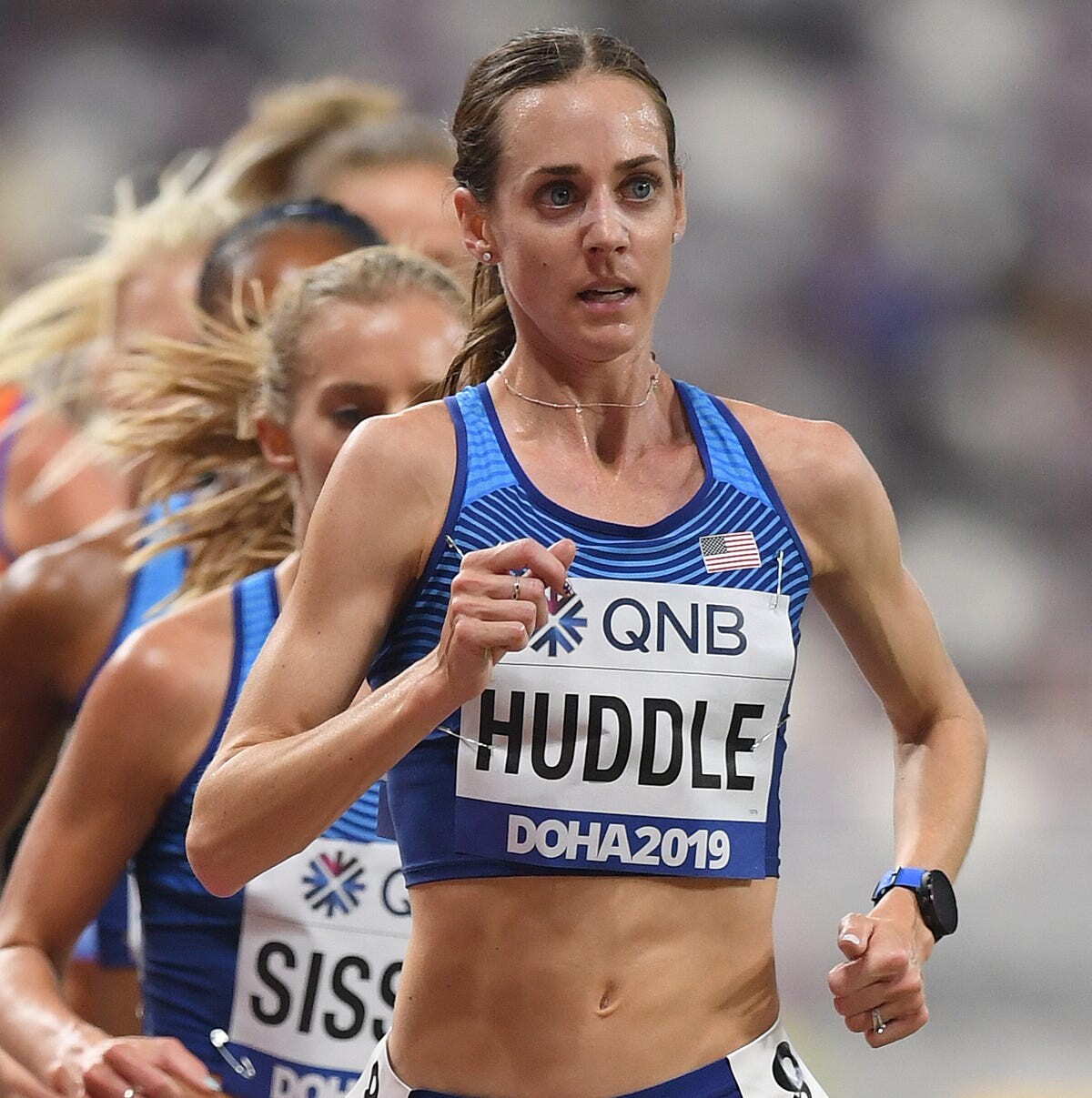
In a powerful Instagram post for National Girls and Women in Sports Day, Huddle opened up about the tension she felt throughout her career between maintaining her “sports body” and planning a family:
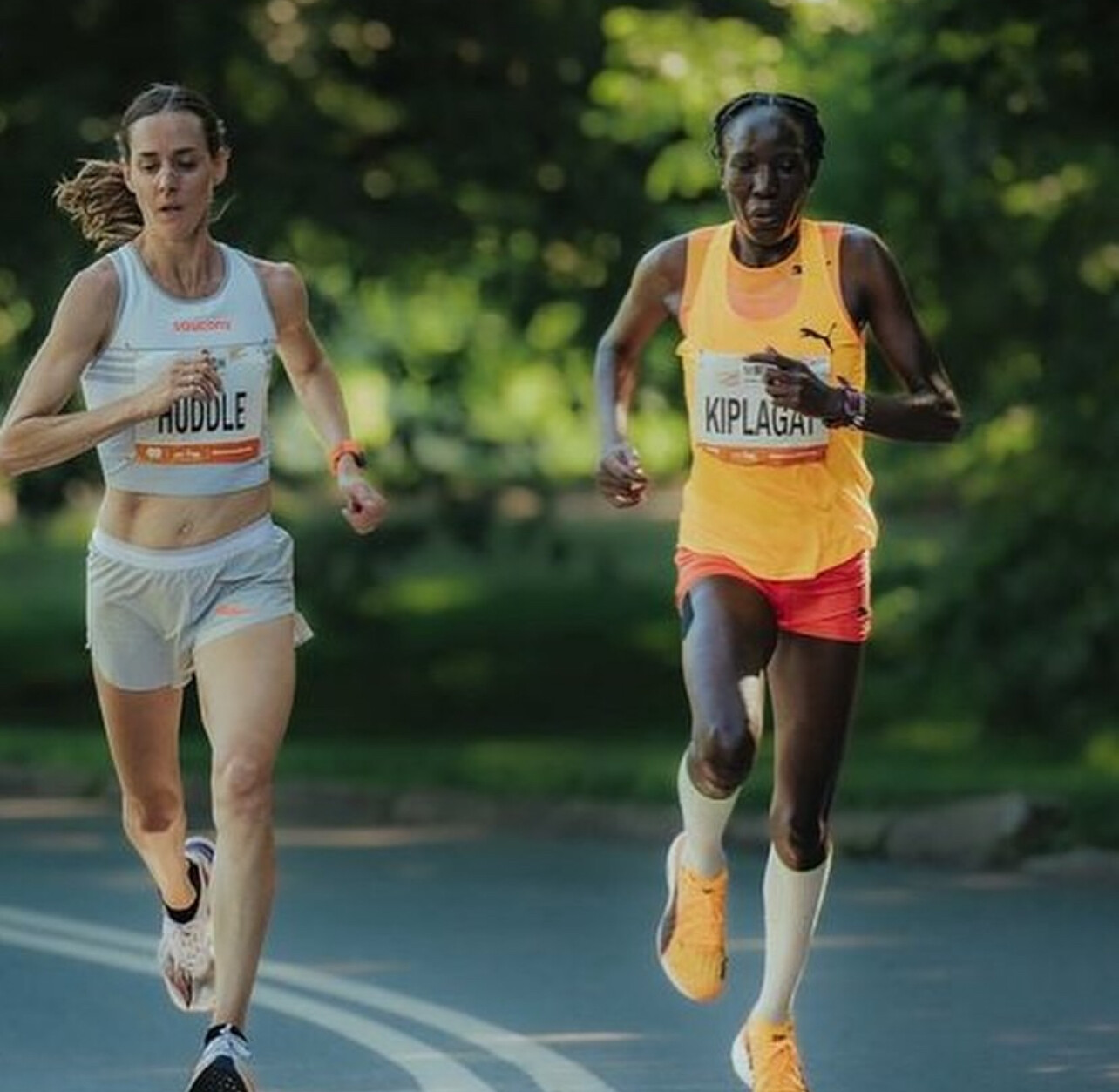
“The thing is, they’re the same amazing body, but it felt like the expectation was to be one, then retire and be the other. It would have made me feel less stressed to have more information, resources, support, and visible role models around all the ways you can thrive in both an athletic career and motherhood someday.”
Now, she’s working to ensure that future generations of women don’t face the same conflict.
Huddle advocates for:
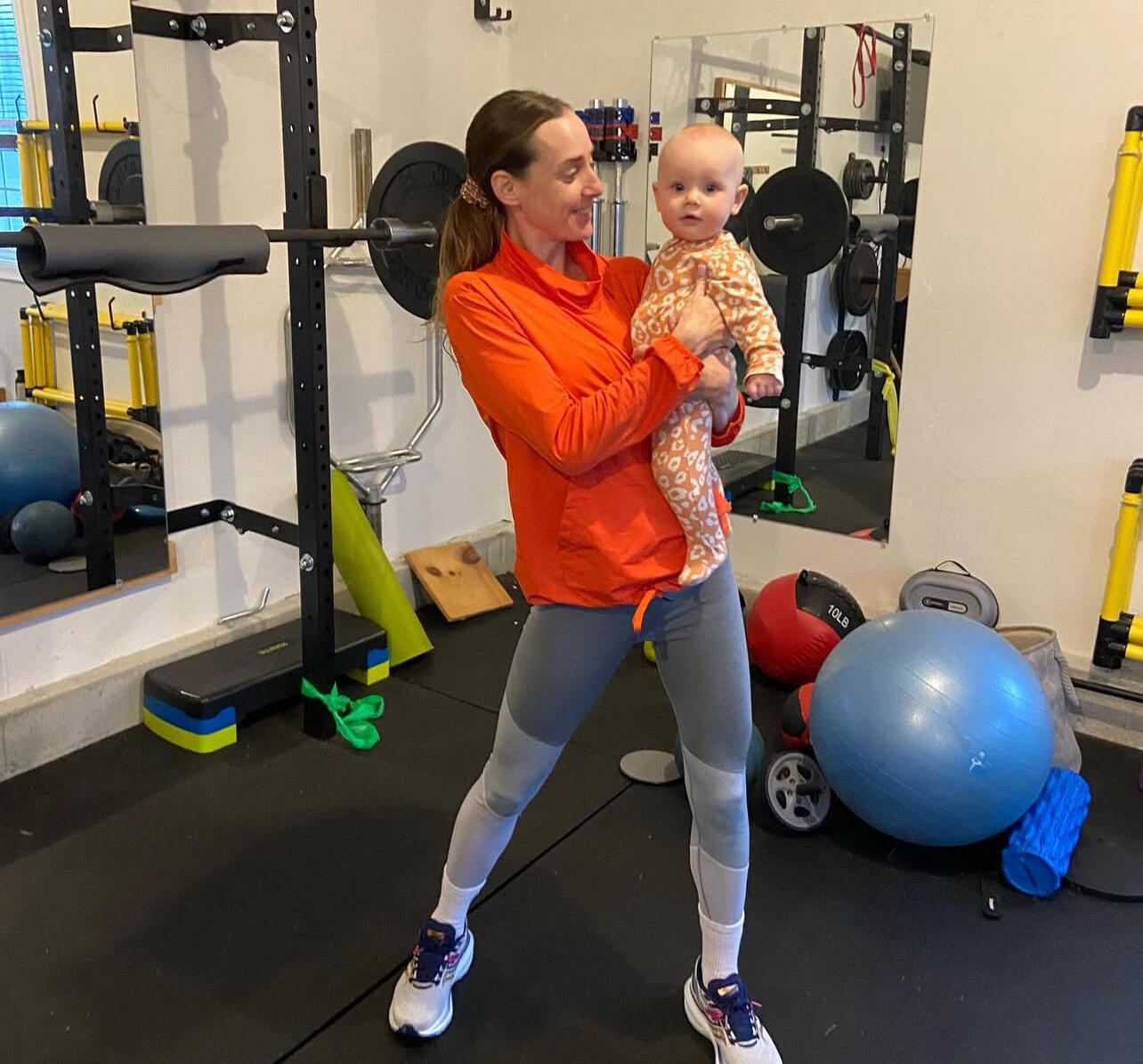
• Fertility freedom and open discussions about pregnancy planning in sports
• Better access to information and medical guidance during postpartum recovery
• Childcare support for elite athletes and funding structures that don’t penalize pregnancy
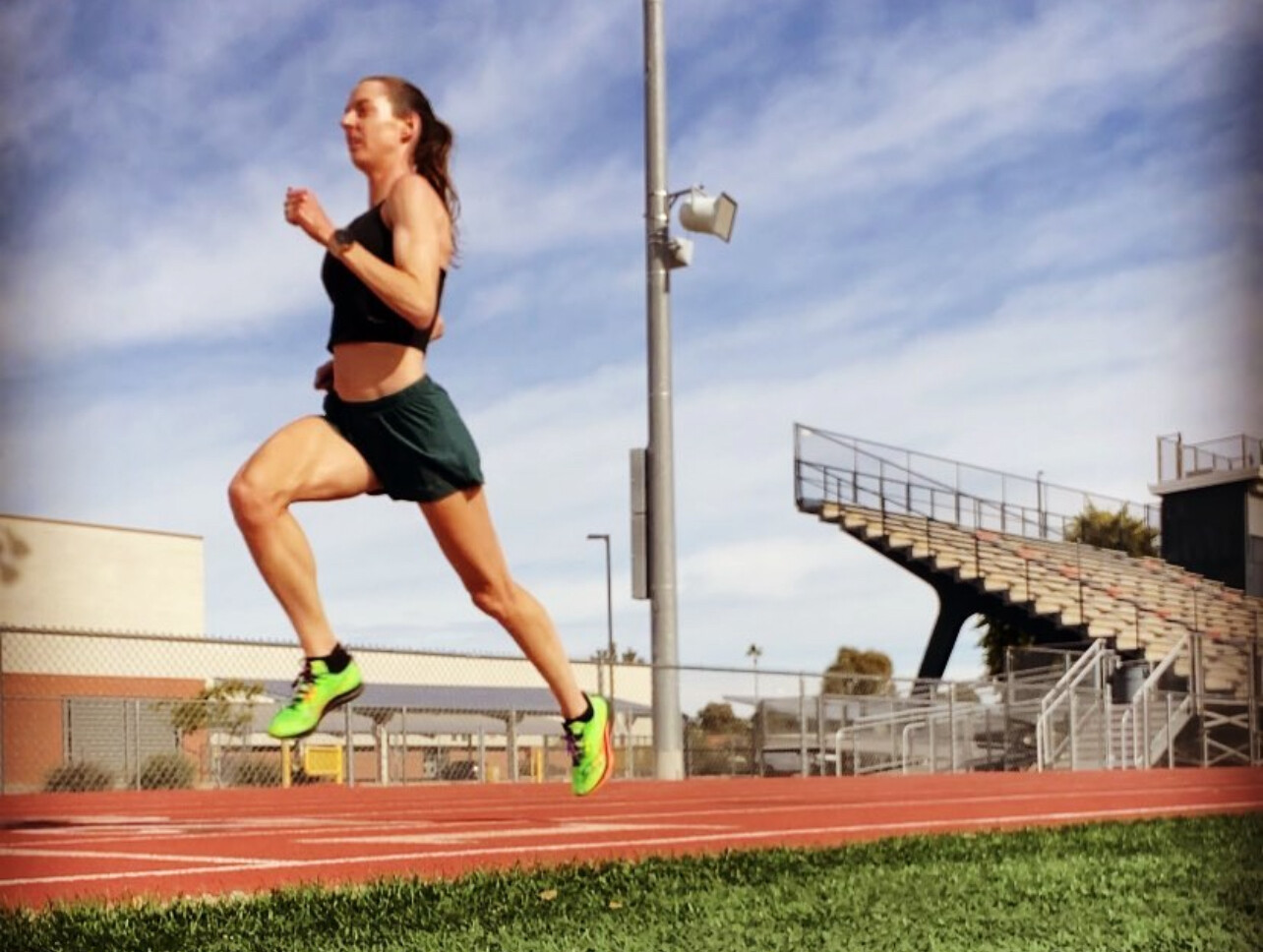
• More inclusive research and data around female-specific training and injury prevention
She continues to amplify these messages on her “Keeping Track” podcast, which she co-hosts with fellow Olympians Alysia Montaño and Roisin McGettigan. The show has become a vital platform for highlighting issues at the intersection of sports, gender, and family life.
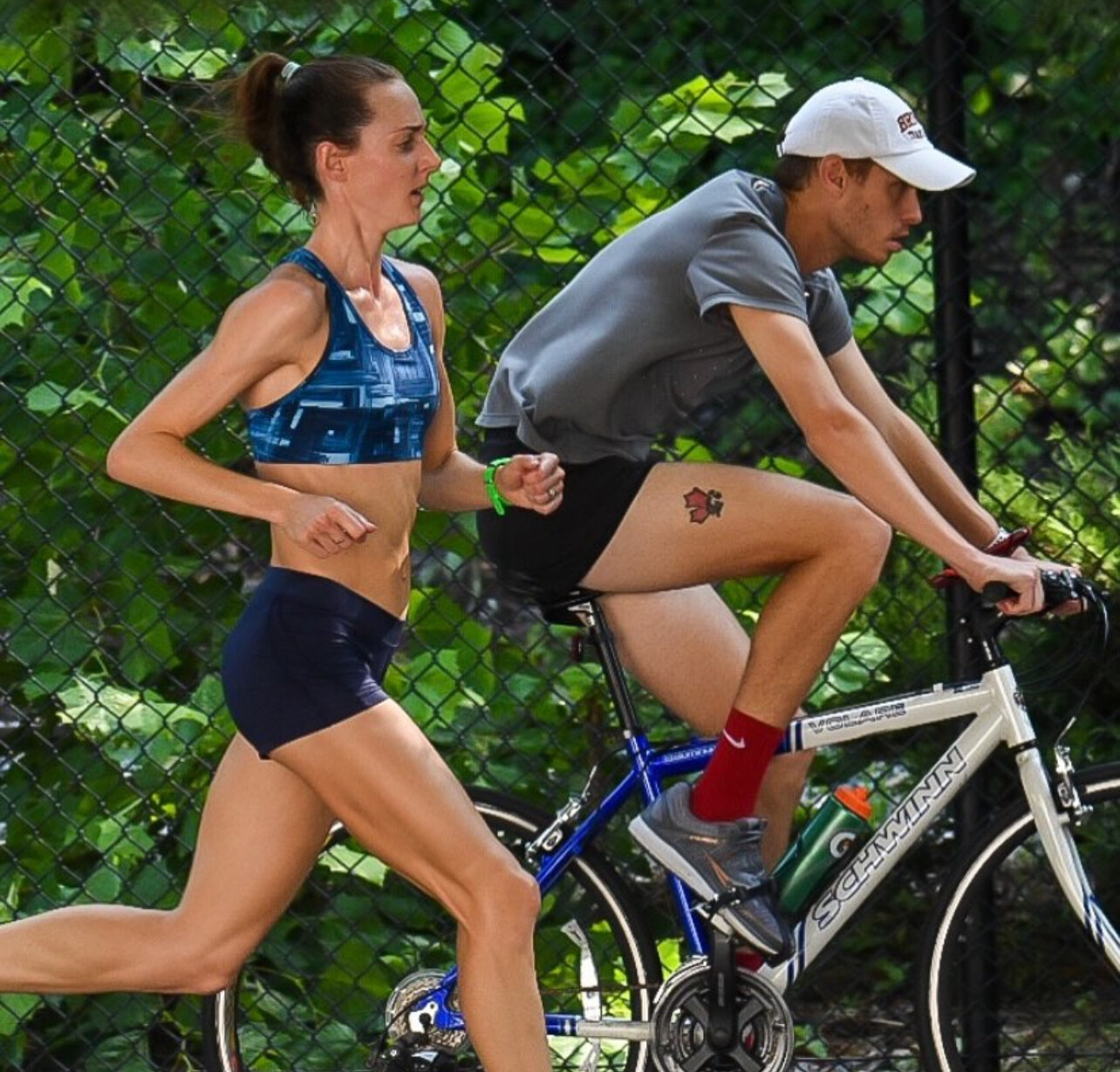
“I’d love the future of women’s sports to allow you to feel supported as your whole self the whole time,” Huddle added in her post. “More options and resources around fertility freedom is a way to start.”
Through her writing for Runner’s World, guest essays on ParentData, and her podcast work, Huddle is creating a new blueprint—one where a successful running career and motherhood don’t exist in opposition, but in harmony.
As she prepares to welcome her second daughter, Molly Huddle is racing toward a bigger goal: a sports world that finally supports women through all stages of life.
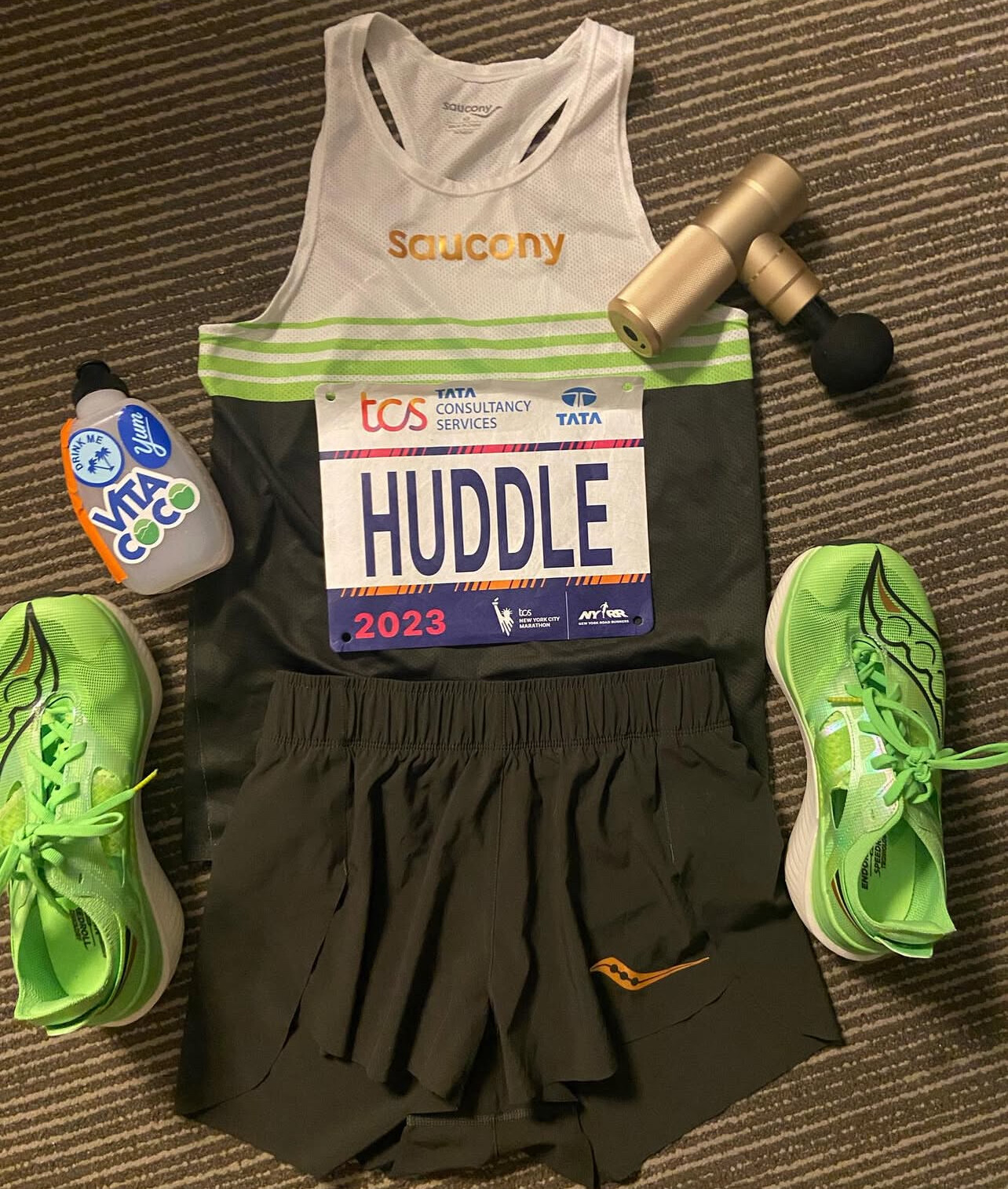
by Boris Baron
Login to leave a comment
Myth Meets Mountain: Adkin and Machoka Conquer Romania’s Zmeu X-Fest
The 2025 World Mountain Running Association (WMRA) World Cup commenced on Saturday, May 3, with a dramatic and demanding debut at the Zmeu X-Fest in Câmpulung Moldovenesc, Romania. Set against the mystical backdrop of Bukovina’s pine forests and steep alpine meadows, the 19.6 km course featured a punishing 1,750 meters of elevation gain, including the infamous “Runc” climb—ominously nicknamed “The Wall.”
Women’s Race: Adkin Ascends to Victory
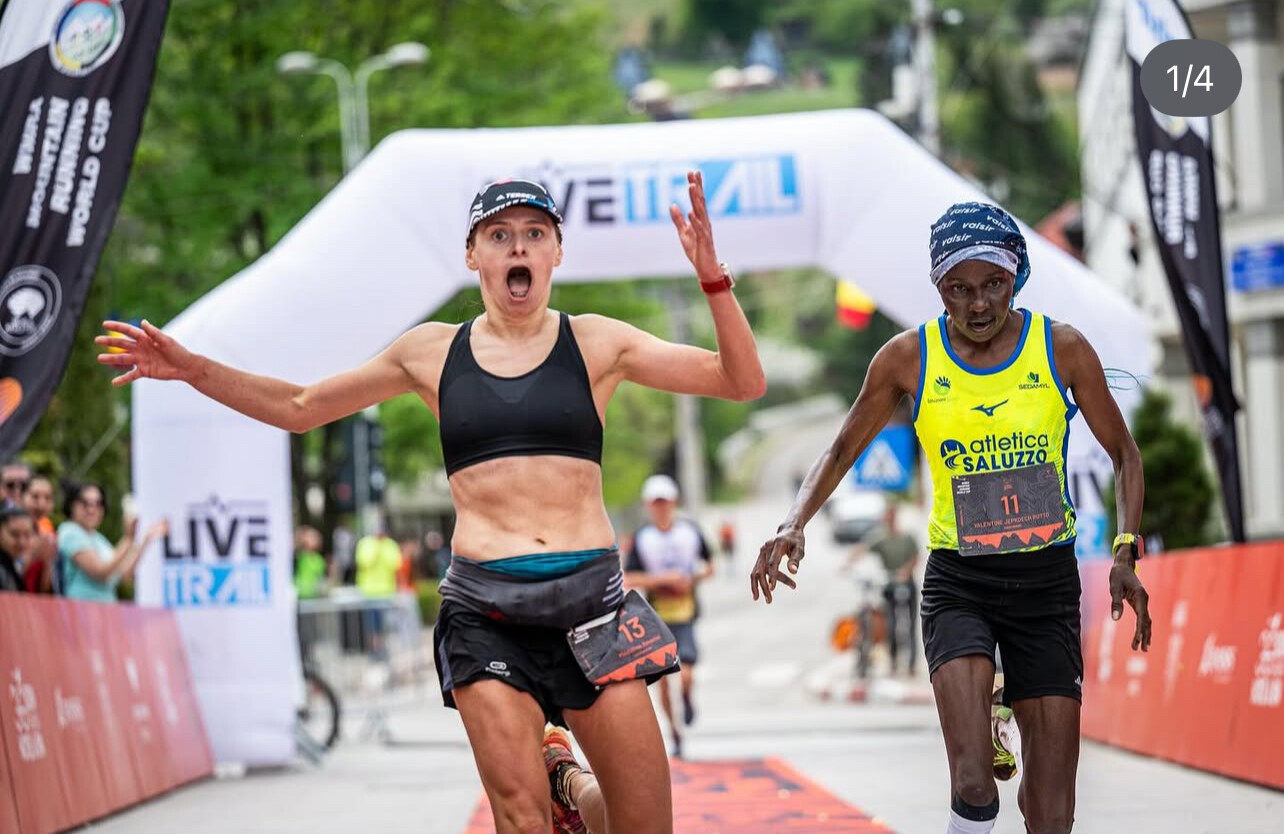
Britain’s Scout Adkin launched her World Cup campaign with a commanding performance, claiming the women’s title and finishing eighth overall. After pacing herself through the early climbs, Adkin surged ahead on the Runc ascent, pushing at an astonishing 1,700 meters per hour. She maintained her lead through the technical descents, crossing the finish line with a comfortable margin.
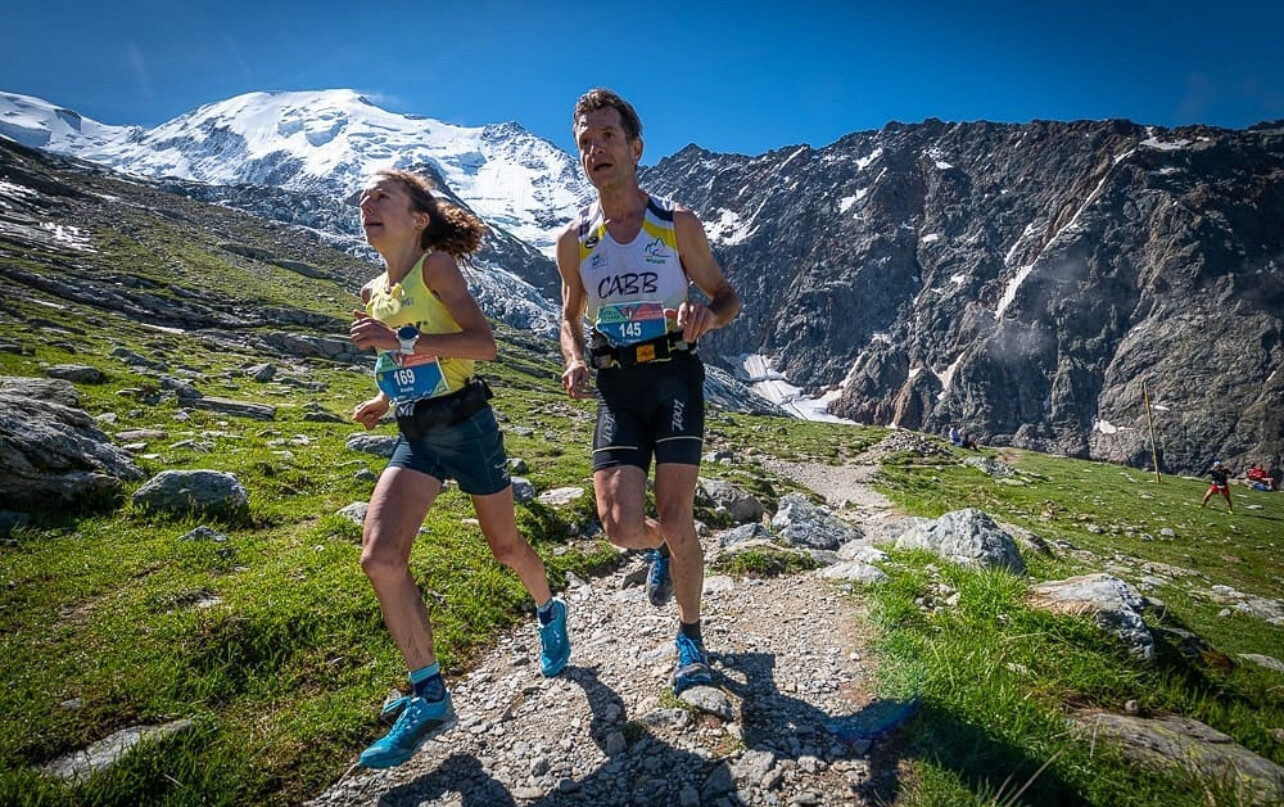
“The course is savage—but spectacular,” Adkin remarked post-race, praising both the terrain and the crowd support.
The battle for second place culminated in a rare photo finish between Kenya’s Valentine Rutto and Romania’s Mădălina Amăriei, both delivering gutsy performances on home soil.
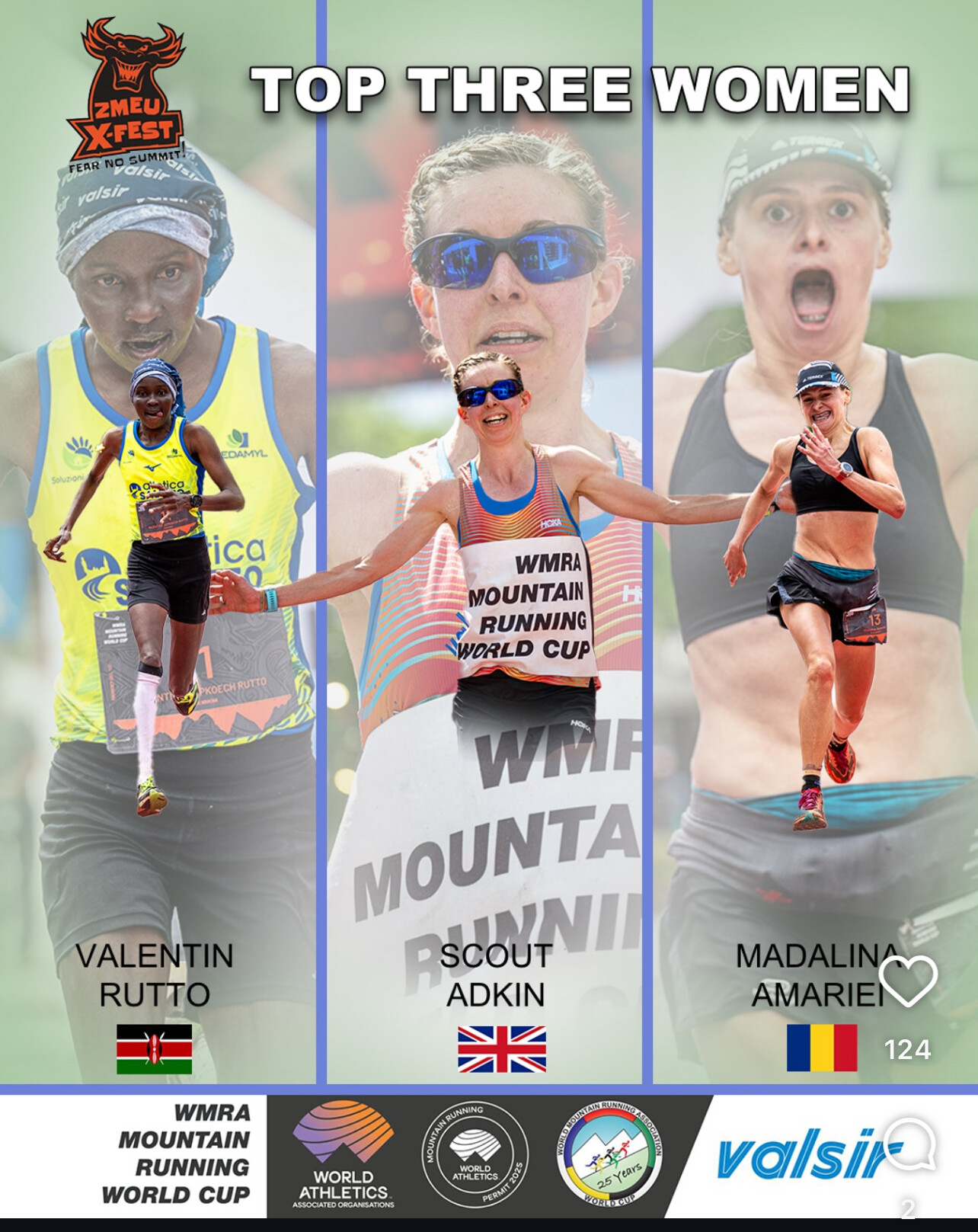
Top 3 Women’s Results:
1. Scout Adkin (Great Britain) – 2:03:18
2. Valentine Rutto (Kenya) – 2:03:33
3. Mădălina Amăriei (Romania) – 2:03:33
Men’s Race: Machoka Holds Off Late Surge
In the men’s race, Paul Machoka of Kenya delivered a masterclass in pacing and grit. Alongside compatriot Kevin Kibet, Machoka set a blistering early tempo, ascending at 2,200 meters per hour. Italian veteran Henri Aymonod mounted a fierce comeback over the final 5 km, closing a 30-second gap and nearly catching the Kenyan duo. However, Machoka held firm to secure the win in a thrilling finish.
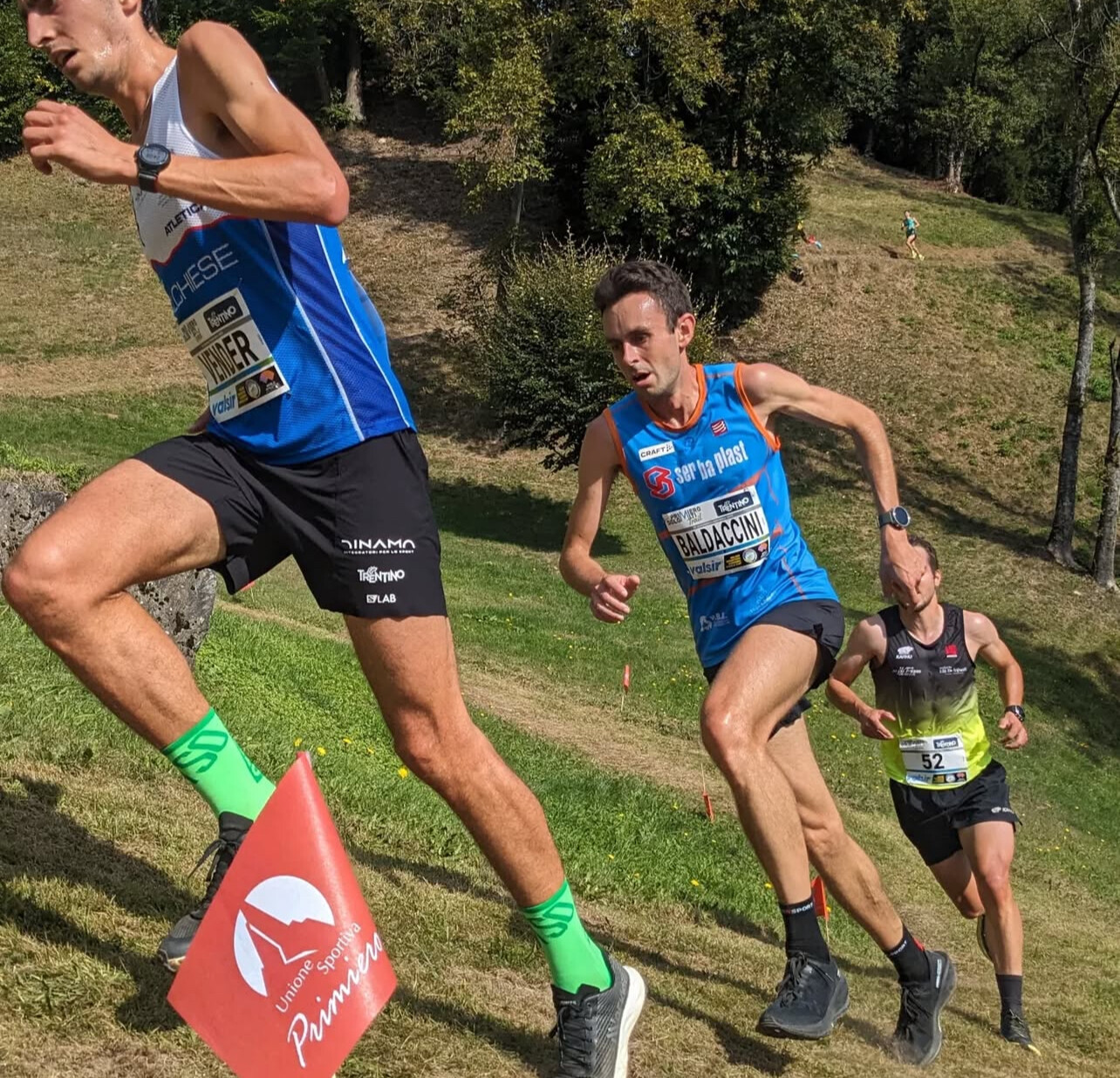
Top 3 Men’s Results:
1. Paul Machoka (Kenya) – 1:48:52
2. Kevin Kibet (Kenya) – 1:49:13
3. Henri Aymonod (Italy) – 1:49:15
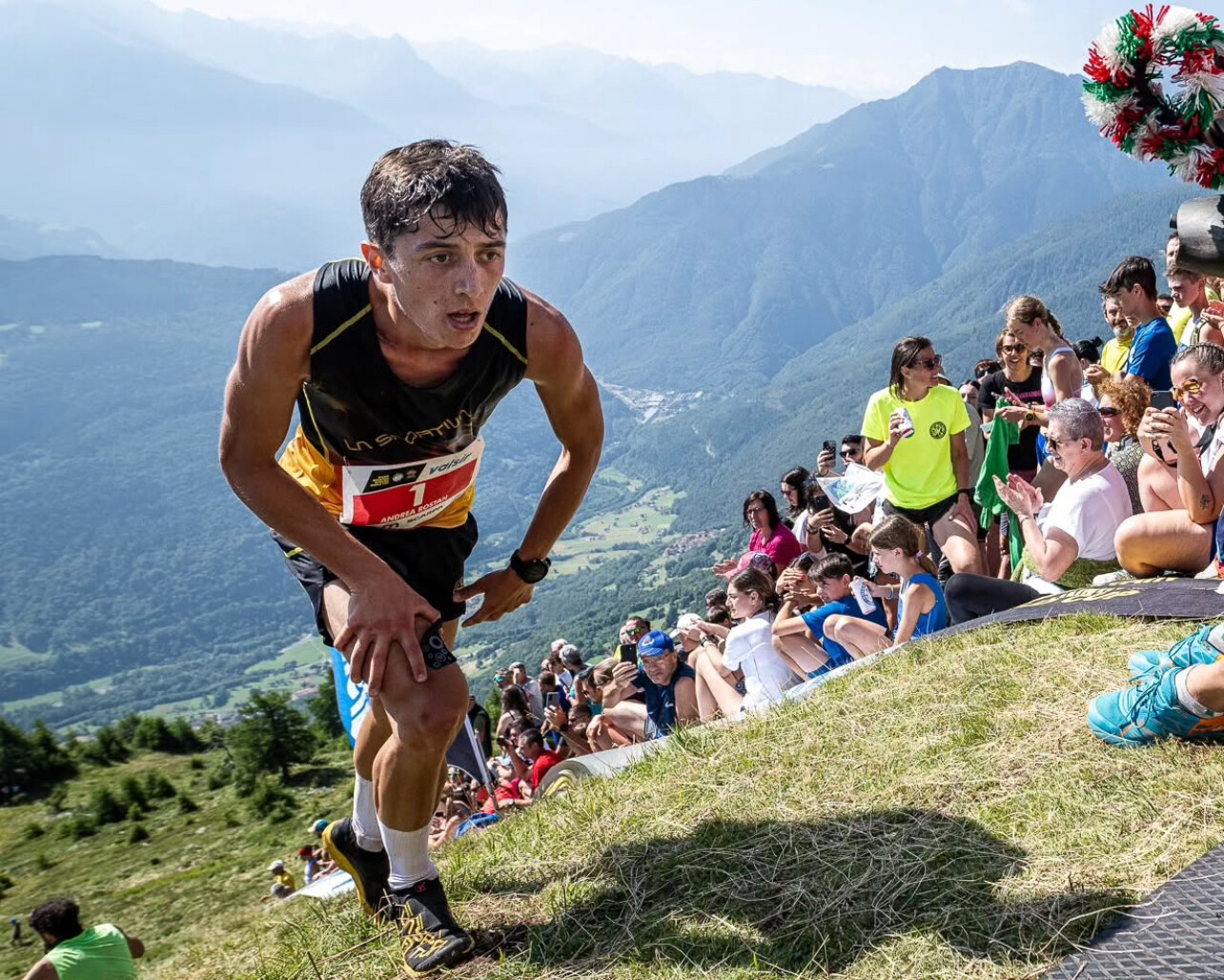
The Zmeu X-Fest, named after a dragon-like figure from Romanian folklore, proved a fittingly epic start to the 2025 WMRA World Cup. With its blend of cultural heritage and extreme terrain, the race set a high bar for the season ahead. Next, the series moves to Italy for the Vertical Nasego and Trofeo Nasego events on May 24–25.
by Boris Baron
Login to leave a comment
Fast Finishes in Indy as Hacker and Andrews Claim 5K Crowns
On a crisp morning in downtown Indianapolis, the 2025 USATF 5 km Championships delivered thrilling finishes and fast times, with Olin Hacker and Josette Andrews emerging as national champions.
In the men’s race, Olin Hacker of HOKA Northern Arizona Elite made a decisive move in the final kilometer, pulling away from a tightly packed lead group. His surge proved untouchable, and he crossed the finish line in 13:31.93 to claim the national title. Casey Clinger of Brooks was just a stride behind in 13:33.04, with Hacker’s teammate Ahmed Muhumed rounding out the podium in 13:36.88—completing a trio of sub-13:40 finishers.
Men’s Top 10 Finishers
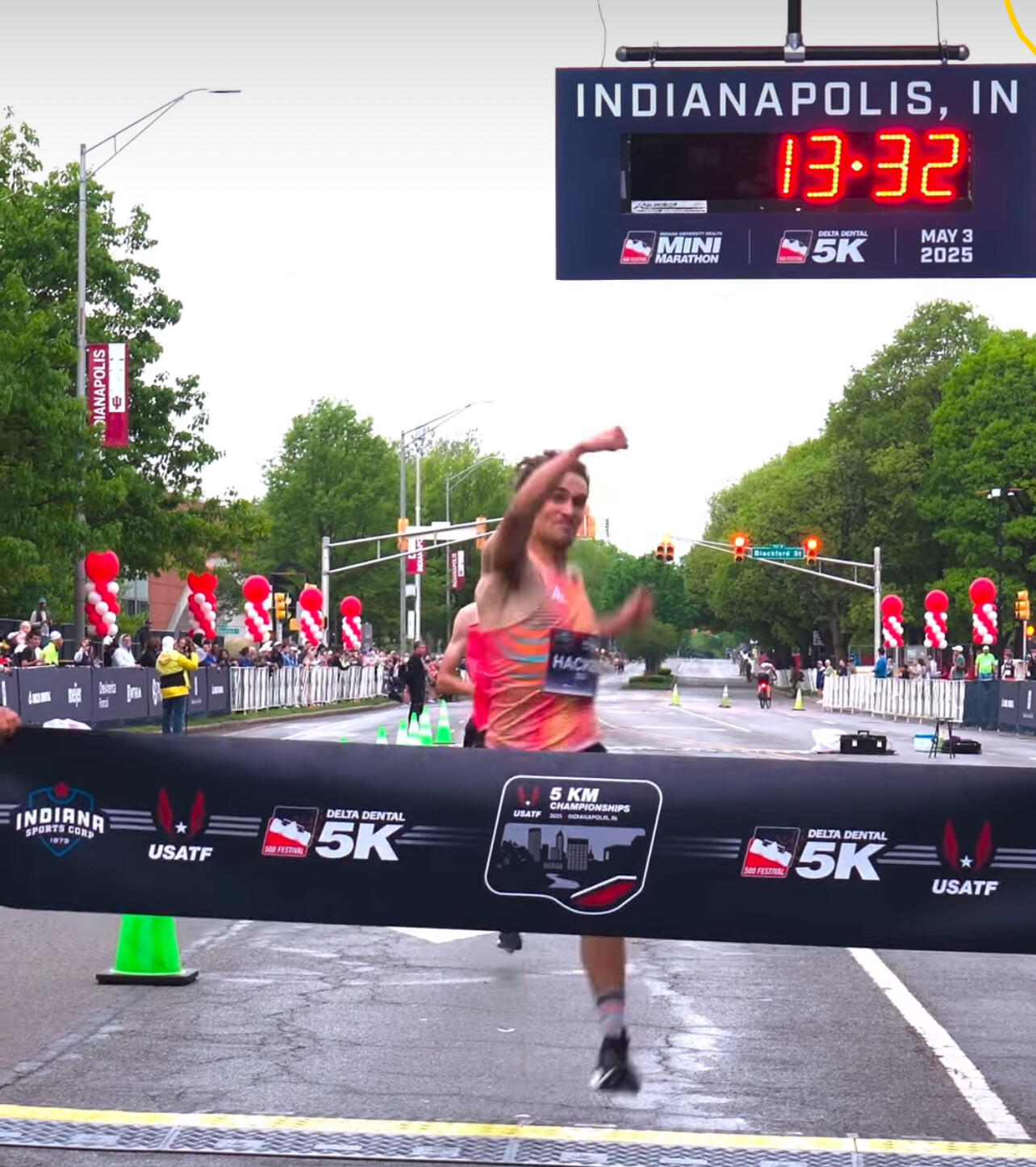
1. Olin Hacker (HOKA NAZ Elite) – 13:31.93
2. Casey Clinger (Brooks) – 13:33.04
3. Ahmed Muhumed (HOKA NAZ Elite) – 13:36.88
4. Morgan Beadlescomb (adidas) – 13:39.50
5. Graham Crawford (Reebok) – 13:42.10
6. Reed Fischer (Tinman Elite) – 13:44.75
7. Sam Chelanga (Nike) – 13:47.30
8. Ben Flanagan (On Running) – 13:49.60
9. Emmanuel Bor (U.S. Army) – 13:52.25
10. Eric Avila (HOKA) – 13:54.80
In the women’s race, Josette Andrews showed impressive strength and timing, kicking hard in the final stretch to take the win in 15:12.34. Emily Infeld of Nike followed closely in 15:14.50, and Karissa Schweizer of Bowerman Track Club secured third in 15:16.75, as the top trio pushed each other to the line.
Women’s Top 10 Finishers
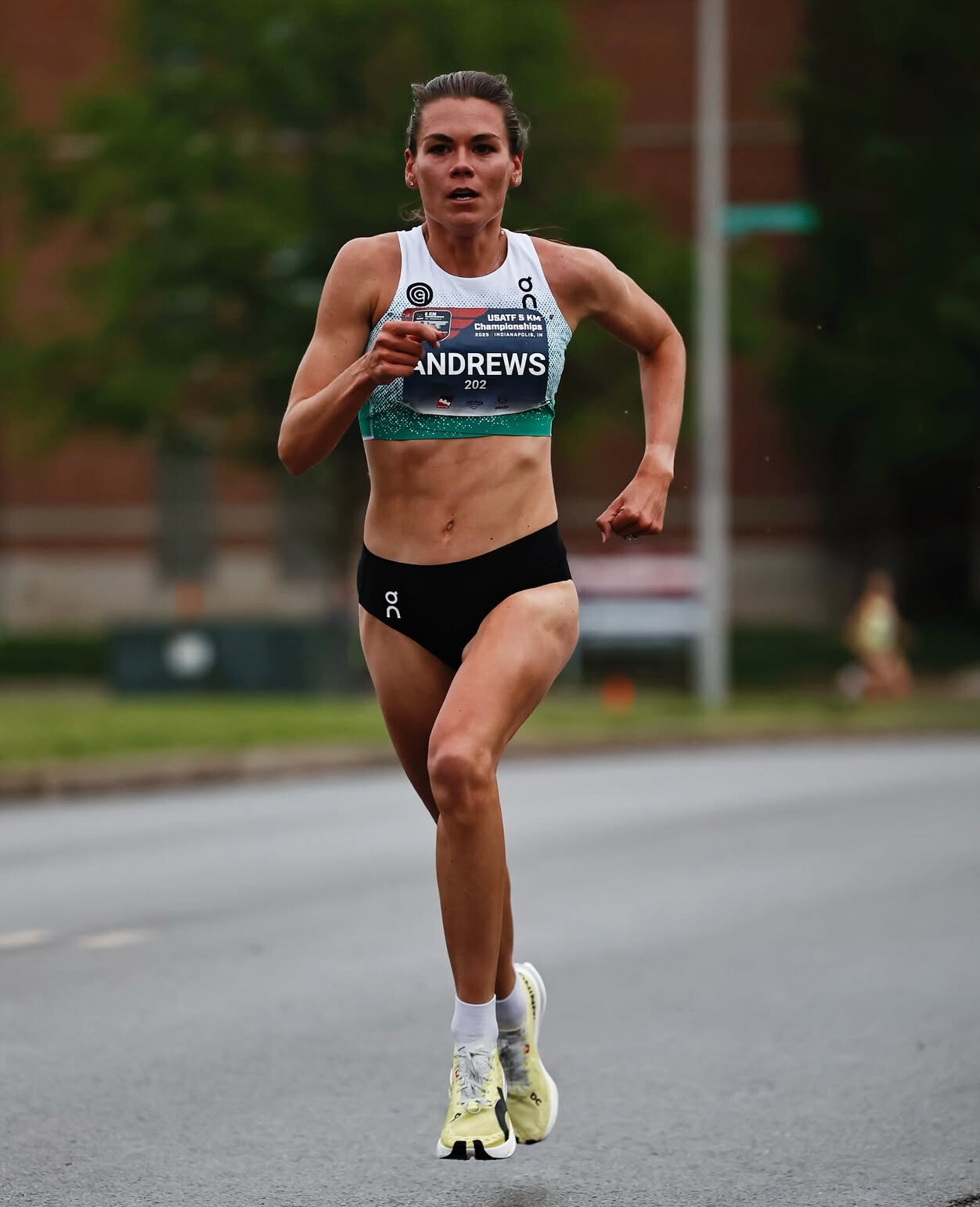
1. Josette Andrews – 15:12.34
2. Emily Infeld (Nike) – 15:14.50
3. Karissa Schweizer (Nike Bowerman TC) – 15:16.75
4. Elly Henes (adidas) – 15:19.20
5. Rachel Schneider (Under Armour) – 15:22.85
6. Abbey Cooper (New Balance) – 15:25.40
7. Molly Seidel (Saucony) – 15:28.95
8. Vanessa Fraser (Nike) – 15:31.50
9. Emily Lipari (adidas) – 15:34.05
10. Natosha Rogers (Hansons-Brooks) – 15:36.60
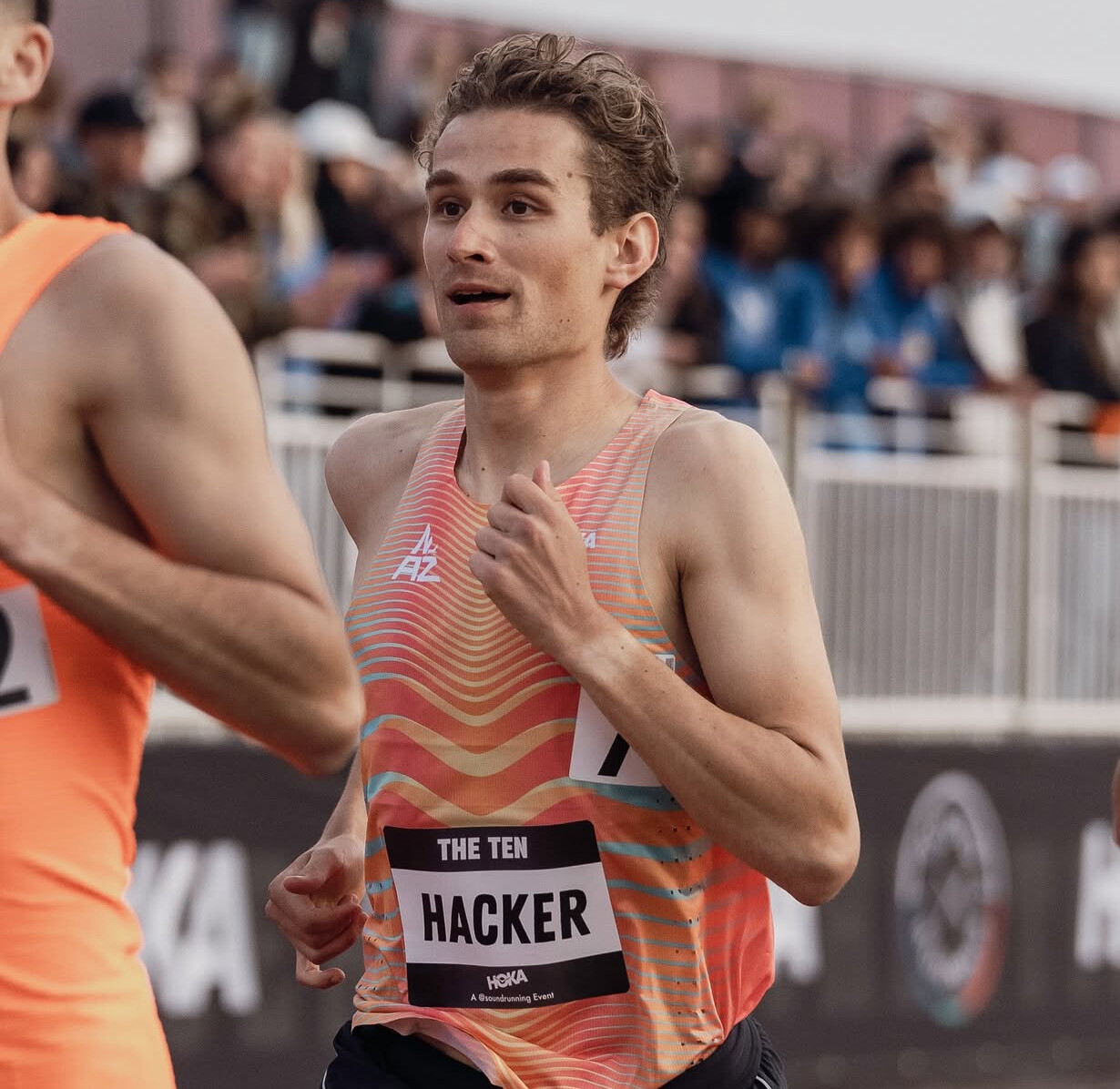
The performances in Indianapolis set the tone for what promises to be a fast and competitive summer racing season across the U.S. road circuit.
by Boris Baron
Login to leave a comment
OneAmerica 500 Festival Mini-Marathon
The mission of the 500 Festival is to produce life-enriching events and programs while celebrating the spirit and legacy of the Indianapolis 500 and fostering positive impact on the city of Indianapolis and state of Indiana. As an organization providing multiple events and programs, many of which are free to attend and impact over 500,000 people annually, our mission to...
more...Tigst Assefa Shatters Women’s-Only World Record at the 2025 London Marathon
History was made on the streets of London this morning. Ethiopia’s Tigst Assefa surged to victory at the 2025 TCS London Marathon, setting a new women’s-only world record with an unofficial time of 2:15:50.
With cool, crisp conditions early in the race, Assefa quickly established her dominance. Pulling away from her rivals by the halfway point, she maintained a strong and steady pace through the final miles. In the closing stages, it was clear the race against the clock had begun — and she delivered in spectacular fashion, crossing the finish line with a commanding lead of over a minute ahead of second-place Joyciline Jepkosgei.

The previous women’s-only world record was held by Britain’s Paula Radcliffe, whose 2:17:01 mark from London in 2005 had stood for two decades. Assefa’s breakthrough performance, pending official ratification, trims over a minute from that legendary time.
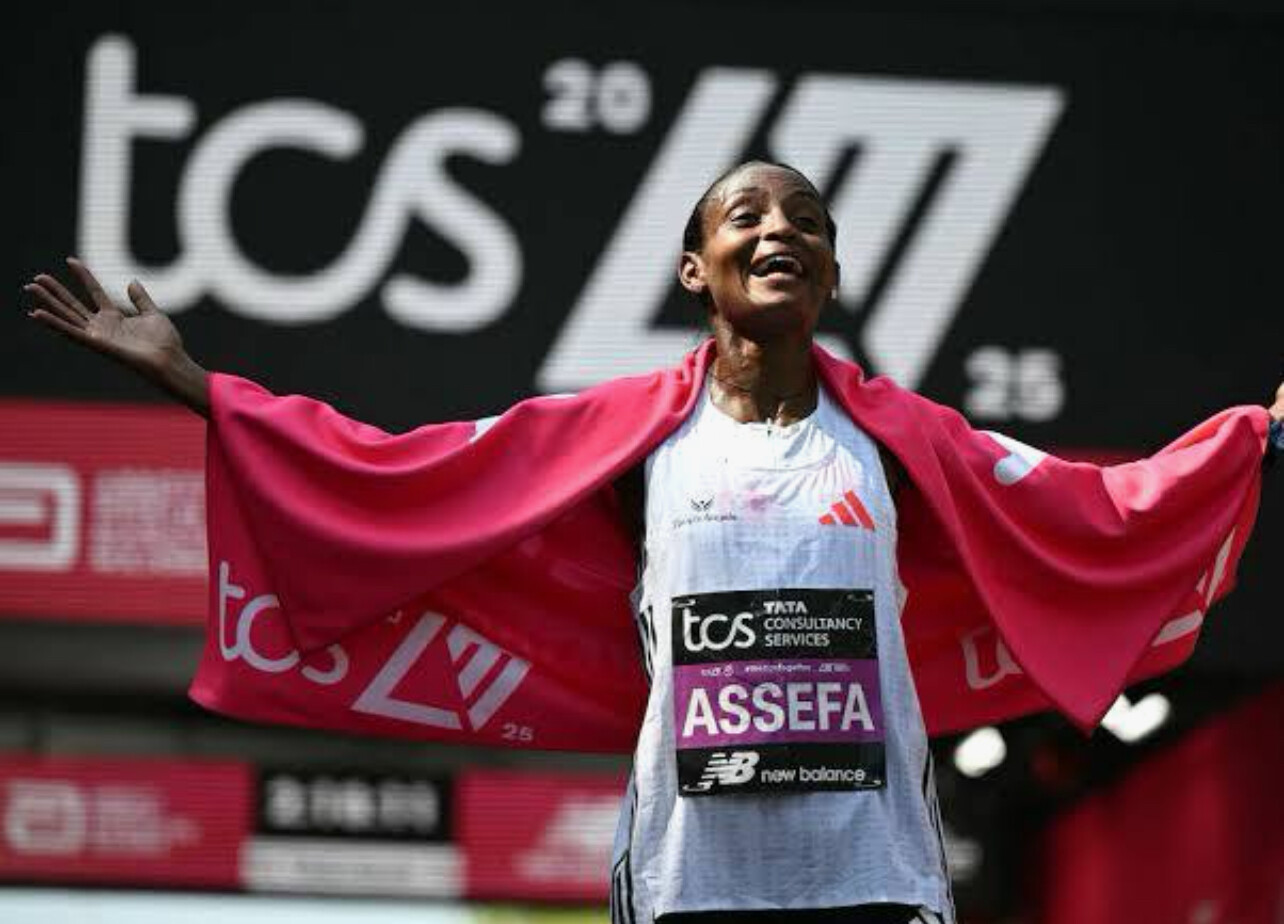
Tigst Assefa had already stunned the running world with her mixed-race world record of 2:11:53 set in Berlin in 2023. Today, she confirmed her place among the all-time greats by dominating a race staged without male pacemakers, underlining her incredible solo strength.
Assefa’s record run headlined what has already become one of the most memorable editions of the London Marathon, with over 56,000 participants and perfect spring weather creating an electric atmosphere.
Paula Radcliffe posted "That was a phenomenal race so hats off to Tigst Assefa for being brave enough to go out in the pace she did!
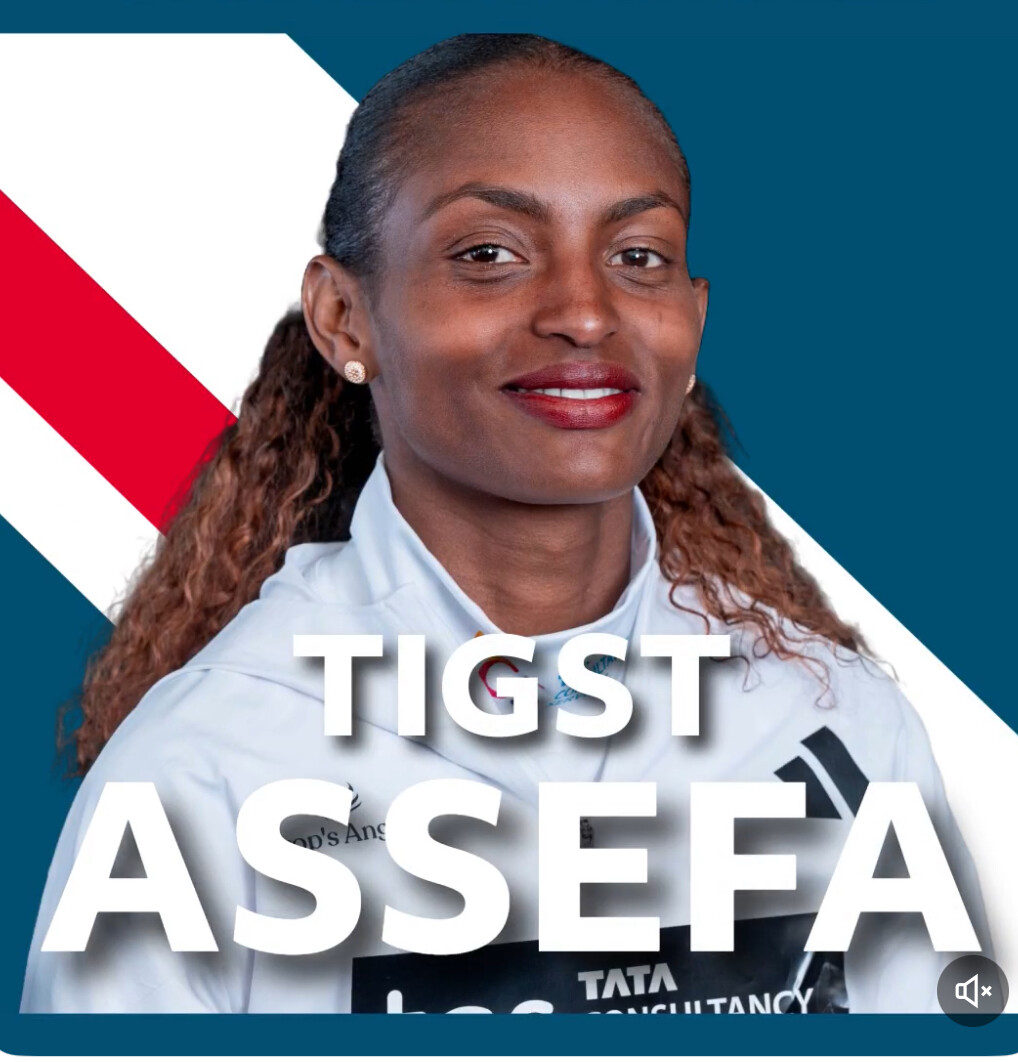
The manner in which she lifted herself to get across the line as well.
You can see how much it means to her. It's more to build on for her moving forward."
Eilish McColgan picks up the pace as she comes across the line in 02:24:25 for eighth place.
She's tired on her marathon debut but has done one thing she wanted - beat her mum Liz's best time. Liz McColgan won here in 1996.
A decent effort for a first attempt.
Top 13 Women’s Elite Finishers
1. Tigst Assefa (ETH) – 2:15:50
2. Joyciline Jepkosgei (KEN) – 2:18:44
3. Sifan Hassan (NED) – 2:19:00
4. Haven Hailu Desse (ETH) – 2:19:17
5. Vivian Cheruiyot (KEN) – 2:22:32
6. Stella Chesang (UGA) – 2:22:42
7. Sofiia Yaremchuk (ITA) – 2:23:14
8. Eilish McColgan (GBR) – 2:24:25
9. Rose Harvey (GBR) – 2:25:01
10. Susanna Sullivan (USA) – 2:29:30
11. Phily Bowden (GBR) – 2:30:28
12. Molly Bookmyer (USA) – 2:32:31
13. Holly Archer (GBR) – 2:39:45
Ethiopia’s Tigst Assefa delivered a historic performance, setting a new women-only world record with a time of 2:15:50. She broke away from the pack after the 30-kilometer mark and maintained her lead to the finish line.
Kenya’s Joyciline Jepkosgei secured second place with a strong finish at 2:18:44, while the Netherlands’ Sifan Hassan completed the podium in third with a time of 2:19:00.
Notably, Great Britain’s Eilish McColgan finished eighth, setting a new Scottish marathon record with her time of 2:24:25.
by Boris Baron
Login to leave a comment
Yomif Kejelcha Runs Second Fastest 10K Ever on Road with 26:31 at Castellón
Yomif Kejelcha delivered a stunning performance at the Castellón 10K, clocking a personal best and course record time of 26:31. The Ethiopian star, known for his versatility across middle and long-distance events, continues to prove why he is one of the most formidable runners in the world today.
A Performance for the Ages
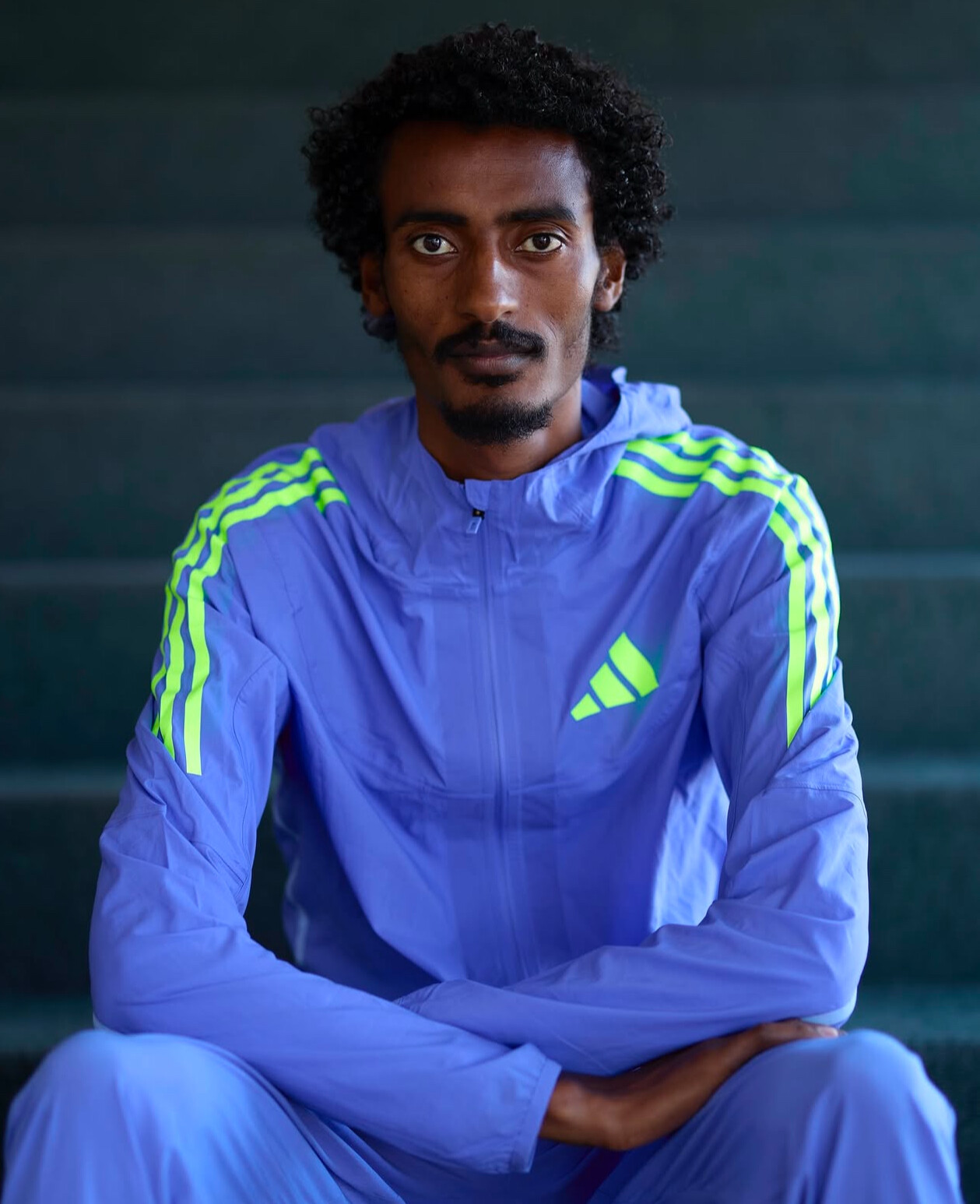
Kejelcha’s time of 26:31 is the second fastest ever recorded for 10 kilometers on the road, trailing only Rhonex Kipruto’s world record of 26:24 set in Valencia in 2020. He showcased his incredible endurance and speed, setting a blistering pace from the start and maintaining it through the streets of Castellón. His performance not only secured him the win but also solidified his place among the all-time greats in road racing.
The previous course record stood as a benchmark for elite performances, but Kejelcha demolished it with authority. His ability to transition between track and road racing at such a high level highlights his exceptional talent and training.
The Evolution of Yomif Kejelcha
Kejelcha has long been a dominant force in distance running. A two-time World Indoor Champion in the 3000m, he has also excelled on the track with a 12:46.79 personal best in the 5000m and a fo former indoor world record of 3:47.01 in the mile. His progression to longer road races has been remarkable, and this latest achievement suggests he is just getting started in rewriting records on the roads.
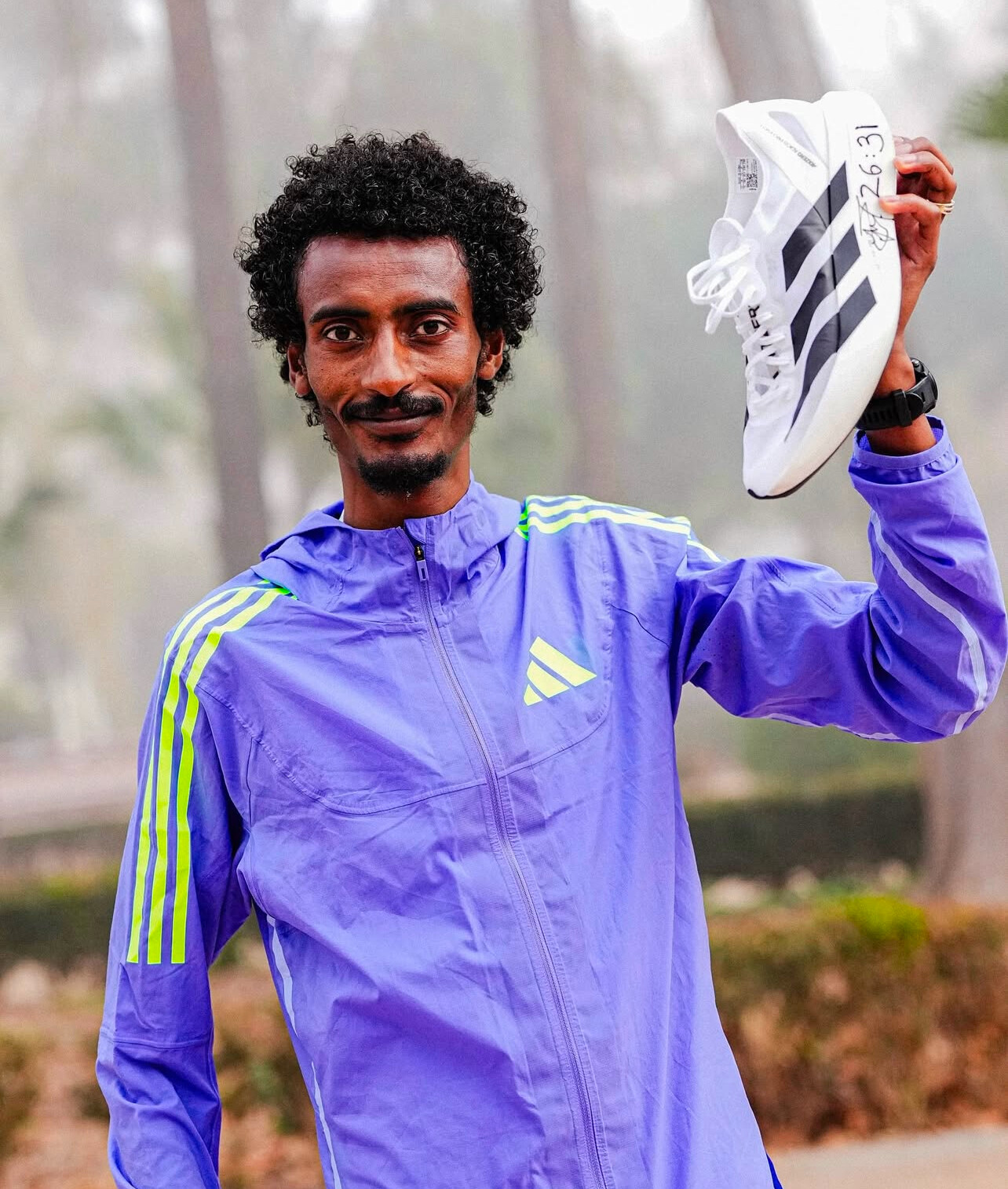
With this performance, Kejelcha joins again an elite club of sub-27-minute 10K road runners, a testament to his endurance and tactical brilliance. The road racing scene has seen unprecedented speed in recent years, with top athletes pushing the boundaries of what’s possible, and Kejelcha’s performance is yet another milestone in that progression.
What’s Next for Kejelcha?
With his new personal best, Kejelcha will undoubtedly be a contender in upcoming major road races and championship events. Whether he continues his focus on the 10K or makes an even stronger push into the half marathon and marathon distances remains to be seen, but one thing is certain—he is a runner to watch.
The Castellón 10K has witnessed history, and Yomif Kejelcha has once again shown why he is one of the premier distance runners in the world. His 26:31 finish not only sets a new course record but also raises the bar for what’s possible in road racing.
Top 10 Men's 10K Road Race Performances
As of February 2025, here are the top 10 fastest men's 10K road race times:
26:24 – Rhonex Kipruto (Kenya), Valencia, Spain, January 12, 2020
26:31 – Yomif Kejelcha (Ethiopia), Castellón, Spain, February 2025
26:33 – Berihu Aregawi (Ethiopia), Laredo, Spain, March 11, 2023
26:37 – Yomif Kejelcha (Ethiopia), Laredo, Spain, March 16, 2024
26:38 – Joshua Cheptegei (Uganda), Valencia, Spain, December 1, 2019
26:44 – Leonard Patrick Komon (Kenya), Utrecht, Netherlands, September 26, 2010
26:48 – Jacob Kiplimo (Uganda), Valencia, Spain, January 14, 2024
26:49 – Sebastian Sawe (Kenya), Herzogenaurach, Germany, April 29, 2023
26:50 – Kibiwott Kandie (Kenya), Herzogenaurach, Germany, April 30, 2022
26:51 – Nicholas Kimeli (Kenya), Brașov, Romania, September 25, 2022
Note: The above times are based on official records as of February 2025.
by Boris Baron
Login to leave a comment
10k Facsa Castello
The 10K FACSA Castelló is one of Spain’s fastest and most prestigious road races, drawing elite and amateur runners from around the world. Held in Castellón de la Plana, this race has grown exponentially, earning a reputation for its flat, high-speed course and exceptional organization. It holds a World Athletics Road Race Label, placing it among the top road races...
more...Fast field set for Dubai marathon this Sunday
If there’s such a thing as a First Family in athletics, then it has be the Tola-Dida clan from Ethiopia; and one of their favourite watering holes is the Dubai marathon, whose quarter century is celebrated with Sunday morning’s event. Current Olympic men’s champion Tamirat Tola won Dubai in 2017 (2.04.11), while spouse Dera Dida won in 2023 (2.21.11), on the same day that her brother-in-law, Tamirat’s younger sibling Abdisa won the men’s title (2.05.42).
Tamirat went on to greater things, with a world championship silver medal in London later in 2017, then gold in the delayed world championship in Eugene 2022, a New York Marathon victory in 2023, and the Olympic crown last year. This time round, he has a far more important task, staying at home and minding their daughter.
Because bringing their daughter (even with a nanny) to last year’s Dubai race may have distracted Dera from a repeat victory, though she still finished third in 2.19.29, two minutes faster than the previous year; but she’s left hubby to do the domestic chores this time, and comes determined to win her second Dubai Marathon while Tamirat watches on TV back home on the outskirts of capital Addis Ababa.
As befits a First Family, only the best is good enough, and their training group has got to be one of if not the strongest in the world. Among her running partners are former marathon world record holder and Olympic silver medallist Tigst Assefa as well as the current marathon World Champion Amane Beriso. ‘I don’t train with the group every day,’ she said through an interpreter. ‘On a day to day basis, I train with Tamirat, but I join them occasionally. Since Tamirat won the Olympics, we’ve had a lot more media interest, but we try to concentrate on our running and not get too distracted’.
Well, her rivals (and compatriots) here in Dubai, Tigist Girma and Zeineber Yimer already have plenty to distact her, given that their respective best times, 2.18.52 and 2.19.07 are better than hers (2.19.24), but not so much as to deter her ‘I think I’m in shape to run the course record (2.16.07, set by another colleague Tigist Ketema last year); I hope that will be enough to win‘.
Another return winner has equally high aspirations, although injuries have ploughed a broad furrow between Lelisa Desisa’s glory days and Sunday’s race. Lelisa was one of many debutant winners in Dubai over the last decade or so, but his came in winning probably the most exciting race in Dubai Marathon history. On a rare foggy day in the Emirates, Lelisa emerged from the mists with a superb sprint finish to clock 2.04.45, and outpace four close pursuers who all finished within a handful of seconds, the first time five men had ever gone inside two hours, five minutes for a marathon.
Like Tamirat, Lelisa went on a have a superlative set of sequels, two victories and two second places in Boston and a win in New York, culminating with the world title on a torrid night in Doha 2019. A series of injuries and the pandemic halted his progress, but he maintains he’s back close to his best.
Following today’s press conference, he said, ‘I’ve been training with Milkesa (Mengesha), who won the Berlin Marathon last year, and with Deresa (Geleta), who finished second in Valencia; I think I’m as good, and they’re running 2.02/2.03. Things have changed a lot since I won here in 2013. At that time, we were thinking of 2.04 to 2.07 for a marathon, now we have to think of two hours! I think I can run a personal best on Sunday’.
Since his best remains the 2.04.45 from 2013, if he and his young rivals can get anywhere near that, they’ll be threatening the course record of 2.03.34that another colleague Getaneh Mollah ran here in 2019.
An intriguing entrant is former world record holder, Dennis Kimetto of Kenya. One of the shooting stars of recent marathon history, Kimetto had a short stellar career during which (in addition to other top victories) he won three of the most important marathons in the world, Chicago, Tokyo and Berlin, breaking the course record in each event, and setting a world record in the final one, in Berlin 2014. He was the first to run sub 2:03 (2.02.57) and his record stood for four years. Obviously, at ten days short of his 41st birthday, Dubai 2025 is going to be a very different challenge for Kimetto.
Elite runners with personal bests
MEN:
Dennis Kimetto KEN 2:02:57
Lelisa Desisa ETH 2:04:45
Dino Sefir ETH 2:04:50
Shifera Tamru ETH 2:05:18
Gebru Redahgne ETH 2:05:58
Ashenafi Moges ETH 2:06:12
Abay Alemu ETH 2:06:50
Mesfin Nigusu ETH 2:07:58
Tadele Demissie ETH 2:08:25
Desalegn Girma ETH 2:08:30
Berehanu Tsegu ETH Debut
Boki Diriba ETH Debut
WOMEN:
Tigist Girma ETH 2:18:52
Zeineba Yimer ETH 2:19:07
Dera Dida ETH 2:19:24
Etagegne Woldu ETH 2:20:03
Gadise Mula ETH 2:20:59
Bedatu Hirpa ETH 2:21:09
Beyenu Degefa ETH 2:23:04
Kuftu Tahir Dadiso ETH 2:23:14
Tigist Geshaw ETH 2:24:39
Kebebush Yisma ETH 2:27:46
Mulugojam Ambi ETH 2:28:59
Betukan Welde ETH Debut
Etenesh Diro ETH Debut
Bekelech Teku ETH Debut
Alem Tsadik ETH Debut
Login to leave a comment
Dubai Marathon
In its relatively brief history (the race was first held in 2000), the Dubai Marathon has become one of the fastest, most respected and the most lucrative marathon in the world in terms of prize money. Each year thousands of runners take to the roads in this beautiful city in the United Arab Emirates (UAE) for this extraordinary race starting...
more...Colin Farrell Ran the Most Memorable Celebrity Marathon of 2024—but Not the Fastest
See which stars ran 26.2 miles and set PRs this year.
After a dip in participation levels due to the COVID-19 pandemic, marathons are finally seeing an upswing in popularity. This year, you had a better chance of getting into Yale University (5 percent) than having your name selected in the New York City Marathon lottery (4 percent).
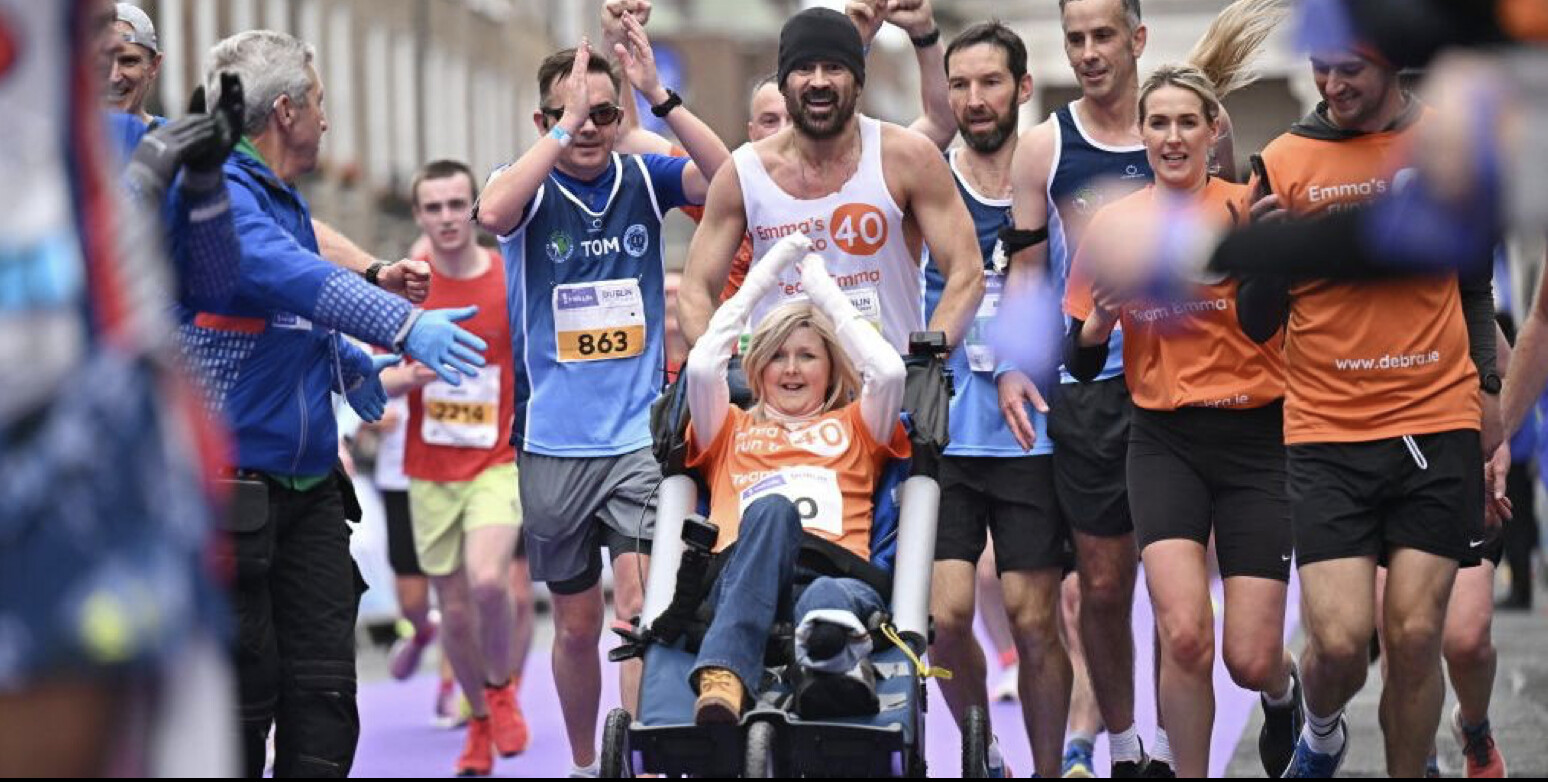
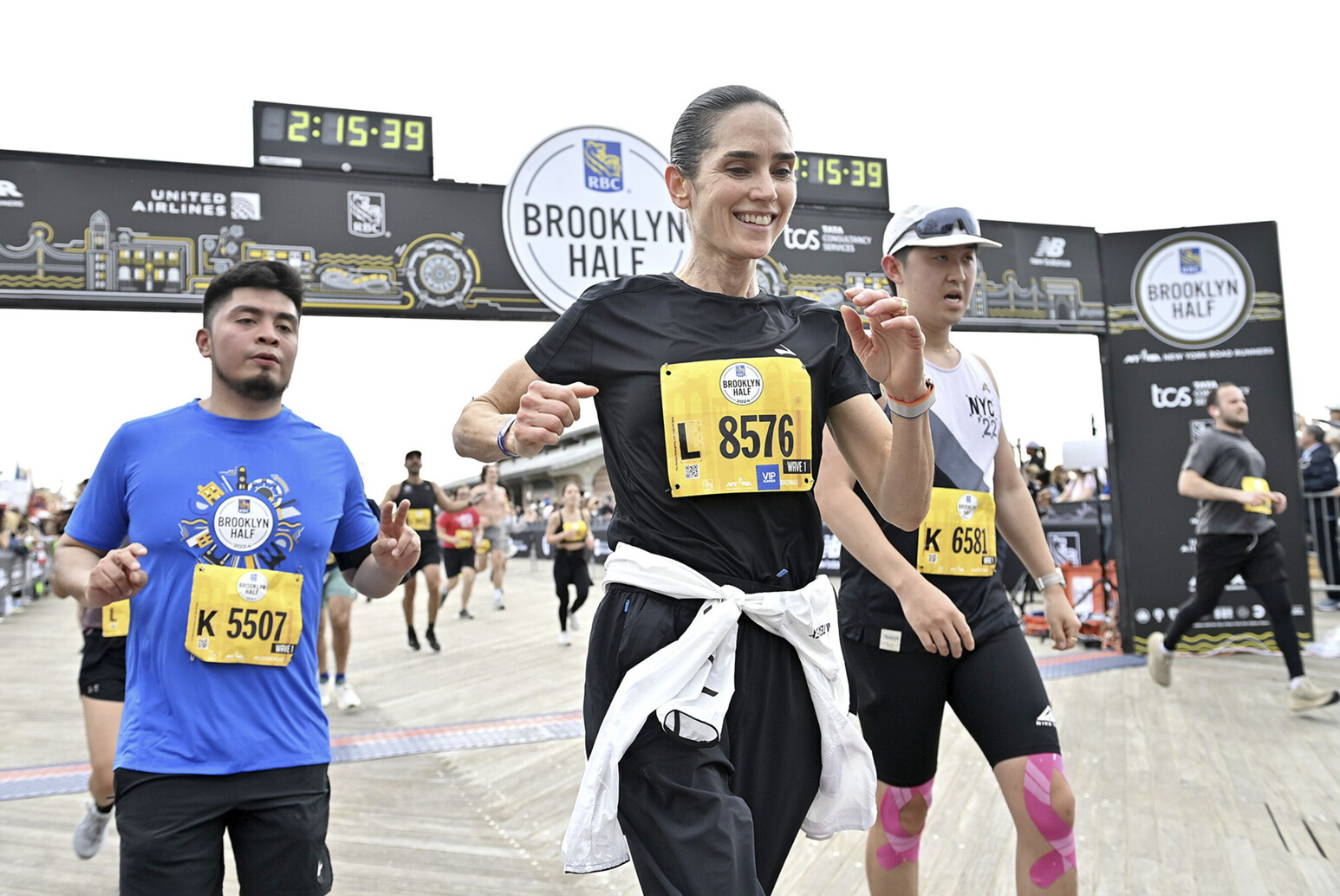
While certain big shots prefer to stick to 5Ks or half marathons—or just like running to blow off some steam, like Kendrick Lamar—we’ve spotted stars in the crowds of some of the world’s largest races. The NYC Marathon, especially, is a popular destination for VIPs, with many celebrities choosing to raise money for charities.
Here are some of the top marathon times—and most inspiring stories—from celebs in 2024.
Colin Farrell, 4:06:45
This wasn’t Farrell’s first marathon—he ran 3:53:14 at the 2021 Brisbane Marathon—but it sure was the most memorable. At October’s Dublin Marathon, the Irish actor finished in 4:06:45. But the time wasn’t important. Farrell, during the last 2.5 miles of the race, pushed his friend, Emma Fogarty, in a wheelchair. Fogarty has epidermolysis bullosa, a rare genetic skin condition, which can cause painful skin blistering. The pair raised nearly $1 million for Debra Ireland, a charity that helps fund research for the disorder.
Jennifer Connelly, 3:45:47
The actress, who won an Academy Award for portraying Alicia Nash in A Beautiful Mind, took on her first marathon on the streets of New York City in November. While she admitted she was nervous before the race, the Top Gun: Maverick alum looked like she had a blast, posing with other celebrity runners and thanking the famously boisterous New York crowd in a post-race Instagram post. She raised money for the cancer research organization Fred’s Team MSK.
Chelsea Clinton, 3:45:51
Just behind Connelly in New York was the former first daughter. Clinton was low-key about running the five boroughs. She didn’t publicly announce her participation; instead, she told the world after the race, posting a photo with her mother, Hillary, who met her at the finish line. Clinton ran with her friend, Jen, in support of the nonprofit Every Mother Counts.
Casey Neistat, 2:57:48
One of the most moving videos of the year was Neistat’s 12-minute documentary, “Sisyphus and the Impossible Dream.” In the video, Neistat, who has grown a massive following on YouTube since joining in 2010, chronicles his quest to break 3:00 in the marathon—ultimately a 17-year journey. He finally achieved his goal in December 2023 at the Tucson Marathon, where he ran 2:57:34. Before this year’s NYC Marathon, Neistat semi-jokingly asked his fans to refrain from waving to save him some precious seconds. It apparently worked; he nearly PR’d, running 2:57:48.
Matt James, 3:00:41
Matt James has worn a lot of hats: Wake Forest football player, Bachelor star, and now chronic marathoner. The 33-year-old is a regular at the World Majors. This year, he nabbed a personal best of 3:00:41 at April’s London Marathon and followed it up with a 3:29:26 at the New York City Marathon. He told Runner’s World his dream marathon partner would be Gordon Ramsay, who owns an impressive 3:30:37 PR himself. “After the marathon, you’re guaranteed a fire meal,” James said.
Phoebe Robinson, 5:53:19
The comedian and writer started running in March 2023 and bookended her 2024 with the Boston Marathon (5:53:19) and NYC Marathon (6:06:52). After Boston, Robinson posted on Instagram a thought that most people have after completing their first 26.2:
“I CAN. F***ING. DO. ANYTHING.”
Nev Schulman, untimed
Like Matt James, Schulman is a regular on the marathon circuit. He owns a PR of 2:58:54 from 2018, but lately, the host of MTV’s Catfish has focused on giving back to the running community.
At Boston in the spring, Schulman was a guide for blind para-athlete Francesco Magisano, who finished in 4:29:43. But in August, Schulman broke his neck after a truck hit him while he was biking. Incredibly, Schulman recovered in time to guide Magisano at the New York City Marathon, where Magisano crossed the finish in 4:02:31. (Since Schulman was a guide, he’s not listed in the official results.)
Login to leave a comment
When It’s Time to Replace Your Running Shoes
When this assignment hit my inbox, my first thought was: I am 100 percent going to find out that I need to buy new running shoes. I jog a few times a week and haven’t replaced my Hoka Clifton 9’s since 2023. The chunky, cushioned sole that Hokas are known for has been flattened by months of trail running, and the bright neon yellow exterior has dimmed to a dull mustard.
But they do the job, and I’m a bit frugal, so I’ve stuck with them. But after speaking with a few sneaker experts, I learned I’m not doing myself any favors by holding onto beat-up gear. The more I use them, the greater my risk of an injury.

Here’s why it’s worth replacing your go-to kicks—and how to figure out when to do it.
What Is the Average Lifespan of Running Shoes?
The average running shoe is thought to last about 300 to 500 miles or five to eight months of regular use, but determining your shoe’s true lifespan is more complicated, says Daniel Shull, Run Research Manager at Brooks Running.
Many factors shorten or extend the longevity of your sneakers, including how often you wear them, the kind of terrain and weather you run in, and your stride and strike habits, says Shull.
“Every runner is different, and every shoe is different,” says Arianna L. Gianakos, a Yale Medicine orthopedic surgeon specializing in sports-related foot and ankle injuries.
Trekking through mud, gravel, and puddles can erode your footwear, as can working out in hot or frigid temperatures, says Susan L. Sokolowski, a professor of sports product design at the University of Oregon. She explains if you’re a heavy runner, meaning you land on your foot hard, the foam in the middle of your shoe will break down faster. And if your foot rolls inward or outward, you can wear out a part of your shoe that isn’t built for regular impact, such as the edges or outsole, speeding up your need for
For example, I don’t merely wear my Hokas when I jog. I also wear them when I recreationally hike, bike, and walk my dog all over town. So, while I’d love to think my running shoes last a year, they probably give out much sooner.
Why It’s Important to Replace Running Shoes
When your foot slams onto the ground, your shoe acts as a buffer and absorbs some of the force hitting your foot and ankle, Gianakos says. According to a 2023 review published in Exercise Science and Sports Reviews, shoes influence how your foot interacts with the ground, impacting your performance, speed, comfort levels, and risk of sustaining an injury.
If your sneaker no longer provides the support and cushioning your feet need, you can hurt the joints, tendons, and ligaments in your feet, ankles, and even upper leg, says Gianakos. You can run (pun intended) into a whole host of injuries like plantar fasciitis, tendonitis, stress fractures, and shin splints, she adds.
You may get pain in the ball of your foot (or metatarsalgia), patellofemoral pain syndrome, which causes pain around the kneecap, or iliotibial (IT) band syndrome, a condition that causes pain near the outside of your
So, do a body scan next time you’re out on the trail. Do you notice any foot or ankle aches and knee pains? What about burning sensations on the sole of your foot? How about blisters or calluses? Any of these symptoms may indicate your shoes are shot, says Gianakos.
How to Extend the Life of Your Favorite Pair of Sneaks
First, be mindful of how you store your shoes. You want to keep them in a clean, dry location to prevent mold from growing, says Sokolowski. And don’t store them in a hot, sunny car—UV exposure and heat can cause them to dry out and crack, she adds.
Gianakos recommends having (at least) two pairs of sneakers. That way, you can occasionally switch them out to slow the wear and tear. Another tip: have different sneakers for running in different environments—like “a trail shoe, a road shoe, and even a race day shoe,” says Sokolowski.
And save your running shoes for running only. “The time and amount of steps put on your shoes by walking, standing, and running errands all count towards how long they’ll last,” says Shull.
For all your other day-to-day activities and
Login to leave a comment
Pro runner’s next-level workout on the road to L.A. Olympic medal
The newest member of team New Balance Boston, Parker Valby, has settled into her Boston life with her fellow Olympian training partners and coach Mark Coogan. After setting NCAA records in the outdoor 5,000m and 10,000m, the former Florida Gator began her professional running career as a New Balance athlete. A video posted by FloTrack on Wednesday dove into a soft-surface November workout during the base-building season in the lead-up to the indoor track season–which Valby demolished.
“Most people don’t know Parker as a person,” Coogan said. “They just see her as a runner. She’s a wonderful young lady and she’s fitting in great.” The 22-year-old announced her surprise signing with New Balance in October, unexpectedly straying from Nike after becoming their first female track and field athlete to sign a Name, Image, Likeness (NIL) deal. Industry sources report that Valby’s contract is upwards of USD 700,000 and will be in play until well past the 2028 L.A. Olympic Games.
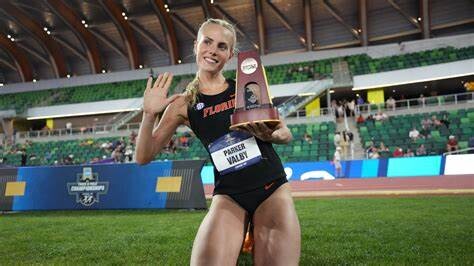
“It was definitely a learning experience,” Valby said about her time at the Paris Olympics. “It was my first time racing outside the NCAA. I’m very grateful for the experience and the lessons I took from it–it wasn’t my ideal performance that I wanted, but I’m happy that I did it in hindsight, so I can be ready for L.A.”
“Parker said she wants to get a medal at the Olympics in L.A.,” Coogan added. “She’s gonna make us better, and hopefully we can make her better and she can do big things in the future.”

The workout path was roughly 1,000m, though Coogan admitted he wasn’t sure of the exact distance. The coach was aiming for the team to have a solid workout where the athletes could stick together. The target effort for the cross-country-style workout was to begin at threshold pace (comfortably hard). Other pro athletes at the practice include Paris Olympian Emily Mackay, 2020 Olympian Heather MacLean, and Coogan’s daughter, Katrina Coogan.
The workout: 3 x (2K, 2 minutes, 1K)
Set 1: 2 loops: 6:38, 1 loop: 3:06
Set 2: 2 loops: 6:20, 1 loop: 3:02
Set 3: 2 loops: 6:01, 1 loop: 2:50
The video shows Valby sharing the lead with her teammates before pulling away from the group during the final set. An extra 1K loop was added on, which Valby completed in 2:53.
Although Valby is younger and less experienced than her teammates, Coogan says she’s a bit stronger than the other women because she comes from a 10,000m background. The other athletes’ main events are 1,500m and 5,000m.
“We work together, we meet in the middle,” Valby said. “Train with others to make yourself better.”
According to MacLean, the team has tried to create a culture of respect and support. “[Parker] brings a fresh new perspective to everything,” she said. “I learned something from her, I hope she learned something from us.”
“Almost like a college cross-country team, we’ve made a team into a family, and I think that’s one of the reasons we’re so successful,” Coogan said. His Instagram revealed that the team hit the indoor track for the first time last week. If all the athletes stay healthy, the whole New Balance Boston team will open their season at the New Balance Grand Prix on Feb. 2.
by Cameron Ormond
Login to leave a comment
LA 2028 Summer Olympics Games
Discover how the Los Angeles Candidature Committee describes their vision for the Games and the legacy they plan to leave behind: For centuries, people have been following the sun to California – to a coastal paradise of beautiful weather, inspiring landscapes and an ocean of possibilities. Since it was first settled, LA – the City of Angels – has built...
more...Records fall again as world’s best runners shine at California International Marathon
Tsegay Weldlibanos demolished a men’s course record that stood for more than 30 years en route to victory in his first-ever California International Marathon. British Olympian Callie Hauger-Thackery’s record-smashing pace was just enough to edge Jacqueline Gaughan and take home the women’s CIM title Sunday in Sacramento.
It was a day to celebrate, as is so often the case on one of the fastest marathon courses in the country. Sunny, dry conditions, temperatures a crisp but comfortable high 40s, and a world-class field in peak form led to another record-setting Sunday in the state capital.
Weldlibanos, of Eritrea, who lives and trains in high country Flagstaff, Arizona, turned the notoriously fast Folsom-to-Capitol course into a personal playground Sunday, crossing the finish line at two hours, seven minutes and 35 seconds — three seconds faster than the previous course best set by Jerry Lawlor in 1993.

CJ Albertson, the “Fresno Kid” and come-from-behind men’s winner in 2023, missed out on back-to-back wins, taking home a second-place finish and a trip to the podium.
Hauger-Thackery set a blistering pace and needed every bit, her 2:24:28 beating Gaughan’s 2:24:40 by .12 of a second. Stephanie Bruce finished third. One of the fastest British marathoners ever, Haugher-Thackery burst onto the scene in 2023 and earned a spot to represent Great Britain in the 2024 Paris Olympics.
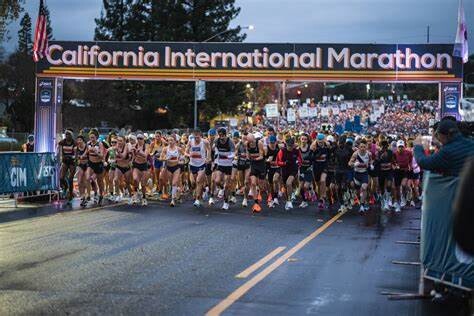
Husband and coach Nick Hauger, who finished third on the men’s side moments earlier, met the women’s winner at the finish in an emotional moment. Hauger was draped in the Stars and Stripes; the Union Jack adorned Haugher-Thackery’s shoulders as the couple embraced in victory.
Fifth-place women’s finisher Brittney Feivor’s cheering section hugged the rail at the finish. Susan Kessler, Feivor’s mother-in-law, traveled from Kenosha, Wisconsin, to watch the former Marquette University standout’s run Sunday.
“It’s exhilarating. We know how much work she puts in,” said Kessler. Feivor logs 50 to 90 miles or more a week in training. “It’s cheering and giving her the support she needs.”
The day didn’t just belong to the elites. As many as 10,000 runners and another 1,000 relay runners were expected to cross the finish line on race day, traveling from across the country and Northern California for the chance to notch a personal best or qualify for marathons on the 2025 calendar.
The California International Marathon is a qualifying race for the Boston Marathon. The 129th running is April 21. It’s a short walk — or jog — from the finish line at Ninth Street and Capitol Mall to a bell at the state Capitol’s west steps. Runners here know what the bell’s peal means: Someone’s going to Boston next year.
On Sunday, that someone was Alex Mills, 23, of Tacoma, Washington, shaking the bell nearly off its moorings as proud family — 10 in all — watched on from the Capitol steps.
Mills, who graduated this year from George Fox College in Oregon, wasted no time. Sacramento was the first marathon for the collegiate cross-country runner.
Mills’ mother, Shelly, and entourage planned their vacation around the Sacramento trip. Now, she said, they’ll have to schedule a second in Boston.
“I’m just happy to get it over with,” said Mills, still draped in his warming blanket.
Sometimes the run is about redemption. Andy Holstrom came down to Sacramento from Portland for this year’s marathon. Holstrom, bib 115, was on the course, wife Rebecca and parents Bob and Marla Mion of Newcastle cheering on from the mall. Andy and Rebecca, expecting a child in April, ran Boston last year, but after a disappointing run in the Bay State, Andy was looking for a personal best in California.
Rebecca, who recently ran an ultramarathon, carried a placard with its own bit of cheeky motivation: “Don’t embarrass our unborn son,” it read. “Run fast.”
Dad-to-be Andy delivered, cracking the 2:40 barrier with a 2:39:12.
Brandon Moran of Boston took the trip west, breaking into the coveted 2:30s, relishing the CIM’s fast downhill after running on Boston’s grueling hills. “It’s been two years since I ran this fast. I’m very, very happy with the result. It’s just the smoothest course I’ve ever run.”
by Darrell Smith
Login to leave a comment
California International Marathon
The California International Marathon (CIM) is a marathon organized by runners, for runners! CIM was founded in 1983 by the Sacramento Running Association (SRA), a 501(c)(3) non-profit organization. The SRA Board of Directors is comprised of runners with a combined total of 150+ years of service to the CIM. The same route SRA management created for the 1983 inaugural CIM...
more...Chekwemoi and Chebolei claim victories in Chepsaita
Ugandan teenager Loice Chekwemoi and Kenya’s Samwel Chebolei Masai were unrivalled at the Great Chepsaita Cross Country – a World Athletics Cross Country Tour Gold meeting – held on the outskirts of Eldoret on Saturday (7).
Pre-race favourite Chekwemoi, aged just 17, won the women’s race by more than 80 seconds, while 23-year-old Chebolei had a tighter contest in the men’s event.
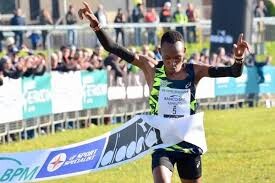
Ethiopian teenager Shimeles Mekides Molla put in an early surge after the first 2km loop of the women’s 10km race with Chekwemoi and Abigael Chepkoech trailing close behind.
Molla’s lead was short-lived, though, because Chekwemoi moved to the front and opened a gap steadily. It wasn’t long before the African steeplechase champion was running alone out in front with just the thousands of spectators for company.
The Ugandan teenager went on to finish in 34:32, while Molla was almost a minute-and-a-half behind, clocking 35:57 for the runner-up spot. Celestine Biwot completed the podium in 36:43.
“I couldn’t believe that I could win in the home of champions but I told myself I am also a champion and I have to fight for it,” said Chekwemoi. “To be a champion is not easy but I see progression and I am working hard to make sure I qualify for the World Championships in Tokyo next year.”
By contrast, there were 10 athletes running close together at the end of the first lap in the men’s race. That pack was soon reduced to five men, including world U20 cross-country bronze medallist Matthew Kipkoech Kipruto, 2019 African Games 5000m champion Robert Kiprop, and Samwel Chebolei, who was fifth at this year’s World Cross, contributing to Kenya’s team gold medal.
Heading into the fourth lap, Kipruto led from Kiprop and Chebolei. Kipruto’s challenge faded in the closing stages, though, while Chebolei proved to have the stronger finishing kick. He crossed the line in 30:49 to win by nine seconds. Kiprop took second place, improving on his fourth-place finish from last year. Pre-race favourite Kipruto was third in 31:12.
“I had to fight because there were a lot of good athletes in this race, it was not easy,” said Chebolei. “After the third lap, we still felt energetic and the three of us decided to drop the rest and the maths worked for us. I am hoping to build up from here and represent Kenya in Tokyo.”
Kevin Kiprop Biwott won the U20 men’s race, beating world U20 5000m champion Andrew Kiptoo Alamisi by 17 seconds.
Cynthia Chepkurui, who was ninth at the African Cross Country Championships earlier this year, this time emerged as the winner in the U20 women’s 6km race in 21:17.
Several of Kenya’s leading athletes, past and present, attended the Great Chepsaita Cross Country, including Eliud Kipchoge, Faith Kipyegon, Benson Kipruto, David Rudisha, Julius Yego and Janeth Jepkosgei.
by World Athletics
Login to leave a comment
2024 Valencia Marathon Elite Fields Announced: Sisay Lemma, Kenenisa Bekele and Amane Beriso Headline
Race organizers for the Valencia Marathon have announced the elite fields for the 2024 edition of the race on Dec. 1.
The field is headlined by 2024 Boston Marathon champion Sisay Lemma returning from injury after withdrawing from the Paris Olympics. He will be challenged by his compatriot and all-time great Kenenisa Bekele, who finished second in April’s London Marathon and 39th at the Paris Olympics at 42 years old.
Kenya’s Sebastian Sawe, who boasts a half marathon personal best of 58:05, and Daniel Mateiko, who has also run 58:17 for the half, are the most intriguing debutants.
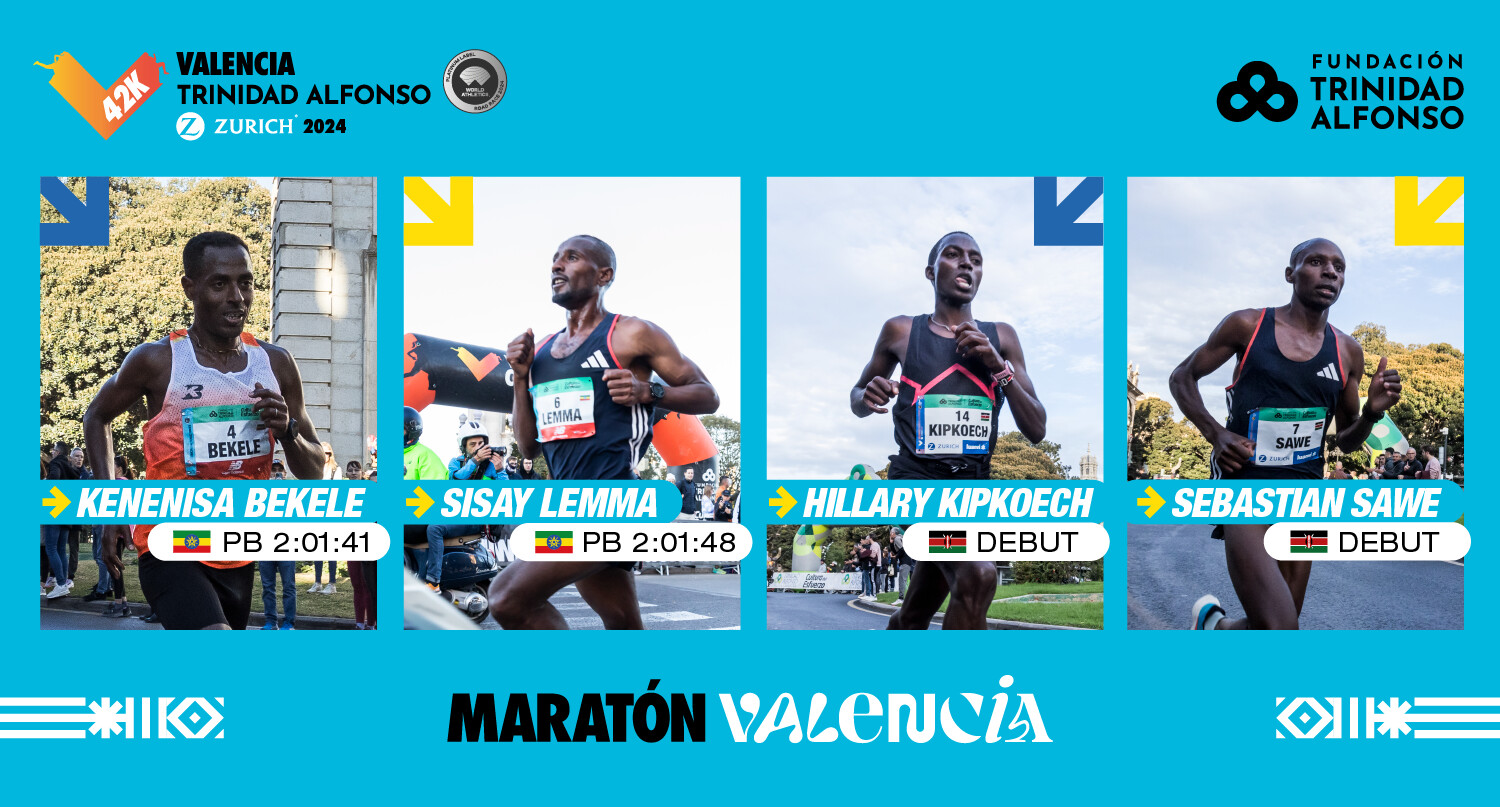
On the women’s side, 2023 World champion Amane Beriso headlines the field with her 2:14:58 personal best from the 2022 Valencia Marathon, which puts her at No. 6 on the all-time list. Her fellow countrywomen Megertu Alemu (2:16:34) and Hiwot Gebrekidan (2:17:59) are the only two other women under 2:18.
American Sara Hall will be running her fourth marathon of the year. Biya Simbassa, who has a personal best of 2:10:34 and was 11th at the U.S. Olympic Marathon Trials in February, is heading to Spain for his third career marathon.
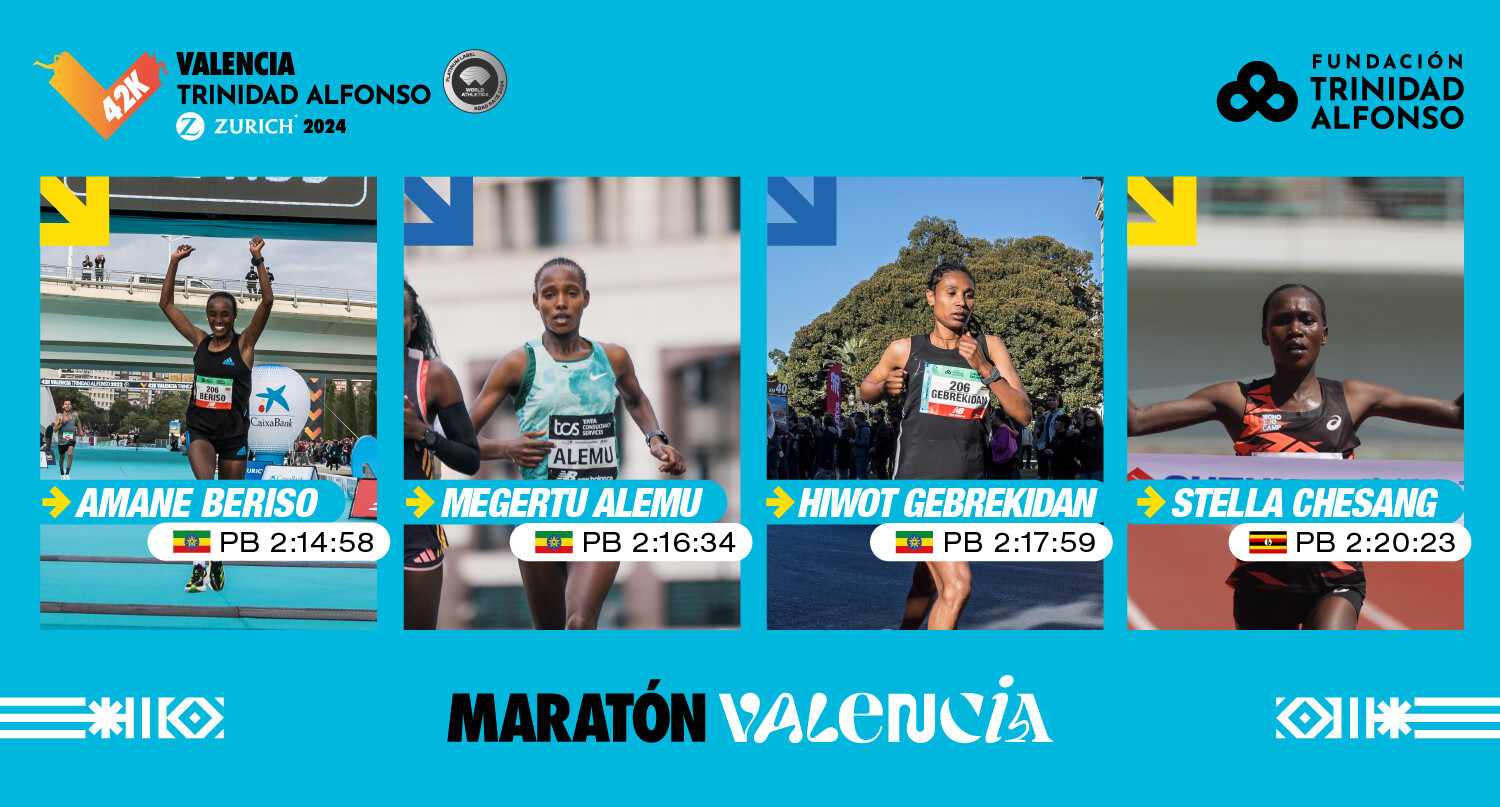
Here’s a list of the notable men who are running…
Men’s Elite Field
Kenenisa Bekele – 2:01:41
Sisay Lemma – 2:01:48
Birhanu Legese – 2:02:48
Deresa Geleta – 2:03:27
Guye Adola – 2:03:46
Gashau Ayale – 2:04:53
Tadesse Abraham – 2:05:01
Alphonce Simbu – 2:05:39
Sondre Moen – 2:05:48
Samwel Fitwi – 2:06:27
Andamlak Belihu – 2:06:40
Maru Teferi – 2:06:43
Shokhrukh Davlyatov – 2:07:02
Richard Ringer – 2:07:05
Zerei Kbrom – 2:07:10
Iliass Aouani – 2:07:16
Samuel Barata – 2:07:35
Héctor Garibay – 2:07:44
Ibrahim Chakir – 2:07:48
Mohamed El Talhaoui – 2:08:03
Peiyou Feng – 2:08:07
Dani Mateo – 2:08:22
Lahsene Bouchikhi – 2:08:36
Abderrazak Charik – 2:08:37
Andy Buchanan – 2:08:58
Weldu Negash Gebretsadik – 2:09:14
Therence Bizoza – 2:09:18
Yohan Durand – 2:09:21
Mohamed Chaaboud – 2:09:21
Simon Boch – 2:09:25
Yimer Getahun – 2:09:27
Bukayawe Malede – 2:09:28
Emmanuel Roudolff – 2:09:34
Yohanes Chiappinelli – 2:09:46
Stephen Scullion – 2:09:49
Paulo Paula – 2:09:50
Peter Herzog – 2:10:06
Bart van Nunen – 2:10:16
Felicien Muhitira – 2:10:17
Dieter Kersten – 2:10:22
Arkadiusz Gardielewski – 2:10:31
Bjorn Koreman – 2:10:32
Abbabiya Simbassa – 2:10:34
Hicham Sigueni – 2:10:37
Johannes Motschmann – 2:10:39
Patricio Castillo – 2:10:40
Jorge Blanco Alvarez – 2:10:49
Archie Casteel – 2:10:49
Yongzheng Huang – 2:10:49
Jakoub Labquira – 2:10:50
Alejandro Jiménez – 2:10:54
Juan Luis Barrios – 2:10:55
Thijs Nijhuis – 2:10:57
Iraitz Arrospide – 2:10:59
Christian Zamora – 2:11:02
Nicolás Cuestas – 2:11:03
Edward Cheserek – 2:11:07
Kamil Jastrzebski – 2:11:09
Necho Tayachew – 2:11:21
Richard Douma – 2:11:21
Linus Rosdahl – 2:11:30
Mohamed El Ghazouany – 2:11:48
Thomas do Canto – 2:11:51
Hesiquio Flores – 2:11:57
Ahmed Elhassouni – 2:12:12
René Cunéaz – 2:12:48
Mario Bauernfeind – 2:12:49
Patrik Wageli – 2:12:58
Jason Pointeau – 2:13:00
Adam Lipschitz – 2:13:01
Joris Keppens – 2:13:18
Alexis Godefroy – 2:13:32
Pierre Denays – 2:13:34
Sebastian Sawe – Debut
Daniel Mateiko – Debut
Matthew Kimeli – Debut
Dillon Maggard – Debut
Here’s a list of the notable women who are running…
Amane Beriso – 2:14:58
Megertu Alemu – 2:16:34
Hiwot Gebrekidan – 2:17:59
Tiruye Mesfin – 2:18:47
Stella Chesang – 2:20:23
Sara Hall – 2:20:32
Majida Maayouf – 2:21:27
Evaline Chirchir – 2:22:11
Chimdesa Kumsa – 2:22:13
Isobel Batt-Doyle – 2:23:27
Malindi Elmore – 2:23:30
Sofia Assefa – 2:23:33
Fionnuala McCormack – 2:23:58
Jessica Stenson – 2:24:01
Gerda Steyn – 2:24:03
Laura Hottenrott – 2:24:32
Camilla Richardsson – 2:24:38
Kaoutar Boulaid – 2:25:03
Clara Evans – 2:25:04
Fatima Azzaharaa Ouhaddou – 2:25:30
Laura Luengo – 2:25:35
Susana Santos – 2:25:35
Moira Stewartova – 2:25:36
Marie Perrier – 2:26:19
Tereza Hrochová – 2:26:38
Zhanna Mamazhanova – 2:26:42
Aleksandra Brzezinska – 2:27:20
Solange Jesus – 2:27:30
Paola Bonilla – 2:27:38
Nora Szabo – 2:28:25
Jane Bareikis – 2:29:00
Becky Briggs – 2:29:06
Alice Wright – 2:29:08
Roberta Groner – 2:29:09
Molly Gravill – 2:29:45
Monika Jackiewicz – 2:29:51
Event organizers announced the race will move forward as scheduled despite severe flooding and more than 200 deaths in the Valencia province. In a statement, organizers announced fundraising plans to aid the city and those affected by the recent storms and flooding.
by Chris Chavez
Login to leave a comment
VALENCIA TRINIDAD ALFONSO
The Trinidad Alfonso EDP Valencia Marathon is held annually in the historic city of Valencia which, with its entirely flat circuit and perfect November temperature, averaging between 12-17 degrees, represents the ideal setting for hosting such a long-distance sporting challenge. This, coupled with the most incomparable of settings, makes the Valencia Marathon, Valencia, one of the most important events in...
more...You Have No Idea How Gross Your Water Bottle Is. Here’s How to Clean It.
As an active person, staying hydrated is one of your top priorities. Cleaning your water bottle should be high up on your to-do list, too, but for many of us—let’s be honest—it’s not.
This makes for a humbling (and gross) reality check when you go for a drink, glance down at your mouthpiece, and are forced to reckon with a film of mystery gunk that has collected there since the last time you washed it.
Due to busy schedules, forgetfulness, and a lack of extra tumblers, water bottles get nasty quickly. Although we love the sustainable choice of reusing one, that commitment requires some care-taking to avoid illness and maintain good water-bottle hygiene.

Below, experts dig into the dirty details and share their tips for keeping your water bottle safe and sanitary, no matter how many sweaty hikes or shared sips it endures.
What Types of Bacteria Are Lurking in Your Reusable Water Bottle?
According to the Water Quality Association, a not-for-profit organization in the water treatment industry, all drinking water contains microbes or heterotrophic microorganisms, a catch-all term for types of bacteria, mold, or yeast.
A September 2024 survey that swabbed water bottles found that the most common bacteria in reusable bottles were associated with antibiotic-resistant, hospital-acquired infections like pneumonia and meningitis (which can be fatal), and food poisoning, which comes with symptoms like vomiting and diarrhea.
The survey also concluded that Americans’ reusable water bottles, on average, contain 20.8 million CFUs of bacteria—about 40,000 times more than you’d typically find on a household toilet seat.
Exactly what type of invaders your water bottle collects depends on if it has a screw top with nooks and crannies for germs to stow away in, whether or not you share your bottle with others, or if you use it for anything other than water, like coffee or sports
Sugary beverages, in particular, leave behind nutrients for bacteria to feed on and multiply.
Drinking from a Dirty Bottle Can Make You Sick
If you don’t clean your water bottle properly, all kinds of bacteria can start to grow. Ingesting water from an unclean bottle can result in gastrointestinal or respiratory issues, says Qinchun Rao, a professor of Food and Nutrition at Florida State University.
How to Tell When Your Water Bottle Is Dirty
Acceptable levels of heterotrophic organisms, also known as heterotrophic plate counts (HPC), vary by country. The Environmental Protection Agency’s HPC standard for any given drinking water sample is less than or equal to 500 colony-forming units per milliliter (CFU/mL).
When your water surpasses that threshold, and/or other bacteria strains are introduced to the mix—like when a water bottle goes uncleaned after a workout—water safety is called into question.
You won’t always be able to tell how dirty your water bottle is. That’s a big reason cleaning them falls by the wayside: they “look” clean.
According to the Cleveland Clinic, more noticeable signs of contamination are visible mold spots, an unpleasant smell, cloudy water, or an off-putting taste.
Instead of waiting for it to show signs of grime, just get into the practice of cleaning it daily at a minimum.
However, if you fall behind and skip a few days, remain on the lookout for a tell-tale layer of dark slime known as a biofilm. It’s something that you will likely have to remove your lid and peek inside to notice, especially if it’s only
How to Clean Your Water Bottle
“Treat your water bottle like a utensil,” says Mitzi Baum, the CEO of Stop Foodborne Illness. If it’s dishwasher safe, she strongly recommends running it through a wash cycle.
Below are some more expert tips for water bottle washing.
Clean Your Water Bottle After You Purchase It
When you’ve bought your ideal water bottle, don’t race to use it. Baum says it’s important to clean and sanitize it with hot water before your lips ever touch it—because who knows how dirty its journey to the store was.
Wash Your Water Bottle Daily, and Do a Good Job
Rao recommends washing the bottle with warm, soapy water, especially if you use it frequently or for beverages other than water. (Reader: just rinsing the bottle under some running water doesn’t qualify as cleaning it.)
Clean Your Reusable Straw with a Small, Long Brush
Flushing the narrow spout with water won’t cut it. This is especially the case if your straw is plastic because, as Wu notes about plastic water bottles, they are most easily scratched and, therefore, more likely to harbor bacteria.
Regardless of material, straws are small and compact, making them the perfect hiding
If You Have a Water Bladder, Give It a Similar Treatment
Your hiking water reservoir can be treated like a giant water bottle. Soak it in hot, soapy water or use a cleaning tab, like the Bottle Bright Cleaning Tablets, scrub the inside (including the narrow drinking hose, which will require a slim, straw-cleaning brush), drain it, and rinse it well before refilling for the next adventure. During the soak stage, make sure to also fill the hose with cleaning solution.
Narrow-Neck Bottles Require Attention to Detail
Professor Wu points out that bottles with narrow necks make thorough cleaning difficult. Cleaning one efficiently might take a slender bottle-cleaning brush or, more simply, a soft sponge that’s easy to manipulate around its curves without missing any spots.
Don’t Forget to Wash the Outside
“People often carry their water bottle throughout the day and rest it on various surfaces,” says Dr. Mieses Malchuk, a board-certified family physician in North Carolina, like, for example, in a sweaty duffel or on a musty tree trunk. For that reason, cleaning the outside of your bottle with the same soapy water method matters.
The easiest way to keep your water bottle clean
Login to leave a comment
2024 USATF 5K: Ahmed Muhumed And Annie Rodenfels Win
Annie Rodenfels went back-to-back while Ahmed Muhumed claimed his second US title of the year at the 2024 USATF 5K Road Championships on Saturday morning in Central Park. Rodenfels, who runs for the B.A.A. High Performance Team, broke away from Emily Venters and Emma Grace Hurley in the final mile to win in 15:20.
Muhumed, who won the US 8k road title in July and was the runner-up here last year, dropped the field with a hard move at 2 miles and held off a late charge from Sam Prakel to win in 13:38 to Prakel’s 13:39.
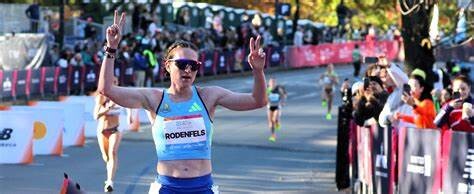
Top 10 results
Men
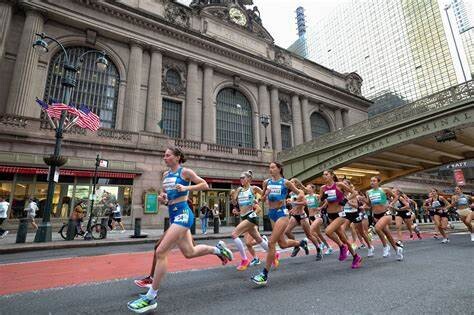
1. Ahmed Muhumed, HOKA NAZ Elite 13:38
2. Sam Prakel, adidas 13:39
3. Brian Barraza, Roots Running Project 13:42
4. Kirubel Erassa, unattached 13:44
5. Hillary Bor, HOKA One One 13:45
6. Anthony Rotich, US Army 13:48
7. Drew Bosley, unattached 13:49
8. Afewerki Zeru, McKirdy Trained 13:52
9. Abbabiya Simbassa, Under Armour 13:57
10. Morgan Beadlescomb, adidas 13:59
Women
1. Annie Rodenfels, B.A.A. 15:20
2. Emily Venters, Nike 15:25
3. Emma Grace Hurley, Asics 15:31
4. Bailey Hertenstein, Nike 15:32
5. Susanna Sullivan, Brooks 15:36
6. Abby Nichols, HOKA NAZ Elite 15:41
7. Paige Wood, HOKA NAZ Elite 15:41
8. Taylor Roe, Puma 15:43
9. Natosha Rogers, Puma 15:45
10. Molly Born, Puma 15:47
by Jonathan Gault
Login to leave a comment
Dash to the Finish Line
Be a part of the world-famous TCS New York City Marathon excitement, run through the streets of Manhattan, and finish at the famed Marathon finish line in Central Park—without running 26.2 miles! On TCS New York City Marathon Saturday, our NYRR Dash to the Finish Line 5K (3.1 miles) will take place for all runners who want to join in...
more...Rory Linkletter adjusts to new coach ahead of TCS New York City Marathon
Canadian marathoner Rory Linkletter is preparing for the 2024 TCS New York City Marathon on Nov. 3 with a new coach and a renewed focus. After his previous coach, Ryan Hall, decided to step away from coaching following the Paris 2024 Olympics, Linkletter was forced to seek new guidance with less than 10 weeks to go until the race.
For Linkletter, his Paris Olympic marathon was a mix of pride and disappointment. He was proud to represent the red and white at an event he had always dreamed about competing at, but he felt his race was underwhelming. “I feel like I didn’t show my best,” Linkletter said on his 47th-place finish (2:13:09).
Linkletter told Canadian Running his preparation for Paris centred heavily on mastering the challenging course and hills: “I felt like I needed to get strong and run hills, but at the end of the day, it’s always the fittest man who wins,” he says. “I got too far away from speed and power.”

He took a week off after Paris and then dove back into training, focusing on his next challenge–the 2024 New York City Marathon. During his time off, Linkletter was taken by surprise when Hall announced he would be stepping back from coaching. “I was shocked. It was all so sudden,” Linkletter admits. “If you knew Ryan, you wouldn’t be surprised, but I didn’t expect it to happen so soon.”
New beginnings

Balancing the post-Olympic blues with the sudden coaching transition wasn’t easy, but Linkletter says he’s the most motivated to train when he’s disappointed.
The 2:08:01 marathoner initially created his own training plan for NYC, and reached out to a few people he trusted for feedback. One of those was Jon Green, coach of U.S. Olympic marathon bronze medallist Molly Seidel. “We met up, had a conversation, and he said he’d be happy to help me get to NYC,” Linkletter says. “By the time we met again, he had mapped out a plan for me. I liked what he had.”
Green is someone Canada’s second fastest marathoner has long respected, going back to their days racing against each other in the NCAA—Linkletter competing for Brigham Young University (BYU) and Green for Georgetown. Now, as a coach-athlete duo, they’re working to fine-tune Linkletter’s strengths for the NYC Marathon in his home of Flagstaff, Ariz.
Moving forward
Training in Flagstaff has become a constant for Linkletter. He’s found a home in the high-altitude environment, which is known for its ideal training conditions. “I love it here,” he says. “It’s one of the best, if not the best, places to train.” With the NYC Marathon on the horizon, Linkletter is content in Flagstaff, but remains open to exploring options that will best prepare him for the future. “Paris was awesome, but I want to be there again in L.A. 2028 and be the best version of myself,” he says.
By then, Linkletter will be 31 years old—what he believes will be his prime—and he’s determined to make every year count as he builds toward the goal.
by Marley Dickinson
Login to leave a comment
TCS New York City Marathon
The first New York City Marathon, organized in 1970 by Fred Lebow and Vince Chiappetta, was held entirely in Central Park. Of 127 entrants, only 55 men finished; the sole female entrant dropped out due to illness. Winners were given inexpensive wristwatches and recycled baseball and bowling trophies. The entry fee was $1 and the total event budget...
more...A cold, hard look at extreme winter races
Winter is when races careen from the cosy, coddling courses of autumn into a forbidding tundra that both terrifies and exhilarates. It’s in this frozen landscape that the most extreme races are forged—competitions that take things to unsettlingly unconventional extremes, like sporting the scariest name or boasting the largest field of hungover revellers.
From a race season positively steeped in superlatives, here’s a sampling of extreme cold-weather races that boast the most—for reasons silly and chillingly serious—and strategies for making the most of them.
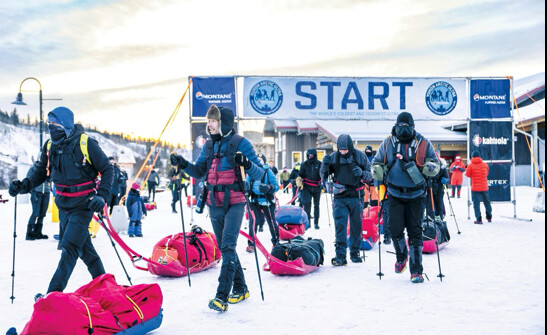

THE WILDEST
Polar Bear Marathon
Nov. 23, 2024
Churchill, Man.
Distances: 21.1 km, 42.2 km, 50 km
albertmartens.com
An event where vehicles tail runners in case a polar bear wanders onto the course truly deserves the title of winter’s wildest race. Beginning from Churchill, Man., the course takes participants along the coast of Hudson Bay for a challenge that balances breathtaking beauty with physical and mental rigour.
“A few times there have been polar bears right on the road where they run,” says race director Albert Martens. “However, we do provide safety for the runners, escorting them with a vehicle. Often the Canadian Rangers are out and assist us, as well.”
As challenging as this event is, the joys of the race aren’t to be outdone by the hardships. “One of the highlights of the run is the beautiful sunrise at the start overlooking Hudson Bay, and the post-marathon banquet, where the runners get to know each other better,” says Martens. He adds that one of the “swag bag” items runners receive is a polar bear carved out of soapstone. Although signups for this year’s event were set to close Oct. 1, it’s a race worth keeping in mind
THE BOOZIEST
Santa Will Run for Beer 5K-ish
Dec. 7, 2024
Bethlehem, Pa.
Distance: “5K-ish”
runsignup.com/Race/PA/Bethlehem/SantaWillRunforBeer5Kish
When it comes to combining Santa and suds, this race really raises the bar. Suit up in your best Kris Kringle costume and simultaneously work up and quench your thirst as you race between more than a dozen drinking establishments. The order you hit the bars in is up to you, but you’ve got three hours to stop at them all before raising a celebratory glass with your fellow runners at Molly’s Irish Grille and Sports Pub.
Speed counts—the first 24 runners at each location get a free beer—but so does presentation, so don’t skimp on style when putting together your Santa look. “Don’t go easy on your costume,” suggests Rochelle Romeo Kane, managing director of Run Lehigh Valley, which organizes the race. She also recommends mapping out your “beer strategy” beforehand: “Are you more of a ‘run fast and hit the close bars’ or ‘go for the early long-haul’ kind of runner? Either way, come with your plan and know it will change!” Runners must be at least 21, but it’s a race that
THE JOLLIEST
Santa Shuffle Fun Run & Elf Walk
Dec. 7, 2024
British Columbia: Abbotsford, Chilliwack, Langley
Alberta: Edmonton, Calgary
Saskatchewan: Regina
Manitoba: Winnipeg
Ontario: Hamilton, Kemptville, Kingston, Ottawa, Sudbury, Thunder Bay, Toronto, Whitby
Quebec: Montreal
Prince Edward Island: Charlottetown
Nova Scotia: Halifax
Newfoundland and Labrador: St. John’s
Additional virtual events
Distances: 1 km, 5 km
santashuffle.ca
What started in 1990 as a fundraiser by Running Room members to support Salvation Army programs in Edmonton has become a countrywide celebration of seasonal giving, as legions of speedy Santas are unleashed from start lines coast to coast. Santa Shuffle races, which continue to benefit the Salvation Army, boast the most Santas in Canada’s winter-running scene, but also pull in plenty of reindeer, elves and assorted festive fashionistas. Clever costuming pays at the events, with prizes for the best individual, group and pet get-ups (see the event website for details).
THE PRICIEST
Antarctic Ice Marathon
Dec. 13, 2024
Union Glacier, Antarctica
Distances: 21.1 km, 42.2 km
icemarathon.com
With a registration fee approaching $30,000, the Antarctic Ice Marathon isn’t a race you’ll enter on a whim, but the experience it offers is as rich as its price tag, and it’s sure to earn a spot on many runners’ bucket lists. You’ll be whisked by jet from Punta Arenas, Chile, to Union Glacier in the Antarctica interior, within a few hundred kilometres of the South Pole. Although aid stations, snowmobile support and medical personnel will be available, completing either the event’s marathon or half-marathon will take plenty of self-motivation; as race organizers point out, there won’t be any crowds to cheer you on—not even penguins venture this far south. Runners should also note this race can be as unpredictable as it is unforgettable. “The Antarctic Ice Marathon presents a unique challenge with its extreme cold and unpredictable weather,” says race director Becca Pizzi. “We advise runners to prepare for low temperatures and be ready for sudden shifts in conditions. Proper layering and mental resilience are key to tackling this unforgettable race.”
THE HEAD-POUNDINGEST
The 18th Hangover Hike
Jan. 1, 2025
Dewsbury, England
Distances: 15 km, 27 km, 34 km
ldwa.org.uk/TheIrregulars/W/2112/hangover-hike.html
An event that gives a refreshingly honest nod to the realities of New Year’s revelry, the Hangover Hike in northern England encourages hikers and runners to get an early and (mostly) sober start to 2025. The New Year’s Day run/hike around the rural roadways, hills and hiking trails of the town of Dewsbury (about 15 km south of Leeds) will ease participants into the challenge ahead with tea and toast at registration. The event’s three hikes—15 km with just over 300 m of ascent, 27 km with about 520 m of climb and 34 km with almost 550 m of ascent—start and end at The Leggers Inn. The Irregulars group of the Long Distance Walkers Association, which organizes the event, puts it succinctly: “A brisk walk or run, a breath of fresh air, a wee dram en route and a hair of the dog at The Leggers. What better way to start the new year?”
THE LOOPIEST
Frozen Falcon
Jan. 12, 2025
Falcon Beach, Man.
Distance: As far as you can go in eight hours
ontheedgerunning.com/home/frozenfalcon
Looped courses can help take the sting out of daunting distances by breaking down the kilometres into bite-sized chunks. The Frozen Falcon’s 6.5-km course at Falcon Trails Resort in southeastern Manitoba is the perfect length to keep your run manageable without it becoming monotonous, but be aware of the course’s unique challenges: “This race is run on groomed trails, however, after a few laps the snow can become a little like sugary mashed potatoes,” cautions race director Joel Toews. “Get working on that lower-leg strength! Also, you’re going to head into the yurt each loop, where there is food and a wood stove. It’s pretty cosy, so don’t get sucked into the comfort. Get back out there as soon as possible.”
THE SCARIEST-SOUNDING
Hypothermic Half Marathon
Vancouver: Jan. 19, 2025
Edmonton: Feb. 2, 2025
(A planned second Edmonton event was not confirmed before publication.)
Kelowna, B.C.: Feb. 9, 2025
Halifax: Feb. 16, 2025
Calgary: Feb. 23, 2025
Winnipeg: Feb. 23, 2025
Additional virtual events
Distances: 10 km, 21.1 km
hypothermichalf.com
The Hypothermic Half Marathon is no walk in the park, but this intimidating-sounding series of winter races has a bark that’s worse than its frostbite. That’s due in large part to the warmth and hospitality shown by volunteers and supporters during and after the races. There are other ways to stay toasty at the Hypo Half, however—at last year’s event in Edmonton, local runner David Eliuk sported 120 T-shirts in a bid to set a new world record for the most T-shirts run in a half-marathon. He achieved the feat, but was bested by American Dan Harvey—who donned 127 shirts at an event a few months later—before Eliuk’s record could be ratified.
THE LONGEST
Montane Yukon Arctic Ultra
Feb. 2–14, 2025
Teslin, Yukon
Distances: 340 km, 640 km
arcticultra.de/home
This race could be a contender for the most extreme in several categories—winds whip up with unfathomable force while temperatures can plummet to -40 C—but its length is what really makes it a standout. Starting from the village of Teslin and finishing in the town of Faro, the ultra’s shorter race totals 340 km, while the main event (including a 150-km route out and back from Faro) adds up to an eye-watering 640 km. Competitors can tackle these either on foot or skis or by mountain bike.
“Many races with these kinds of distances are organized in stages,” says race director Robert Pollhammer. “In our race, athletes are on the go day and night, sometimes up to an average of 20 hours per day.” He cautions that sleep deprivation can be dangerous in such an extreme environment and emphasizes the importance of having a strong race strategy.” While cautioning that the race isn’t for everyone, he says, “If you like the cold, the vastness of nature and being in a race with a family-like atmosphere, the
THE LARGEST (LATITUDINALLY)
6633 Arctic Ultra
Feb. 27 to March 8, 2025
Eagle Plains, Yukon
Distances: 120 miles (193 km), 380 miles (612 km)
6633ultra.com
Canada’s most northerly winter foot race, the 6633 Arctic Ultra (named for the latitude of the Arctic Circle in the Yukon—66 degrees, 33 minutes north) tests the ambitious and adventurous in a gruelling trek across two Canadian territories. Beginning in Eagle Plains, Yukon, runners who tough it out will cross the Arctic Circle to finish lines in the Northwest Territories hamlets of Fort McPherson (193 km) and Tuktoyaktuk (612 km).
Blistering wind and cold make the 6633 one of the most physically punishing races on Earth—but the competition’s mental challenge is greater still, according to race co-director Stuart Thornhill. “The mental fatigue experienced and resilience required cannot be underestimated,” Thornhill says. “Our athletes experience long periods of isolation in the dark and extreme cold, leading to extreme hallucinations.” Sticking to script, he says, is key to success at the 6633: “Those who make it through have a plan which they follow, eating when they need to, sleeping when they need to. They don’t get caught up racing someone else and breaking their plan. I have seen people who have been at the back of the pack for most of the race and have come in the top three finishers, because they stuck to what worked best for them.”
THE SPICIEST
Chilly Half Marathon
March 2, 2025
Burlington, Ont.
Distance: 21.1 km
raceroster.com/events/2025/84601/2025-chilly-half-marathon
The Chilly Half Marathon is a cold-weather race that throws some serious heat. While most of the events on this list aren’t really built for racking up personal bests, the course through downtown Burlington and along Lake Ontario’s western shore is perfect for burning rubber. “This will be the 29th year of the fun, fast, flat race that welcomes 4,000 runners to downtown Burlington,” says Kelly Arnott, co-CEO and co-owner of race organizer VR Pro Inc.
An event that marks the start of the spring road-running season in eastern Canada, the Chilly Half is just as popular for its post-race revelry as for its scenic, zippy course. Spectators and runners can shake off the March chill by coming together for a bowl of piping hot chili. “If it is a chilly day, we will warm you up with a bowl of hot Stagg Chili following the great race,” says Arnott.
THE MOST ENDURING
Around the Bay Road Race
March 30, 2025
Hamilton
Distances: 5 km, 10 km, 15 km, 30 km, additional virtual events
bayrace.com
Launched in 1894—three years before the Boston Marathon—Hamilton’s storied Around the Bay Road Race is North America’s oldest long-distance running event. More than a testing ground for generations of runners, Around the Bay is itself something of an endurance feat. Despite some challenging obstacles (in recent years organizers have had to switch up the course due to renovation and construction projects in the city), the 30K run around Hamilton Harbour remains a cultural focal point for the local community and favourite destination race for runners worldwide. Race-day weather has been known to swing wildly from warm and sunny one year to blizzard-like the next, so the best way to prepare is to be consistent in training, suggests race director Anna Lewis. “Keep to your training schedule even on bad weather days, because you never know what the weather will be like on race day,” she says, adding that wisely managing effort is also key to negotiating tougher terrain near the end of the race. “Don’t go out too fast, so
FROZEN FEATS
Here are some extreme winter exploits that have earned a place in the Guinness Book of World Records.
Coldest marathon
By its name alone, the Siberian Ice Marathon seems a convincing contender for the world’s coldest marathon—and it’s not just hype. Temperatures as low as -39 C were recorded at the 2001 race in Omsk, Russia. While it’s the coldest marathon recognized by Guinness, organizers of the Pole of Cold Marathon in Oymyakon (also in Siberia) reported the mercury crashing to -55 C at its most recent event on Jan. 12, 2024.
Fastest half-marathon barefoot on ice/snow
Not content to set this record by running a bone-chilling half-marathon barefoot in 1:50:42, Josef (Joska) Šálek added an extra dash of shivery showmanship by running the distance in nothing but shorts. The Czechian set the record on a course in his home country on Feb. 18, 2024.
Fastest marathon by a female dressed as Santa
From snowmen to ice-cream cones, there’s no end to the cold- and winter-centric costumes runners will don to break records, but most of these attempts are made in spring or fall. Hand it to British runner
WINTER RACE TIPS FOR FIRST-TIMERS
Don’t dress just for the start line
As tempting as it is to bundle up while waiting for your race to start, things can heat up pretty quickly once you’re on the move, and overheating can sap your performance and enjoyment of the race. If temperatures are dry and above freezing, dressing as though it’s 10 C warmer than it really is will keep your engine running cool as you hit your stride. On colder, windier days, dress in layers that can easily be discarded or passed off to a supporter on the sidelines.
Show up fully charged
The energy demands on your body when racing in colder temperatures aren’t significantly different from those of any other time of year, so there’s no need for drastic changes to your pre-race fuelling. The same can’t be said of your running tech, however. Plummeting temperatures can be a big drain on the battery capacity of your watch, headlamp and heart rate monitor, even during shorter races. Make sure the devices you rely on are fully charged; don’t assume the GPS that saw you to the end of a summer 5K on a 15 per cent
Login to leave a comment
Hurricane Helene Devastated This Running Hotbed. Professional Athletes Are Helping Rebuild It.
“We had no idea the gravity of what was coming,” said Olympian Abbey Cooper.
On a typical Tuesday, Abbey Cooper usually tackles a threshold workout before leading practice as the coach of a youth cross-country team in Boone, North Carolina.
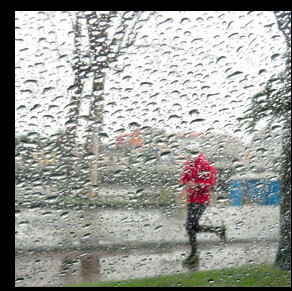
Last week, the 2016 Olympic 5,000-meter runner was working as a volunteer, answering phones at her church, Alliance Bible Fellowship. For hours, the new mom helped survivors of Hurricane Helene obtain generators and other necessities in the wake of a natural disaster.

When Helene made landfall in Florida as a Category 4 storm on September 26, it created a 500-mile path of destruction across the southeast. Homes were washed away, roads were destroyed, and electricity was wiped out in communities across six states, where the death toll has risen to 227. Many are still unaccounted for or missing, according to The AP.
In the rural mountain towns of western North Carolina, the hurricane decimated communities with unrelenting rain and devastating floods. And emergency response was made more difficult due to hundreds of damaged roads and downed bridges.
Now as people begin to recover and rebuild, several elite runners in Boone and Blowing Rock, North Carolina, are taking major steps to give back and raise awareness for the organizations working tirelessly to support those in need. From cleaning up trails to delivering meals and disaster kits, professional and collegiate athletes who train in the area are providing critical aid and urging others to help in recovery efforts.
“We had no idea the gravity of what was coming”
Cooper, her husband, Jacob, and their 20-month-old daughter, Mercy, live in a valley about 15 minutes from downtown Boone. In the days leading up to the storm hitting their town on Friday, September 27, a downpour descended on the area. At the height of the storm, Cooper remembered seeing waterfalls flowing off the hill and rushing toward their house.
Though they had to dig a trench to reroute water that was flowing into their garage, there was minimal damage done to the Coopers’ home. Cooper said they were lucky. One of their neighbor’s homes located next to a creek was destroyed, but the owner made it out safely. “All of us were really humbled. We had no idea the gravity of what was coming,” she said.
They lost power and water, relying on a portable camping stove and water filter to sustain them at home for three days. The couple considered driving to their friend’s house in Raleigh but decided to stay after the power was turned back on.
Tristin Van Ord Colley had a similar terrifying experience at her home in Blowing Rock, located about eight miles from Boone. The professional marathoner, who runs for Zap Endurance, was in her apartment when a tornado hit the street behind her complex on Wednesday, September 25. Without receiving any warning of the tornado, the Appalachian State University alum and her husband, fellow pro runner Andrew Colley, took shelter last minute in a room without windows. The next day, the rain started to pick up. By Friday, it became catastrophic.
Tristin said Andrew was watching a teammate’s dogs across town when water started flooding into the house. With the water rising rapidly and the electricity still on, Andrew fled with the dogs in his car and drove to their apartment. Tristin said he was forced to avoid road closures and drive through deep water as the storm progressed. “If [Andrew] had waited any longer, I’m not sure he would’ve been able to make it,” she said.
Though the basement of their apartment building flooded up to four feet, the water didn’t reach their unit on the second floor. After the power went out—and didn’t turn back on for nine days—Tristin and Andrew braved the few roads that were open but riddled with fallen trees, to drive to her mom’s house in Chapel Hill.
Recovering and rebuilding
Once they stabilized at home, Abbey and Jacob started volunteering with local relief efforts led by the Red Cross and Samaritan’s Purse in partnership with their church. Jacob, who works as the Associate Athletics Director for Sports Psychology and Mental Wellness at Appalachian State, is making deliveries to families in need and serving meals at the university. Abbey is assisting with administrative
“The people of Appalachia I feel are forgotten about a lot…Being someone who was extremely lucky in this situation, it’s hard for me to watch this community that I’ve grown to love so much crumble because of poverty and maybe not being prepared or not warned,” she said, while noting the messaging about the severity of the storm could have been better communicated in advance.
“It’s important to have eyes on this area and have people recognize that these people here matter too.”
Zap Endurance elite coach Peter Rea and his family are doing their part by volunteering at local churches and public schools, which have become distribution centers for aid since the hurricane hit. Rea, his wife—cofounder of Zap Endurance Zika Rea—and their two children are helping people get necessities, like diapers, toothpaste, bottled water, blankets, and hot meals in the aftermath of their homes getting destroyed.
The Rea family home saw minimal damage in Blowing Rock compared to other communities sitting at lower elevation, but four Zap runners were flooded from their houses, he said. Several of the athletes stayed with Rea immediately after the hurricane. They had to run on treadmills because the team’s primary training venue, Moses H. Cone Memorial Park, was severely damaged from the storm.
“There are just hundreds of trees down in the national park on all of the carriage trails that we run on,” Rea said. “A couple of our rolling dirt loops are completely flooded out. There’s lots of housing destruction on the road because it’s right next to the Watauga River, which went 12 feet over its banks.”
Most of the team left Blowing Rock and Boone to continue their respective training blocks in their hometowns. Though the team is displaced right now, Rea has encouraged the athletes to stay connected as they pursue their running goals from afar. “We’re trying to impress upon them to be excited about getting out the door everyday, and go out of your way to create community when you’re back home,” he said.
Rea is hoping the athletes will be able to
A portion of the trail clean-up effort is being led by the cross-country team at Appalachian State. Seeing the widespread damage prompted the men’s and women’s squad to pick up trash blown onto the paths they utilize every day, said Appalachian State women’s distance coach Annie Richards.
“As a distance runner, you’re out running the trails or running around town, you really have a unique connection to the place,” Richards said. “In some ways, it’s harder because a lot of the trails that we’ve been running on have been really impacted by the storm, but also I think our team has been able to really understand the scope of the disaster.”
Last week, the team volunteered to sort through donations and build disaster relief kits, which included items to help people kill mold in their home caused by water damage. Richards said they plan to do more volunteer projects while the team is in season for cross-country this fall.
Though the community has received aid from different organizations in town and around the country—Cooper said she got “chills” when she saw hundreds of camper vans belonging to volunteers who traveled many miles to assist—there’s a long period of recovery ahead.
“The people of western North Carolina have never seen anything of this magnitude,” Rea said. “Anything people can do to help is greatly appreciated.”
To learn more about Hurricane Helene relief efforts and different ways to give back, visit the following nonprofit organizations recommended
by Runner’s World
Login to leave a comment
The Best Marathon Racing Shoes (2024)
After a year of testing, we've identified 12 marathon shoes that will boost your performance and make the race more enjoyable
While training undeniably has the biggest impact on your marathon performance, there’s one more thing you can do to ensure you’re ready to give your best on race day: invest in a pair of marathon racing shoes.
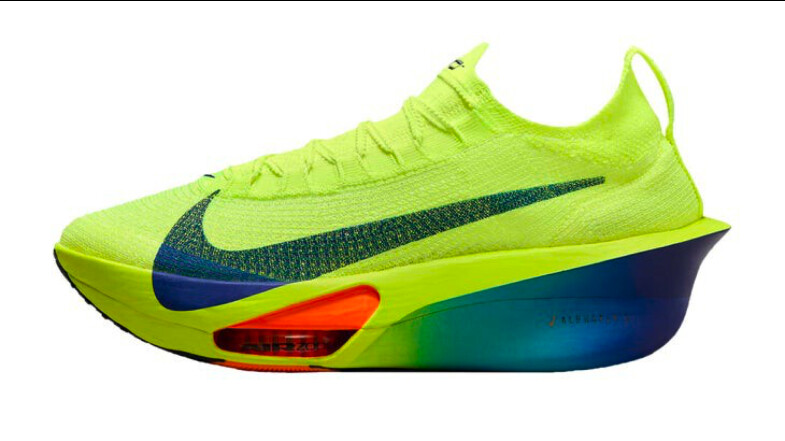
An effective marathon racing shoe can help reduce the repeated impact that miles after miles put on your legs while allowing you to get more energy out of each footstrike. Even more importantly, the right marathon racing shoe will provide you with a platform that is stable and cushioned enough to carry you through 26.2 miles in security and comfort. We’ve spent the last year rigorously testing every option on the market to help you easily pick the perfect pair for you.

Seven years after the debut of the first super shoe, the thick-stacked, carbon-plated racers are ubiquitous at the front of every marathon and increasingly common among runners in the pack looking to optimize their performance. These shoes have been lab-proven to improve running economy by a few percentage points, making it easier to maintain a faster pace. Runners also report that, when running in a super shoe that complements their stride, they experience less muscular fatigue as well.
These are some of the super shoes that our testers found most comfortable and effective at marathon pace, but your experience may vary (as we found when we had three testers compare 16 super shoes. Every super shoe boasts some sort of ultralight, hyper-responsive foam with an embedded, curved carbon-fiber plate—but each delivers a surprisingly unique ride. You’ll have to experiment to find one that gives you wings.
See our “How to Choose Marathon Shoes” section at the bottom of this article for more guidance on whether you should consider a super shoe and how to select a pair that works for your stride.
Designed specifically for marathons, the Alphafly set a new standard as the fastest marathon shoe ever when Eliud Kipchoge wore them while breaking the 2-hour barrier in a staged marathon, clocking 1:59:40.2 in October 2019.
Now, in its third iteration, the Alphafly 3 continues to dominate as the ultimate marathon racing shoe. Designed with Nike’s Air Zoom Units in the forefoot and a PEBA-based midsole, our more competitive, efficient testers praised the Alphafly 3 for its bouncy, energy-efficient ride.
Subtle adjustments to the shoe’s geometry, including a wider footprint and carbon fiber plate, paired with repositioned Air Zoom Units and strategically sculpted midsole, give the Alphafly 3 a distinctly different feel from its predecessor. These changes effectively address some of the issues found in the Alphafly 2, which many felt was heavy and clunky compared to the original.
The new Alphafly 3 is surprisingly nimble, weighing in as the lightest Alphafly to date. Even running as fast as 5k pace, I found the Alphafly responded quickly, encouraging a fast turnover. That said, it may be too sharp of a tool for some runners, as those who require a stable stance may find it a bit wobbly, especially in the heel.
The redesigned Atomkit 3.0 upper is about as race-y as you can get—extremely light and airy. Though a bit tough to put on because of its tightly woven mesh (like previous models), the new upper is highly breathable and secure, with sawtooth laces that stay tied tight throughout the marathon. You can read our full Alphafly 3 review and how it compared to other racers in our .
A stark contrast to On’s previous carbon fiber racing shoe, the firm-feeling Cloudboom Echo, the Cloudboom Strike is soft, bouncy, and fun to run in. Runners who can maintain their balance on what is a fairly unstable platform are rewarded with a lively, highly cushioned ride that’s comfortable and responsive, making it ideal for long-distance efforts.
The secret to the Strike’s sweet ride lies with the insole. On swapped out the traditional Strobel (a thin layer connecting the upper to the sole) and sockliner for a thick, removable layer of high-energy PEBA foam, thus increasing the amount of performance-enhancing foam underfoot. The result is a legal racer with cushioning that feels like it exceeds the World Athletics’ maximum stack height.
The smooth, ultra-cushioned ride is surprisingly quick for such a thick shoe, responding nimbly even when exceeding 5k pace. The shoe accommodated both long-striding testers and those who prefer to turn over faster.
The Cloudboom Strike fit runs long enough that you might consider sizing down by half a size. However, the one-piece mesh upper, which breathes well and effectively repels moisture, easily cinches down for a secure foot hold. You can read our full Cloudboom Strike review.
The Asics Metaspeed Sky Paris gives runners the best of both worlds—a highly energetic, cushioned feel and a stable ride. Super shoes’s tall, thick midsoles often create a wobbly sensation, forcing your stabilizing muscles to work harder to maintain balance.
The key to the Metaspeed Sky Paris’s stability is its wide base under the forefoot, coupled with an updated, wider carbon fiber plate. This makes the Metaspeed Sky Paris an excellent choice for beginner, intermediate, or unstable runners who want to enjoy the benefits of super shoe technology while still having a supportive, predictable platform. One back-of-the-pack tester noted that the broad base provided a “smooth ride, and the running dynamics worked extremely well with my foot and my own personal gait.”
The shoe’s stability, however, doesn’t compromise its stride-lengthening performance for experienced, efficient marathoners. Testers found that the Metaspeed Sky had the ability to work well for a wide range of runners and paces.
The shoe also has a new, more pliable and comfortable mesh upper and midsole foam that’s approximately 8 percent lighter and, Asics says, has an 8.2 percent better energy return over the previous model. The best part: The shoe got nearly an ounce lighter, making it one of the lightest marathon-racing options. You can read more about the Asics Metaspeed Sky Paris in our .
The groundbreaking adidas Adizero Adios Pro Evo 1 shatters the mold as the lightest super shoe ever made, weighing nearly 2 ounces less than the next lightest super shoe. Yet from the outset, I was amazed that a shoe this light could have this much cushioning.
The Pro Evo 1’s rocker is long and aggressive, curving up to a high toe spring (elevation of the toe box). Initially, at well-below marathon speeds, it felt forced and unnatural. However, once I picked it up to around marathon pace and my toes engaged with the steep curve, I sensed a smooth rolling action that energetically pushed me forward. I believe marathoners averaging seven-minute miles or faster will see the most benefit from these.
Besides being the lightest super shoe on the market, the Evo 1 also claims the title of the most expensive. That, coupled with initial talk of the shoe only working for a single marathon, makes the Evo 1 a big investment. Our test pair, however, lasted nearly 200 miles before the midsole showed signs of wear. While not every runner can expect similar durability, those with an efficient stride should enjoy everything the Evo 1 has to offer much longer than a single marathon. You can read our full review and durability test.
The challenge with super-soft, highly responsive cushioning in super shoes is that they often lack stability, demanding an efficient stride to maintain control as they first squish, then bounce back strongly, magnifying forces—whether propulsive or unbalanced. For runners seeking a more stable carbon fiber shoe without losing the performance benefits, the Brooks Hyperion Elite 4 offers a firmer underfoot feel than most.
Instead of the heavily cushioned sink and trampoline-like bounce of many of today’s super shoes, the nitrogen-infused DNA Flash V2 midsole is extremely responsive, pushing back against the foot immediately and ready to pounce on the pace when needed. That lively firmness, combined with a curved carbon fiber plate embedded in the rockered midsole, gives the Brooks Hyperion Elite 4 a smooth, stable, and forward-propelling ride.
In terms of fit and feel, Brooks nailed the basics. The thin, breathable mesh upper perfectly embodies a racing shoe’s ideal—minimalistic, with a secure midfoot lockdown that makes you feel firmly in control.
These are not for you if you prefer a highly cushioned, springy running experience. However, if you feel bounced around by most super shoes and want a firmer-feeling shoe that offers a good mix of stability and fast-rolling performance, the Brooks Hyperion Elite 4 is the shoe you’re looking for. You can read more about the Brooks Hyperion Elite 4.
With a ride that feels like bouncing on a pogo stick, the Hoka Cielo X1 delivers unmatched spring with every stride. Designed with two layers of über-responsive PEBA foam separated by a winged carbon fiber plate and a severe, heel-to-toe rocker profile, testers marveled at how much fun these shoes were. One tester described running in them as “feeling effortless,” adding, “It almost feels like you’re cheating when you’re wearing these shoes.”
However, a few testers had mixed reactions to the shoe’s prescriptive geometry. The stiff platform and aggressive rocker design seemed most effective for a midfoot strike and within a narrow pace range, specifically around six to eight minutes per mile for our testers.
Another knock concerned the shoe’s stiff, ribbon-like shoe laces. Nearly every tester commented on how difficult it was to get a tight, dialed-in knot. Still, if you can get past the less-than-ideal lacing—or choose to swap them out entirely—and are comfortable in the pace range sweet spot, the ride is worth it and could deliver a fun, fast marathon.
Cielo X1 clocks in at a hefty 9.3 ounces for mens size 9 and for womens size 10, making it the heaviest super shoe on the market. Thanks to the high-energy foam, however, we still found it held its own in the super shoe pack when it came to performance. You can read more about the Hoka Cielo X1.
Unfortunately, there are not a ton of options when it comes to highly cushioned zero drop racing shoes. Fortunately, the only option is a really good one. Now in its second iteration, the Altra Vanish Carbon 2 features three more millimeters of softer, more flexible underfoot cushioning heel to toe. Embedded in the soft, nitrogen-infused, TPE-based midsole is a full-length carbon fiber plate that adds a bit of stabilizing and propulsive stiffness without feeling controlling.
The Vanish Carbon 2’s midsole doesn’t have as dramatic a trampoline sensation as some other marathon racing shoes, but it delivers a smooth, cushioned ride that’s hard to beat. Even as someone who typically struggles with zero-drop shoes, I found the Vanish Carbon 2 enjoyable and surprisingly easy to run in, thanks to the high stack and rockered profile. Testers said the low heel helped increase their cadence and kept them more on their toes.
Despite not having a ton of structure, the lightweight, breathable mesh upper does a surprisingly good job of securing your midfoot while your toes have room to splay in Altra’s signature wide toe box. You can read more about the Altra Vanish Carbon 2.
When it comes to replicating the performance benefits of road super shoes for the trail, shoemakers have struggled to achieve the same level of success. The adidas Terrex Speed Ultra is a standout exception. Designed with one of the most aggressive rockered profiles on a trail running shoe, the Terrex Speed Ultra feels awkward initially, almost like you’re walking downhill.
However, once you get accustomed to the unique profile that wants to push you forward, you’re rewarded with a propulsive ride unlike any other trail running shoe. Inside, the high-performance TPEE (Thermoplastic Polyester Elastomer) midsole incorporates a four-pronged, slightly flexible PEBA-based rod system, providing extra stiffness to the soft foam without creating instability on technical terrain. While it manages well on groomed or rocky sections, like most highly cushioned trail shoes, it’s not designed for prolonged precise technical maneuvering.
Staying true to its race-ready design, the upper is razor-thin and slightly padded to keep weight at a minimum. The quick-drying synthetic material, combined with a gusseted tongue and sawtooth lacing that bites like a threatened rattlesnake, provides excellent midfoot lockdown. The only drawback is the unstructured heel counter, which can cause some heel lift if the laces aren’t pulled extra tight. You can read our full review of the Adidas Agravic Terrex Speed Ultra.
Not everyone wants or needs a super shoe when covering 26.2 miles. Here are some top options without a rigid carbon-fiber plate, sorted with consideration for specific needs and preferences.
Supershoes’ tall, highly cushioned soles create an unstable and wobbly platform, especially for beginner runners who spend more time in contact with the ground than their faster counterparts. Plus their rigid, curved plates dictate how the foot rolls, and are tuned to be optimal for fast, efficient runners.
Puma’s Deviate Nitro 3 combats these issues by combining two foams, a softer one closer to the foot with a firmer one closer to the ground, separated by a semi-flexible carbon-fiber composite plate. This design offers most of the cushioning and propulsive benefits of a super shoe, without the instability or the prescriptive stride control.
What sets the Deviate Nitro 3 apart most, however, is its remarkable ability to deliver a smooth ride at any pace. There’s nothing restrictive about the shoe—it adapts to your running speed and performs effortlessly, making it double as a great everyday trainer as well as a racing shoe.
Keeping comfort in mind, the upper features an engineered knit mesh with moderately padded heel collar. Testers felt the fit was true to size with a small amount of stretch throughout the upper to accommodate foot swelling or irregularities, such as bunions. The stretchy laces received mixed reviews, as one found he needed to keep tightening them to feel secure during the run. You can read our full review of the Puma Deviate Nitro 3.
When the Saucony Tempus first came out, we were blown away by its ability to control the soft, unstable nature of a PEBA midsole without taking away its high-energy, performance-enhancing benefits. Keeping everything the same underfoot, but adding a better fitting, more breathable mesh upper, the Tempus 2 continued to wow us with its supportive, yet lively ride.
The combination of soft, bouncy PEBA foam and a firmer EVA frame that uniquely wraps over and under the high-performance core helps guide the foot into a more stable position, making it perfect for beginners, or any runner, who may struggle with foot alignment, particularly during a long and exhausting marathon. The moderate stack height of 33mm in the heel and 25mm in the forefoot strikes a perfect balance—not so thick and cushioned that you can’t push off effectively, yet not so thin that it compromises comfort. The dual foam midsole, without a plate, provides ample underfoot protection while still allowing for a good sense of ground feel and accommodates any stride pattern.
The main drawback is that it’s relatively heavy for a racing shoe (while light for a trainer). Weighing 9.4 ounces for men and 8.2 ounces for women, it’s the heaviest shoe on our list. However, if you prioritize stability and want to tap into the performance benefits of PEBA in a supportive but not prescriptive shoe, this is still the top choice on the market.
Known for its wide toe box designs, Topo has mastered the balance of offering plenty of space for your toes while ensuring a secure midfoot lockdown. One of only four shoes in this roundup without a plate in the midsole, the Topo Specter 2 delivers a more natural and flexible experience than your stiff-plated super shoe or super trainer. A generous layer of Pebax foam underfoot is tuned firmer than usual, but still delivers its signature bouncy ride. One tester described the midsole as “firm and springy with a lot of response,” adding, “the shoe feels airy and fast with the perfect balance of stiffness versus flex.”
Testers found the Specter 2 incredibly versatile. It delivers the same ease and comfort on easy run days as it does on uptempo runs or races, thanks to its highly cushioned, responsive, and adaptable sole, and low overall weight.
Where the shoe truly stands out, however, is in its fit. One tester said about Topo shoes, “They’ve gone from being one of my least favorite brands to offering some of the best-fitting shoes I’ve tested.” The wide toe box isn’t just for runners with wide feet. Even our runners with regular-width feet appreciated the extra space, once they got used to their toes having room for their natural positioning and splay.
As foams have evolved to be increasingly lighter, marathon racing shoes are getting thicker and more cushioned. Rather than allowing your foot to react to the ground and move naturally, these thick-soled shoes blunt the underfoot feel and dictate how your foot moves through the gait cycle to various degrees. While this works well for some runners, others prefer a more minimalist ride.
If you’re the kind of runner who finds today’s cushioned shoes cumbersome and as restrictive as a stiff suit of armor, look no further. The Topo Cyclone 2 is a free and flexible lightweight racer that lets your foot control the shoe, not the other way around. Testers described the ride as “nimble” and “flexible” with a “slipper-like” feel.
The Cyclone 2’s Pebax midsole delivers the soft feel and springy response of a super shoe, but the comparatively thin stack height (28mm/23mm) keeps the squish and bounce moderate, and lets you feel the ground under the cushioning. You won’t find a plate embedded in the flexible midsole; instead there’s a slight rocker profile to help smooth the transition from stance to toe-off.
We’ve always found Topo Athletic makes some of the best-fitting shoes on the market, and the Cyclone certainly follows suit. A tailored midsection with excellent lockdown gives way to a roomy anatomical toe box. You can read our full review of the Topo Cyclone 2
There are a few factors beginner runners should consider before choosing a carbon fiber shoe. First, most carbon fiber running shoes are designed with fast, efficient runners in mind. Studies have shown that slower runners get less improvement in their running economy from the shoes, and the shoes actually make running harder for a significant number.
If you have developed solid mechanics, you may benefit from a carbon fiber shoe. However, if your form is still a work in progress, the stiffness of the carbon plate and the hyper-responsiveness of the foam could actually magnify poor mechanics, reduce your performance, and increase the risk of injury.
Additionally, every carbon fiber shoe is built differently—the placement and shape of the carbon plate, geometry of the midsole and properties of the foam all are different, model to model. This means no two carbon plated shoes will run exactly the same. It’s important to match your individual gait to a carbon fiber shoe by testing several options for the one that feels the best. In general, beginners should be cautious and make sure they’re fully comfortable in carbon fiber shoes before racing in them.
Our exhaustive testing process involves evaluating every marathon racing shoe on the market, sometimes as long as over a year, with input from more than 20 experienced wear-testers. They each fill out a detailed testing questionnaire evaluating key points such as fit, comfort, cushioning, and speed. The completed questionnaires are compiled and combined with testing feedback from lead tester Cory Smith, who brings over a decade of experience testing running shoes for Outside. Shoes that excel in specific areas are then ranked and categorized in relation to their strengths.
Cory Smith, a former Division One runner at Villanova University, has been running since the mid-1990s. With over a decade of experience testing and reviewing running apparel and shoes for publications like Outside and Runner’s World, he continues to compete as a masters athlete, boasting a masters personal best of 4:31 in the mile at the age of 44. He consistently logs 30 to 40 miles per week on roads, trails, and the track.
.Those looking for a low-profile, flexible ride with some support might consider the Brooks Hyperion 2 GTS, which has a moderate stack height (31.5–23.5mm), responsive cushioning, and gently guides the gait with firmer, raised sidewalls alongside the rearfoot.
After dedicating countless hours to marathon training, it’s just as crucial to invest time and effort into choosing the right running shoe for race day. Unlike your everyday trainer, a marathon racing shoe must strike a balance between providing enough stability to maintain your form over 26.2 miles and offering sufficient cushioning to protect your legs from the constant impact, while not weighing you down or holding you back. Here’s what you must consider when buying the ideal marathon racing shoes.
As running shoes become thicker and softer, they can start to feel unstable and wobbly. This instability forces the stabilizing muscles in your feet and legs to work harder, which can lead to premature fatigue and even injury. To prevent this, it’s crucial to choose a marathon racing shoe that provides a stable enough platform for your stride, ensuring consistent support throughout the race, even when you grow tired and your stride becomes less efficient. Stability is built into a marathon racing shoe by using embedded plates, firmer midsoles, a widened base, and a more structured heel counter and rearfoot hold.
Cushioning refers to the perceived underfoot firmness of a running shoe. While cushioning levels are a matter of personal preference, wearing softer running shoes during the marathon can be beneficial. One 2022 study with 32 recreational runners found that wearing highly cushioned running shoes improved performance by 5.7 percent and reduced oxygen consumption by 3.2 percent during incremental treadmill tests. However, runners must balance cushioning benefits with stability and propulsion needs.
Given the length of the marathon it’s crucial to make sure your marathon racing shoes fit well. Since over the course of the 26.2 miles your feet may swell, you should make sure you have enough room in the toe box to accommodate this swelling. A good general rule of thumb is to make sure you have at least a thumb’s width of space between your longest toe and the front of the shoe. You should be able to wiggle your toes without them bumping up against the front of the shoe. While you want space for your toes to splay, the upper should hold your foot securely around the heel and instep.
While this is a highly debated topic, the current thinking is to limit the amount of time spent training in carbon fiber plated shoes. These shoes are built with a thick, highly cushioned, and unstable platform, and a rigid rocker profile. Unlike more flexible running shoes that allow your foot to move naturally, carbon fiber shoes dictate the way your feet strike the ground and roll forward, potentially altering your natural gait, which can lead to injury. In addition, the powerful bounce magnifies any instability, causing more stress on your muscles, tendons, and joints. Ideally, limit your carbon-plated shoes to race day and a few speed sessions. Super trainers—with the same high-end foams but more flexible plates—can be a great alternative for weekly speed sessions or fast-finish long runs.
The length of marathon racing shoes varies on a runner’s weight, stride efficiency, and model of shoe. Typically, lighter runners who have an efficient stride will realize longer shoe lifespans, while heavier runners who spend more time on the ground will see less. Generally speaking, you should get somewhere around 100 to 200 miles from your marathon racing shoes before the midsole begins to decompress. Visual cues, such as worn down outsole, uneven midsole compression, or holes in the upper, can be your best indicator of it being time to replace your marathon shoes. Outside of that, I’ve found if you start to question whether it’s time to replace your shoes, it’s usually time.
by Outside Online
Login to leave a comment
Masai, Kiptanui spearhead Kenya's charge at Frankfurt Marathon
The 2021 Chicago Marathon second runner-up Eric Kiptanui and Beijing 2008 Olympics 10,000m bronze medalist Linet Masai will spearhead Kenya’s charge at the Frankfurt Marathon set for October 27.
Race organizers anticipate a turnout of 12,000 participants, with expectations of a thrilling, fast-paced competition.
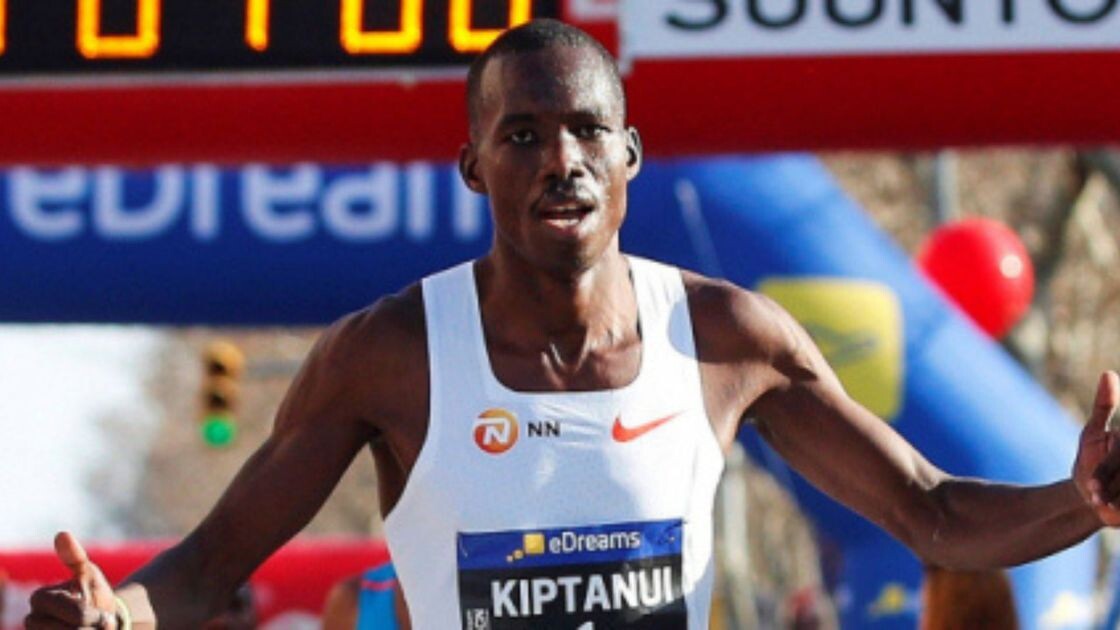
“We are looking forward to another high-class race that will certainly hold one or two surprises. After having the fastest race in the event's history last year in terms of the two winning times added together, we are excited to see what will be possible on October 27,” said race director Jo Schindler.
During last year’s race, Brimin Kipkorir sealed the title in 2:04:53 ahead of Ethiopian duo of Mulugeta Asefa (2:06:47) and Guye Idemo (2:07:44).
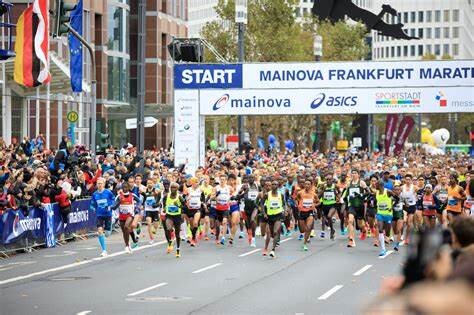
In the women’s elite race, Ethiopia’s Buzunesh Getachew (2:19:27) beat Winfred Moseti (2:20:55) and Sharon Chelimo (2:22:07) to the title.
Kiptanui enters the race with an impressive resume, including half marathon victories in Berlin (58:42) and Lisbon (1:00:05) in 2018, and Barcelona in 2019 (1:01:04).
In the marathon, he boasts a title from the Xiamen and Tuscany Marathon in 2021 (2:05:47-PB). He also secured runner-up finishes in Dubai 2020 (2:06:17) and Chicago 2021 (2:06:17).
His other accolades include a victory at the 2017 Madrid 10k Road race (27:34).
His main rival will be Ethiopia’s Herpasa Negasa, who finished second at the 2022 Seoul Marathon.
Negasa holds a personal best of 2:03:40 set during the 2019 Dubai Marathon where he placed second behind compatriot Getaneh Molla (2:03:34).
The Ethiopian’s accolades include runner-up finishes at the Hengshui 2018 Marathon (2:09:14), Lyon 2015 (2:10:17) and a second runner-up finish at the 2018 Warszawa Marathon (2:11:46).
In the women’s race, Masai will face a stern challenge from 2022 Berlin Marathon third-place finisher Tigist Abayechew.
Masai brings a rich trophy cabinet that includes bronze from the Beijing 2008 Games in the 10,000m (30:26.50) and a world title in the same event from the 2009 Berlin World Championships (30:51:24).
The 34-year-old is also a gold medalist from the 2007 World Cross Country Championships and a three-time silver medalist from Amman 2009, Bydgoszcz 2010 and Punta Umbria 2011.
In the full marathon, Masai holds a lifetime best of 2:23:46 from the 2018 Amsterdam Marathon where she finished fifth.
Abayechew holds a best of 2:18:03 she set during the Berlin Marathon, where she placed third behind Rosemary Wanjiru (2:18:00) and Tigst Assefa (2:15:37).
by Teddy Mulei
Login to leave a comment
Mainova Frankfurt Marathon
Frankfurt is an unexpectedly traditional and charming city, with half-timbered buildings huddled in its quaint medieval Altstadt (old city), cosy apple wine taverns serving hearty regional food, village-like neighbourhoods filled with outdoor cafes, boutiques and street art, and beautiful parks, gardens and riverside paths. The city's cache of museums is second in Germany only to Berlin’s, and its nightlife...
more...Eisa runs championship record to retain world U20 5000m title in Lima
On a cool, crisp evening in the Peruvian capital on Tuesday (27), Ethiopia’s Medina Eisa turned up the heat on her rivals to successfully defend her 5000m title, the highlight of the first day of action at the World Athletics U20 Championships Lima 24.
Eisa’s winning time of 14:39.71 carved more than 28 seconds off the championship record set by Genzebe Dibaba, which had stood since 2010, and brought her home well clear of her compatriot Mekedes Alemeshete. The two broke away from the field from the outset and alternated pace-setting duties, passing 2000m in 5:58.59 with a 40-meter lead.
By 3000m, reached in 8:57.28, they’d built a 70-meter lead and from there it only extended, with Eisa breaking clear of her compatriot with three and a half laps to run and lapping most of the field to hand women’s 5000m gold to Ethiopia for the eighth time in the last nine editions.
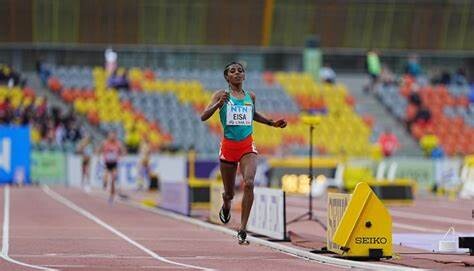
“I'm very happy with this win and to achieve a championship record after the Olympics,” said Eisa, who finished seventh in the 5000m in Paris. “I wanted to be a champion, I have wanted this for months.”
Alemeshete followed her home in 14:57.44, with Uganda’s Charity Cherop getting bronze in a PB of 15:25.02.

The men’s 5000m proved a very different race, with some early moves proving inconsequential and the final boiling down to a sprint finish, with seven clustered together at the bell. As the contenders hit full speed on the final turn it was Kenya’s Andrew Kiptoo Alamisi who soon took flight like a bird, soaring to victory in 13:41.14 ahead of Ethiopia’s Abdisa Fayisa (13:41.56) and Uganda’s Keneth Kiprop (13:41.73).
Australia reigned supreme in the mixed 4x400m final, their quartet of Jordan Gilbert, Bella Pasquali, Jack Deguara and Sophia Gregorevic controlling the race and hitting the line comfortably in front in an Oceanian record of 3:19.27. Poland claimed silver in 3:20.44 with China coming through strongly for bronze in 3:21.27 courtesy of a big final leg from Liu Yinglan.
In the men’s shot put, it was no surprise to see gold go to the Netherlands for the first time in 24 years, but it wasn’t the thrower many were expecting, with Dutch U20 record-holder Yannick Rolvink – who topped the entry lists by more than a metre – finishing fifth with 19.88m.
It was his teammate, Jarno van Daalen, who shone brightest, the 18-year-old adding 36cm to his lifetime best with his opening round effort of 20.76m. That was a mark no one else could match in the subsequent rounds, though South Africa’s JL van Rensburg came close, launching a PB of 20.74m in the final round for silver. Germany’s Georg Harpf took bronze with 20.28m.
With four events completed in the heptathlon, Croatia’s Jana Koscak tops the standings with 3536 points, the 2022 European U18 champion adding to her 13.80 hurdles performance and 1.81m high jump earlier in the day with a 12.01m shot put and 25.12 200m in the afternoon session.
Second overnight is Switzerland’s Lucia Acklin, who rocketed up the standings during the latter part of the day after throwing 13.42m in the shot put and clocking a PB of 24.42 in the 200m. That leaves her on 3472 points. Australia’s Mia Scerri sits third with 3385, closely followed by Czechia’s Adela Tkacova who is fourth with 3351, aided by her season’s best of 24.14 in the 200m.
"It's been a long day, but I'm happy," said Koscak. "I ran a solid 200m, a good high jump, but the hurdles and shot put could have been a little better. It's been a long process because I've been travelling a lot, with climate changes, times zones. This is the World Championships so I'm not going to complain."
In the women’s 100m semifinals, Jamaica’s Alana Reid was highly impressive when winning in 11.44 (-0.3m/s), easing off the gas far from the line to beat Nigeria’s Justina Tiana Eyakpobeyan (11.56) and Aleksandra Stoilova of Australia (11.58), who also advanced. Kishawna Niles of Barbados and Britain’s Nia Wedderburn-Goodison were the quickest qualifiers, both clocking 11.39 in the first semifinal ahead of South Africa’s Viwe Jingqi (11.49). Germany’s Chelsea Kadiri won the third semifinal in 11.52 ahead of Adaejah Hodge of the British Virgin Islands (11.59).
Thailand’s Puripol Bonsoon, who finished fourth in this event two years ago, was the quickest qualifier for the men’s 100m final, clocking 10.30 (-0.6m/s) in the semifinals to edge South Africa’s Bradley Nkoana by one thousandth of a second. Jamaica’s Gary Card qualified in third with 10.39.
Deandre Daley of Jamaica powered to victory in the first semifinal in 10.34 (-0.9m/s) with Japan’s Naoki Nishioka taking the second automatic spot in 10.43. South Africa’s Bayanda Walaza recovered from an early stumble to win the third semifinal in 10.33 (-0.2m/s) ahead of Britain’s Teddy Wilson (10.35) and China’s He Jinxian (10.36), who also advanced.
China’s Wang Xiaobo led the way in men’s javelin qualification, launching 73.83m with Slovenia’s Tom Tersek next best with 73.37m ahead of Germany’s Oskar Janicke (73.02m). Ukraine’s Illia Saievskyi was the only other thrower to surpass the 72.50m automatic qualification mark.
In women's pole vault qualification, the automatic qualifying mark of 4.25m wasn't necessary and four athletes cleared 4.10m with faultless performances. One vault was all it took for USA's Molly Haywood to make the final as she entered at 4.10m and cleared that first time. She'll be joined by athletes including Estonia's Miia Tillmann, Australia's Tryphena Hewett and Austria's Magdalena Rauter.
The women’s 3000m steeplechase heats saw a dominant performance from race favourite Sembo Almayew who coasted to victory in 9:30.59 ahead of Kenya’s Diana Chepkemoi and Uganda’s Nancy Chepkwurui (9:49.06). Ethiopia’s Firehiwot Gesese eased to victory in the other heat in 10:00.96 ahead of Uganda’s Loice Chekwemoi (10:01.85) and Kenya’s Sharon Chepkemoi (10:07.59).
by Cathal Dennehy for World Athletics
Login to leave a comment
In His First 100-Miler, David Roche Demolishes the Legendary Leadville 100 Course Record
Matt Carpenter’s record stood for 19 years.
In his first 100-mile race of his career, trail runner and coach David Roche took down a legendary record in the sport. On Saturday, the 36-year-old broke Matt Carpenter’s storied Leadville 100 course record from 2005, winning in 15:26:34—over a 16-minute improvement of the record.
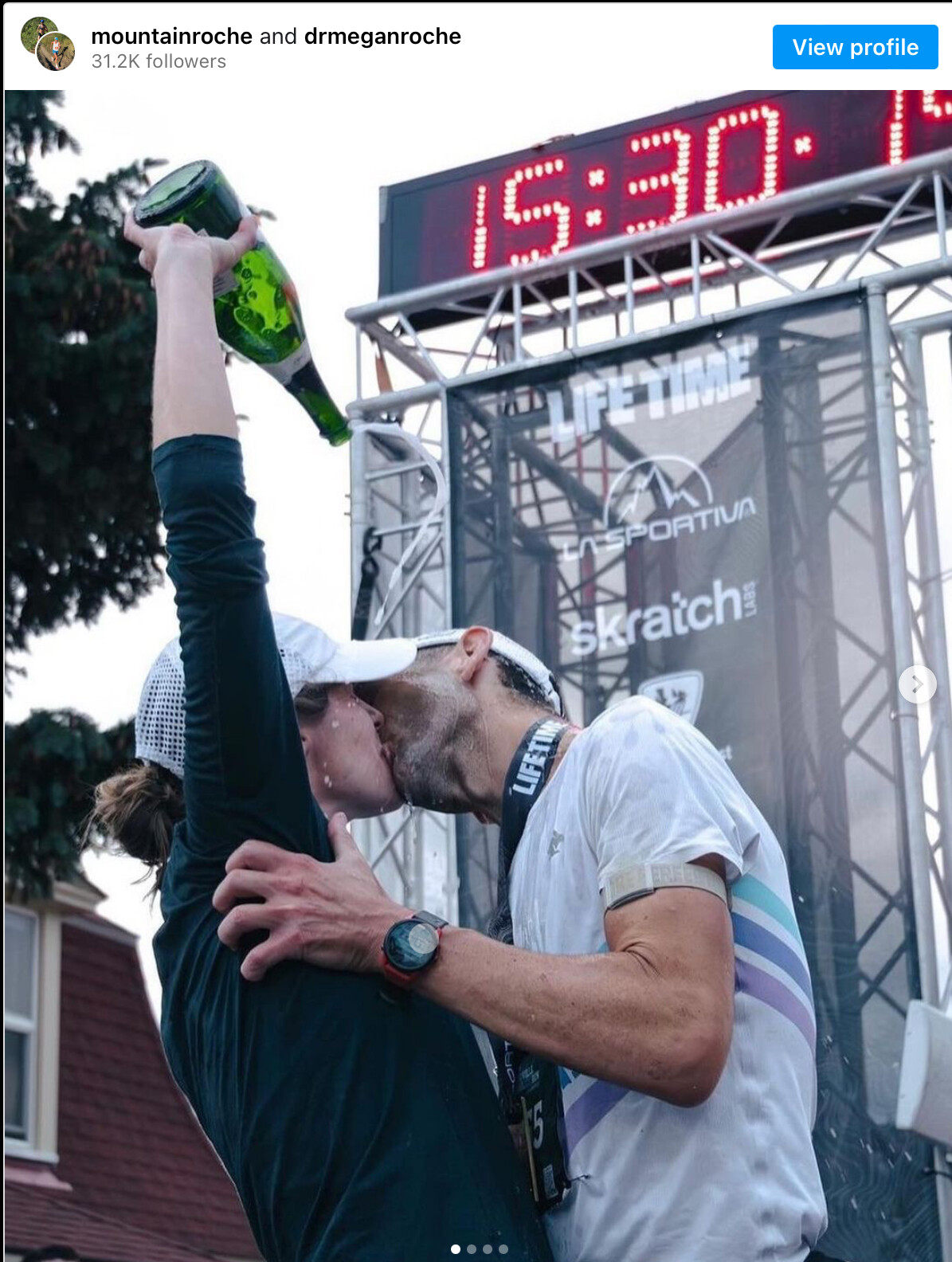
Roche won the men’s race by 30 minutes, on the dot. Adrian Macdonald was second in 15:56:34, and Ryan Montgomery placed third with a time of 16:09:40. In the women’s race Mary Denholm dominated, winning in 18:23:51. Zoë Rom took runner-up honors (21:27:41) while Julie Wright rounded out the podium in 21:48:57.
The Leadville course is notoriously difficult, primarily due to its situation at high altitude. The town of Leadville, Colorado—where the race starts and ends—sits at 10,119 feet above sea level. The “Race Across the Sky” covers more than 18,000 feet of vertical gain and at its highest point, runners reach an elevation of 12,600 feet. (For context, “high altitude” is generally considered to begin around 5,000 feet above sea level.)
Roche went out aggressively and built a sizable cushion on Carpenter’s record of 15:42:59. At the halfway mark, Roche was ahead of course-record pace by over 25 minutes, according to iRunFar. By the 87.4 mile split, the gap had decreased to 15 minutes, but it was enough of a buffer for Roche to maintain.
After the race, Roche posted on Instagram recapping the feat and noting some prerace nerves.
“I put a big scary goal out there early this year: chasing the historic 15:42 Leadville 100 course record by one of the GOATs, Matt Carpenter,” he wrote. “Approaching my first 100 miler, though, I’m not sure I truly believed. I kept joking about where I’d drop out and what my order would be at the Leadville Taco Bell.”
While Roche is an accomplished trail runner, he’s historically had the most success at shorter distances, like the half marathon and 50K. In 2014, he was named the 2014 USATF Sub-Ultra Trail Runner of the Year, and he’s represented Team USA internationally.
Roche, along with his wife, Megan, are well-known in the running community for their coaching business and podcast: Some Work, All Play (SWAP). According to its website, SWAP’s professional roster includes athletes like mountain running world champion Grayson Murphy, three-time Barkley Marathons finisher John Kelly, and steeplechaser/mountain runner Allie Ostrander.
Login to leave a comment
WAGANESH MEKASHA RETURNS TO TCS TORONTO WATERFRONT MARATHON
Ethiopian marathon star Waganesh Mekasha has unfinished business at the TCS Toronto Waterfront Marathon and returns with the intent of achieving victory in this World Athletics Elite Label Race, October 20th.
A year ago she went toe to toe with her compatriot Buze Diriba finishing one second behind Buze’s winning time of 2:23:11. Second place on that occasion was bittersweet.
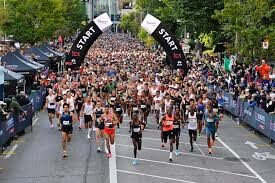
“Yes it is frustrating to lose by a second,” she admits. “I prepared well and wanted to take the course record. Unfortunately it did not happen. I thought if we had a strong pacemaker I would win that race because at 35km I was so comfortable.
“I had to go all out and sprint to make the podium. If the girls helped me I wanted to push from 35 km after the pacer dropped out.”
Waganesh has known Buze since they were both members of the Ethiopian junior team competing at the 2011 World Cross Country Championships in Punta Umbria, Spain. On that occasion Waganesh finished 4th overall to help her country win the gold medal while Buze was 10th.
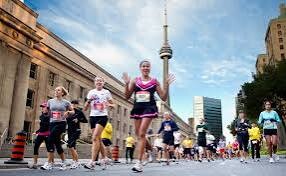
“We are not friends and we do not train together; but we see each other in different training locations,” Waganeshsays of their relationship.
Aside from missing out on the $20,000 first place prize money - she collected $10,000 for second - Waganesh’srecollections of her initial visit to Toronto are all positive.
"Toronto is such a beautiful city,” she declares. “The crowds are amazing and we had a beautiful racing experience.
“The race was fantastic but the pacers did not do as we needed. After 35k I wanted to push but the (other two) ladies did not help. That’s why we three had to finish in a sprint.”
The third-place finisher on the day was another Ethiopian, Afera Godfay, who finished in 2:23:15. The four seconds separating the top 3 was an anomaly in marathon racing and made for a dramatic finish although, clearly, Waganesh has another perspective.
Waganesh was able to explore downtown Toronto on her first visit albeit while keeping close to her hotel so as not to expend unnecessary energy. A shopping excursion to a nearby mall was one outing she prioritized - to buy clothes for her children.
“I did go shopping to buy clothes for my children. And I did see my friends (Canadian residents),” she confirms.
Like most Ethiopian runners she runs to help support her family which is comprised of her two young children, Benjamin, 7, and Amen, 4 and her husband, Anwar Arega.
“I want to give them a better opportunity,” Waganeshexplains. “But I do not encourage them to be a runner. I want them to do what they enjoy.
“My husband is always on my side. He drives me to training, cooks me food and, if necessary, he acts as my physio. Generally he is always there to help me push beyond my limit.”
Along with her training partners and, under the guidance of legendary Ethiopian coach Getamesay Molla, she has already begun her buildup for Toronto Waterfront. Her personal best marathon remains the 2:22:45 she ran at the 2019 Dubai Marathon. Could this be the year she surpasses it?
Experience counts immensely in marathon racing and at the age of 32 she has plenty. On her first visit to Canada she was the 2023 Ottawa Marathon champion. More recently, on February 25th of this year, she won the Osaka Marathon in 2:24:20.
Like many athletes who have raced Toronto Waterfront she continues to eye the course record of 2:22:16 set by Kenya’s Magdalyne Masai in 2019.
“I know the course now and want to come back stronger,” she declares. “If things go as I wish and, if we have a strong pacemaker, I will do my best to break the course record and run fast and win the race. I do believe i will run faster than that (record).”
Asked about her running future she is clear: “Age is a number, I do believe I will have another ten years ahead.”
by Paul Gains
Login to leave a comment
TCS Toronto Waterfront Marathon
The Scotiabank Toronto Waterfront Marathon, Half-Marathon & 5k Run / Walk is organized by Canada Running Series Inc., organizers of the Canada Running Series, "A selection of Canada's best runs!" Canada Running Series annually organizes eight events in Montreal, Toronto and Vancouver that vary in distance from the 5k to the marathon. The Scotiabank Toronto Waterfront Marathon and Half-Marathon are...
more...Winfred Yavi's Bahrain heavily sanctioned by World Athletics following multiple accounts of doping scandals
Bahrain have been heavily sanctioned by World Athletics over doping scandals which will heavily impact their athletes, including Kenyan-born Olympic champion Winfred Yavi.
The World Athletics Council has approved a series of corrective actions against the Bahrain Athletics Association (BAA) following historical breaches of the World Athletics Anti-Doping Rules (ADR).
This decision comes after an 18-month investigation by the Athletics Integrity Unit (AIU), which uncovered serious violations linked to doping practices within the BAA.
The investigation was triggered by doping infractions involving two Bahraini athletes at the Tokyo 2020 Olympic Games, where both were found guilty of homologous blood transfusions.
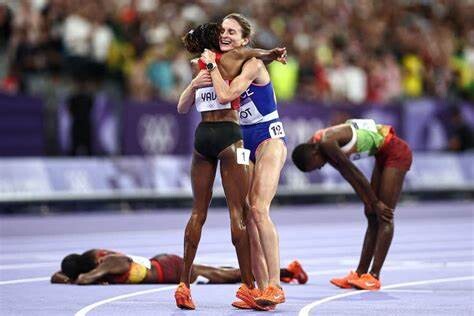
Additionally, it was discovered that the BAA had employed a coach between 2019 and 2021 who was banned from the sport for prior anti-doping violations.
Acting negligently and recklessly in relation to doping, thereby damaging the reputation of World Athletics and the sport as a whole.
Failing to conduct proper due diligence when hiring athlete support personnel, which increased the risk of doping within the national team.
In response, the BAA admitted to the charges and has cooperated with the AIU throughout the process. As a result, the following sanctions and corrective measures have been imposed:
1.Restricted Participation: The BAA's involvement in the Paris 2024 Olympic Games and the World Athletics Championships in Tokyo 2025 will be limited to a maximum of 10 athletes, a move that could impact stars like Winfred Yavi and others.
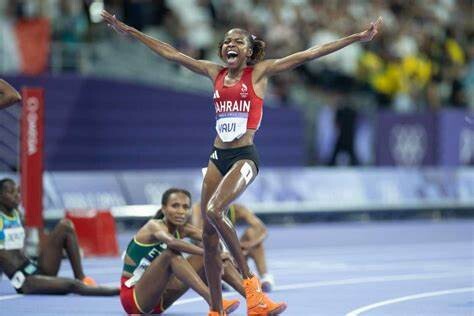
2.12-Month Ban: The BAA will be barred from participating in any other World Athletics Series events for a period of 12 months starting from June 1, 2024.
3.Transfer Freeze: The BAA will not be allowed to apply for transfers of allegiance or recruit any foreign athletes until 2027, marking a significant shift in the association’s recruitment strategy. Yavi is one of many athletes who were recruited from other countries.
4. $7.3 Million Investment: The BAA is required to invest up to $7.3 million over the next four years in measures aimed at addressing doping and integrity issues. This includes the implementation of a detailed strategic plan and operational roadmap (SPOR), developed in coordination with the AIU, to overhaul the federation’s governance and management practices.
5. Establishment of a National Anti-Doping Organization (NADO): Bahrain will establish a WADA-compliant NADO, fully funded by the government until at least 2026. This organization has already been operational for a year, marking a significant step forward in managing doping risks.
6. Talent Development Academy: The BAA will create and fund a talent academy focused on nurturing local athletes, signaling a shift towards developing homegrown talent rather than relying heavily on foreign recruits.
7. AIU Costs: The BAA will cover the AIU’s costs associated with the investigation and the supervision of the SPOR implementation.
David Howman, Chair of the Athletics Integrity Unit, praised the BAA’s leadership for their cooperation and proactive steps in addressing the federation’s failings.
“The BAA, to its great credit, has displayed genuine contrition about its past wrongdoings and commitment to change,” Howman said. He highlighted the establishment of a new NADO in Bahrain as a particularly significant achievement for clean sport.
Despite the BAA's past shortcomings, the AIU acknowledged that the federation's senior leadership was not involved in deliberate rule breaches and expressed satisfaction with the outcome, which aims to balance punitive measures with the goal of fostering real change within Bahrain's athletics landscape.
As Bahrain's athletes, including World Champion steeplechaser Winfred Yavi, prepare for the upcoming international competitions, the repercussions of these sanctions will undoubtedly have a lasting impact on the nation’s athletic programs.
by Mark Kinyanjui
Login to leave a comment
Jackson wins gold at World Masters Athletics championships
Charles Jackson’s first time overseas was a golden trip.
He flew to Gothenburg, Sweden last week and will return Tuesday as a world champion. He won the gold in the 100-meter dash at the World Masters Athletics Stadia Championship, running in the 35-39 age group.
“I feel honored and humbled,” Jackson said. “Honored because of the experience around other people from all over the world with the same passion and goal. Humbling to know the work that it gook to get here. I was not seeded as the top runner, so taking gold was amazing.
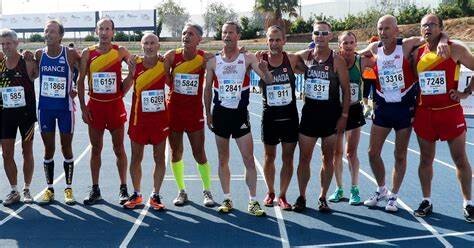
“(I enjoyed) seeing the 8,000 athletes from all over the world with the same passion that I had and seeing all the athletes from different countries coming together in peace and unity.”
His world title was a photo finish. He had a strong start in the finals Thursday but the rest of the field started to catch up in the final meters. When he crossed the finish line in 10.91 seconds, he still wasn’t sure if he had won.

He thought France’s Florent Ribet had beat him to the coveted medal, but Jackson won by a hundredth of a second. “The start is my specialty,” Jackson said. “I have been to six regular national championships in the 60-meter dash, so I’m very explosive out of the blocks.
“My plan was to react to the gun and drive out as I usually do. My form began to break down at the end and that’s when the other guy began to come. But I held on for dear life. The times are not special at all, but the eight-hour time difference, the injury setback and the rounds take a toll. That’s why I was just so ecstatic that I persevered through adversity. The other guys were telling me that I won it, but I didn’t believe it until I saw it.”
Back in January, the Molo Middle School physical education teacher tore the meniscus and suffered a bone bruise in his right knee.
“It was believed that I would not be able to recover from it fully and especially for Worlds,” Jackson said. “January, February and March I was limping and in pain.
“With much prayer and dry needling, I recovered enough to train at the end of April, so in June I ran two track meets and just prepared for Worlds.” He conserved energy in the first preliminary round to win his heat at 11.33 seconds and fifth overall. In the semifinals, he dropped to 10.96 and was second in his heat behind the top qualifier for the finals, Kenya’s Ibrahim Muyah Makonjo (10.72).
Mankonjo was third in the finals at 10.97. “When running rounds, I adjust according to the field of runners in my heat. So if I’m running and the other guys are behind me, I don’t have to run so hard because I have another round to run. “
He had hopped to medal in the 200 as well but finished fifth in that even at 22.55 on Monday. He also was part of the sixth-place 4×100 relay team (43.90) on Saturday. Jackson, a five-time champion in the 100 (3) and 200 (2) at the USA Track and Field Masters Outdoor Championships, doesn’t plan to attend the next WMA outdoor championship in South Korea in 2026 but will go to the WMA indoor championship in Gainesville, Florida, in March of 2025 to compete in the event he considers his specialty, the 60-meter dash.
by Rodrick Anderson
Login to leave a comment
2024 World Masters Athletics Championships
The Gothenburg Athletics Federation extends a warm welcome to athletes and sports enthusiasts worldwide for the 25th World Masters Athletics Championships! Brace yourselves for the ultimate masters championship experience filled with unparalleled fun, excitement and rewards. Mark your calendars for the upcoming world championship scheduled to 13-25 August. Get ready to make Gothenburg your home and seize the opportunity to...
more...Leadville 100 sees long-standing course record fall
This year's edition of "the race across the sky" saw history-making performances on both the men's and women's sides
Leadville 100, known as the “race across the sky” for its stunning vistas as it traverses the Colorado Rockies, has been a staple in the ultrarunning community since its inception in 1983. This year’s event saw blistering performances in both the men’s and women’s races, with popular coach and author David Roche taking 16 minutes off the long-standing course record, and women’s race winner Mary Denholm recording the second-fastest time ever at the event.
The 100-mile race has runners climbing nearly 4,800 metres of elevation gain over rugged mountain trails, and runners begin and end in Leadville, Colo.
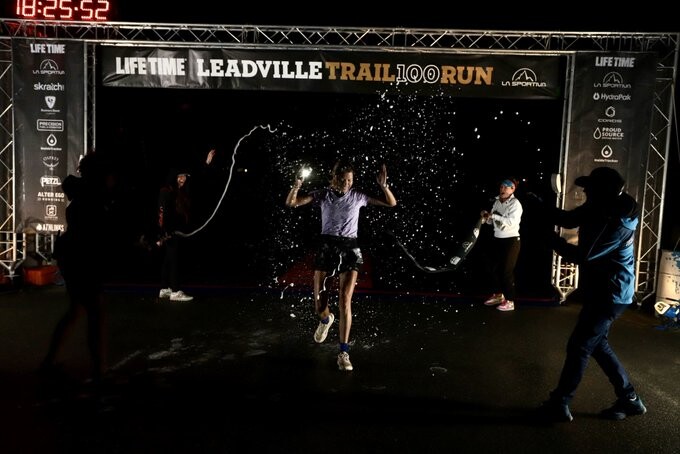
Women’s race
Denholm took off hot and dominated the competition from start to finish. By the halfway point, she had built an insurmountable 50-minute lead. She crossed the finish line in 18:23:51, securing the second-fastest time ever recorded for the women’s race, just short of legendary Ann Trason’s mark of 18:06:24, set in 1994. Denholm was followed by fellow American runners Zoe Rom in 21:27:41, and Julie Wright in 21:48:57.
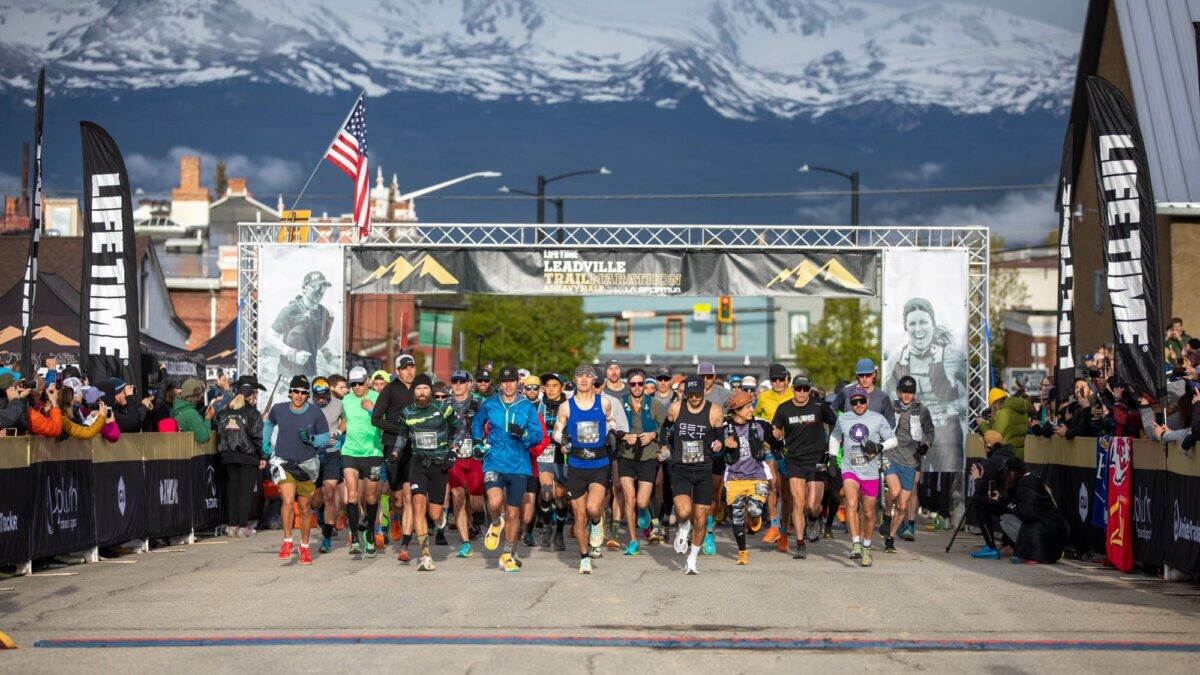
Alberta’s Ailsa MacDonald and Molly Hurford of Ontario were initially in contention for podium positions, but both faced challenges that saw them taking DNFs. Hurford left the race after suffering a badly sprained ankle, and MacDonald after dealing with unrelenting gut issues.
Men’s race
Like Denholm, Roche set a fast pace from the start and built on his lead throughout the race. His time of 15:26:34 took more than 16 minutes off the previous course record, set by Matt Carpenter in 2005. He was followed in by U.S. ultrarunners Adrian Macdonald in 15:56:34, and Ryan Montgomery in 16:09:40.
Pete Kostelnick, a well-known ultrarunner famous for completing the fastest transcon run of the U.S. in 2016 (42 days, six hours and 30 minutes), made a remarkable return to running earlier this year after recovering from a severe car accident that resulted in multiple pelvic fractures. In May, Kostelnick finished the Cocodona 250, followed by Badwater 135 only a few weeks ago; he finished Leadville 100 in 24:30:18.
Calgary’s Reiner Pauwwe took the 28th overall position (24th man) in 22:16:59.
by Keeley Milne
Login to leave a comment
Leadville Trail 100 Run
The legendary “Race Across The Sky” 100-mile run is where it all started back in 1983. This is it. The race where legends are created and limits are tested. One hundred miles of extreme Colorado Rockies terrain — from elevations of 9,200 to 12,600 feet. You will give the mountain respect, and earn respect from all. ...
more...Why Eliud Kipchoge will still be at the Los Angeles Olympics in 2028 following dissapointment in Paris
Kipchoge has confirmed he will be involved in the 2028 Los Angeles Olympics following his unprecedented setback in Paris last Saturday that forced him to withdraw.
Eliud Kipchoge, Kenya's legendary marathon runner and two-time Olympic gold medalist, has set his sights on a new chapter after returning home from the Paris 2024 Olympics.
While the world had high expectations for another podium finish, Kipchoge’s focus has now shifted from competition to inspiring the next generation of athletes and the wider public.
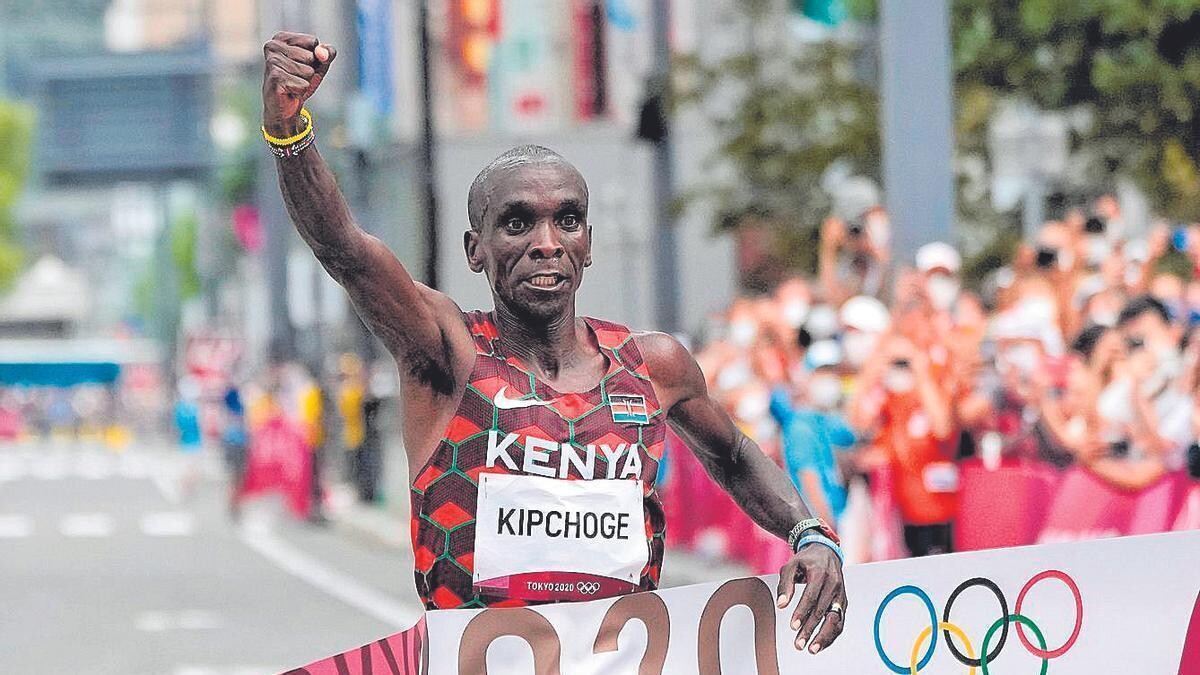
Widely celebrated for his resilience and unparalleled achievements in long-distance running, Kipchoge spoke candidly about his future during a recent interview.
Despite the challenges and the outcome in Paris, Kipchoge emphasized his excitement for the future, particularly with an eye on the Los Angeles 2028 Olympics.
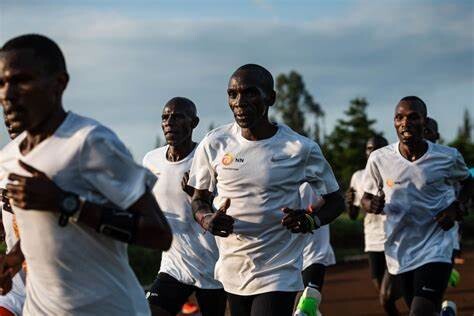
"As an athlete, I will be at the Olympics in another capacity to inspire hope and optimism not just in my country and continent, but across the entire world," Kipchoge stated, as quoted on Citizen Digital.
While he has confirmed that he will not be competing, Kipchoge’s presence at the 2028 Olympics will be one of inspiration rather than competition.
“The future of the marathon in Kenya is bright; it is only a matter of molding the next generation and guiding them on what is needed to excel,” Kipchoge stated on Olympics. Com. His reflections underscore his belief in Kenya’s potential to continue producing world-class marathon runners.
“I will not go into coaching. I have many other things to do. I will travel around the country motivating people,” he revealed, signaling a shift from his active role in competitive sports to one centered on inspiration and mentorship.
Kipchoge's return from Paris marked a moment of introspection for the marathon icon. Having dominated the sport for years, he has now decided to step away from global running competitions.
Kipchoge's legacy as a marathon legend is undeniable. Over his career, he has participated in approximately 20 world marathons, securing 15 victories. His 2019 world record of 1:59:40 in Vienna remains unchallenged, a testament to his extraordinary talent and dedication.
However, as he steps off the track, Kipchoge is determined to continue making an impact, this time through motivation and mentorship.
by Mark Kinyanjui
Login to leave a comment
LA 2028 Summer Olympics Games
Discover how the Los Angeles Candidature Committee describes their vision for the Games and the legacy they plan to leave behind: For centuries, people have been following the sun to California – to a coastal paradise of beautiful weather, inspiring landscapes and an ocean of possibilities. Since it was first settled, LA – the City of Angels – has built...
more...Team USA destroys mixed 4×400 world record in heats
On the opening day of track and field at the Paris Olympics, the U.S. has already set the stage for the incredible performances to be expected over the next week. Team USA’s mixed 4x400m relay knocked down the first world record of the competition on Aug. 2–in heats. The squad demolished their own previous world by more than a second–clocking 3:07.41.
Vernon Norwood, Shamier Little, Bryce Deadmon and Kaylyn Brown were tasked with securing a top three finish in their heat in the relay. They went above and beyond to take down the country’s previous world record in the event, 3:08.80, set at the 2023 World Championships in Budapest.
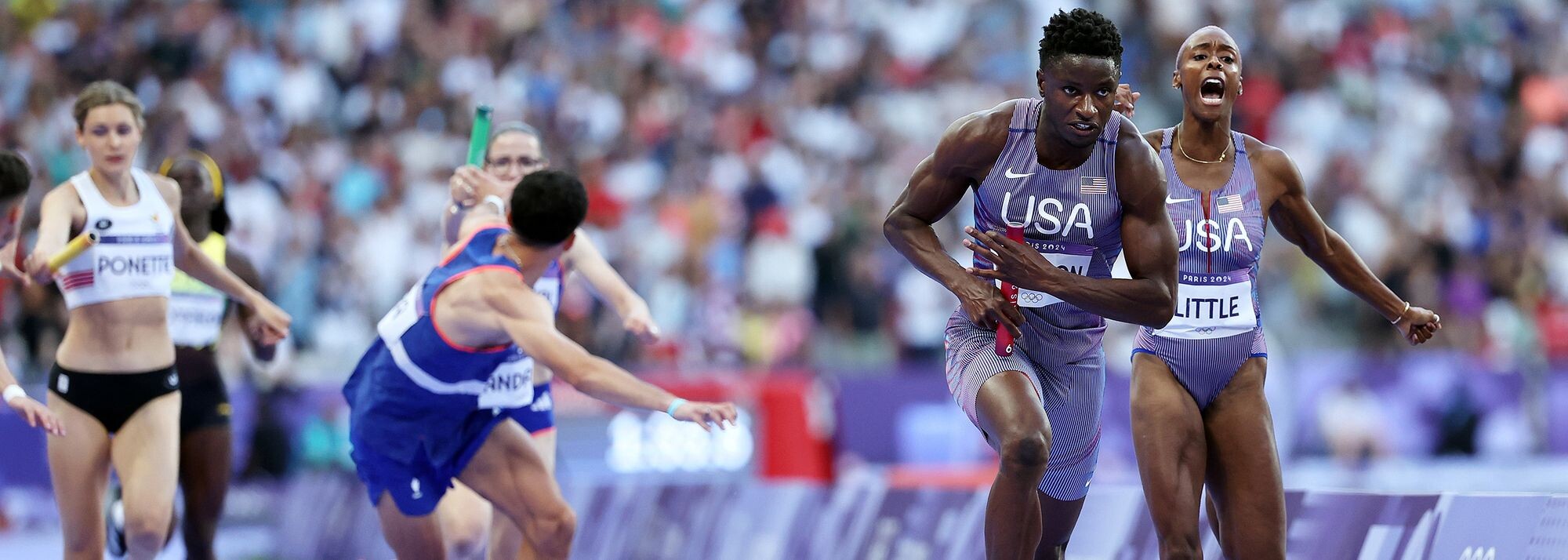
Team USA won the entire round by more than three seconds, with France as the next-fastest team, finishing in 3:10.60 in front of their home crowd. Four other teams in the heat achieved new national records.
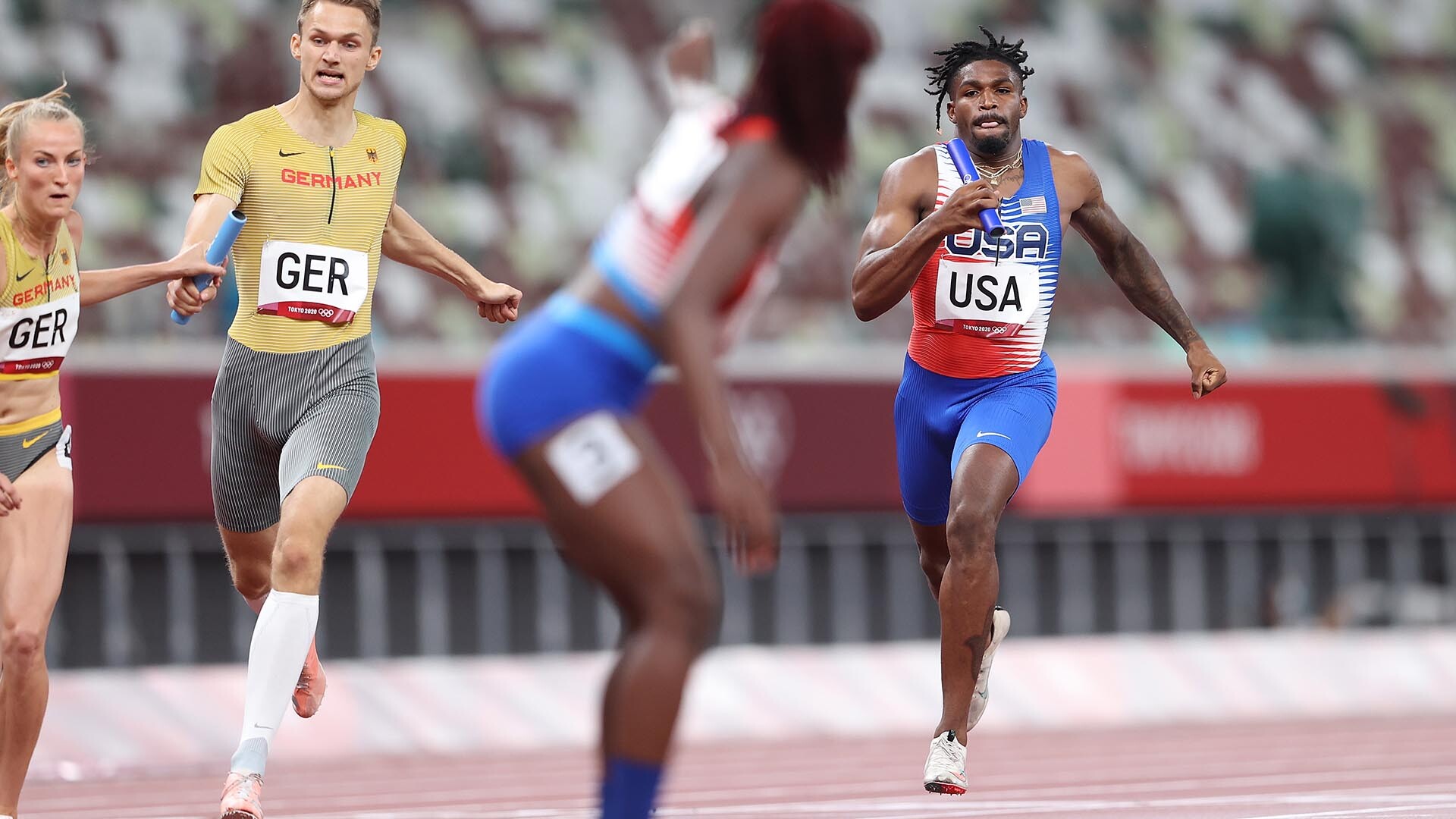
“I’ve gotten quite a few practices in over the last few days and we’ve just gotten better,” Shamier Little told media after running the second leg for the Americans. “We’ve got great chemistry.” Both of the next-fastest qualifying times for the final came from their heat.
The mixed 4x400m relay final will take place on Aug. 3 at 2:55 p.m. ET.
Athletics events at the Paris 2024 Olympic Games are taking place from Aug. 1-11. Today’s coverage is brought to you by Canadian Running and New Balance Canada. Follow us on Twitter on Instagram for all things Team Canada and up-to-date exclusive news and content.
Login to leave a comment
Paris 2024 Olympic Games
For this historic event, the City of Light is thinking big! Visitors will be able to watch events at top sporting venues in Paris and the Paris region, as well as at emblematic monuments in the capital visited by several millions of tourists each year. The promise of exceptional moments to experience in an exceptional setting! A great way to...
more...Olympic Track and Field Stars Are Wearing Luxury Watches. Why?
IN TRACK AND FIELD, tenths (and even hundredths) of a second can make or break a race. Performance depends on extremely precise measurements and time rules all. So it makes sense that luxury watch brands would look to those athletes as natural billboards, placing their timepieces on the wrists of some of the sport's top performers.
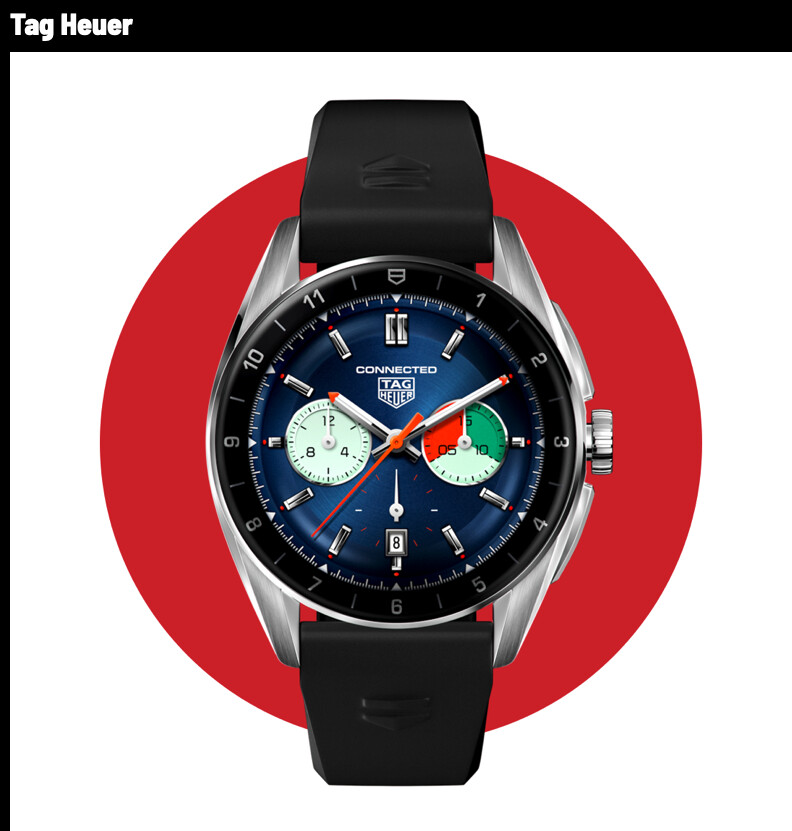
When Noah Lyles, the fastest man in the world, settled into the blocks for the 200-meter finals at the U.S. Olympic Trials in June, 4.5 million viewers tuning in via NBC and Peacock could see the glint of the sun off what appeared to be a $50,000 Omega watch.
Wearing this type of timepiece during a 19.53-second sprint is clearly a flex, since “there’s no performance reason for [these athletes] to wear luxury watches,” explains Aaron Rapf, the founder and CEO of Advantage Sports Marketing Group, a sports agency that connects brands with athletes.
Runners are no stranger to pricy performance watches (a high-end Garmin can cost upwards of $900), and luxury watch companies are increasingly aligned with elite runners to “connect their company values to the sports landscape—which is one of the last bastions of true culture,” he adds. “If you want to be in a moment where you attract millions of people’s eyeballs at one time, it’s sports.”
These race day cameos are part of a more subtle approach to marketing, says Pierre-Loïc Assayag, CEO and co-founder of Traackr, an influencer marketing software company. “In the past, luxury brands were more focused on the product and the luxury associated with that product,” he says. “Now, these companies are taking the top athletes and putting them in front of their target audience, or one close to it, to demonstrate by proximity that ‘we are the precision brand’ or ‘we are the endurance brand.”
The kind of maneuvering uses a third party—one that’s fast, flashy, and accomplishing amazing feats—to craft an image the brand wants audiences to respond to. And by choosing athletes as brand champions, companies deftly align themselves with the hallmarks of high performance: precision, prestige, innovation, exclusivity, heritage, and craftsmanship.
In the past, those buzzwords were more likely to call to mind country club-esque activities (think: tennis or horseback riding) or auto racing, where the traditional consumer has been very upper class, living a high-cost lifestyle. But as culture skews more towards sport, health, and wellness, leaning into the popularity of running opens companies up to a new class of consumers, says Jessica Quillan, a luxury fashion brand and content strategist. “Track and field seems more accessible, because even though these athletes are performing at a super elevated level, anyone can go out and run,” she explains.
By association, watches become a more accessible form of wearable luxury. You may not wear one to train or on race day like the elite, sponsored atheltes, but a sporty aesthetic can translate into your everyday life; post-run, you can still swap your COROS smartwatch for a sleek, sporty timepiece from a brand like Omega (which happens to sponsor the Diamond League, an annual series of pro track and field competitions). And though you may not be ready to buy a five-figure watch now, these companies are playing the long game; by connecting themselves with major players in sport, they’re hoping to build brand recognition and loyalty among potential future customers.
The Watch Brands Olympic Runners Are Wearing
For those looking to upgrade their Garmin—now or as a future reward for finally achieving that personal best—these are a few of the luxury watches your favorite track and field stars have been sporting.
Two-time Olympic gold medalist Sydney McLaughlin-Levrone, who will represent Team USA in Paris again after breaking her own World Record in the 400-meter hurdles in June, has been sponsored by Tag Heuer since 2021.
Tag Heuer is often considered the Cadillac of luxury watches, and McLaughlin-Levrone’s preferred watch, the Connected Calibre E4, is closest to the average runner’s GPS smartwatch: It operates on Wear OS by Google; has a 1.28-inch AMOLED display with crisp resolution; houses a heart rate sensor, barometer, and compass; and holds a 24-hour charge, including a one-hour sports session. The basic model, which includes a rubber strap, starts at $1,250.
Olympic bronze medalist Josh Kerr is a double World Champion—in the 1,500-meter and 3,000-meter—which made him a natural representative for Swiss watch brand Longines, the official partner and timekeeper of the 2022 Commonwealth Games in Birmingham. Kerr, who is not currently working with Longines, recently ran a 3:45.34 in the Bowerman Mile, a historic and prestigious race held annually at the Prefontaine Classic in Eugene, OR, to set a new world-leading time in the event and a new British record. Back in 2022, Kerr wore the-limited edition HydroConquest XXII Commonwealth Games, a sporty steel dive watch with an automatic caliber, or engine, one-directional ceramic bezel, luminescent indices and hands, and an anti-reflective coating for crystal clear readability in any situation.
In addition to their Paris 2024 partnership, Omega is the official sponsor of the Diamond League (an annual series of elite track and field competitions) and counts Noah Lyles—one of the biggest personalities in track and field—as an ambassador. Lyles, who earned a bronze medal in the 200-meter race at the 2020 Tokyo Games and has his sights on breaking Usain Bolt’s records in the 100- and 200-meter races, wears Omega’s iconic Speedmaster Moonphase.
This style was introduced in the 1980s, but the latest model—an oversized, steel-on-steel timepiece—was the first to earn a Master Chronometer certification thanks to a self-winding engine designed to withstand temperature fluctuations, water immersion, and electromagnetic frequencies. The timepiece can also hold up to the shock that comes with covering 100 meters in less than 10 seconds (when it's on Lyles's wrist, at least).
Sprinter Dina Asher-Smith is the fastest British woman on record, with two Olympic bronze medals from the 4 x 100-meter relay to her name. She’s also no stranger to luxury partnerships, having previously modeled for Louis Vuitton, Valentino, and Off-White, and has been working with Hublot since 2018. Asher-Smith has promoted a variation on Hublot’s flagship model, the Big Bang One Click, which starts at $14,200.
Its smaller face was designed for slimmer wrists, and uses the brand’s patented “One Click” fastening system so wearers can swap out the straps for other colors or materials. The sporty, semi-skeletonized hands balance out flashiness of the diamonds on the bezel, and a self-winding caliber packs plenty of power into the compact timepiece.
Ahead of what she says will be her final Olympic Games, Jamaican sprinter Shelly-Ann Fraser-Pryce—the most decorated athlete in 100-meter history—announced a partnership with Richard Mille. Fraser-Pryce wears the RM 07-04 Automatic Sport, the first women’s sports watch from the McLaren of watch brands, which retails at $185,000 (it’s the same watch Nafi Thiam, a double Olympic champion from Belgium, wore while setting a new pentathlon world record in 2023). The skeletonized aesthetic is housed in a compact case with rigid finishings for shock-resistance, and the button on the side allows the wearer to switch between winding, neutral, and time setting modes for the crown. While it would be nearly impossible to read during a race, at 36 grams it’s lighter than most standard running watches.
by Men’s Health
Login to leave a comment
Bix 7 Notebook: Samuelson, Keflezighi collect more Bix hardware
The four legendary runners who appeared at various Quad-City Times Bix 7 events this week all made it through the grand 50th-anniversary race just fine.
In fact, two of them came away with awards.
Joan Samuelson, who has won four Bix 7 women’s championships and 15 masters titles, was the winner of the women’s 65-69 age group and she did it in record time — 50 minutes, 47 seconds. She now holds the women’s course record in four age groups — 50-54, 55-59, 60-64 and 65-69.
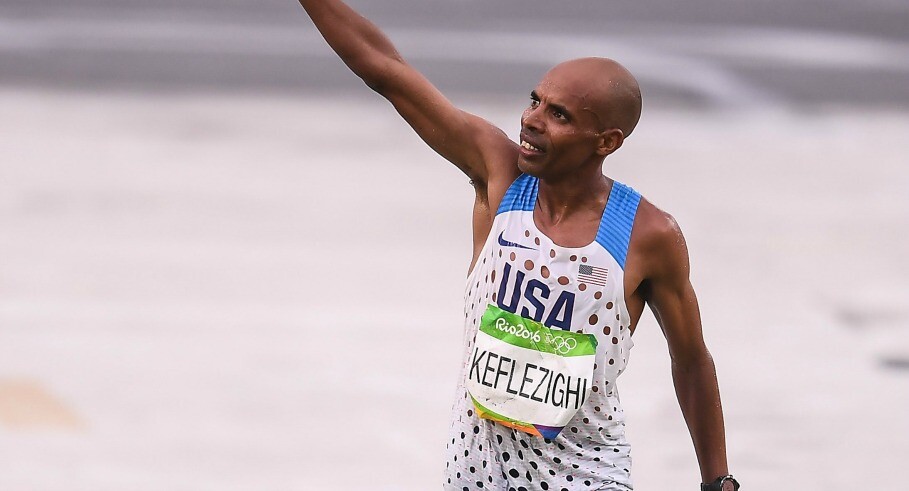
Meanwhile, two-time Bix 7 champion Meb Keflezighi added the men’s 45-49 age group championship to his resume on Saturday.
Keflezighi said he wasn’t really sure he was going to push himself in the race, but with the crowd cheering and urging him on, he couldn’t help himself. He covered the course in 41:37.

At one point, Keflezighi encountered a man who told him he’d had dreams of running the race with him.
“Then he took off, but I caught up with him and said ‘Let’s make your dreams come true,’’’ Keflezighi said.
Bill Rodgers, who won the Bix in 1980 and 1981 and has run it every year since, finished Saturday's run in a time of 1:19:46.
Two-time Olympic medalist Frank Shorter, who like Rodgers is 76, did the two-mile Quick Bix. But he said he still had a great time, marveling at how many times little kids breezed past him along the way.
At one point, a mother with a small daughter who Shorter estimated to be 5 or 6, came up alongside him. The mom told the girl to just go ahead and take off if she wanted. She’d see her at the finish line. The girl turned on the jets and took off.
“You could almost see the vapor trail,’’ Shorter joked.
Age-group records: Samuelson wasn’t the only person to set a course record for their age group.
It also was accomplished by Lucas Hollingshead of Elkhart, Ind., in the men’s 15-under division (37:41) and Richard Kutzner of Clear Lake, Iowa, in the men’s 80-84 (1:04:10).
And for the first time, the Bix 7 had 85-over divisions so the winners there obviously established records. The winners were Dave Zimmer of Long Grove, Iowa, and Norma Mullins of Moline.
Another Hird win: The first runner across the finish line in the Prairie Farms Quick Bix was a familiar face.
Zach Hird, a former Alleman High School runner who now lives in Naperville, Ill., won the Bix 7’s two-mile alternative in a time of 9 minutes, 48 seconds.
Hird won the Gregg Newell Trophy as the top local finisher in the seven-mile race in both 2018 and 2019.
The first female finisher in the Quick Bix on Saturday was Jennifer Douglass of Assumption, Ill.
Unbreakable Glass: Bryan Glass knows his Bix history well. Already a five-time master's champion, Glass put his name in the same breath as one of the Bix legends with a strong race Saturday.
At the age of 50, Glass finished the seven miles in 38 minutes, 21 seconds, becoming just the second runner 50 or older to run the race in under 40 minutes. The first? Bill Rodgers.
Glass was only 11 seconds off the 50+ record set by Rodgers — who ran 38:10 back in 1998.
"It was my goal for the last year, knowing that I could do it, I knew I could. Now, I ran faster than I ever thought I could do today, but I think it was just God giving me the ability to be prepared today, and I went for it."
Glass has a long history of running. He was a state champ at Geneseo and went to Southern Illinois University Edwardsville. He's also a member of the Springfield Road Runners Club Hall of Fame.
This is another accolade Glass has to be proud of.
"It's emotional because you work so hard for so many years," Glass said. "I never thought I'd get to the point where I'd have a chance to put my name up with Bill Rodgers. Now I know he's above anything I would ever beat, but to know that I'm in that same class in some sense in my home area, makes me so proud."
A rare Bix triple: Credit to recent Bettendorf High School graduate Maya Williams for giving it her all during the 50th QCT Bix 7 week. The standout sprinter pulled off a rare double on Thursday, running two races in the Brady Street Sprints — winning the open women's race and anchoring the Bulldogs' relay team to the high school girls' title.
Just for good measure, she figured she would jump into Saturday's 7-miler. Making that decision Friday evening didn't give her much recovery time. She posted a 1:18.21 clocking on Saturday.
RRCA honors: The Bix 7 served as the national championship race for the Road Runners Club of America on Saturday, which meant a little additional hardware for some runners.
In addition to men’s champion Wesley Kiptoo and women’s champion Raechel Chebet, Samuelson was honored as the women’s 60-over champion and Glass as the men’s 50-over champ.
Other honorees were Artur Mueller of Davenport, men 40-over; Jess Hruska of Dubuque, women 40-over; Kate Maurer of Urbandale, Iowa, women 50-over; and Rick Torres of Elizabethtown, Ky., men 60-64.
Weather vane: Saturday's weather for the race was nearly perfect. At race time, it was 68 degrees with a manageable 81% humidity. It was just the 18th time in 50 events that the race started with a temperature under 70 degrees.
Making her mark: Paityn Noe, last year’s Bix 7 high school girls’ top finisher, came back this year and had another solid race.
The University of Arkansas freshman from Huxley, Iowa (Ballard High School), was the seventh women’s finisher, clocking a time of 38 minutes, 34 seconds, just 2:13 behind winner Rachael Chebet.
In May, she finished second in the SEC Championships 10,000-meter run, clocking a 33:57.35. She also finished fifth last fall in the SEC cross country meet, running 19:43.7 for the 6,000-meter race.
Enjoy the day: Maggie Montoya, who was the third female overall finisher in Saturday’s Bix 7, enjoyed her first run through the streets of Davenport with 16,586 other people.
“When you’re surrounded by this mass of people, it brings you back to racing a marathon and being around people,” she said after finishing in 37:13. “It was nice to be back in that atmosphere.
“… There’s something about being surrounded by so many people that really adds to the event. It was fun being back out on the roads again.”
13-minute start: How long does it take for 16,587 to cross the starting line? The group of runners dressed as Elvis Presley, who almost always bring up the rear of the pack, finally got to the starting line when the race was 13 minutes old.
by TJ Johnson
Login to leave a comment
Bix 7 miler
This race attracts the greatest long distance runners in the world competing to win thousands of dollars in prize money. It is said to be the highest purse of any non-marathon race. Tremendous spectator support, entertainment and post party. Come and try to conquer this challenging course along with over 15,000 other participants, as you "Run With The Best." In...
more...

